NATURAL DISASTER
September 4, 2020
How does one make something beautiful in a world that so often feels really ugly?
Typically, a “natural disaster” is described as a major adverse event resulting from natural processes of the Earth (i.e. floods, hurricanes, tornadoes, etc.). Similarly, humans are living, breathing, talking “natural disasters.” In both reside beauty and fear, ruin and new life— held constantly in tension.
The work in this show is composed out of commonplace materials, yet each becomes increasingly strange as bodily forms emerge or are destroyed. You are invited to delight in the familiar textures and forms, to immerse yourself in the strange solidity found in these ephemeral pieces as they melt, or engulf you.
All photos by Heather Harper
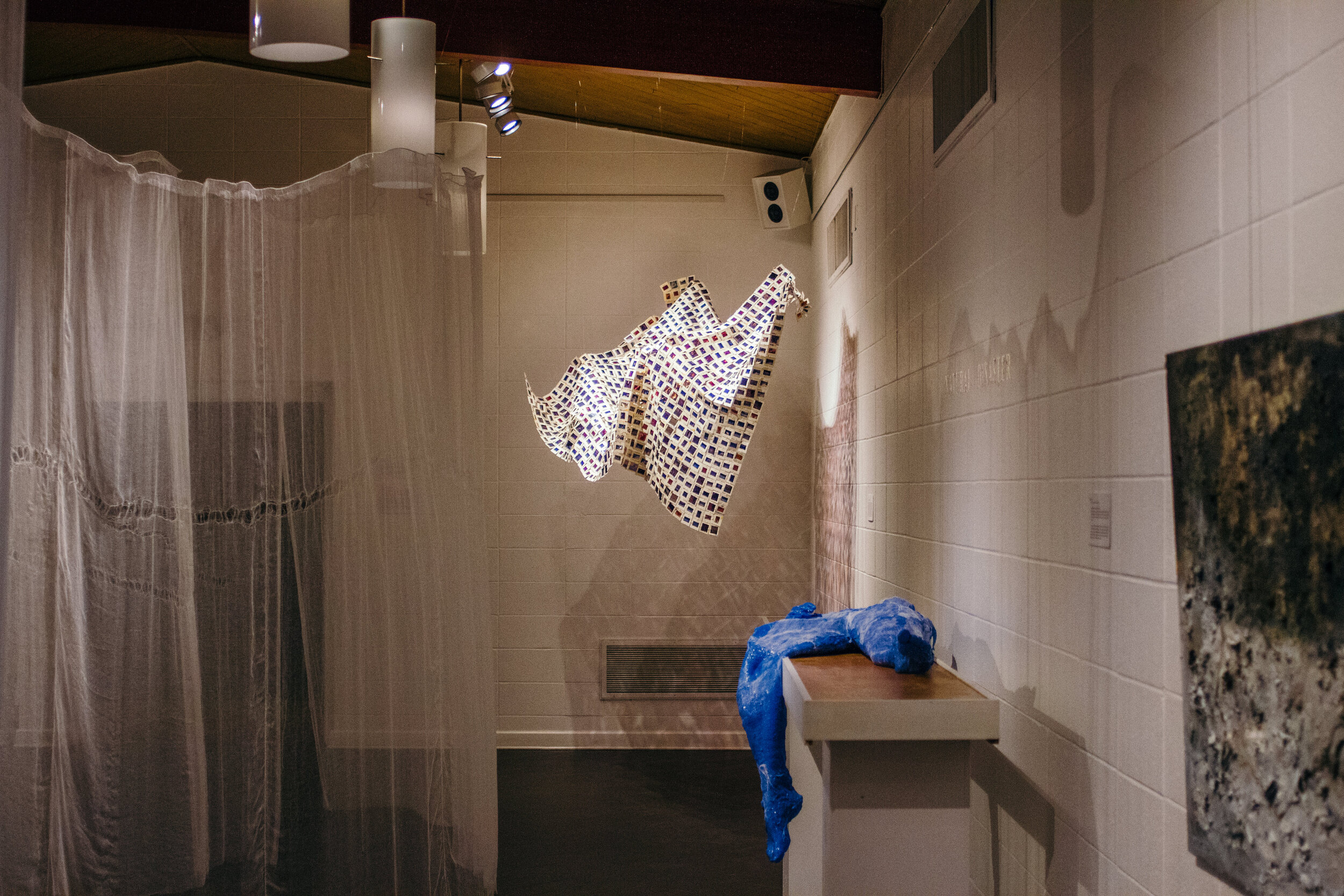
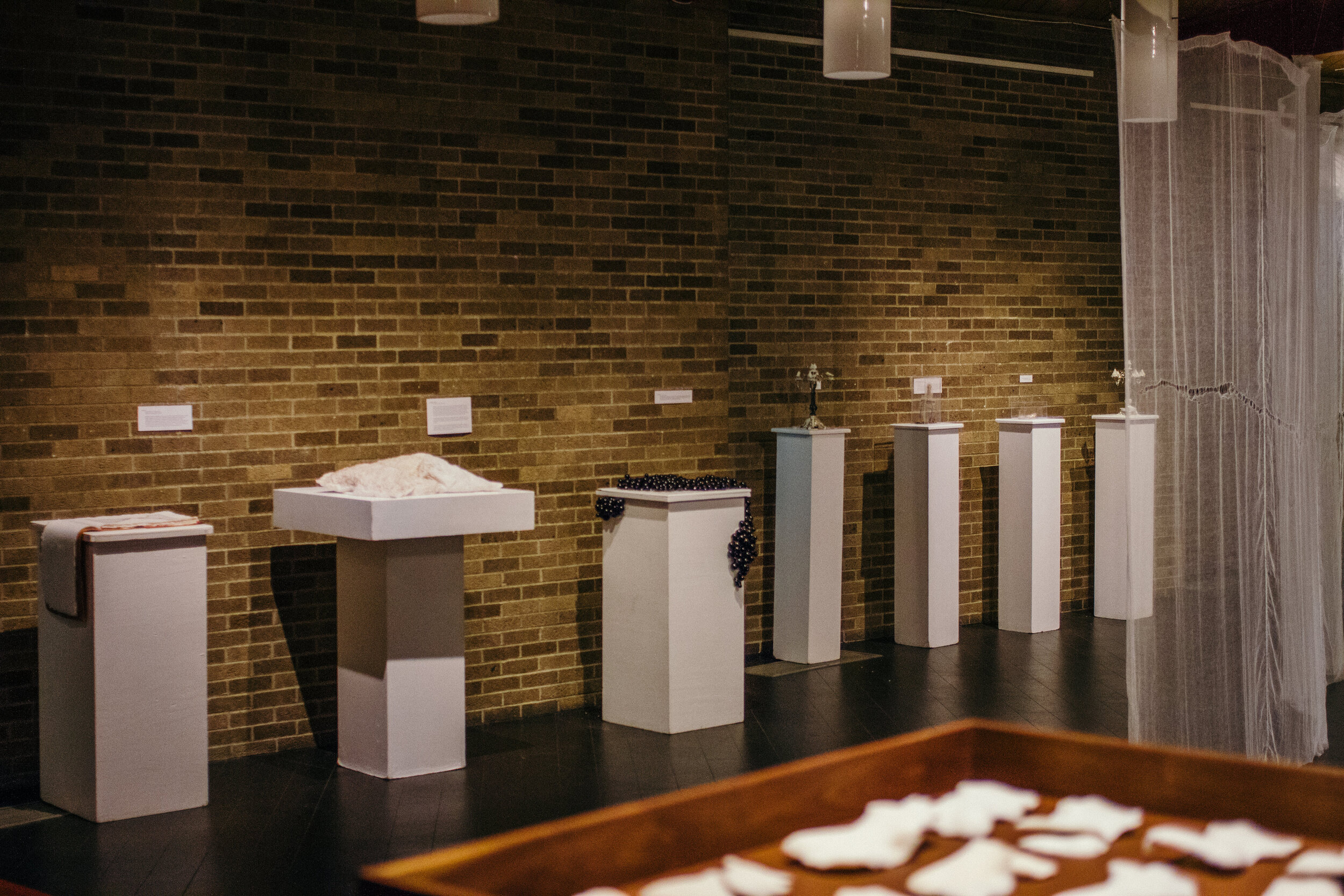

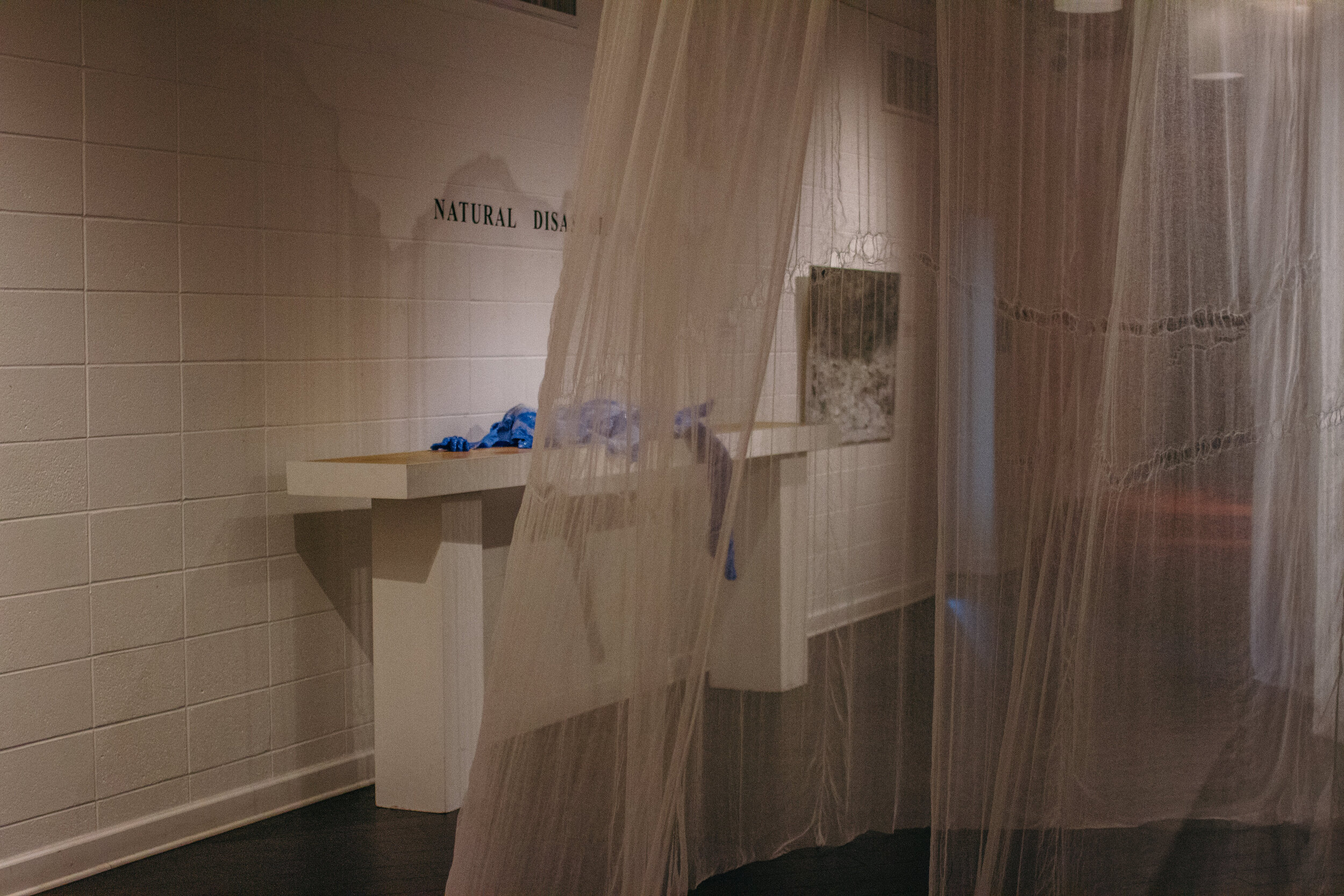
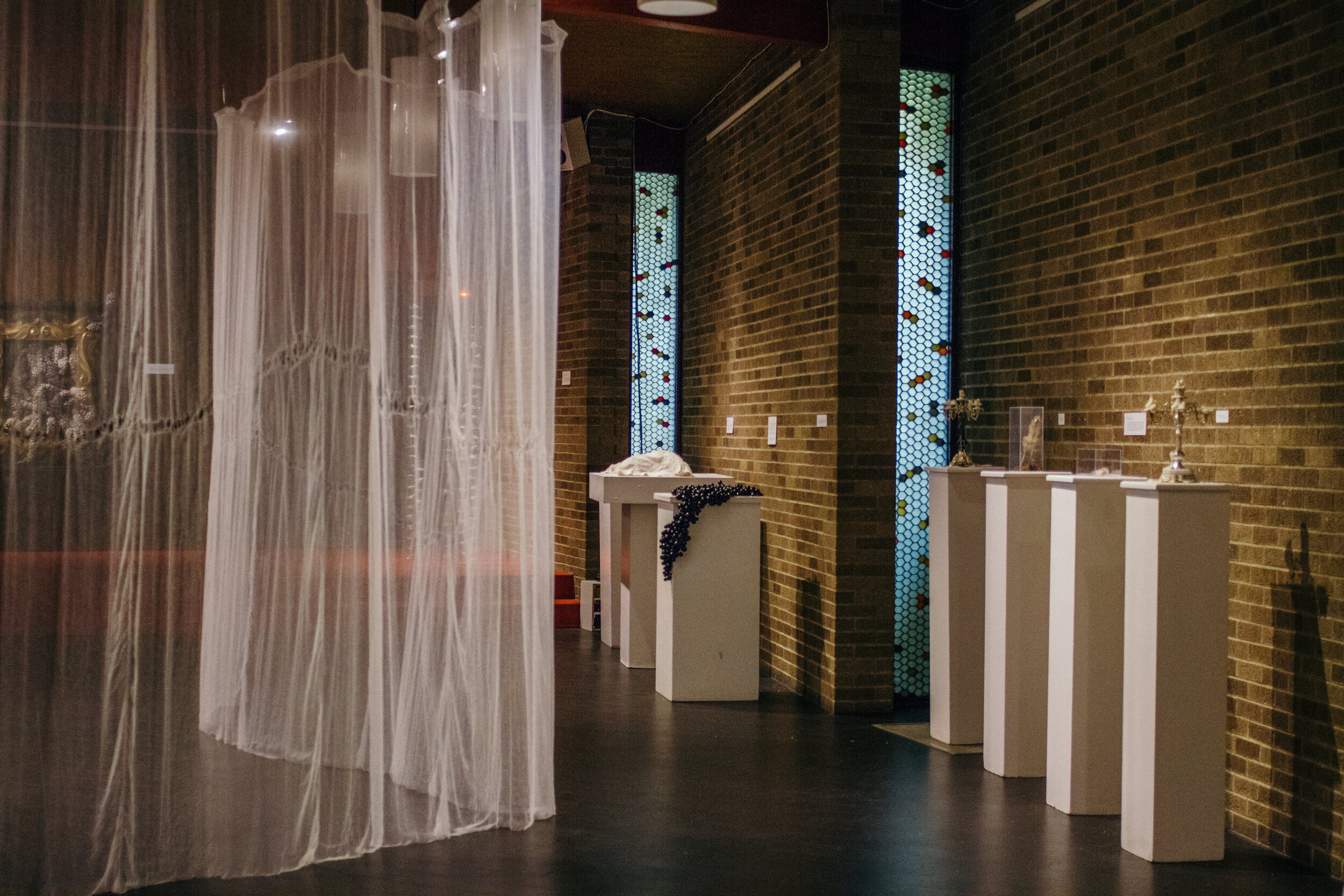
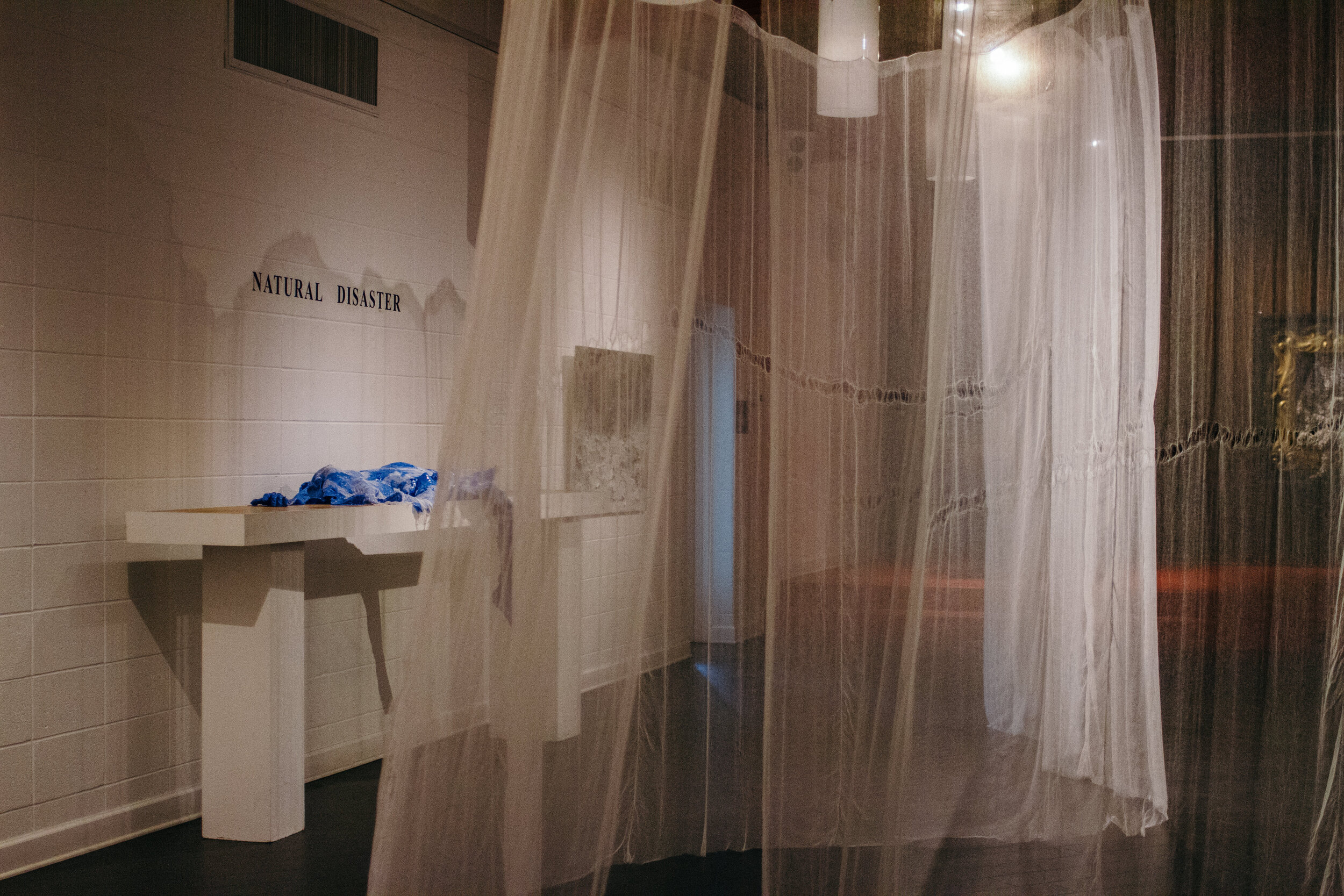
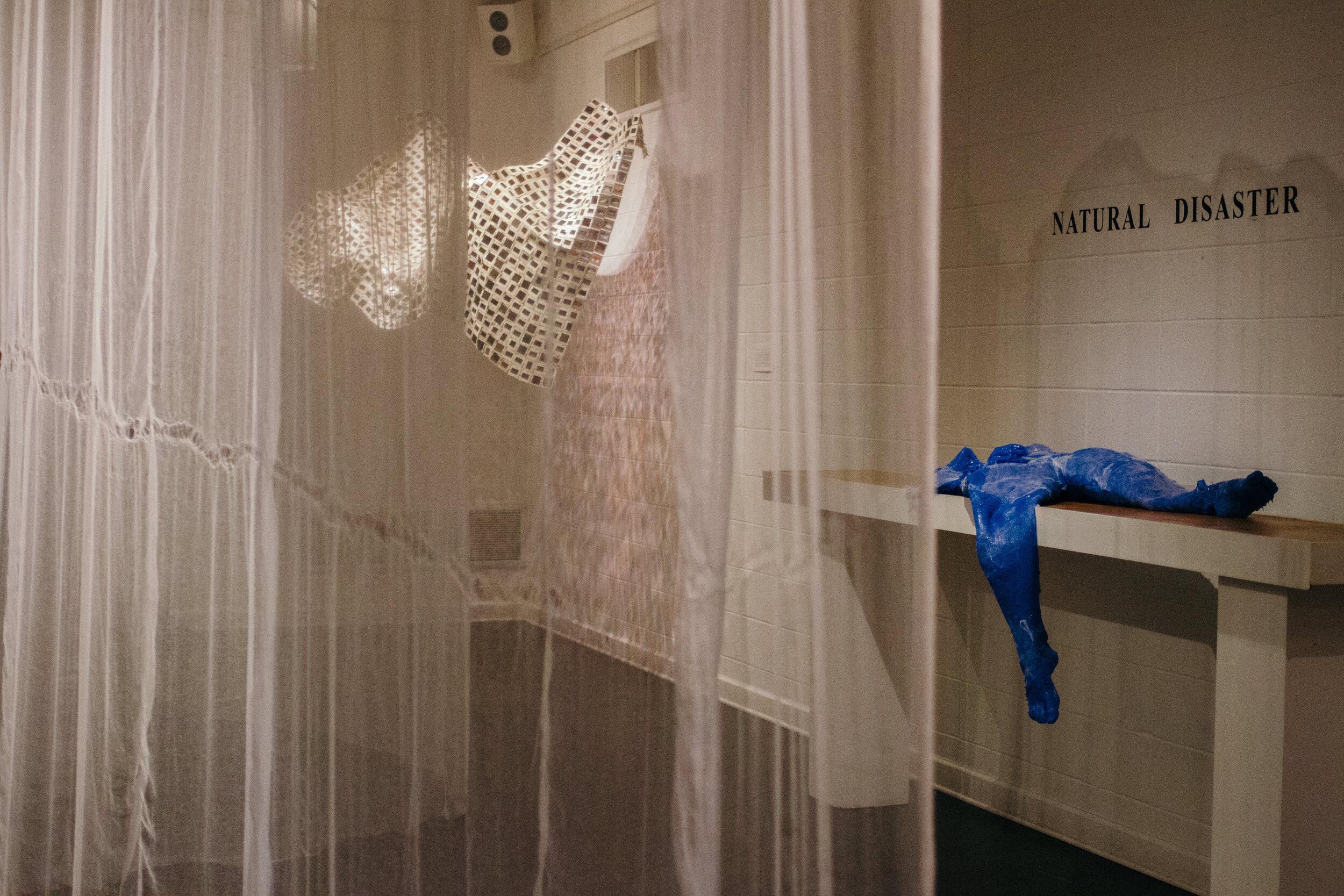
Fault
Cheesecloth
You are invited to walk through this piece.
This show began with the question, “what do we as humans consider to be faults?” Faults exist under the surface, but eventually they demand to be felt. When they can no longer take the pressure, they shift and violently alter all that is around them. There is the geological understanding of a fault as relates to an earthquake, but in regards to ourselves, what is a fault? Is it the seven deadly sins? Physically visible as scars or marks? A character flaw? A miscommunication in a relationship that will soon tear through all parties involved? What do you consider to be a fault?
Floating gently, two walls become a veil, membrane, and sculpture. A fault drawn through the fabric using a needle, ruins the cheesecloth’s weave. The fibre is reminiscent of gauze, something that we use to dress wounds, and yet is rendered useless as it is pulled apart. The material flows with a ghostly elegance as the viewer walks through and their presence is physically acknowledged. The space between the walls echo a geographic fault, and when you enter the flowing, ghostly materials, you dwell in a see-through, torn fault cutting through the room.
You as the viewer are invited to enter into this space, this disaster in the form of a “wall.” As a wall it does nothing that a wall is meant to accomplish. It provides no stability, no privacy, no protection. As you pass through this veil of cheesecloth, a material originally intended to filter, consider the ways in which your body is asked to adjust in space and how your experience of your surroundings change.
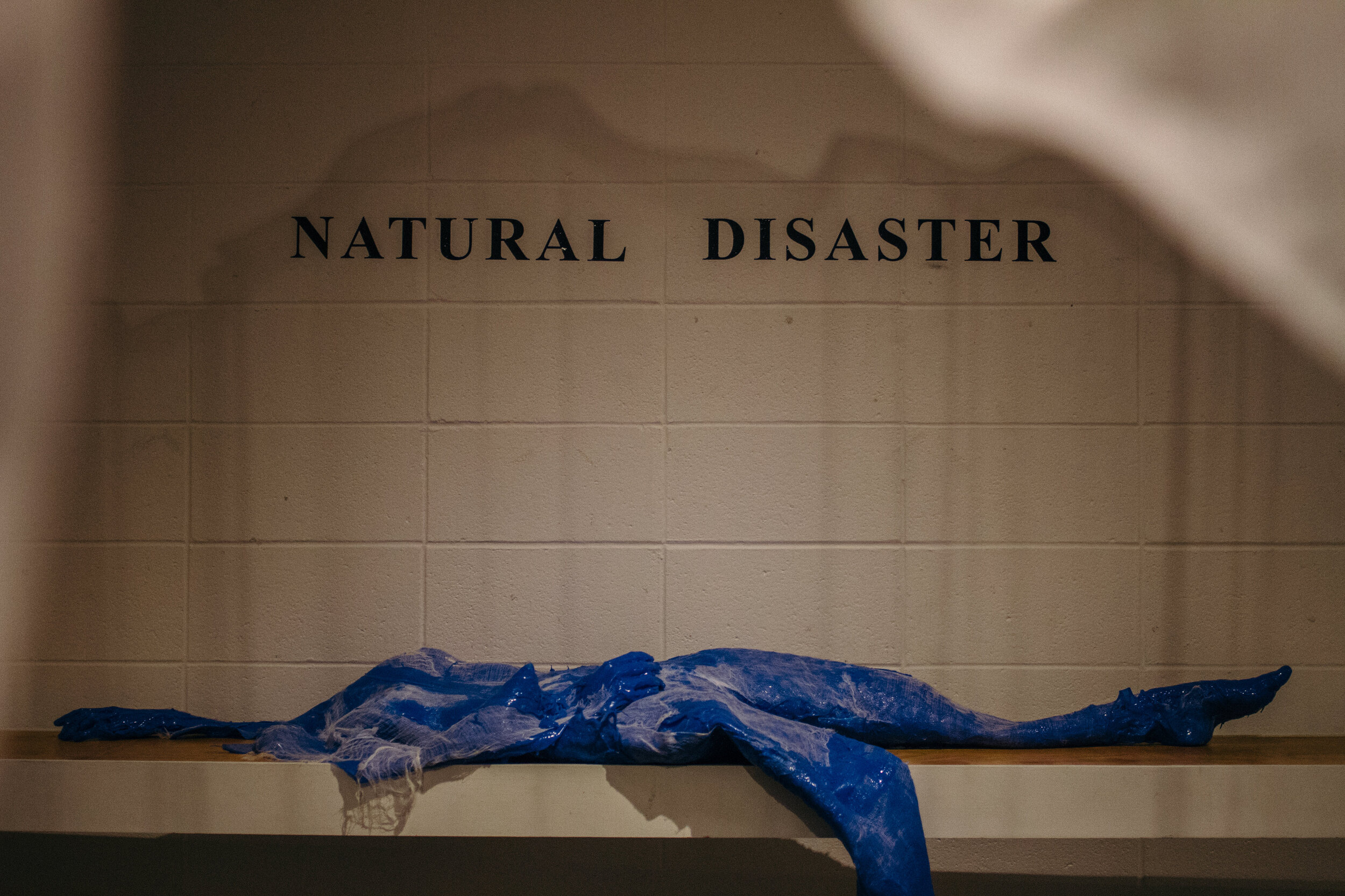
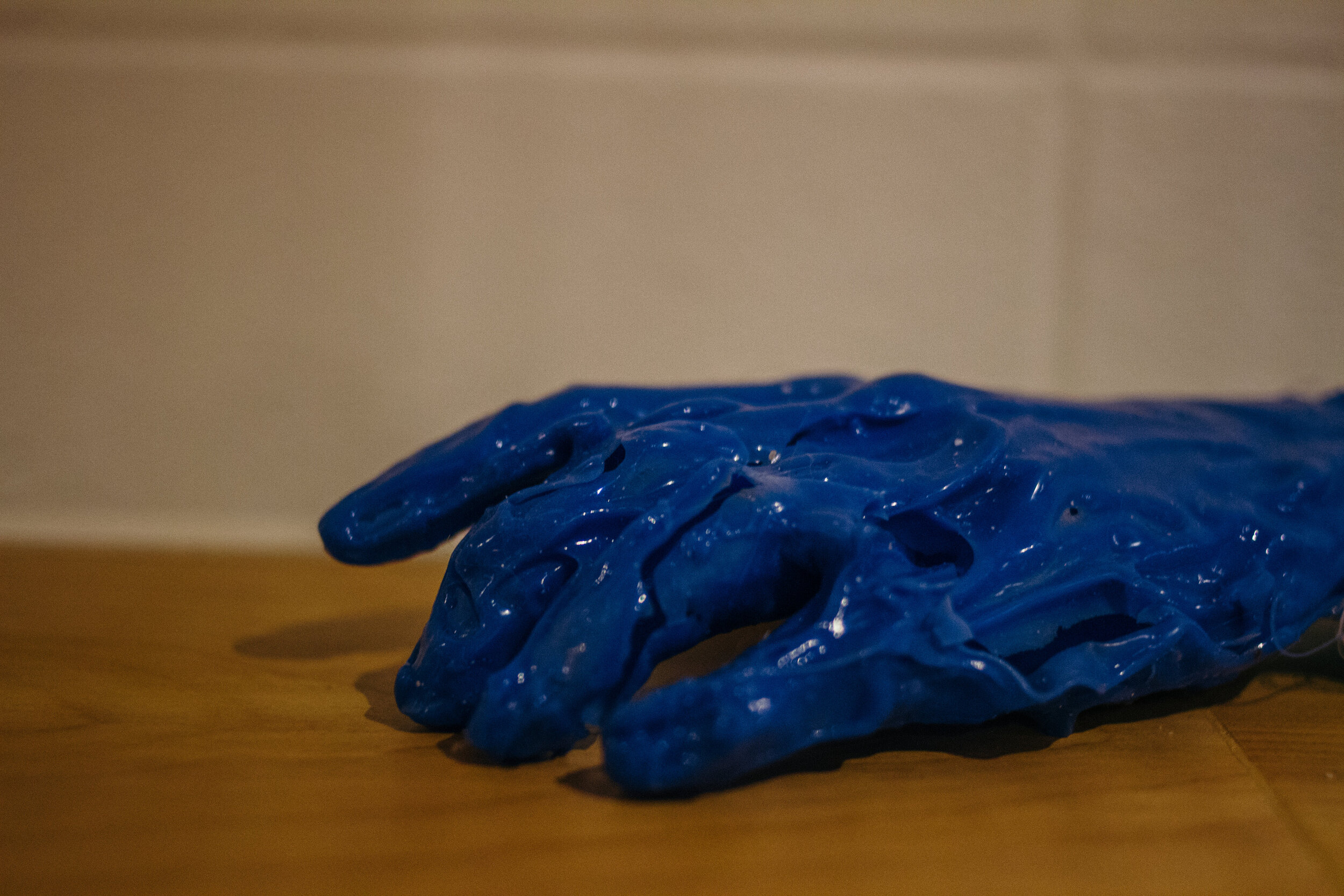
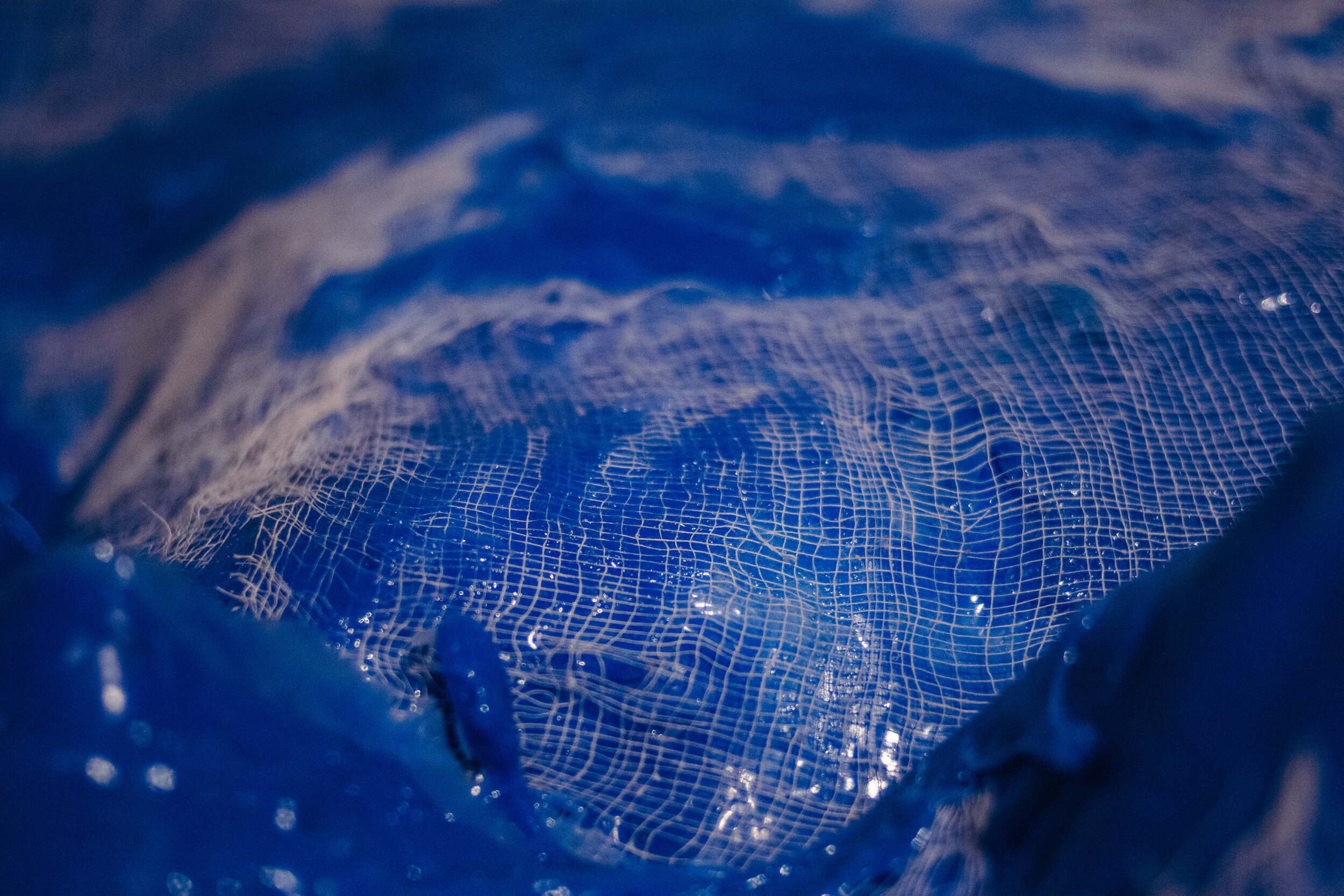
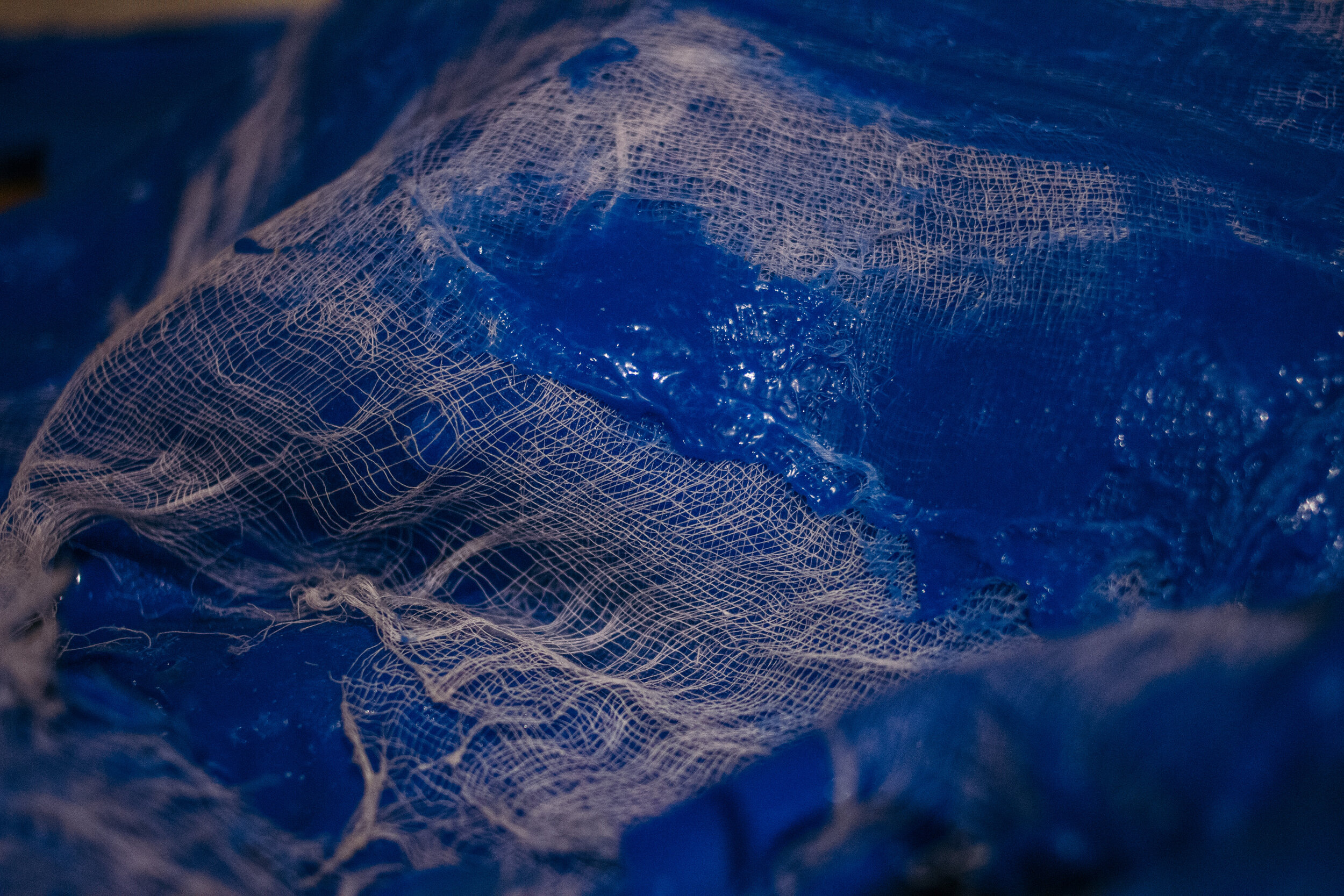
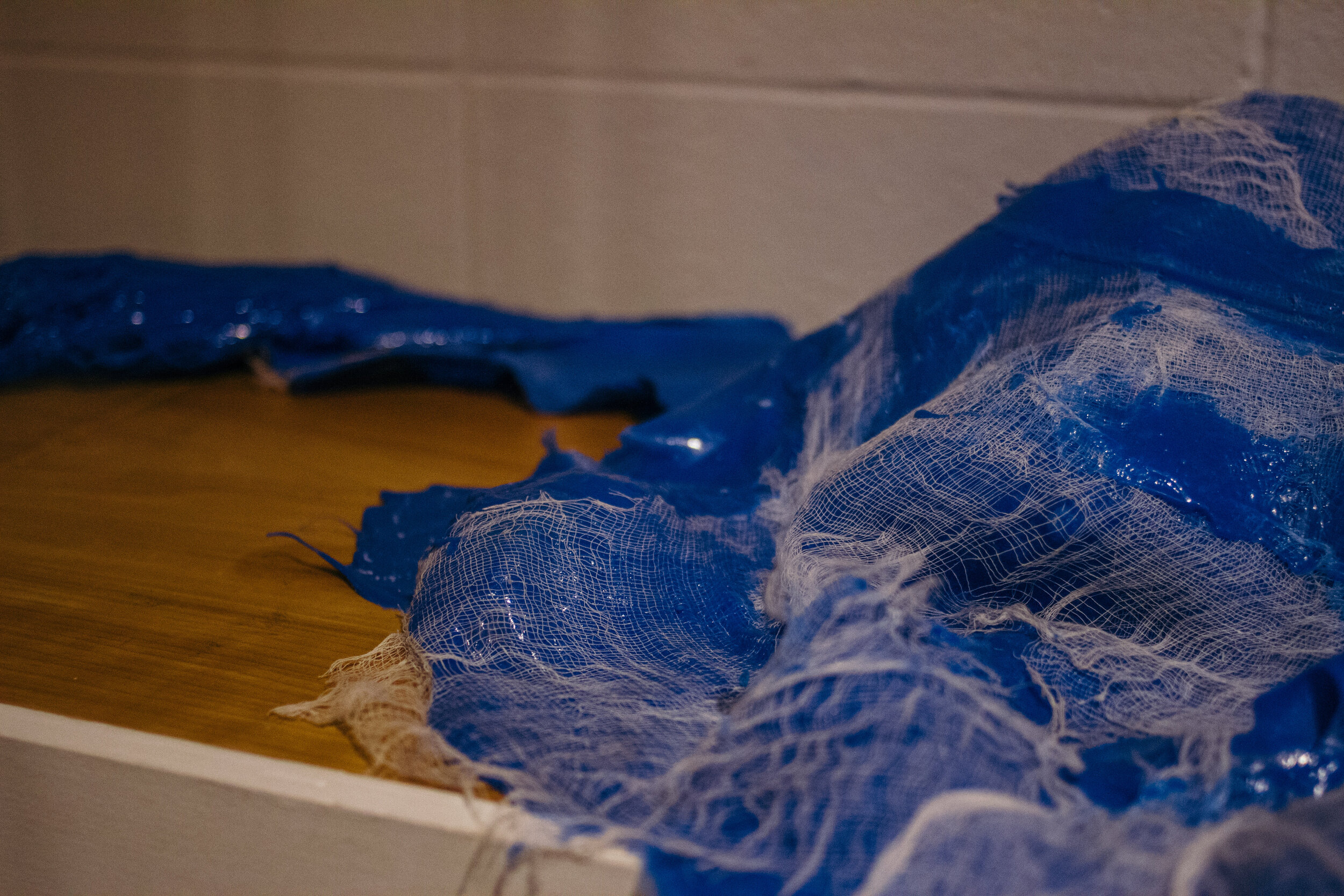
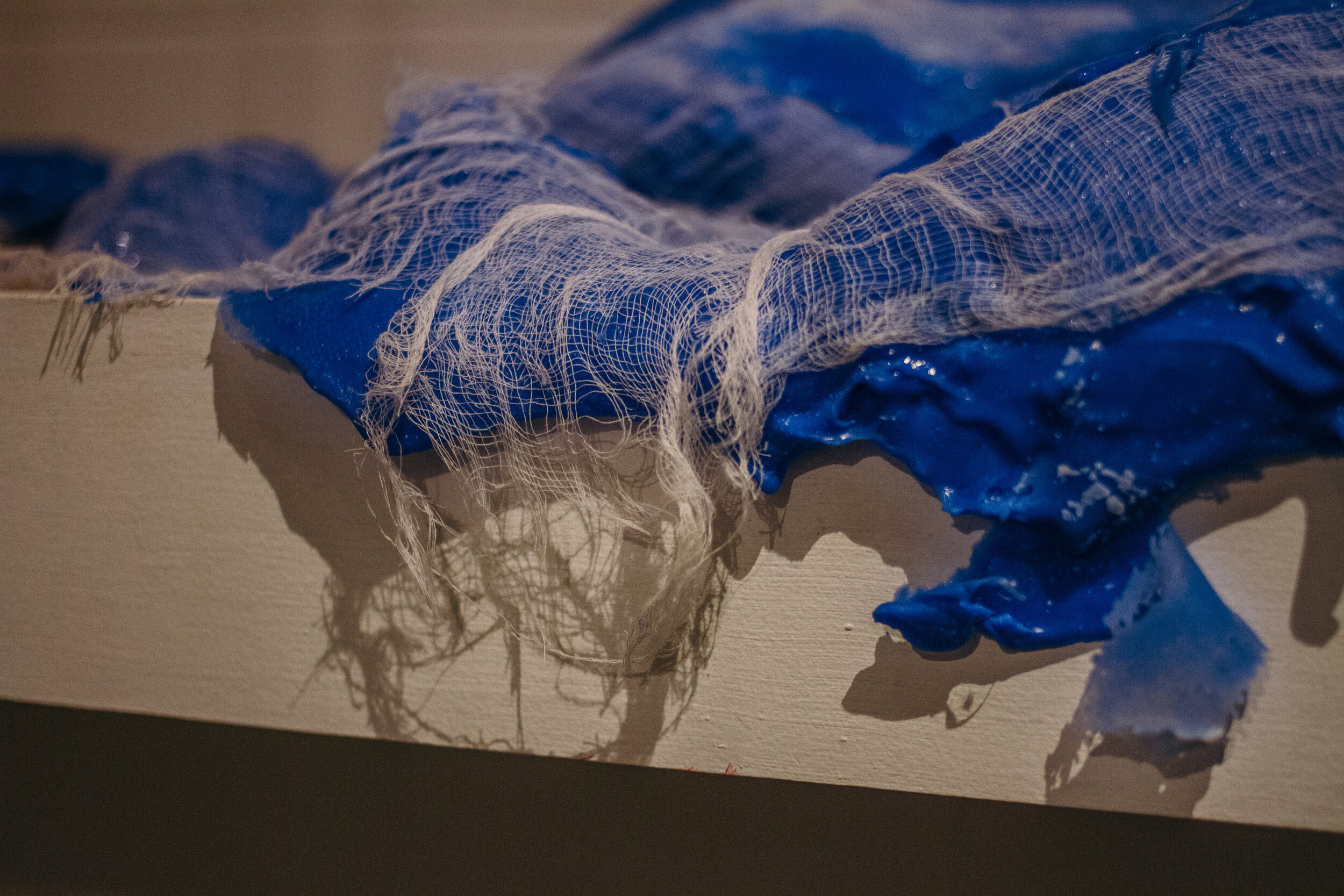
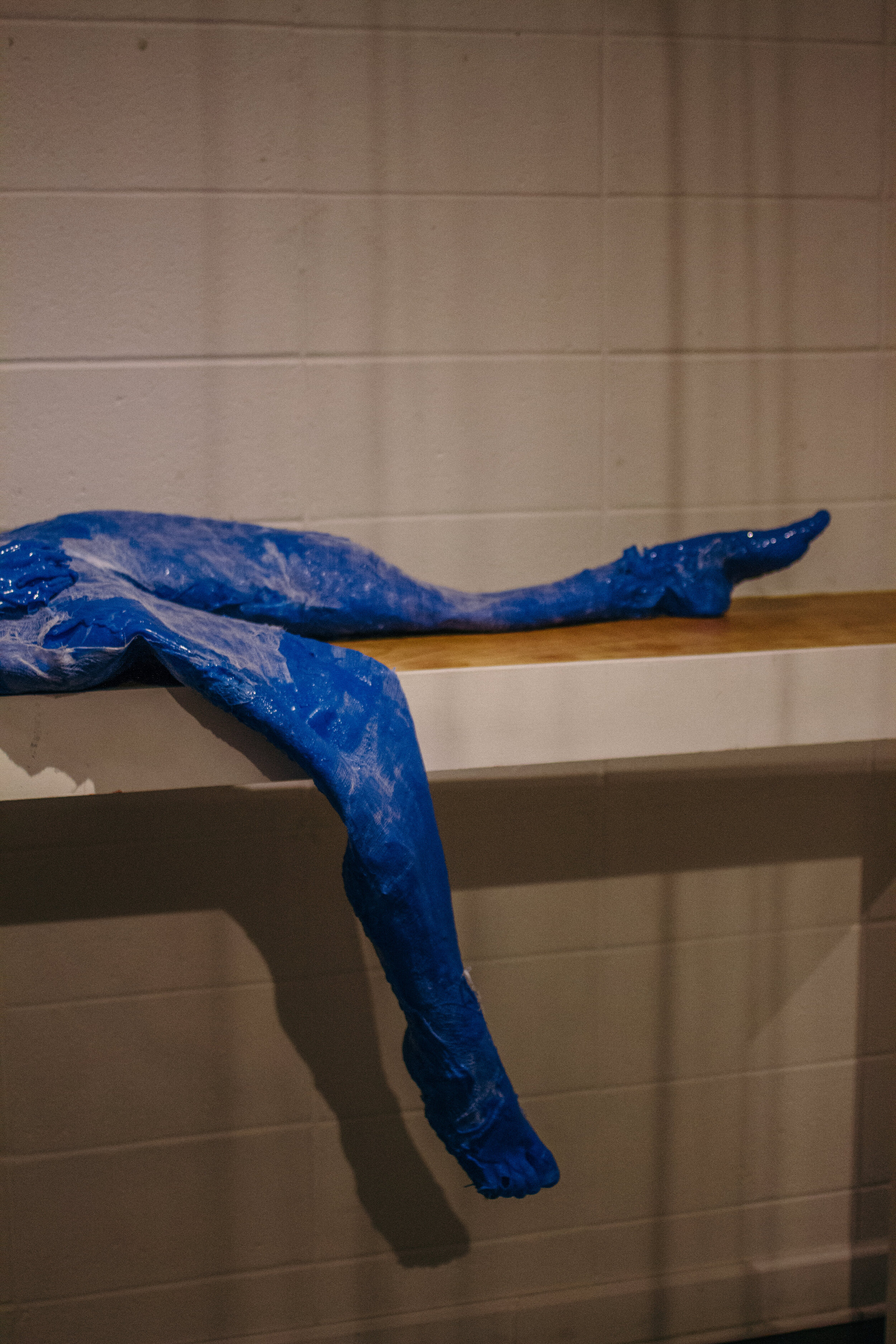
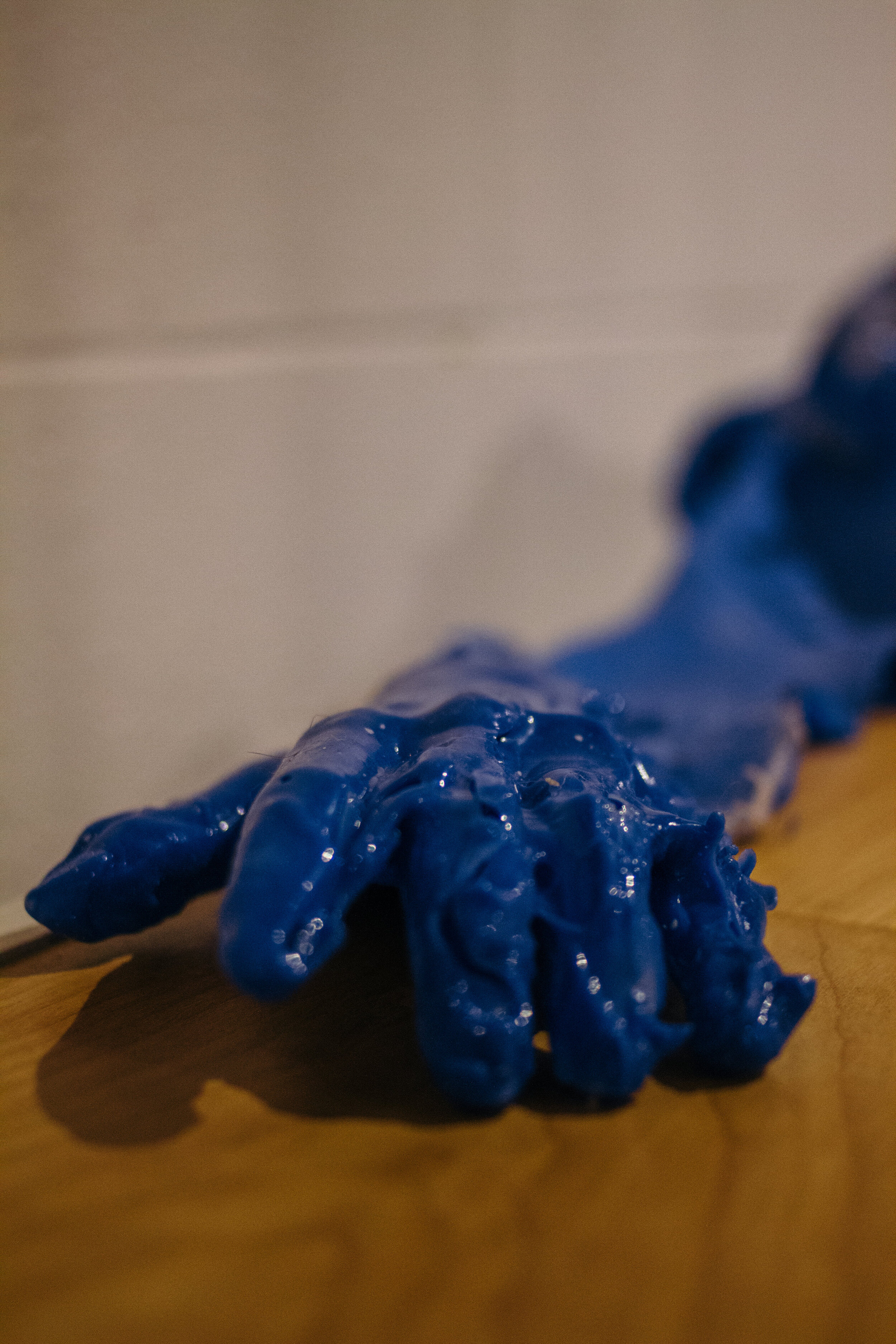
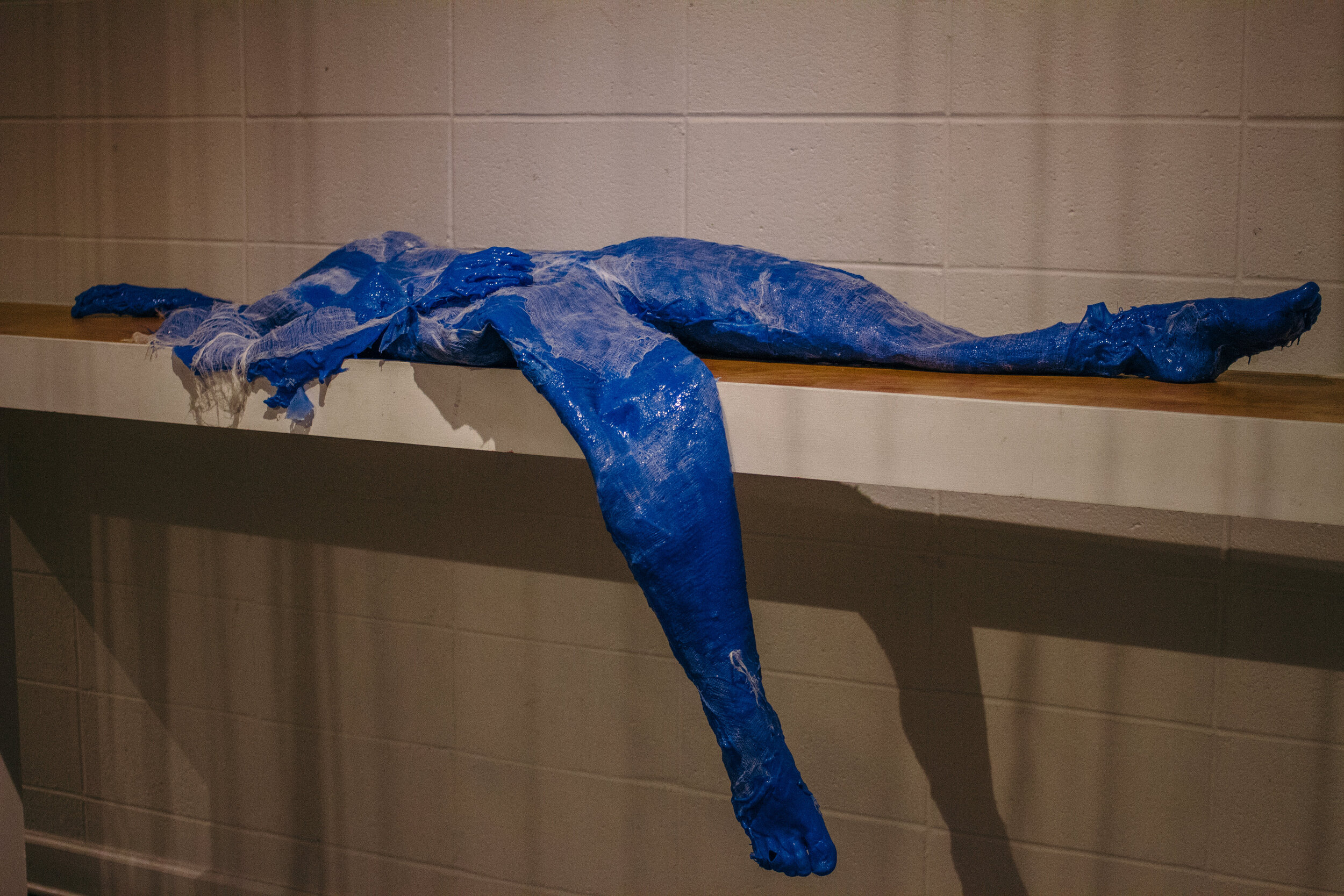
Second Skin
Silicone mold of the artist’s body, cheesecloth
We as humans are, or often feel like, natural disasters.
When a cicada sheds its skin, does it know it is about to change completely and retain the core of its being? Does it hurt? Is there relief? Perhaps similarly, we as humans so often cling to “skins” that may not be helpful or that we have outgrown because we are so concerned with the pain that may follow.
Through a rigorous process of covering the body with silicone and then carefully peeling it away, all that is left is a separate, alien skin that perfectly captures every pore and scar. Both during the process and after removal, this skin is weighty, empty, and foreign. Some disasters are brought about by the damage we insight and other times it is the refusal to change and move forward, to shed skin and to emerge on the other side, sore yet made new.
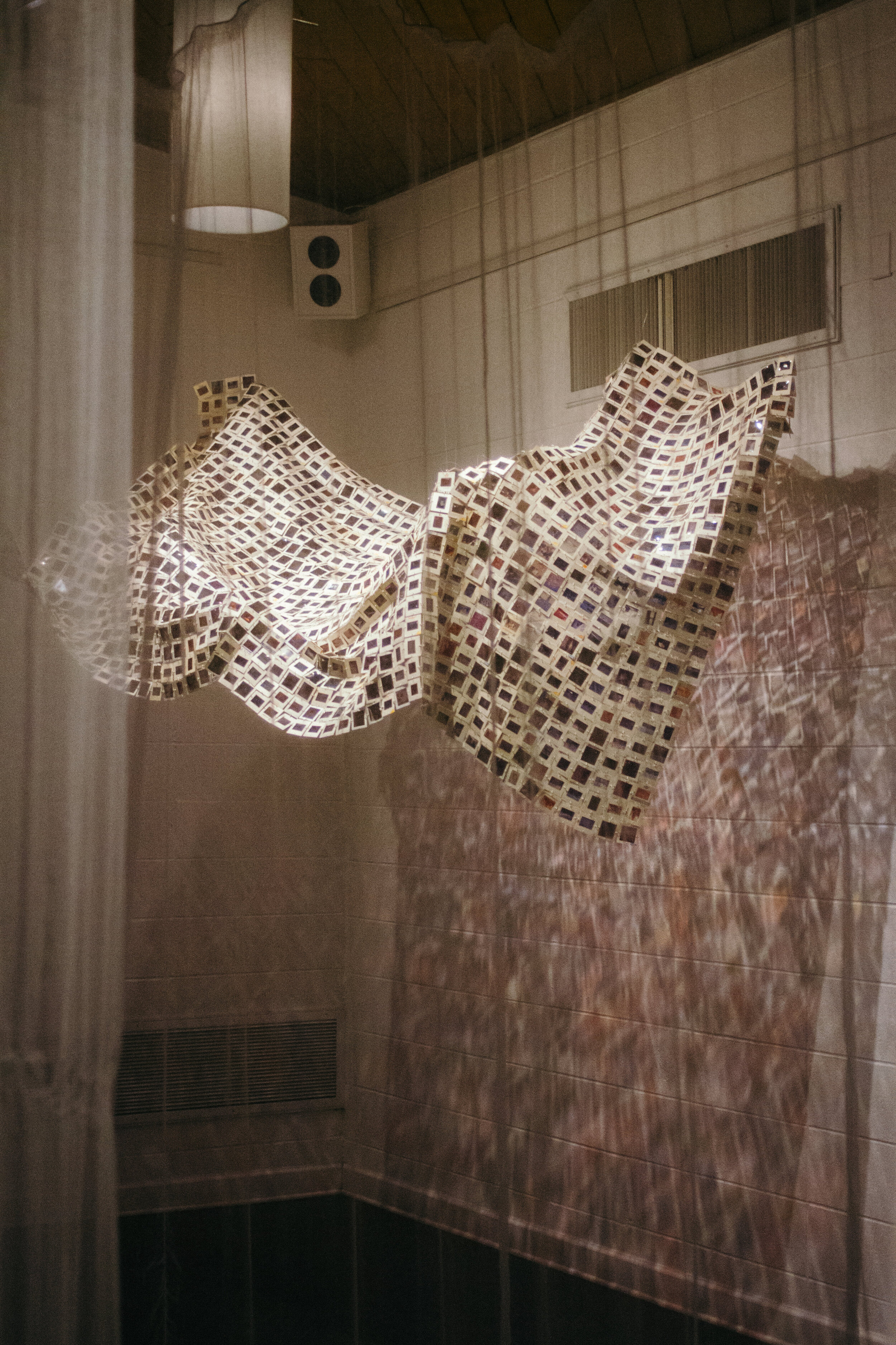
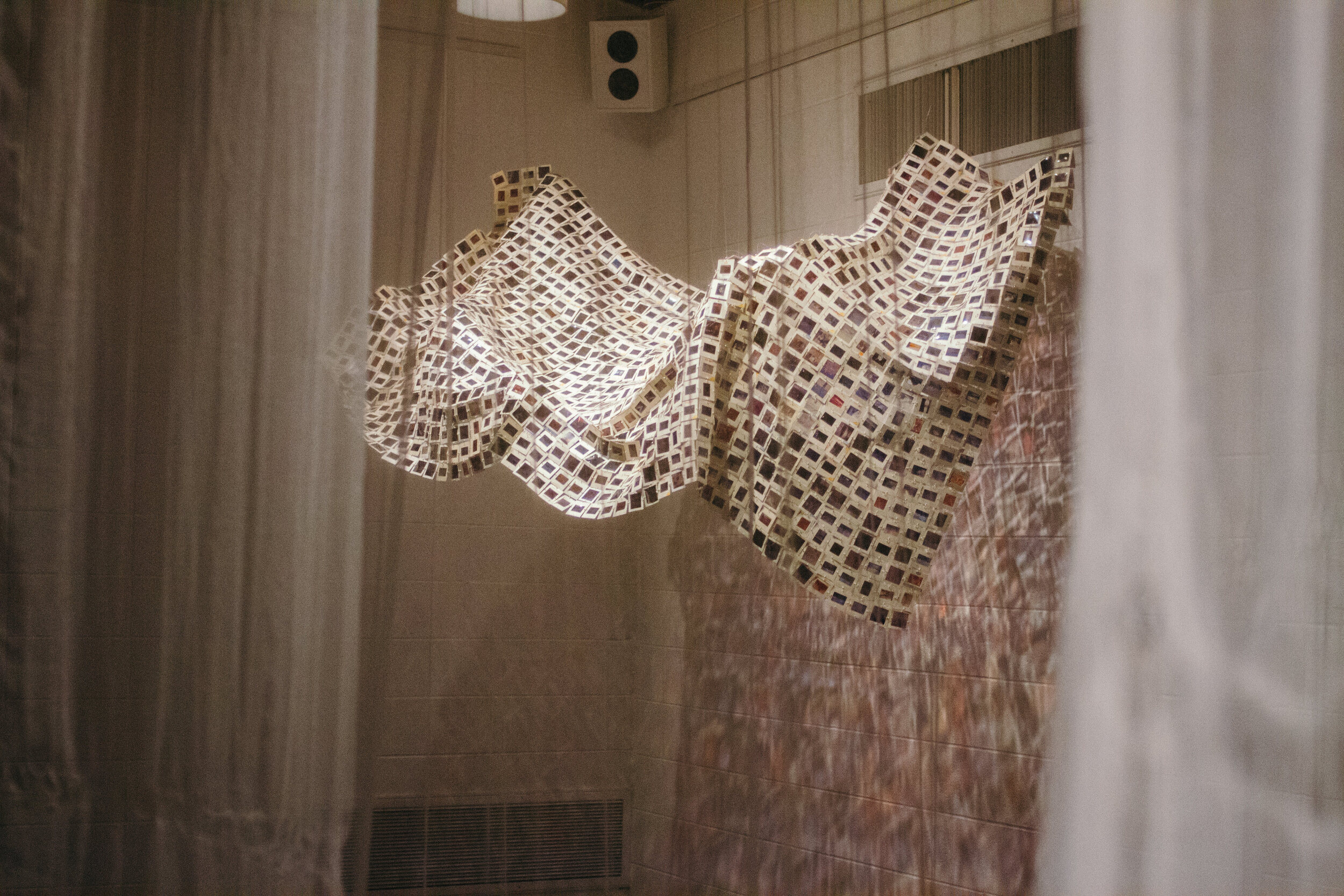
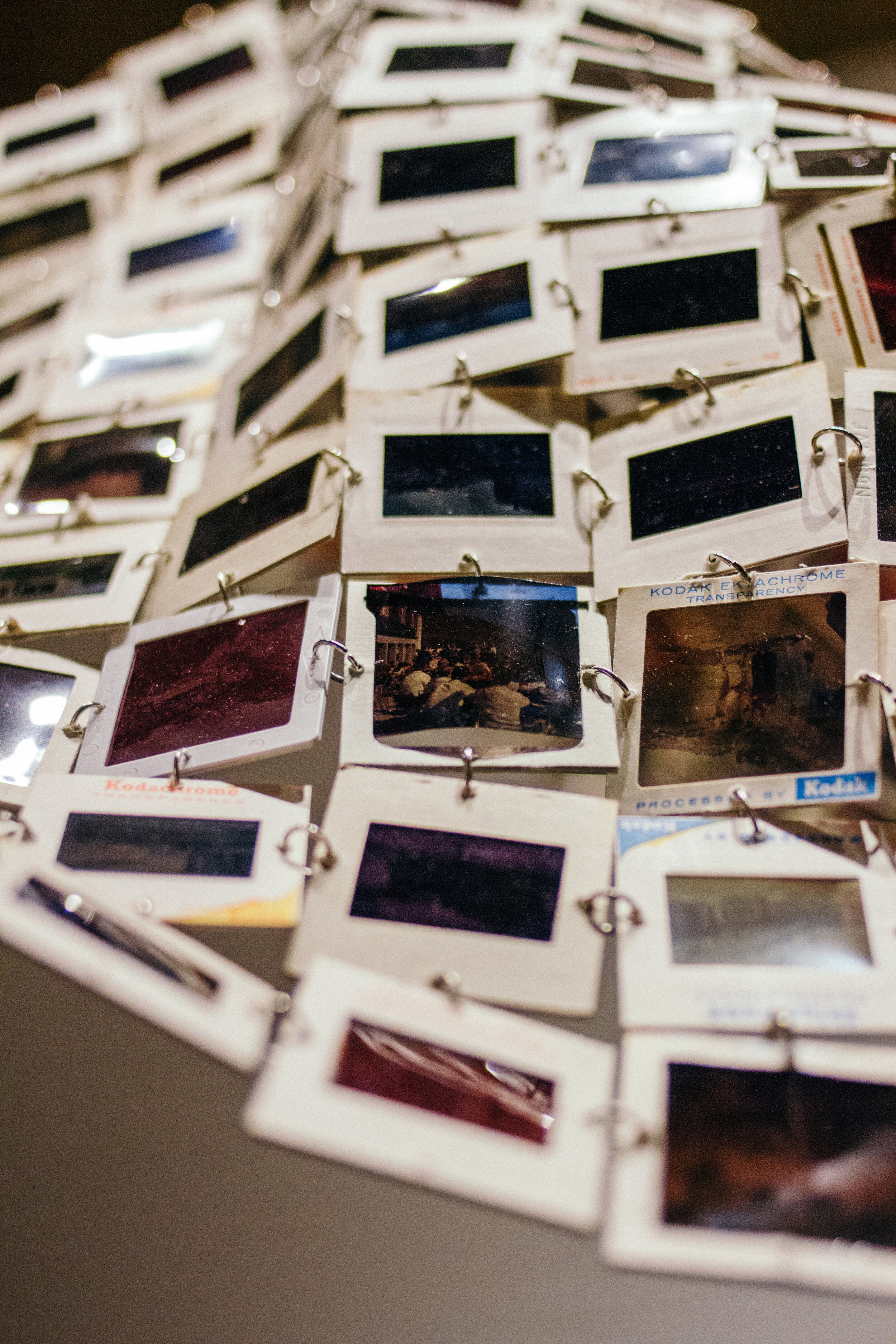
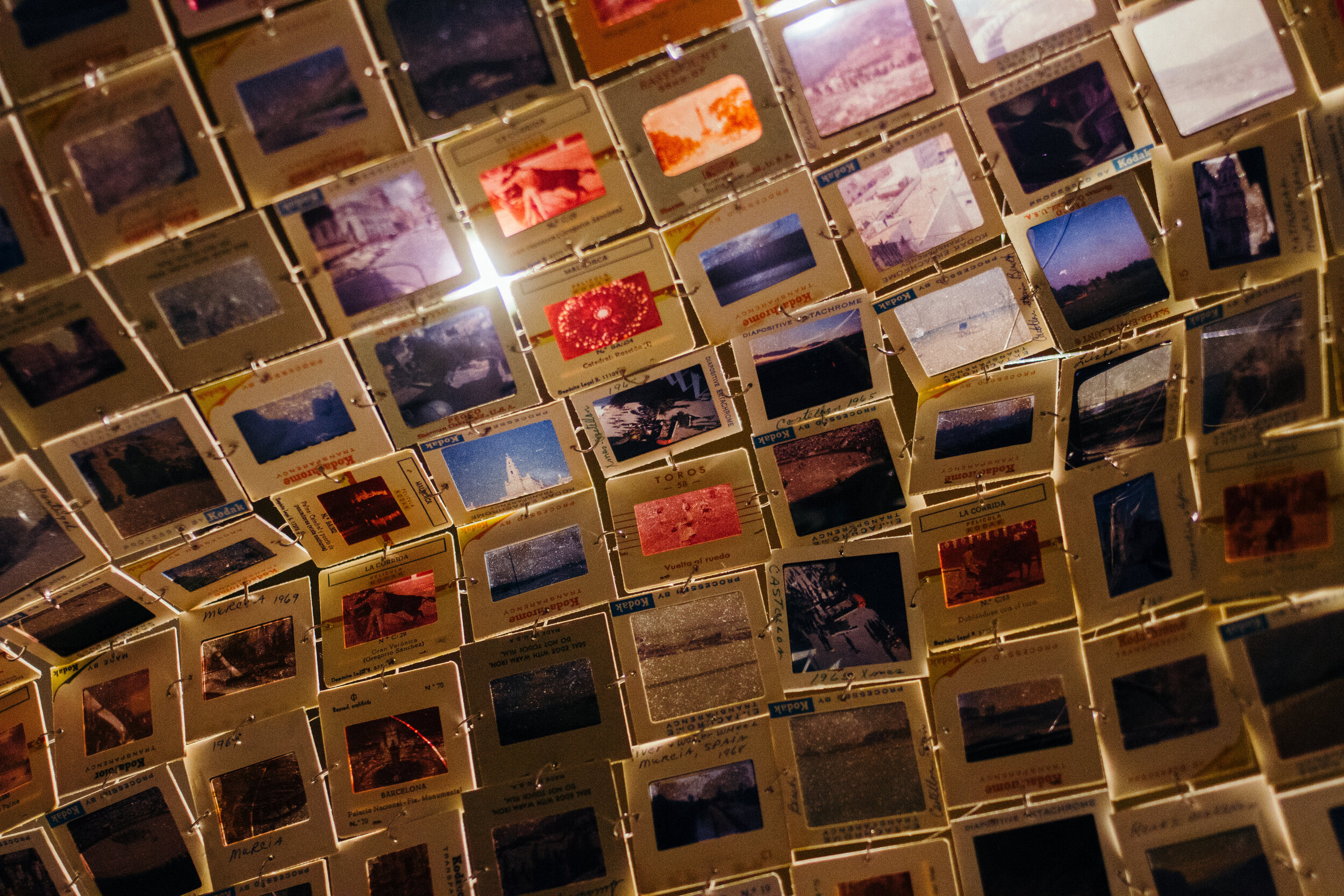
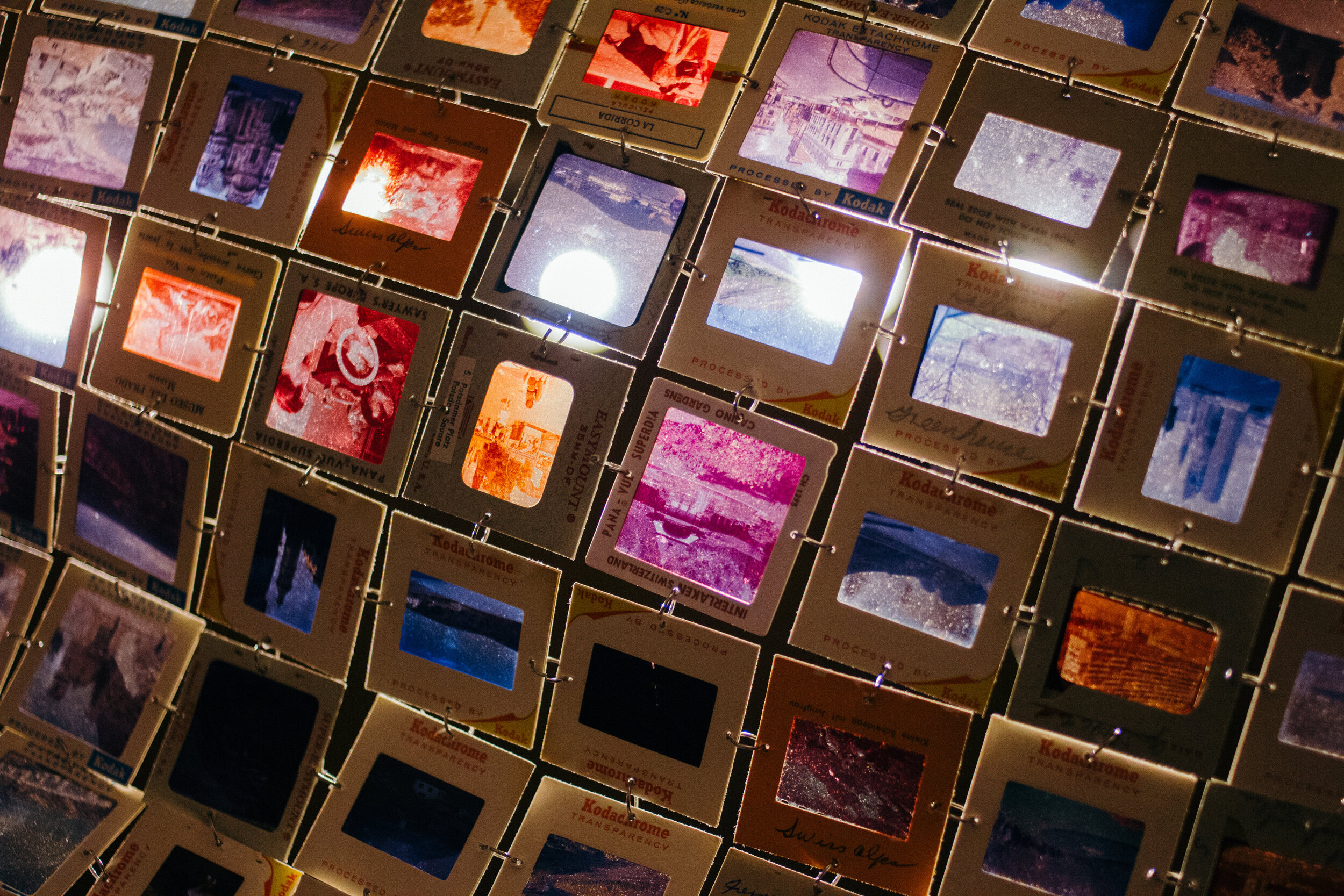
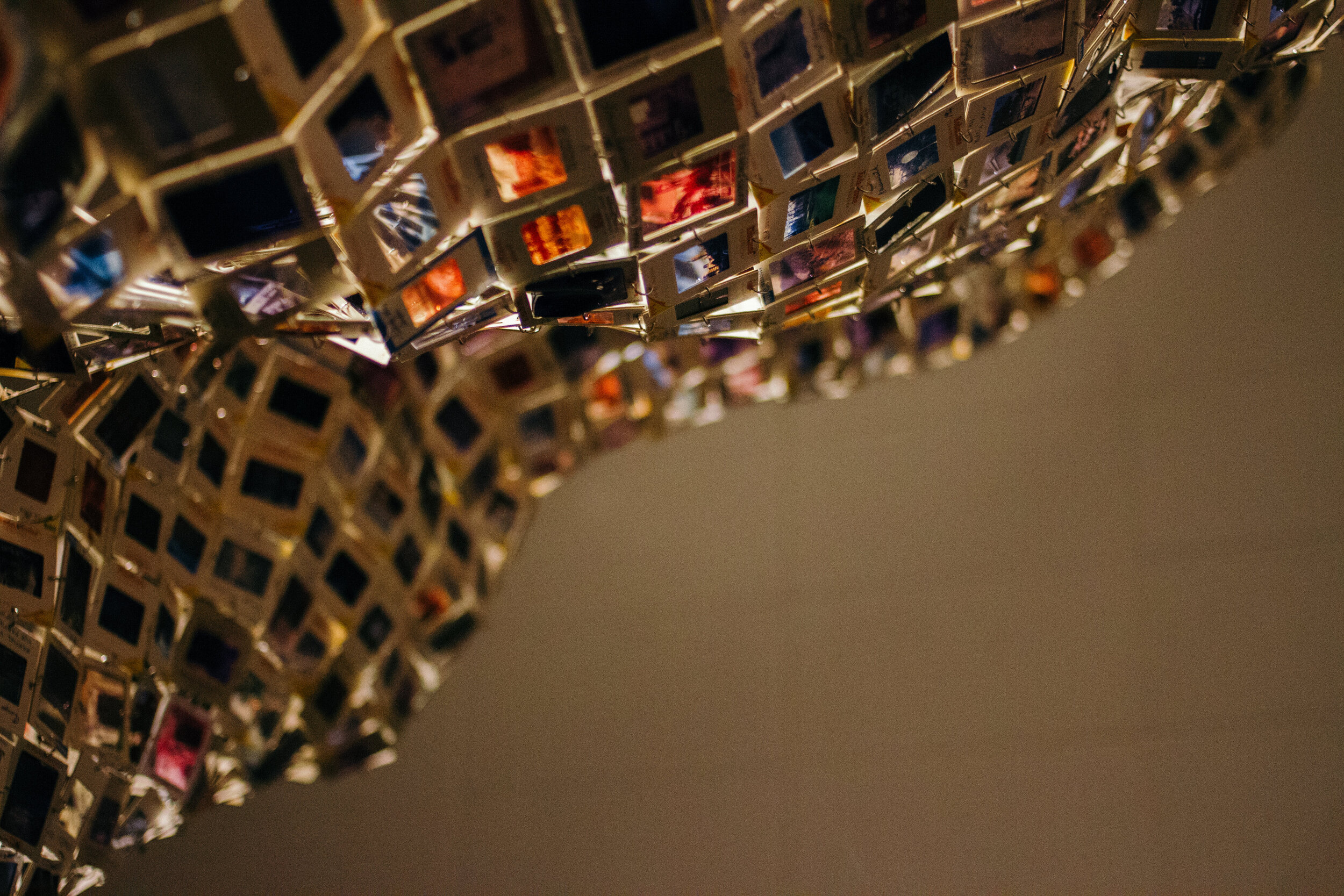

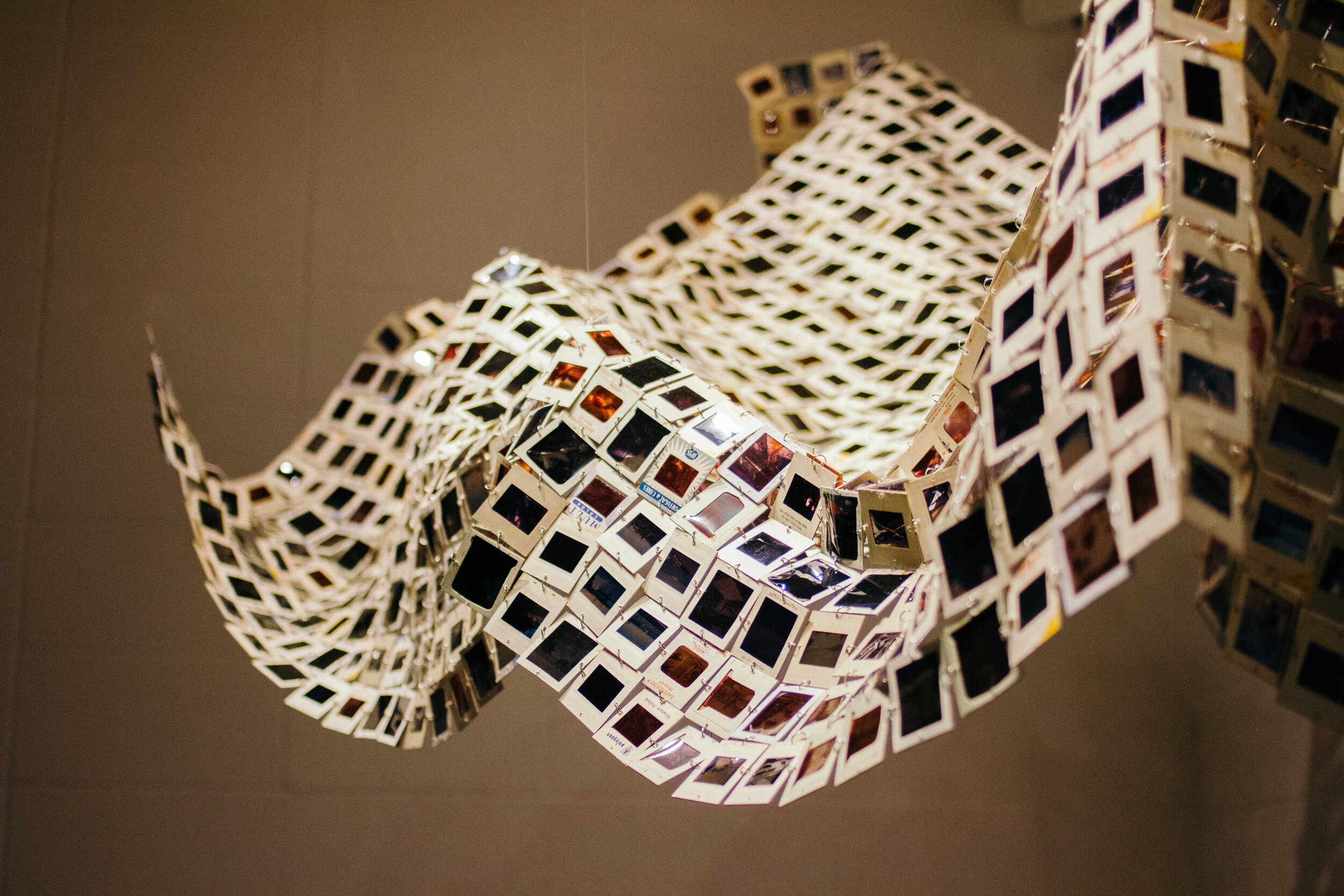
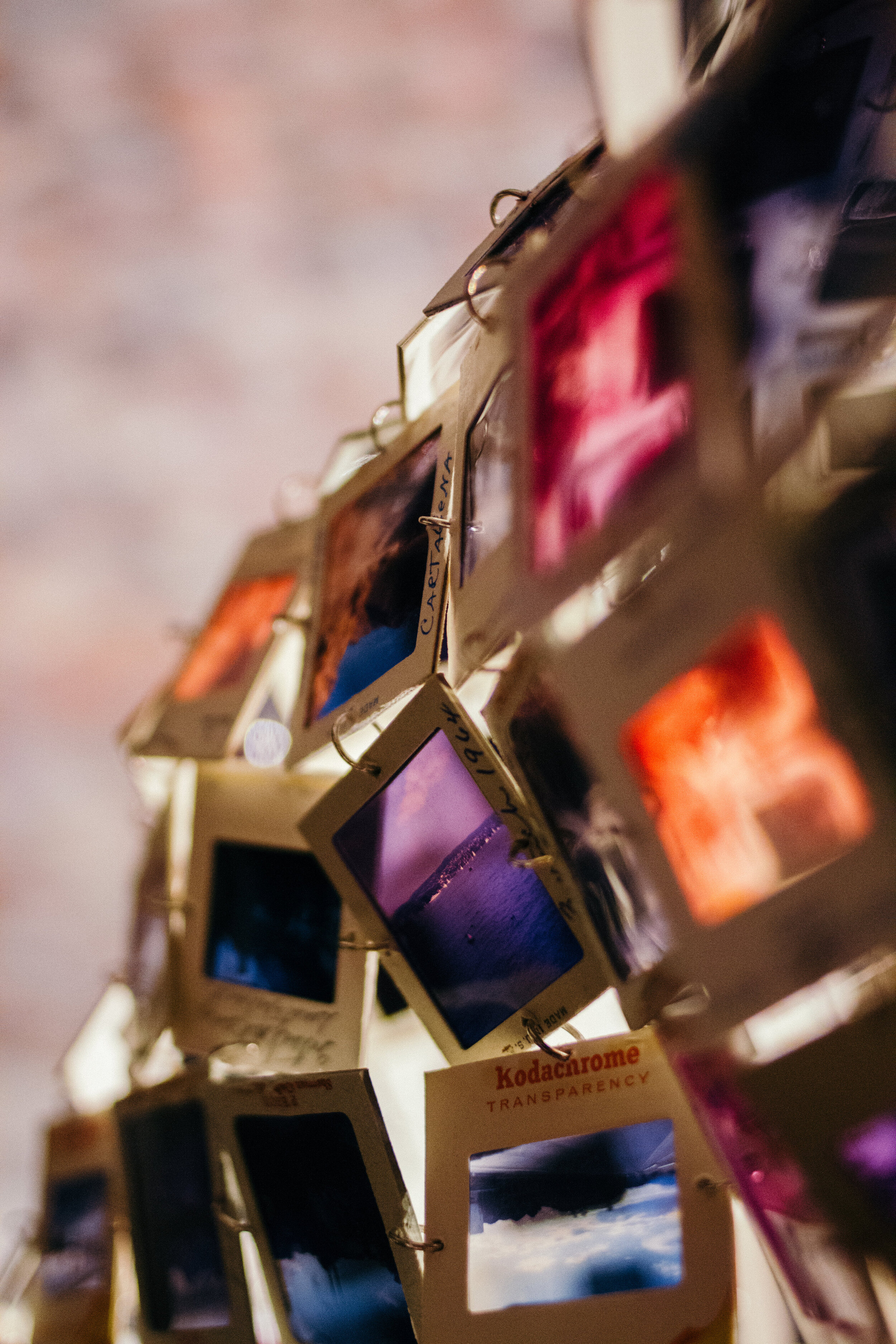

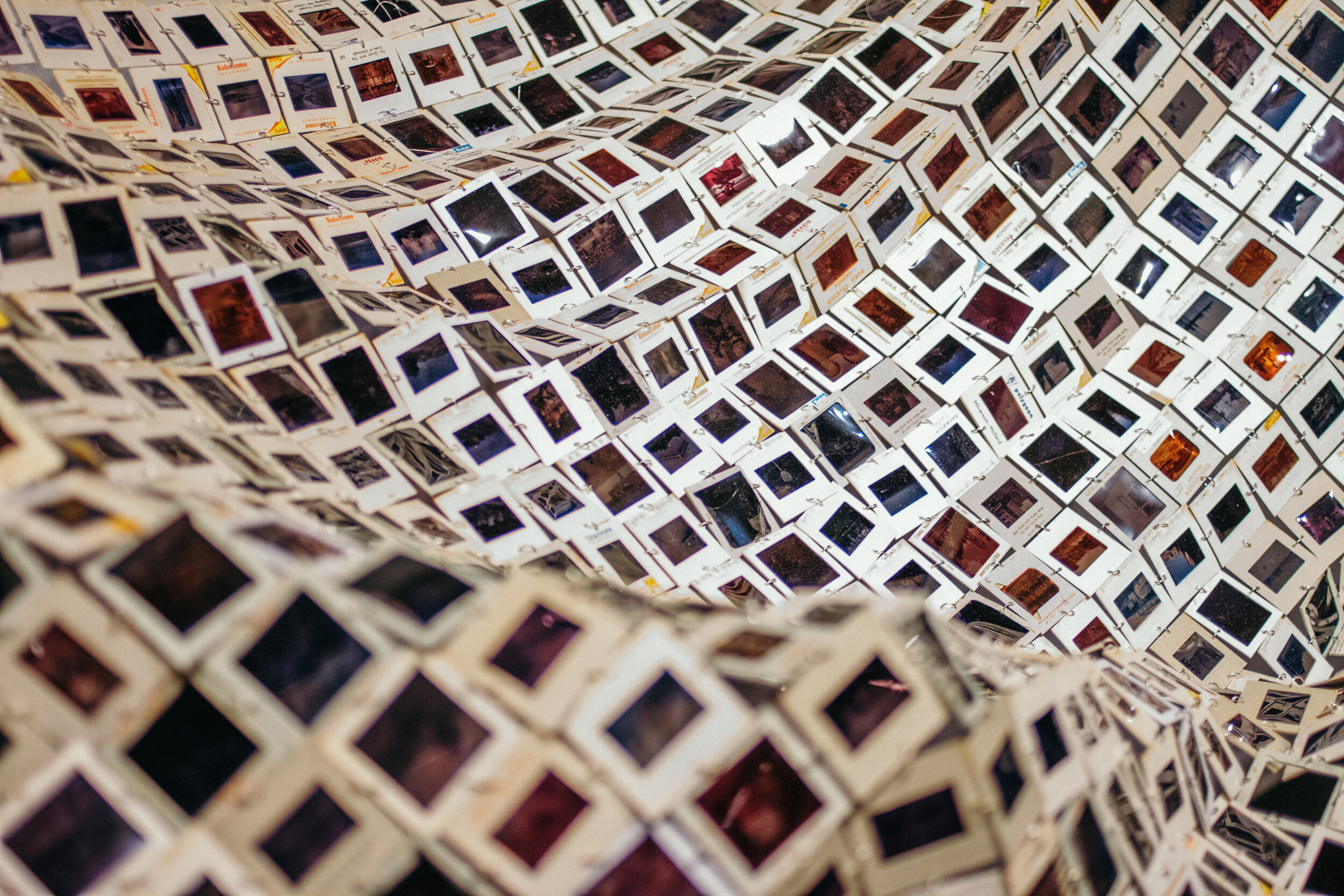
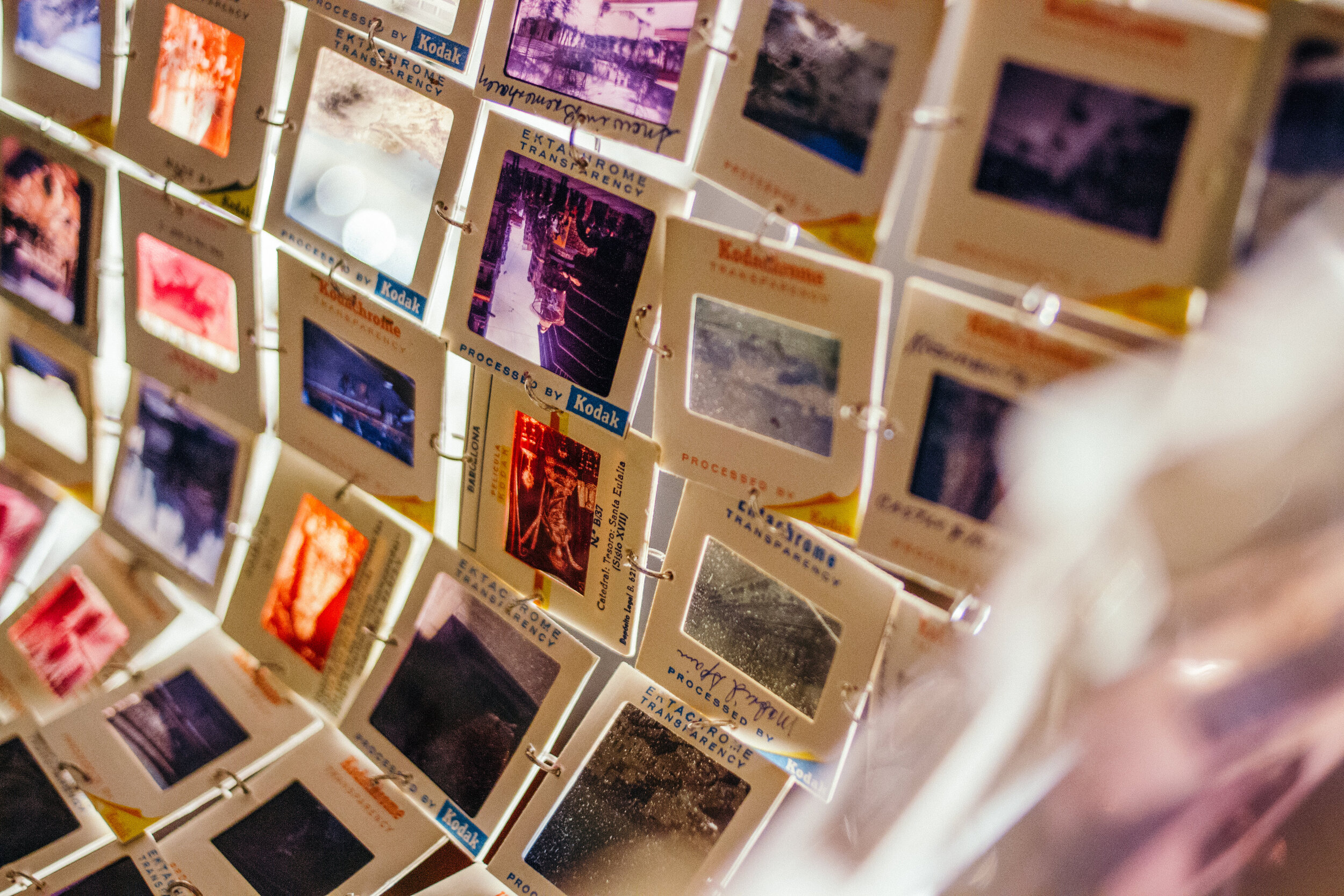
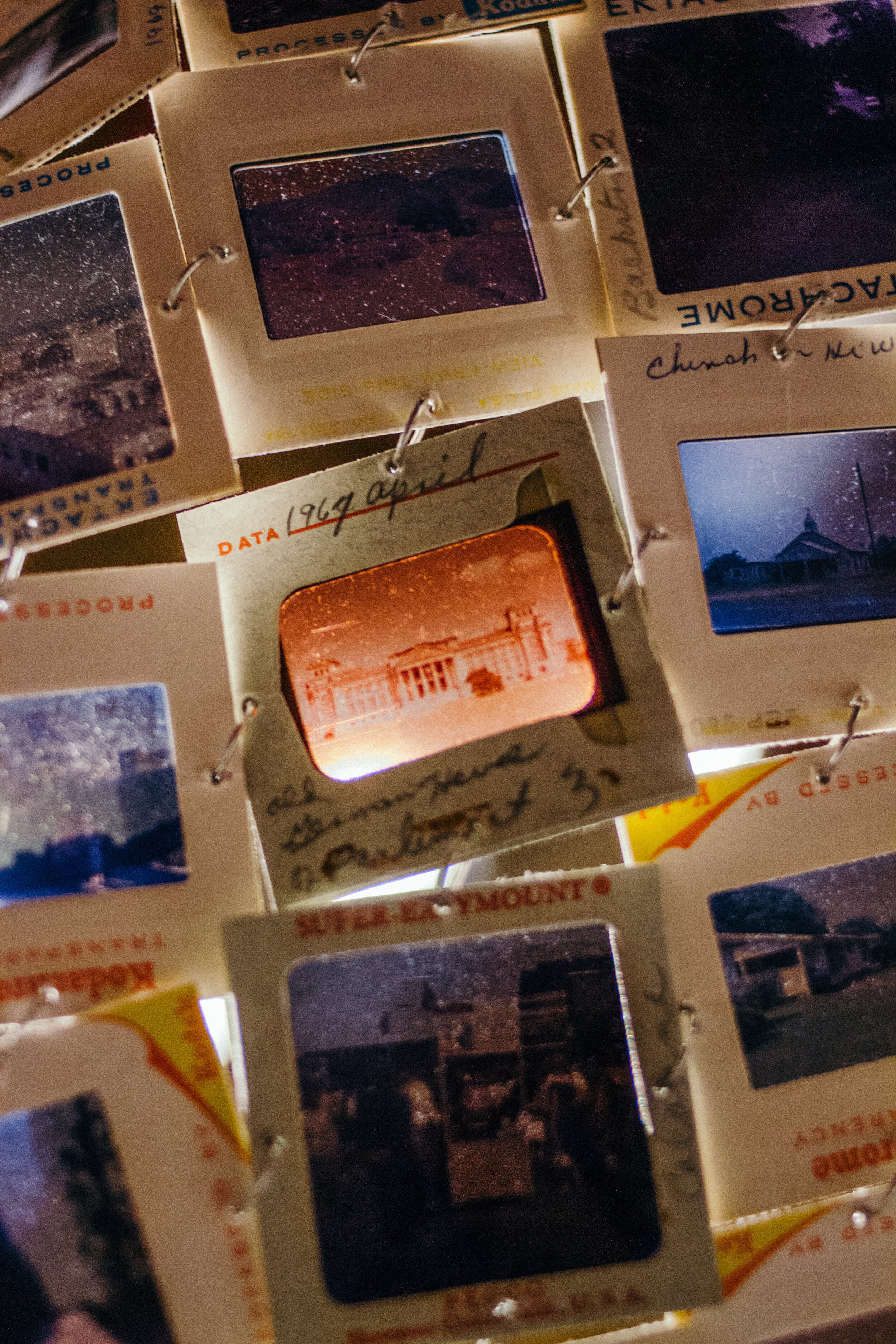
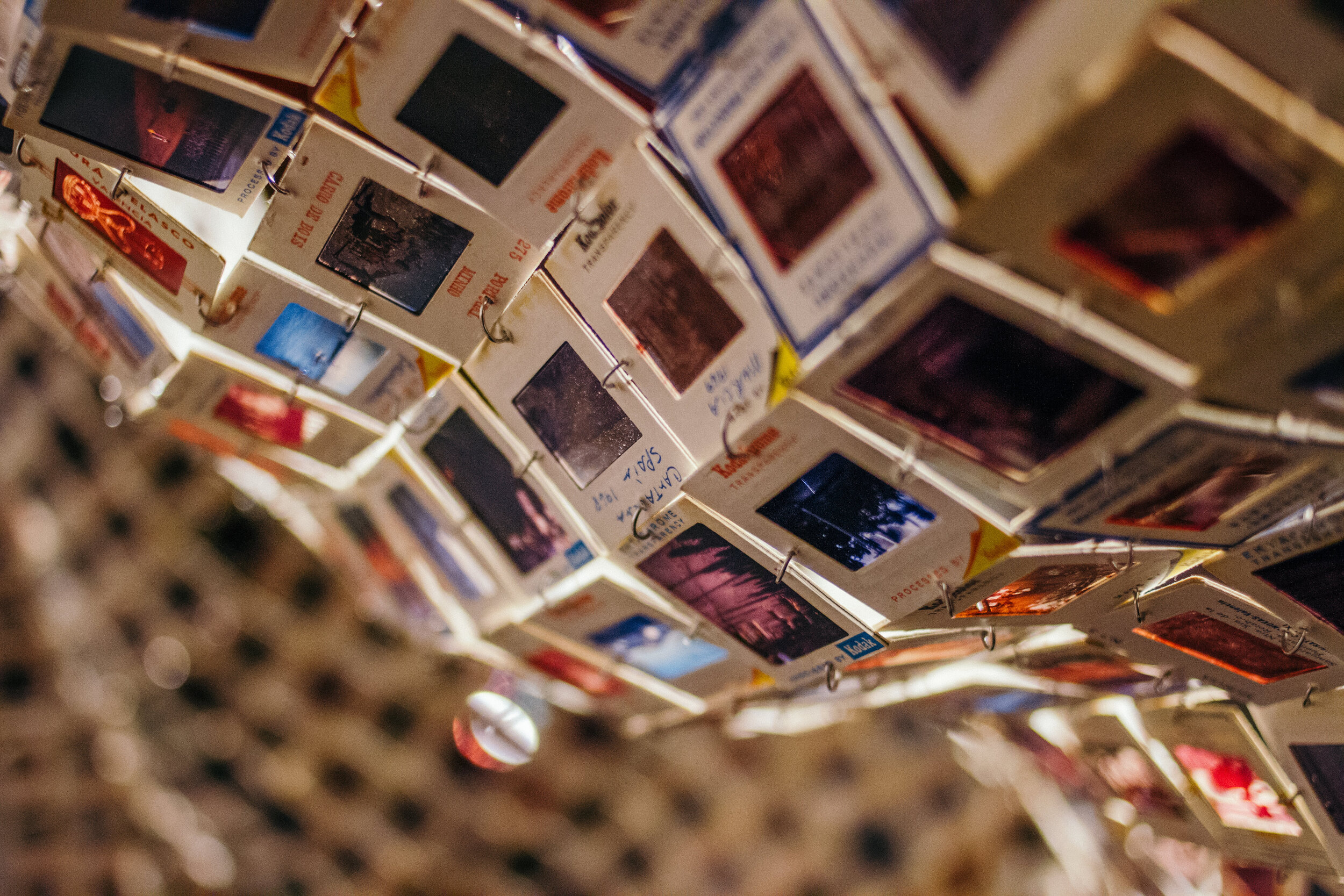
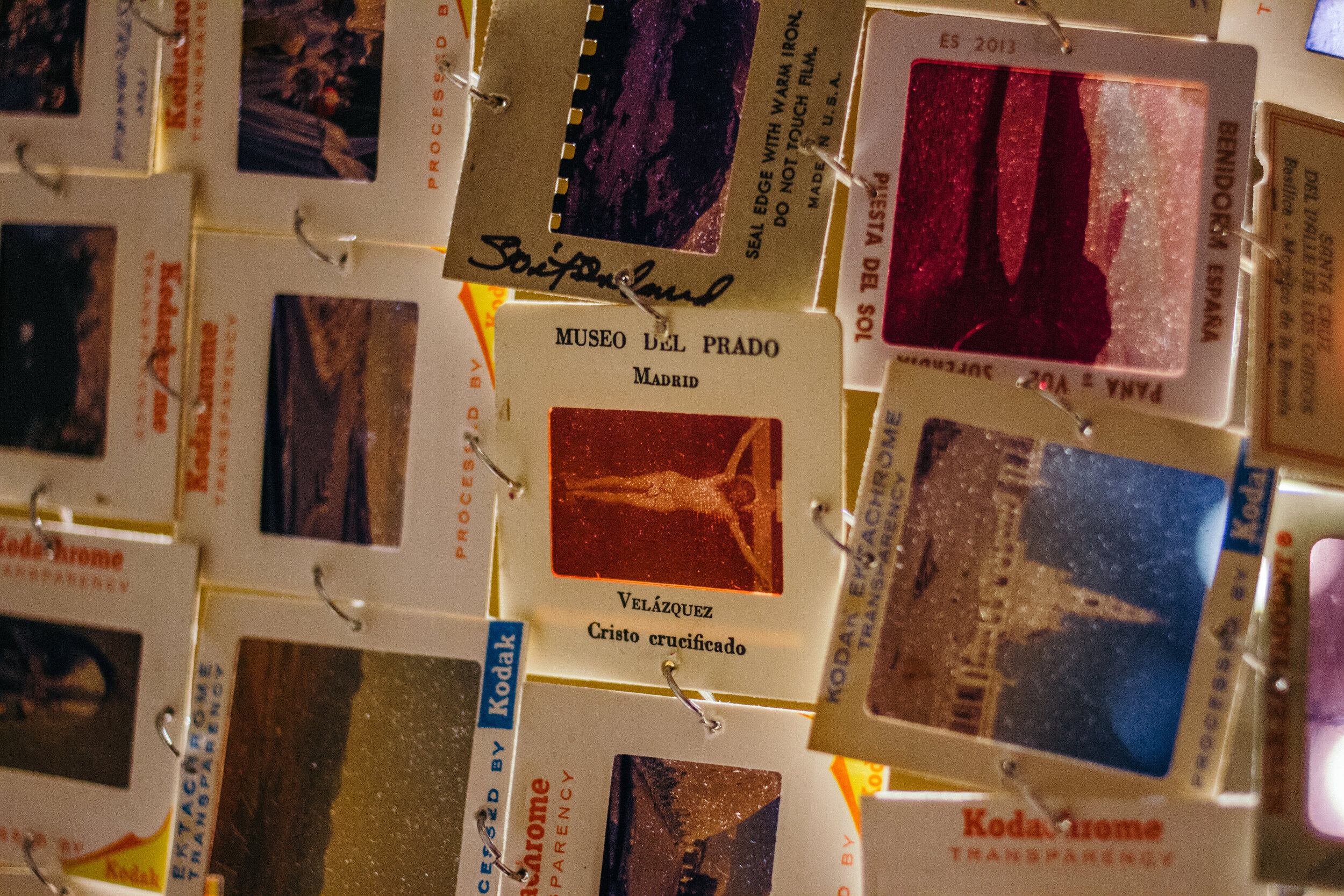
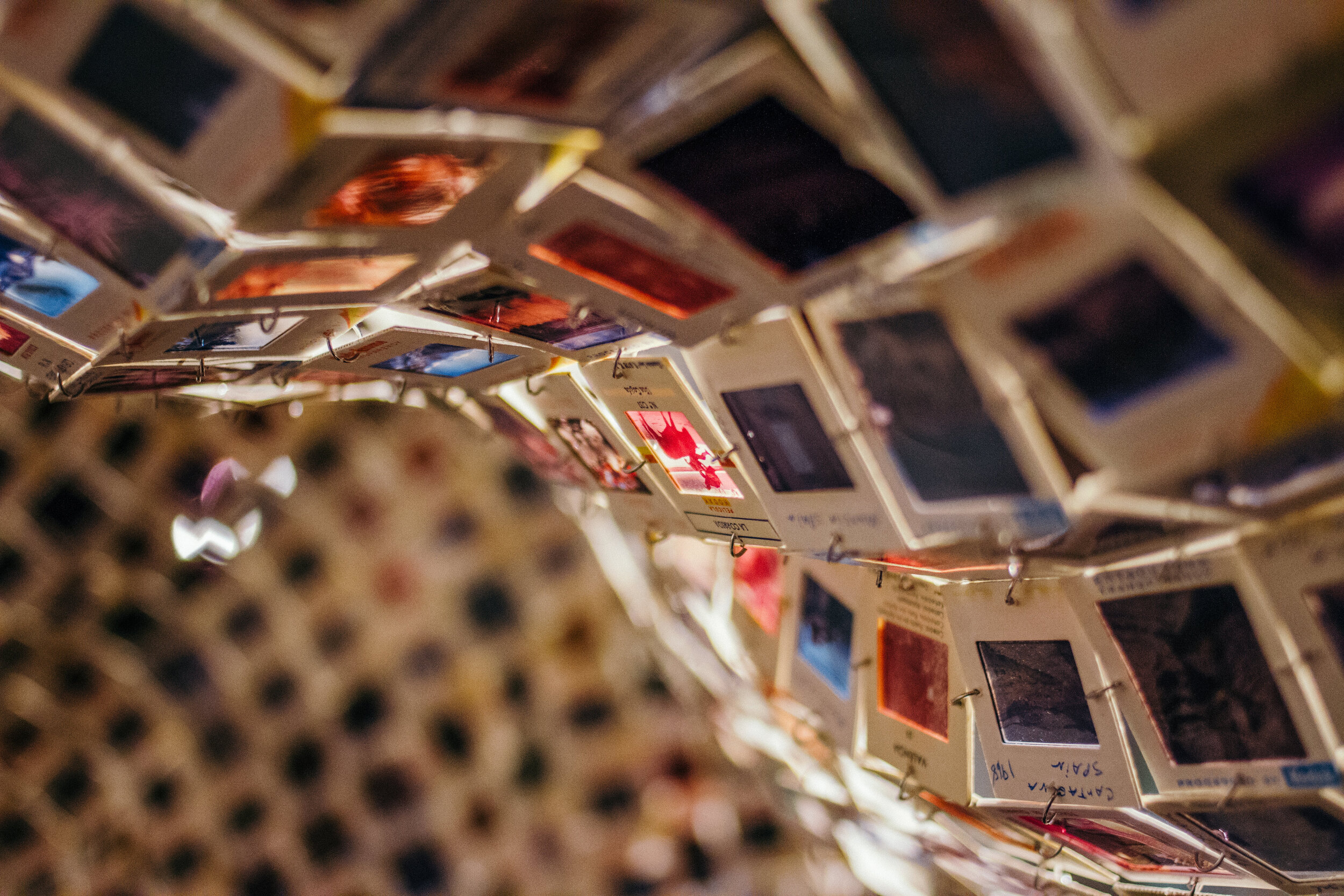
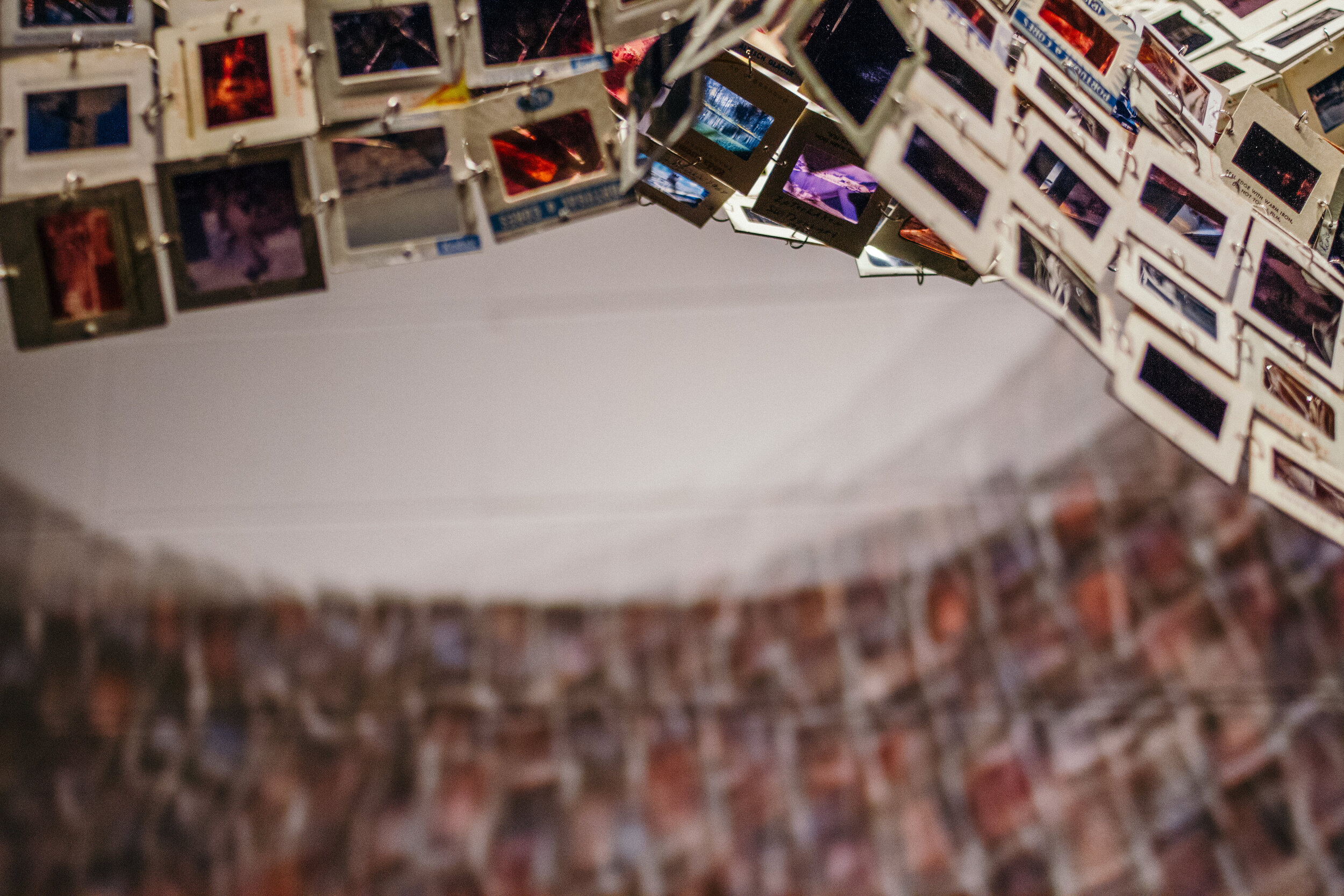
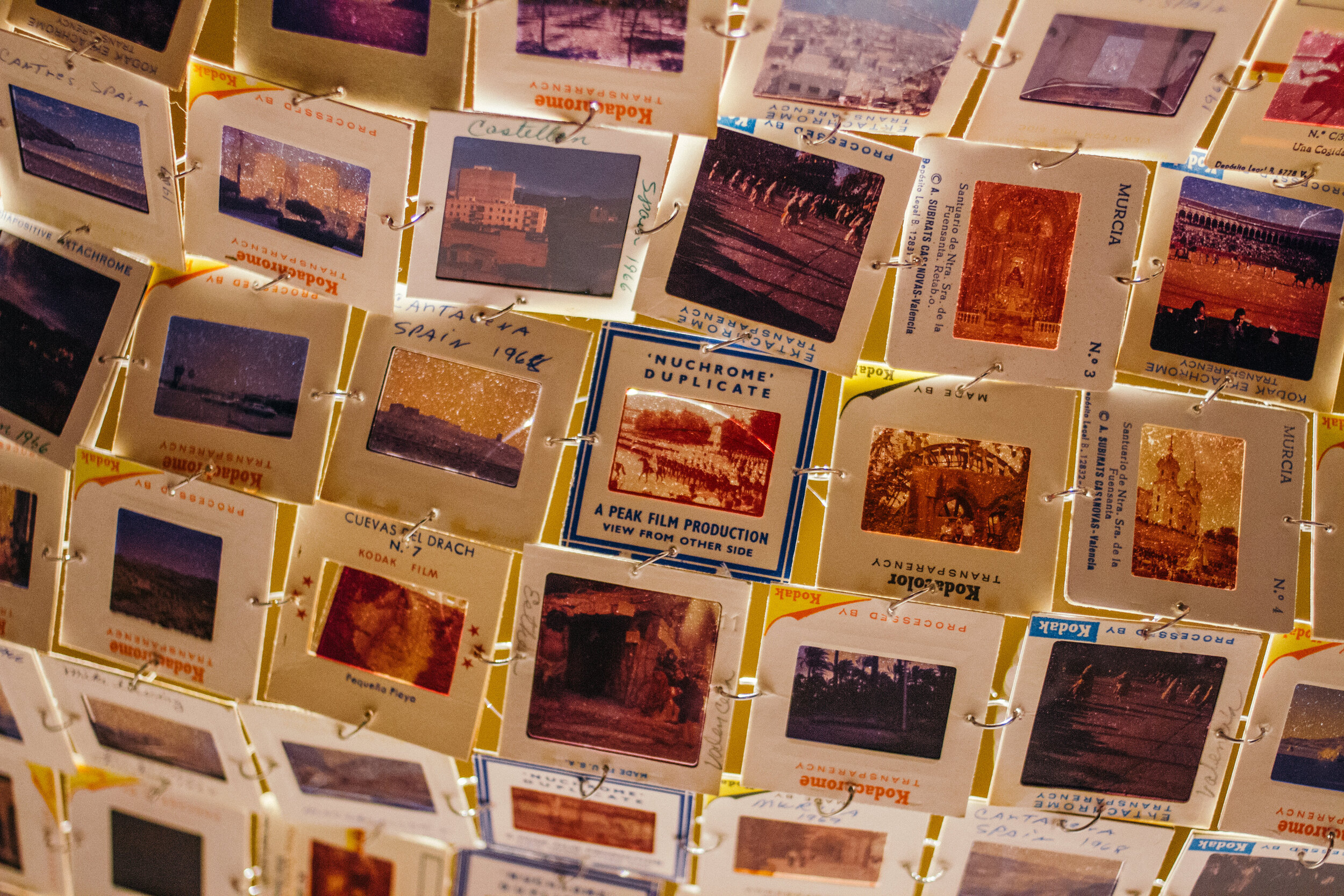
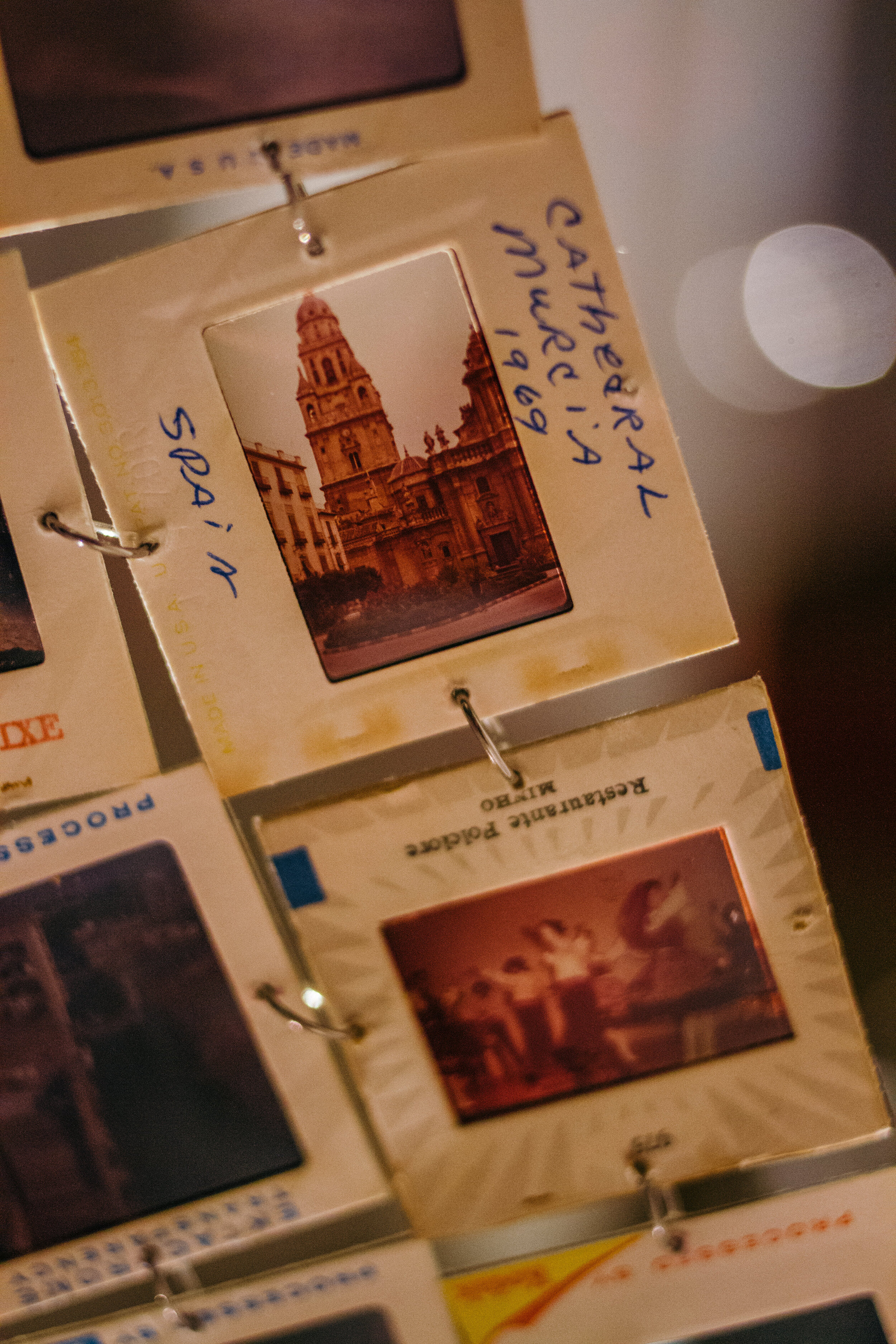
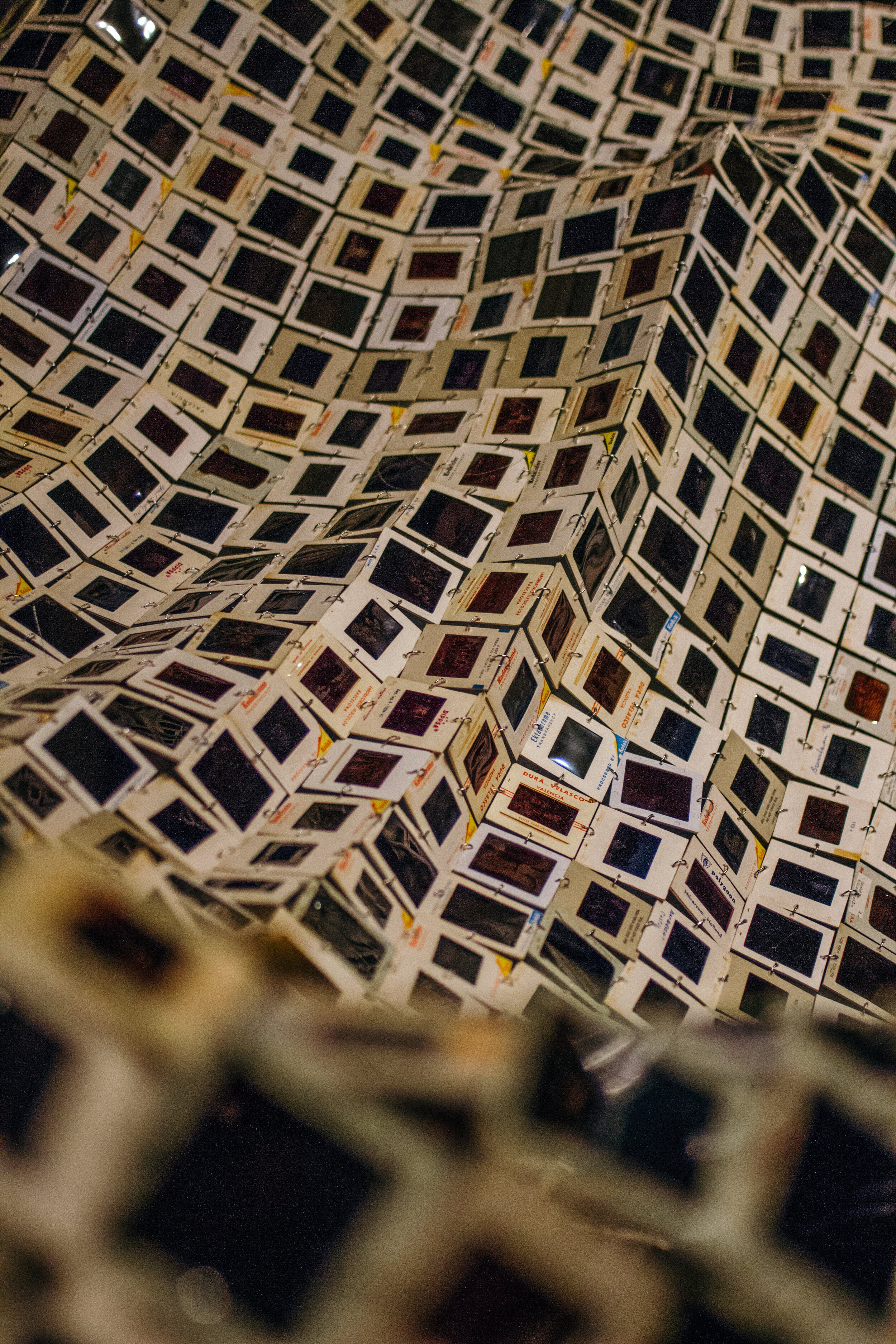
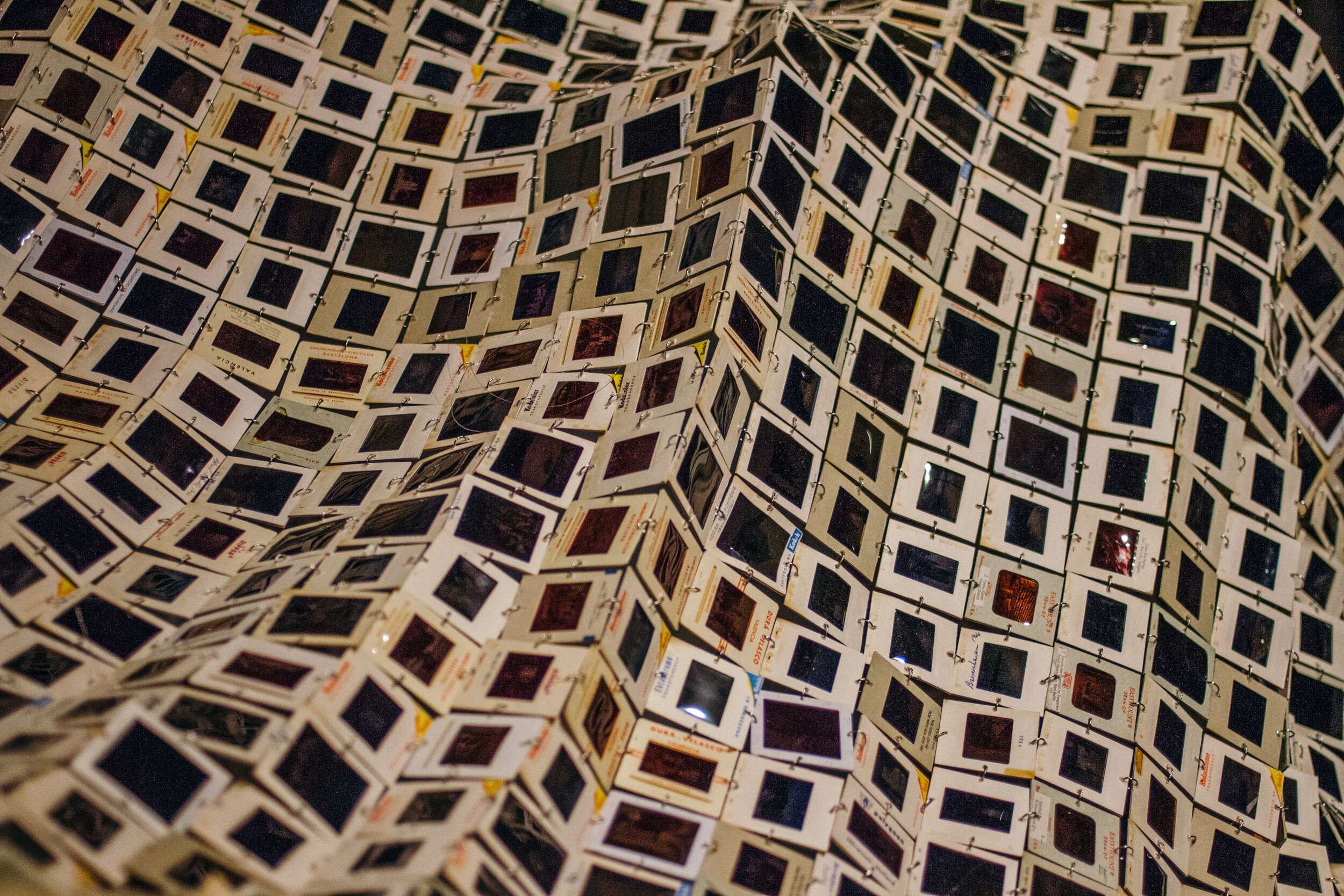
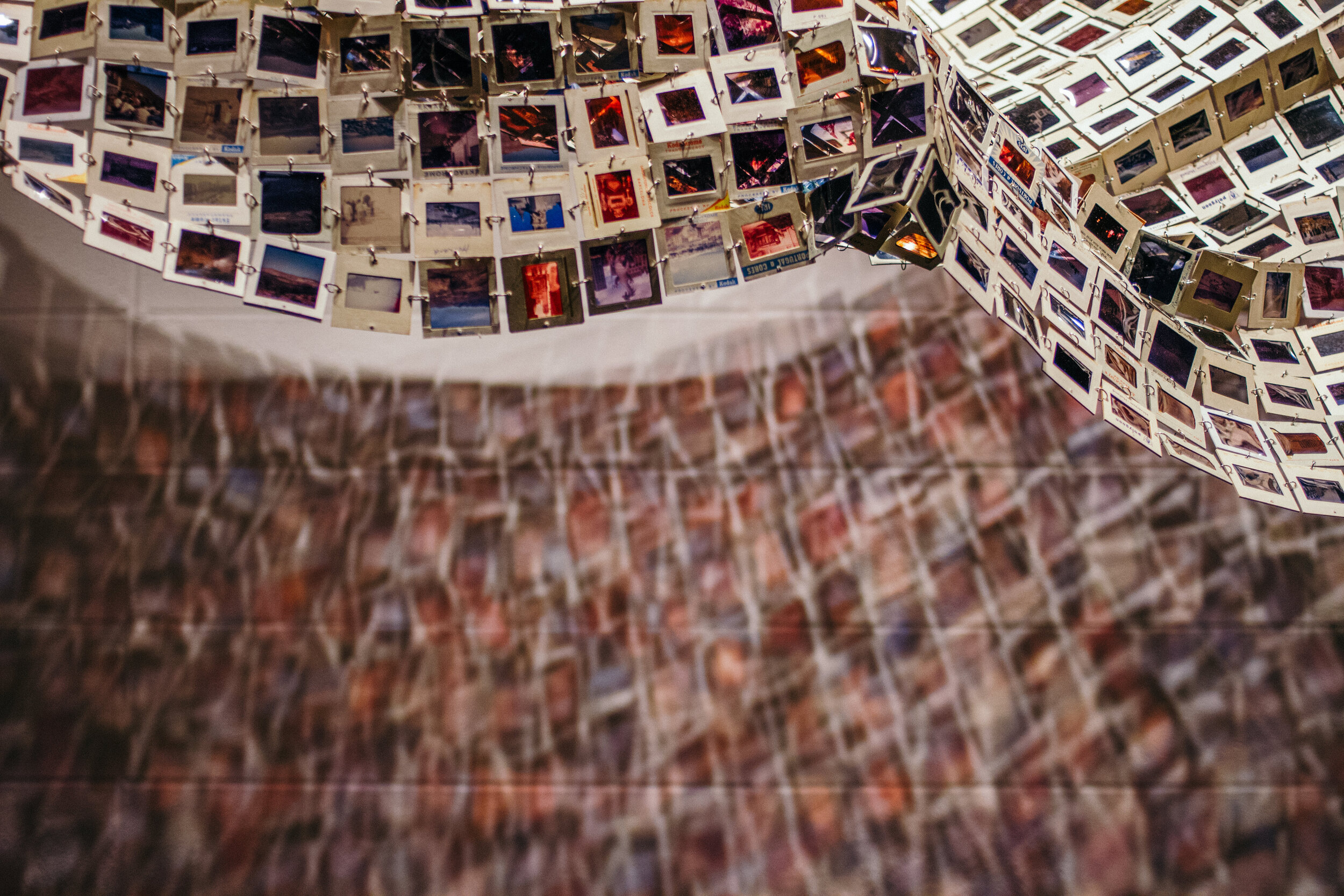
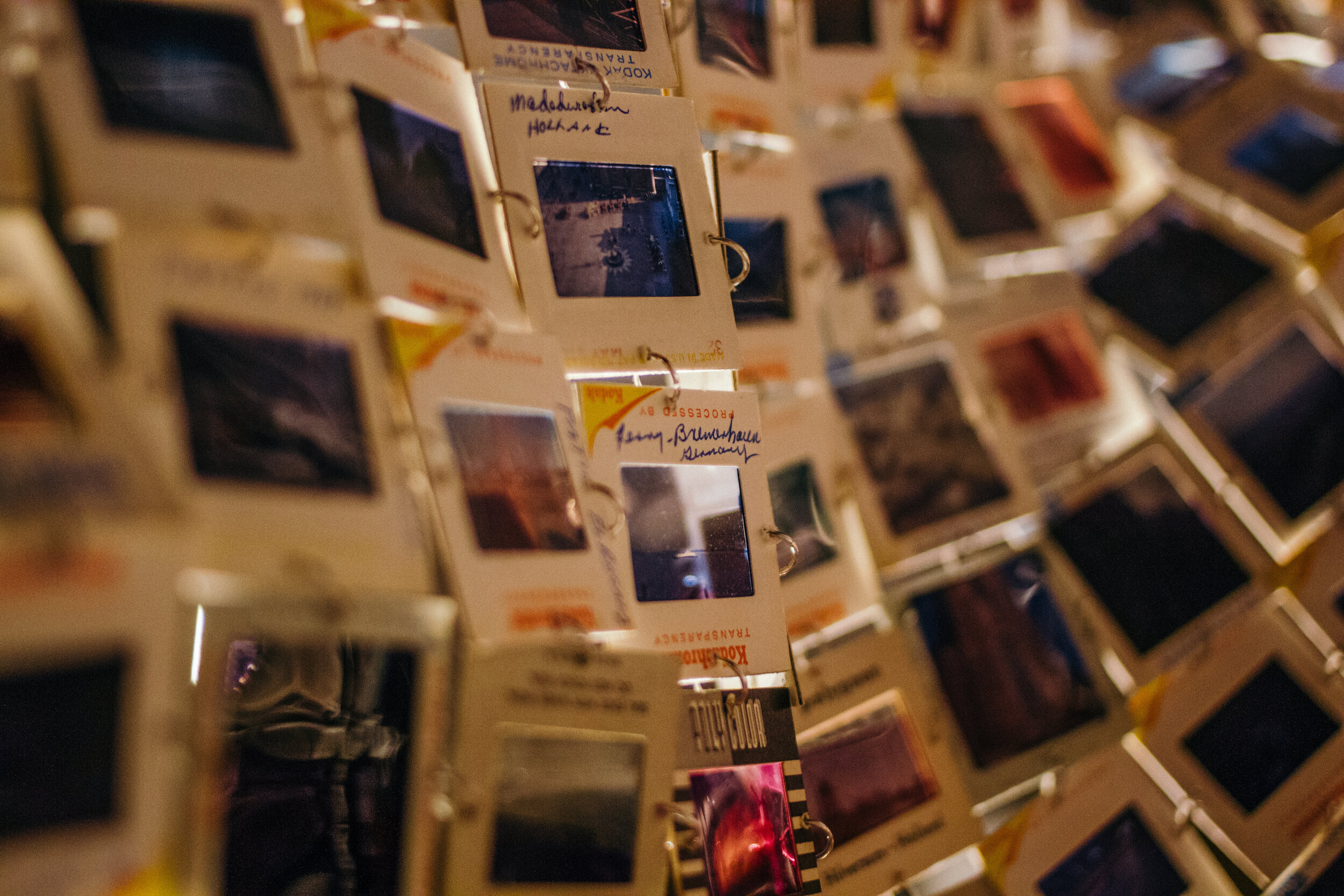
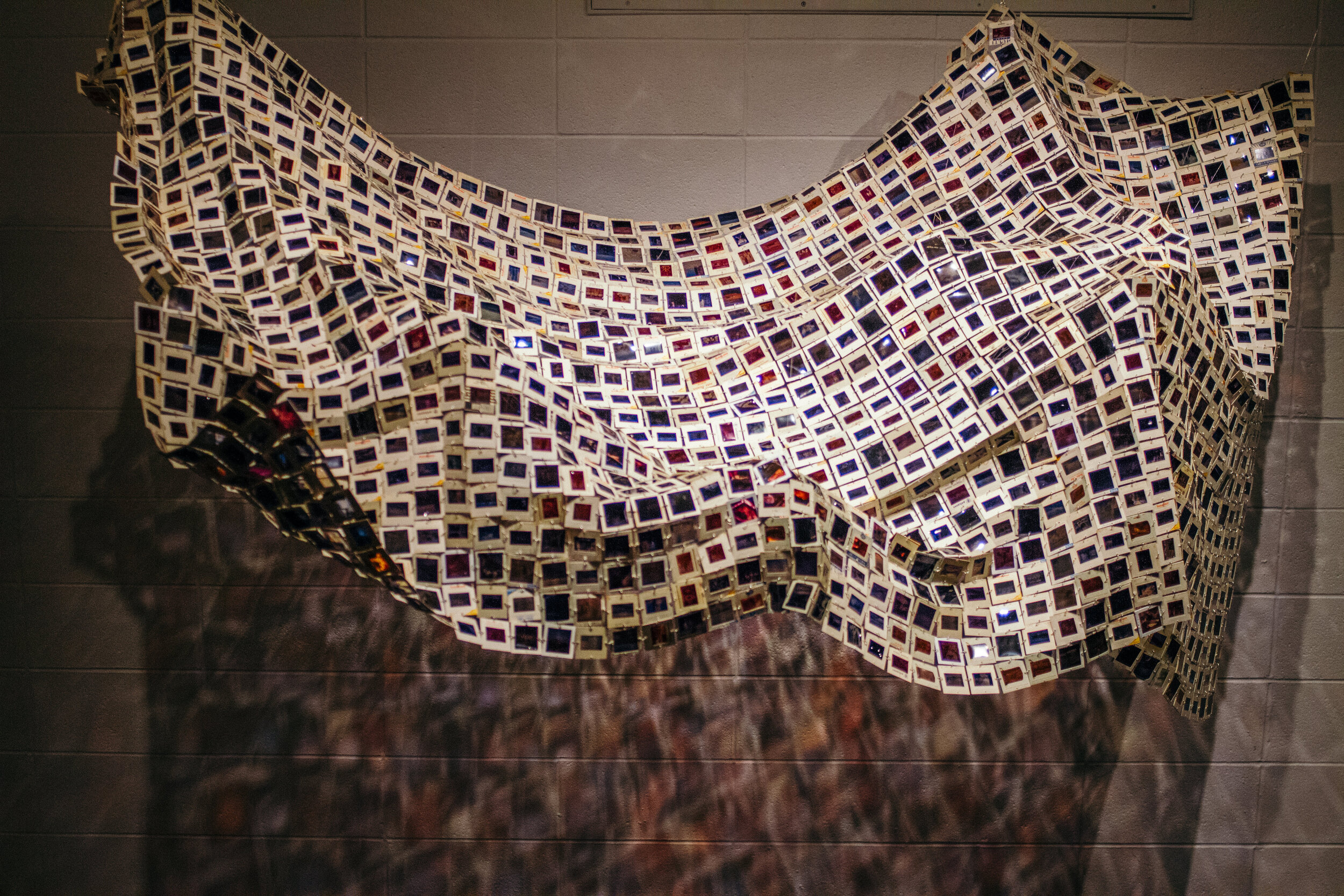

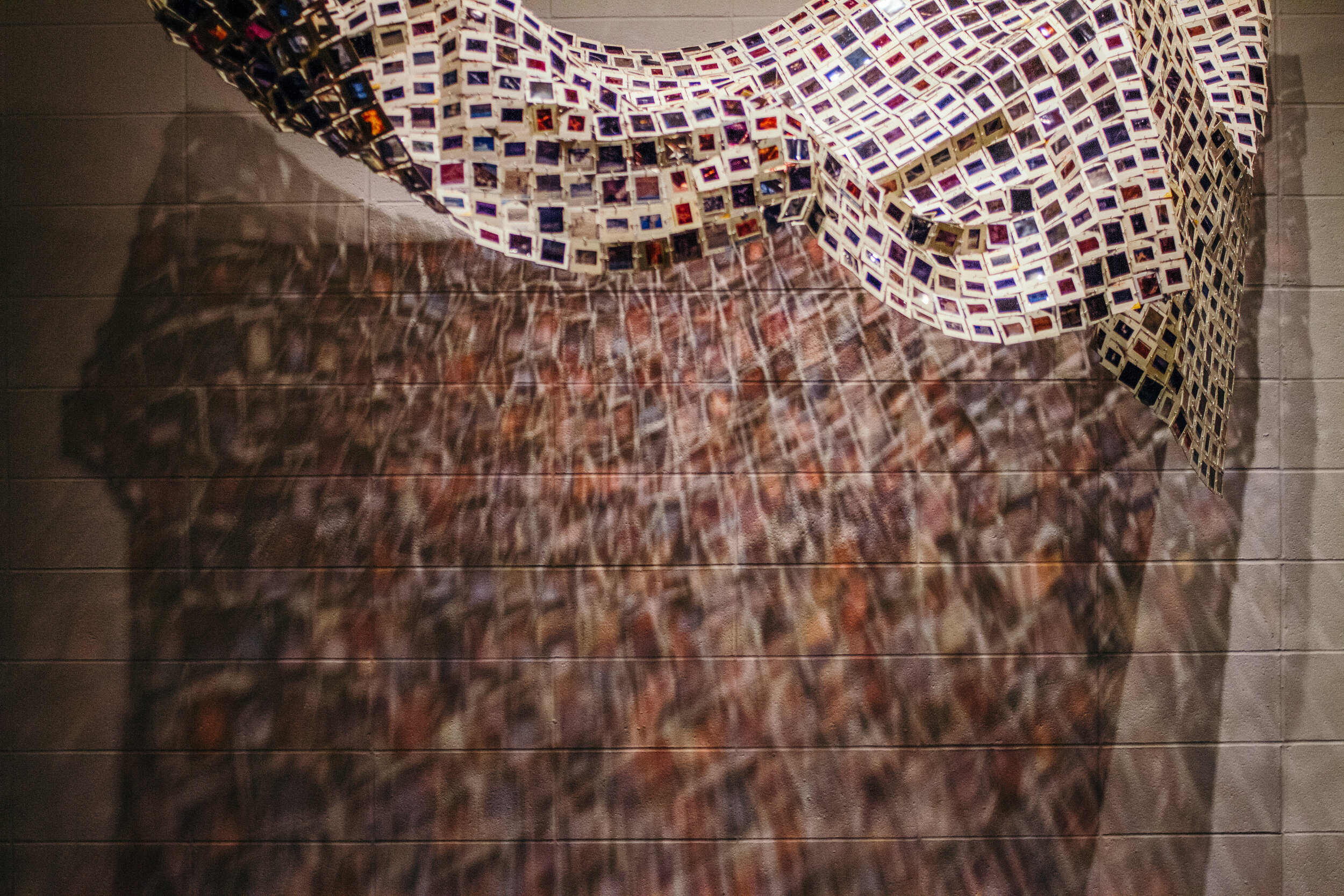

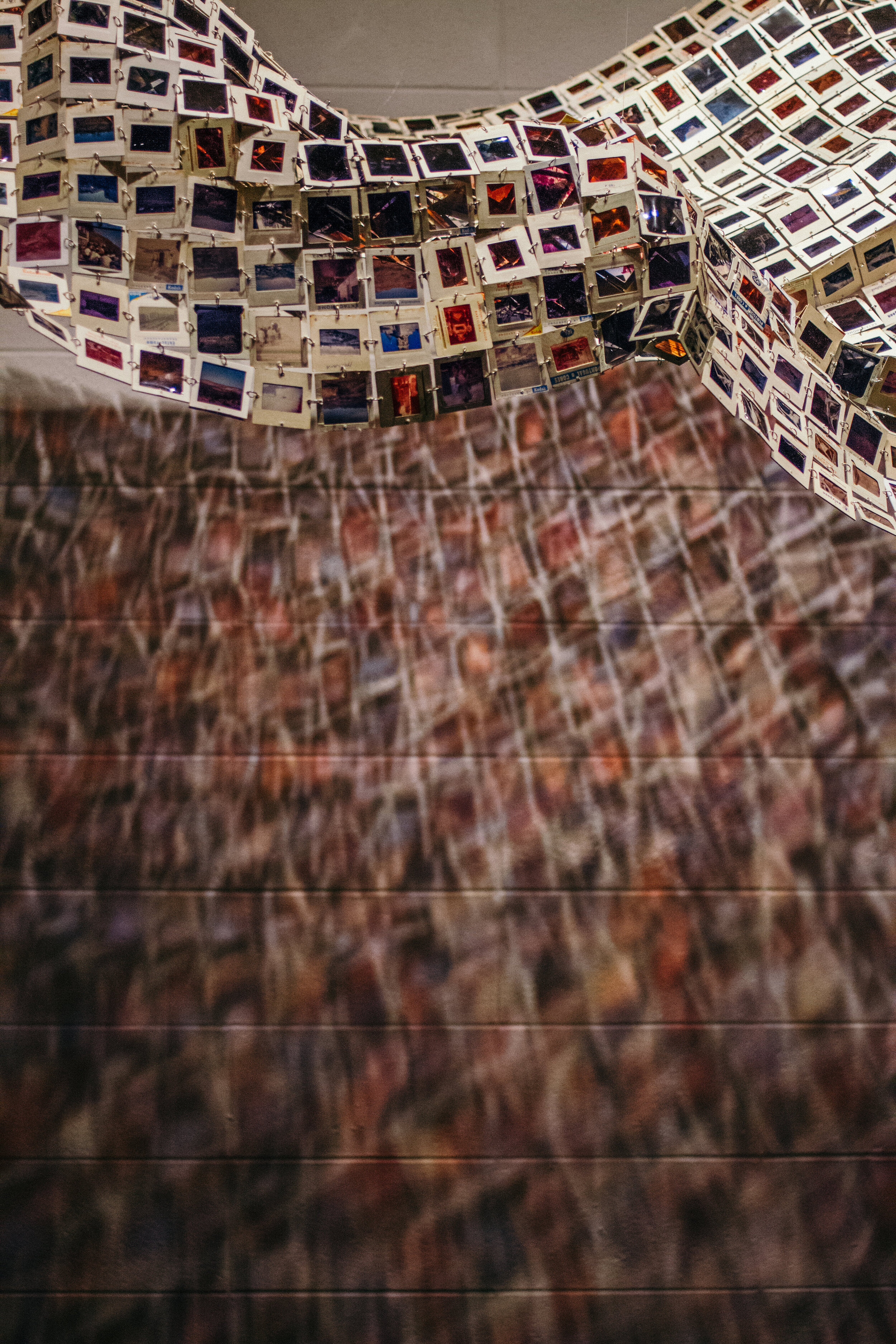


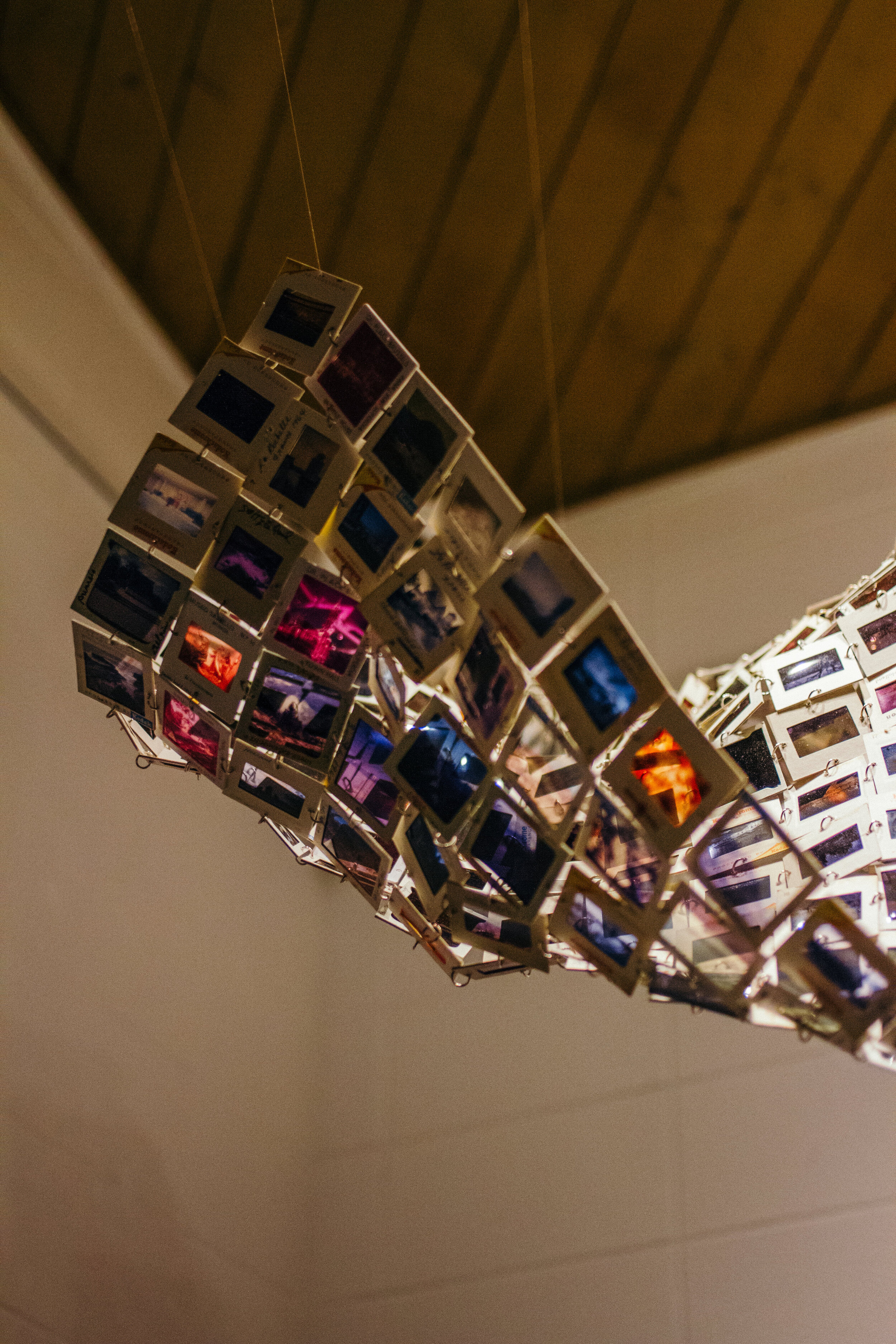
Projected
Collection of slides from a family’s world travels in the 1960s.
Family is a strange concept. We do not choose them, we are often in disagreement with them, sometimes we choose to alienate ourselves from them, and yet strangely we continue to be connected. So often, it is the shadow of something that we remember the most, those moments that briefly happen and then project themselves onto the rest of our lives. The piece undulates, bringing to life photos on the beach, of bleary-eyed Christmas morning, and souvenir photos of bull fights. Each slide is carefully labeled, a memory that you are invited into, made familiar with, and yet do not share. The mere idea of bringing family together can threaten catastrophe, but when viewed through the lens of an outsider it appears as a glorious collection of memories full of laughter and wonder. Perhaps, even in the wake of chaos or difficulty, there is delight to be found that beautifully projects onto us when we recall those moments that passed too quickly.
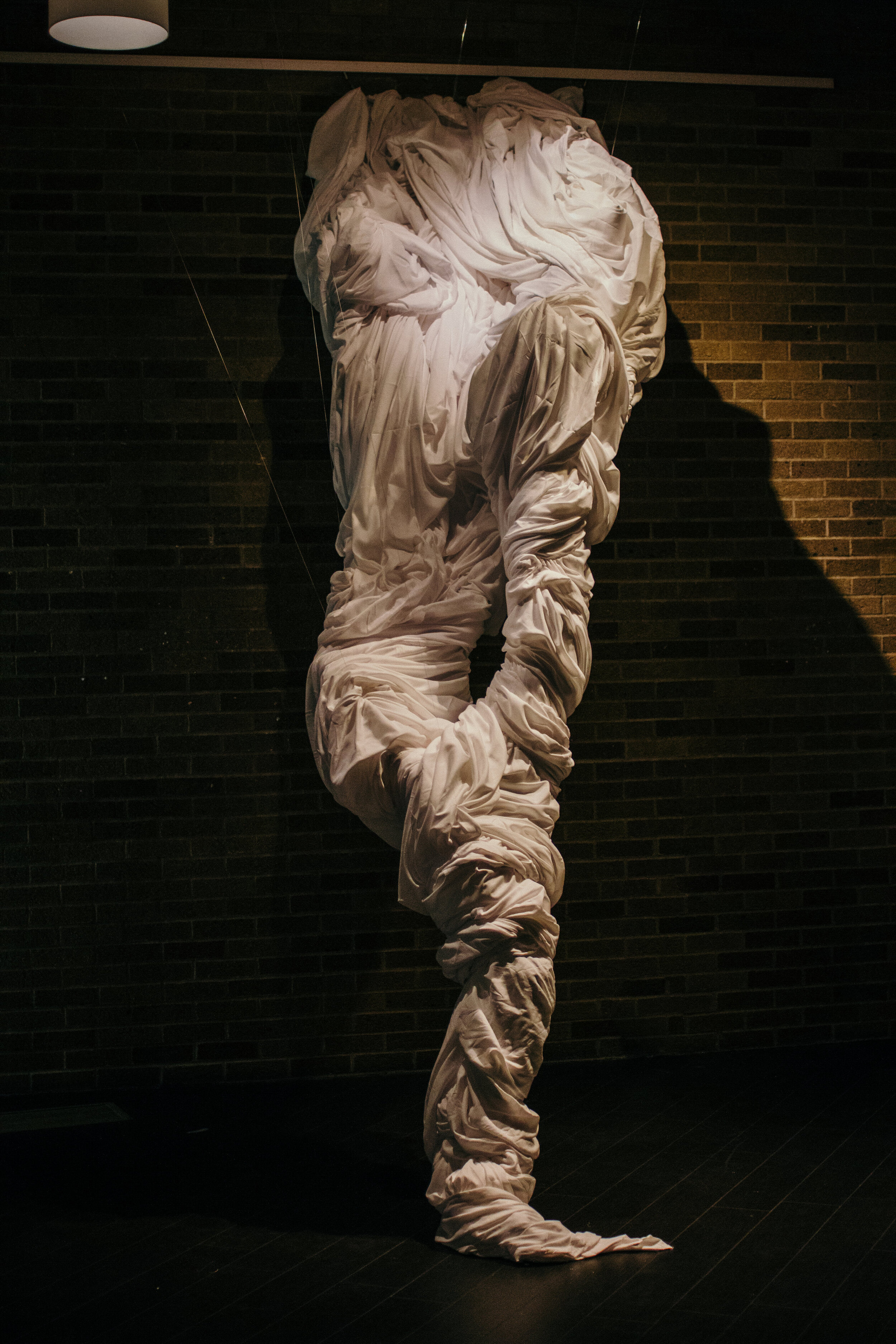
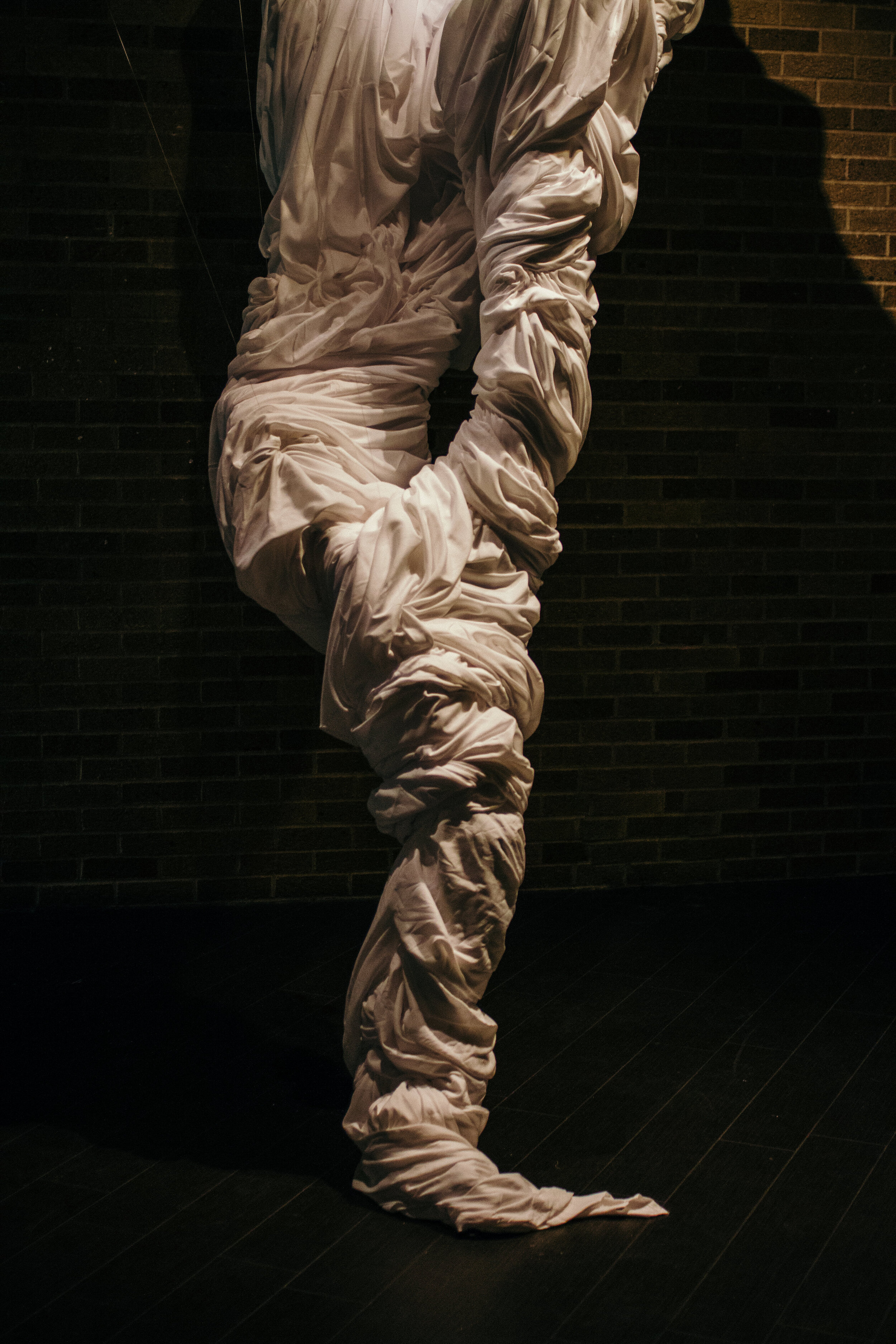
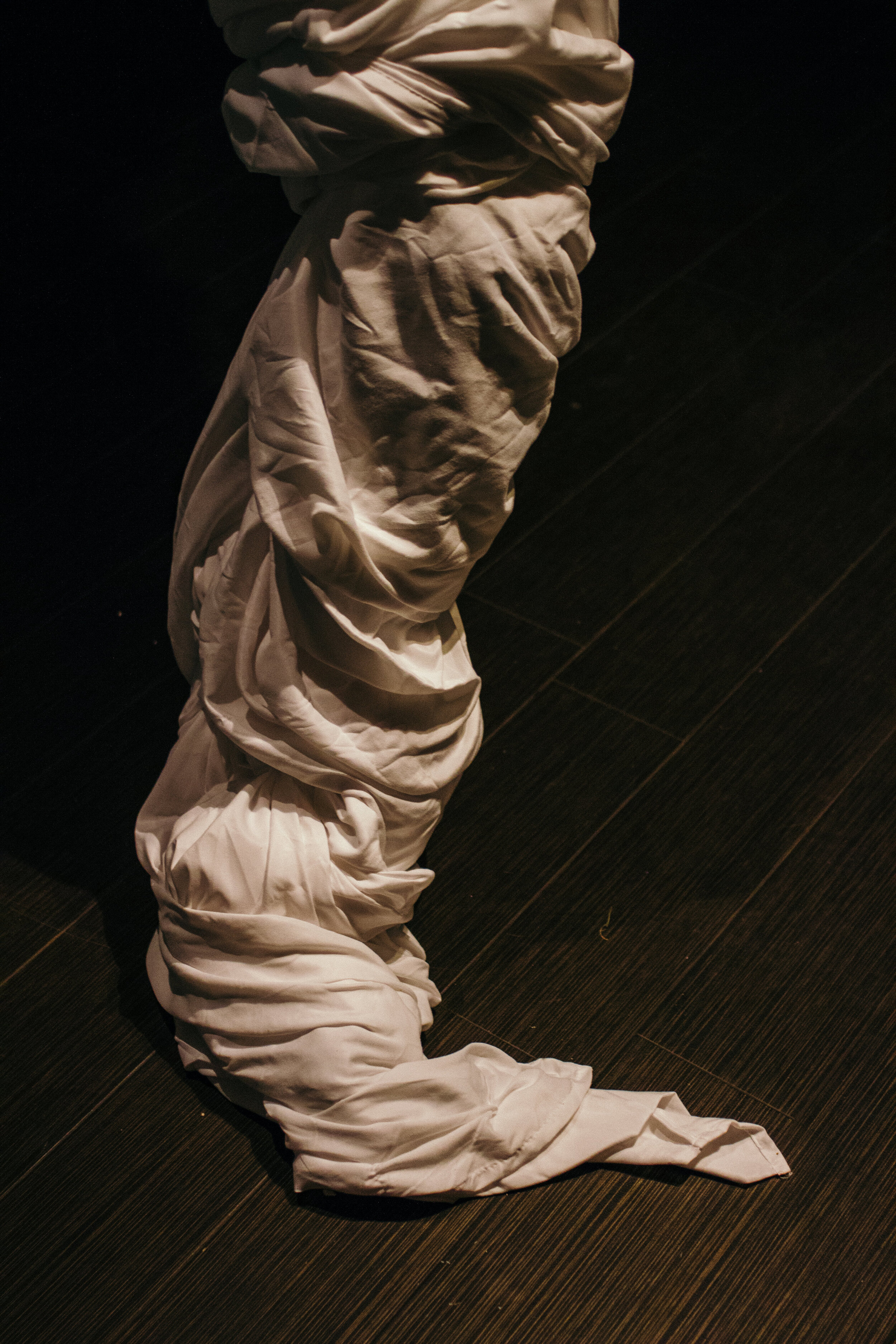

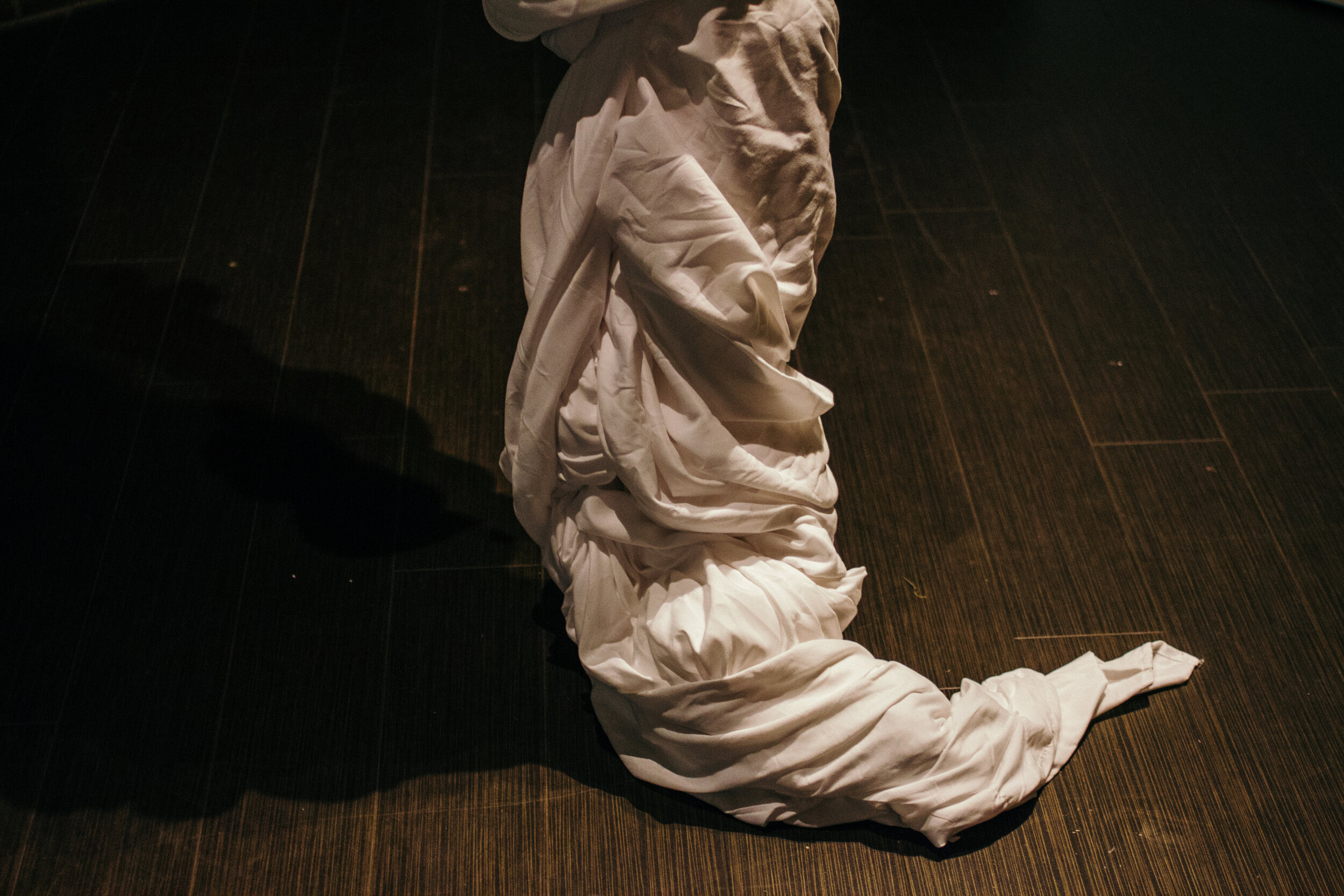
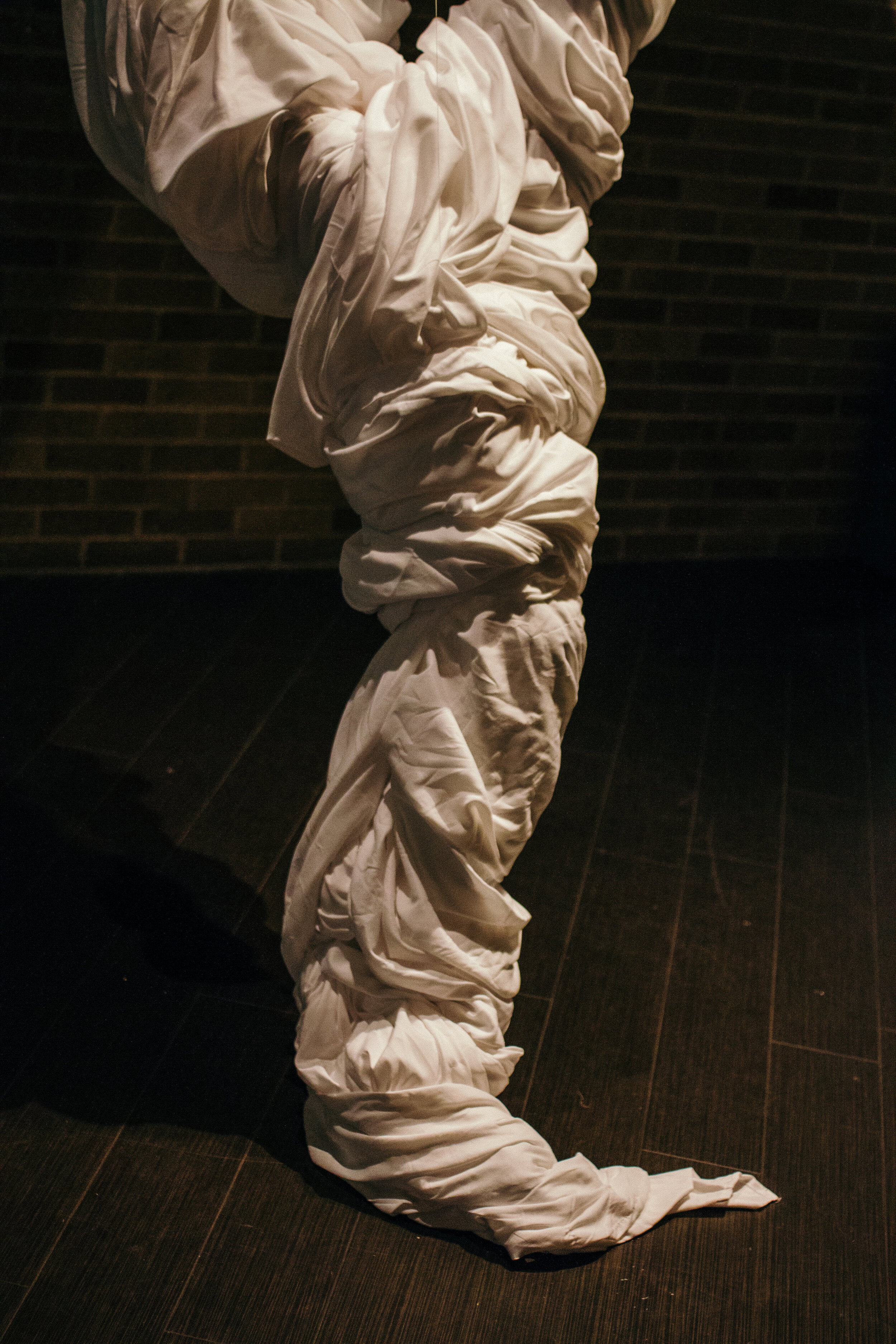
Some Days Aren’t Yours At All
Bed Sheets
The laundry piles up and all you can do is not laundry. A tornado comes without warning, it rips through the earth and the life of those in its path. And yet, what happens when the tornado is not only expected but a part of the monotony of daily life— suspended and whirling, ever impending, never finished.
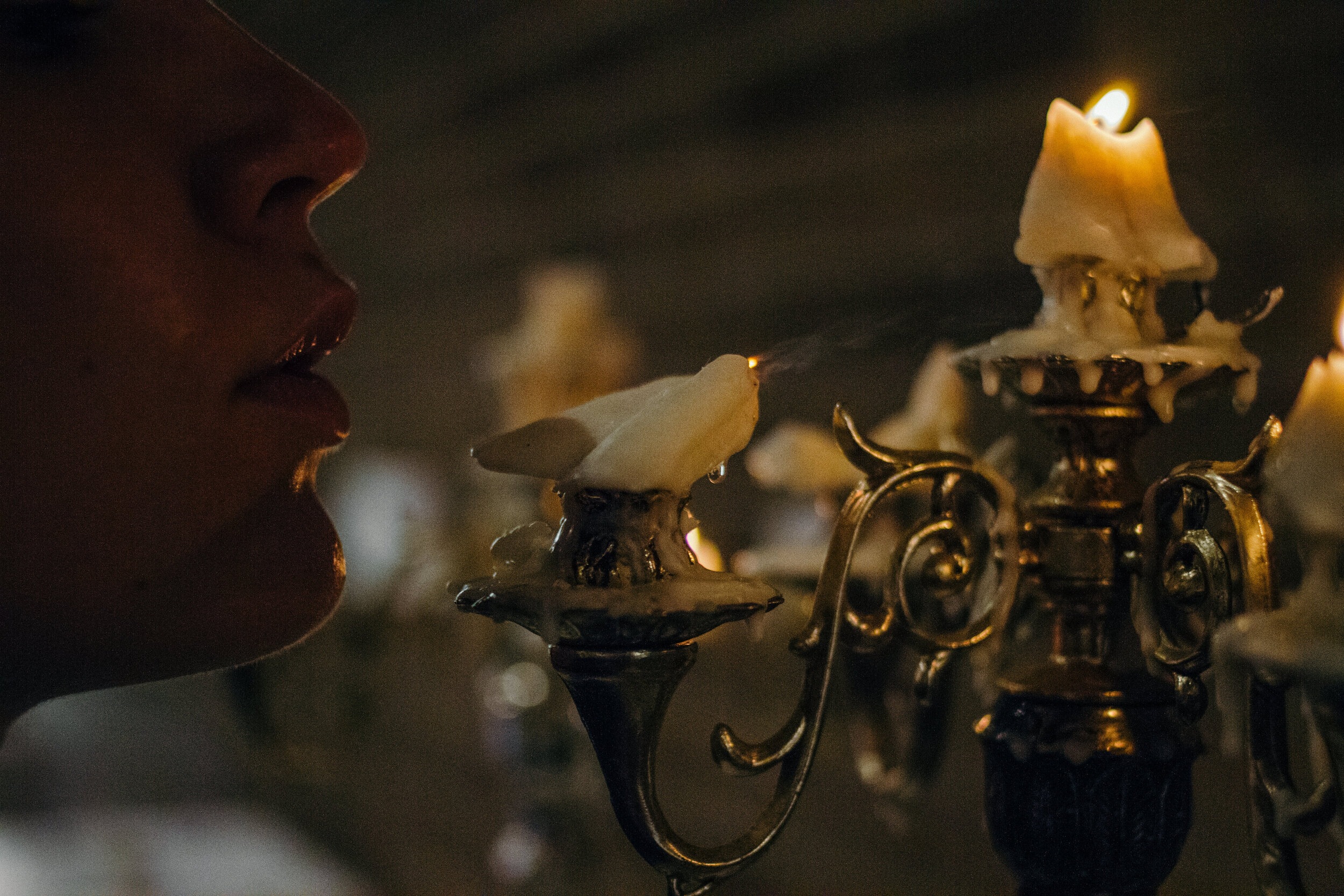
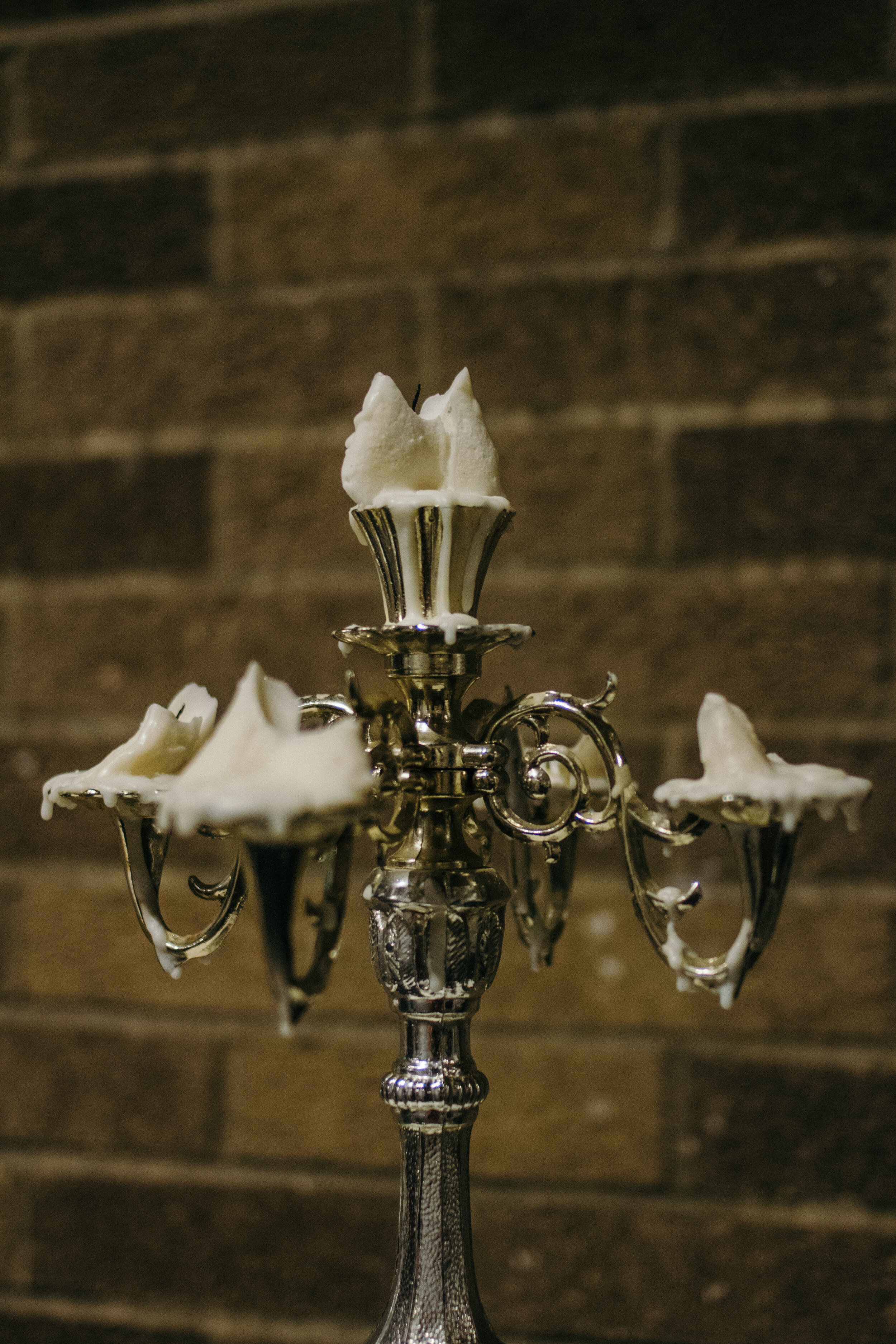
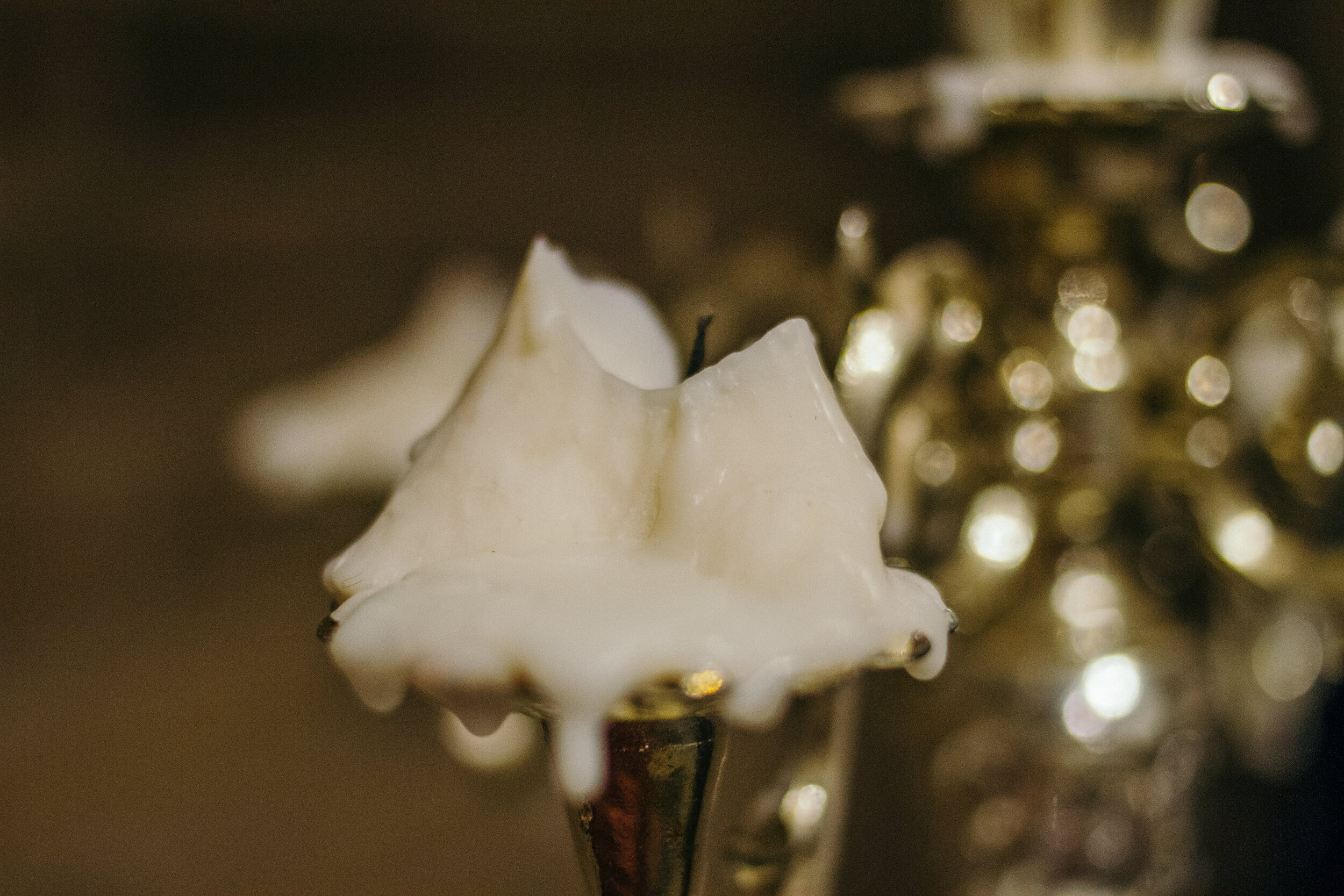

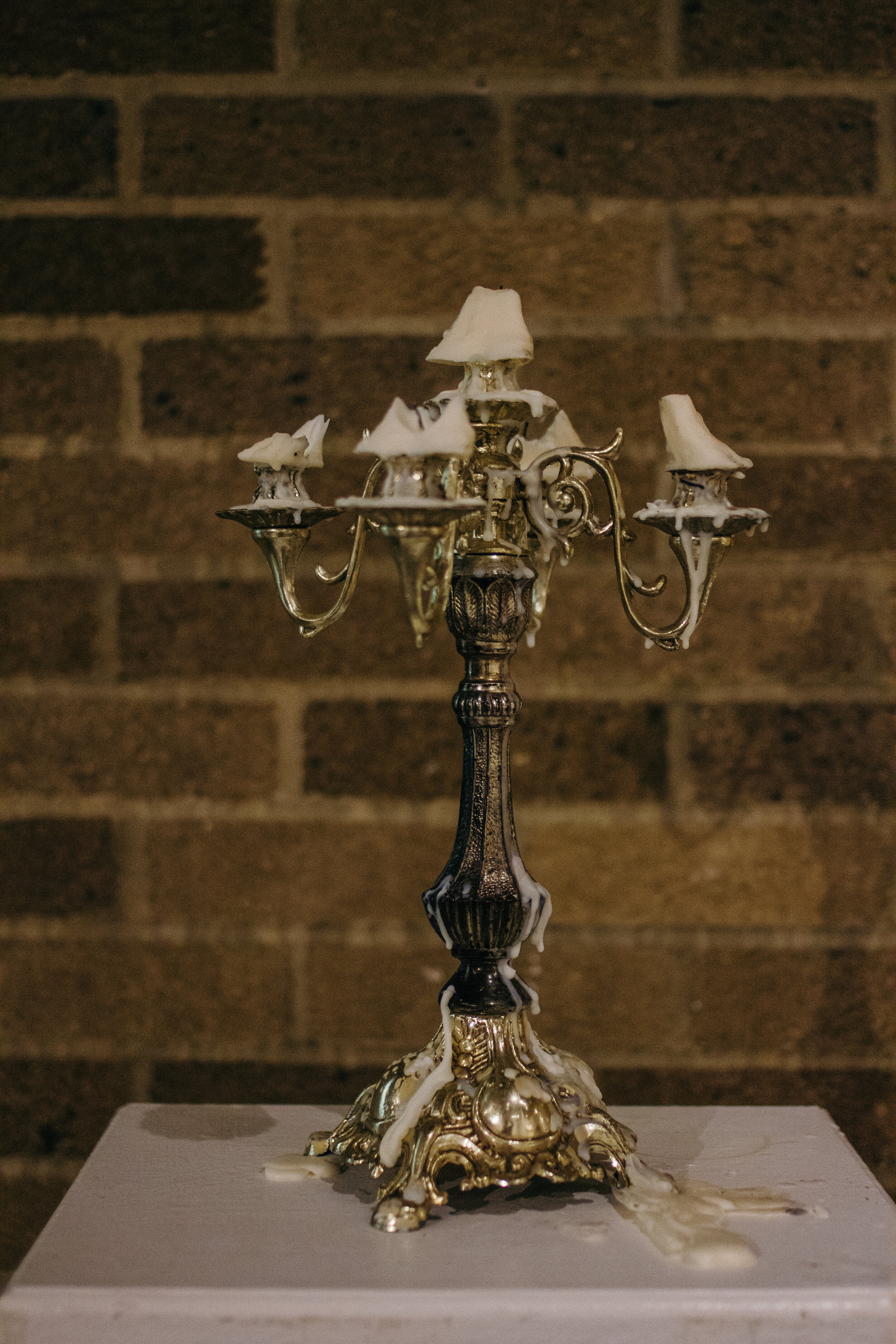
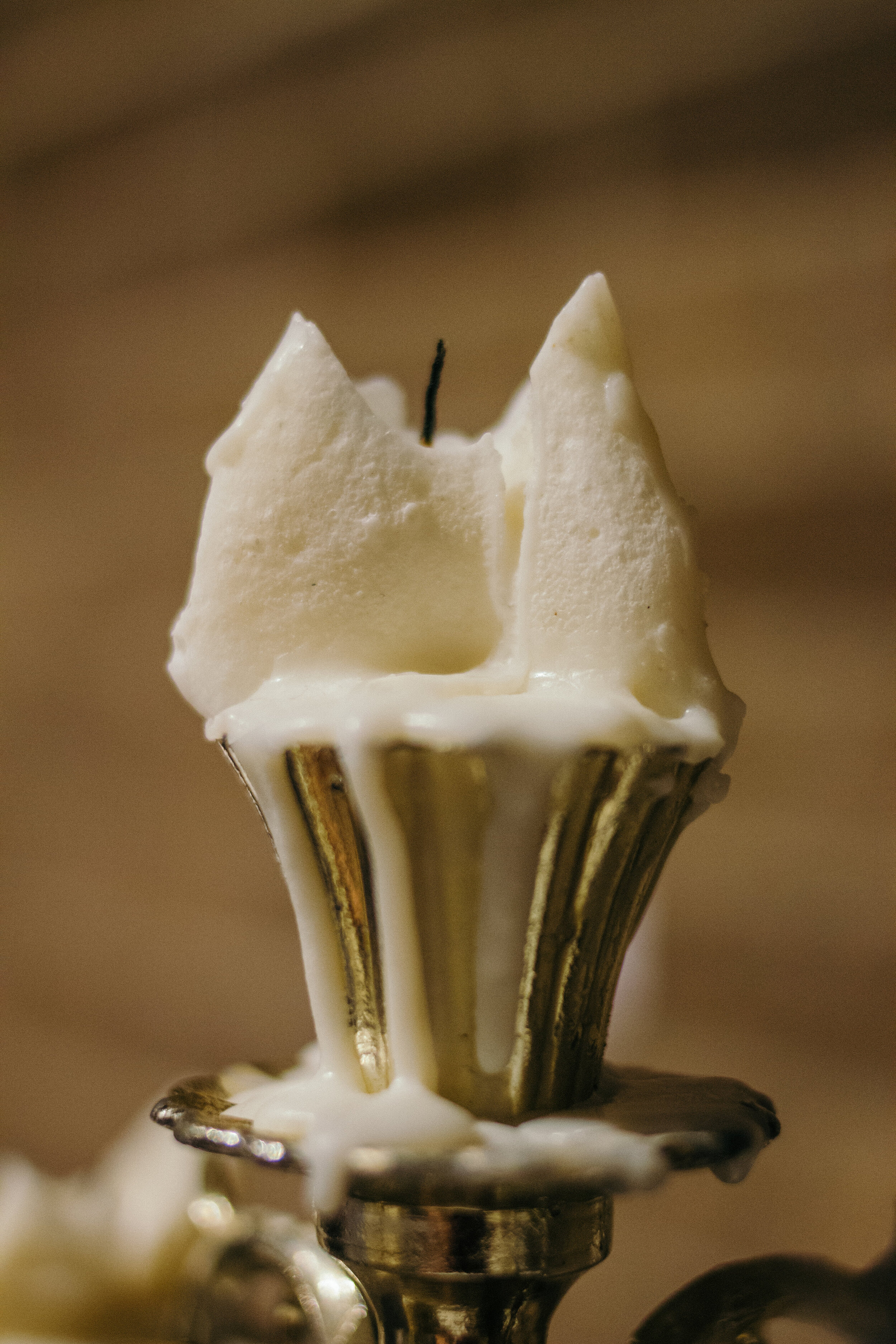
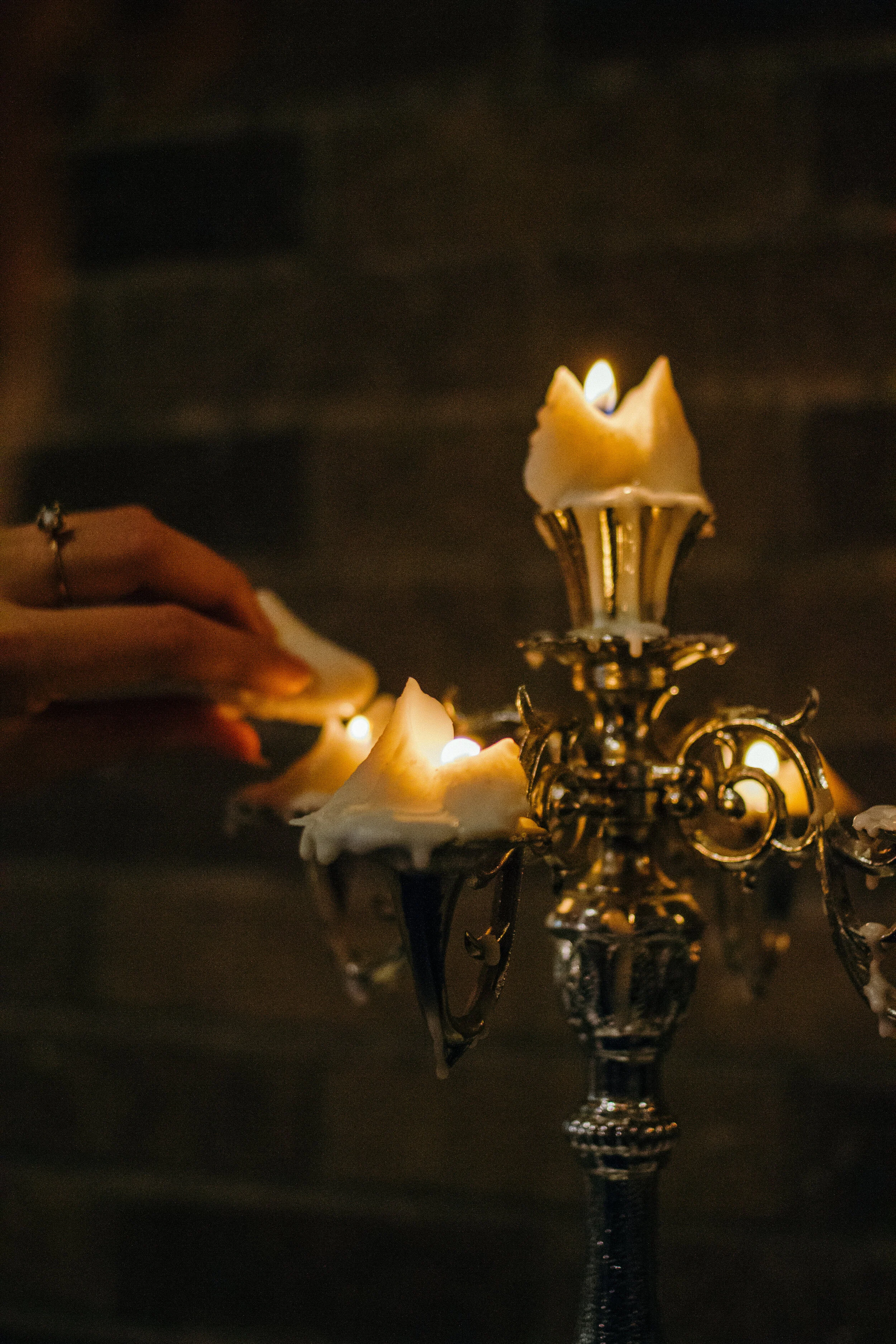
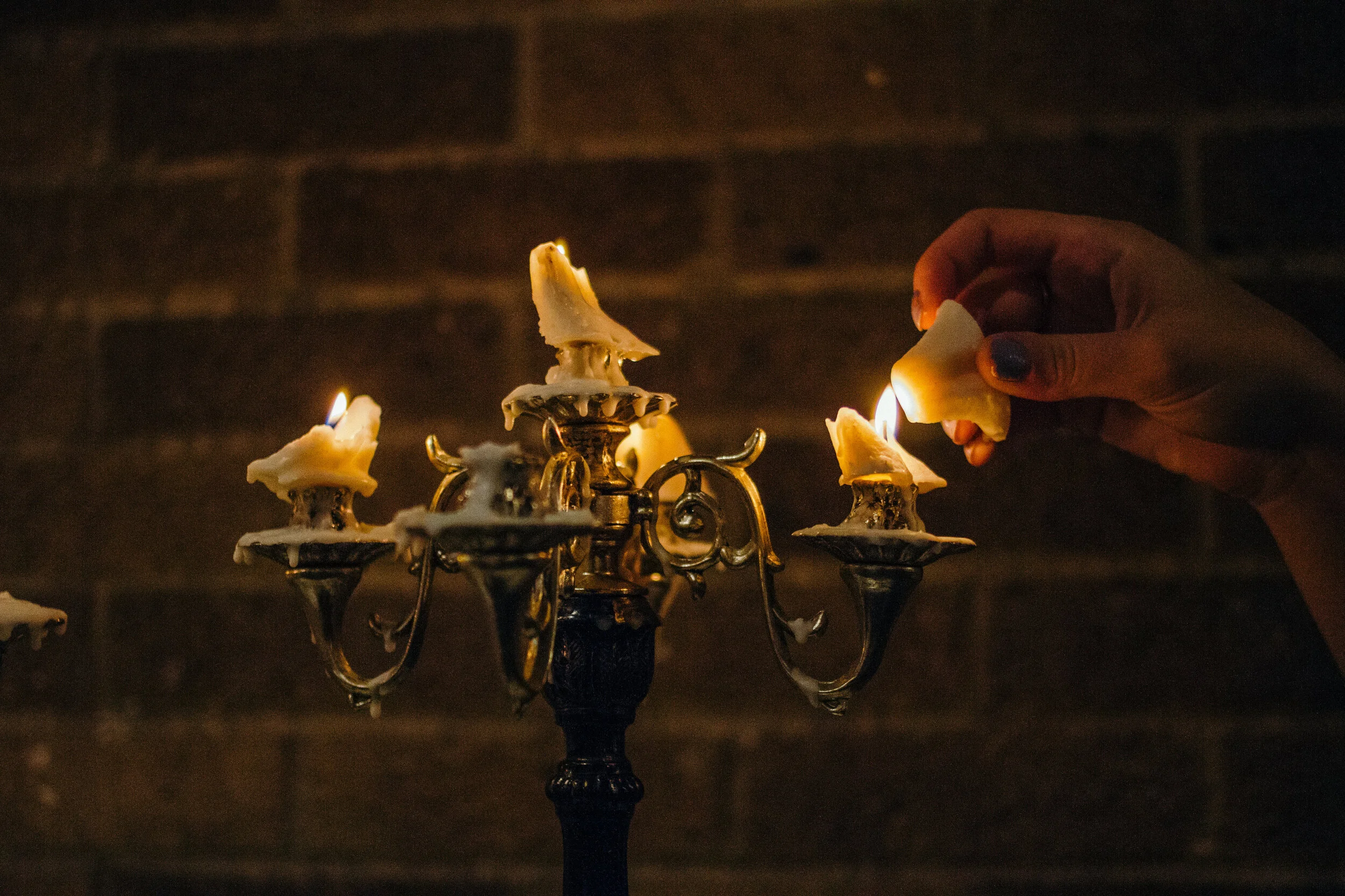
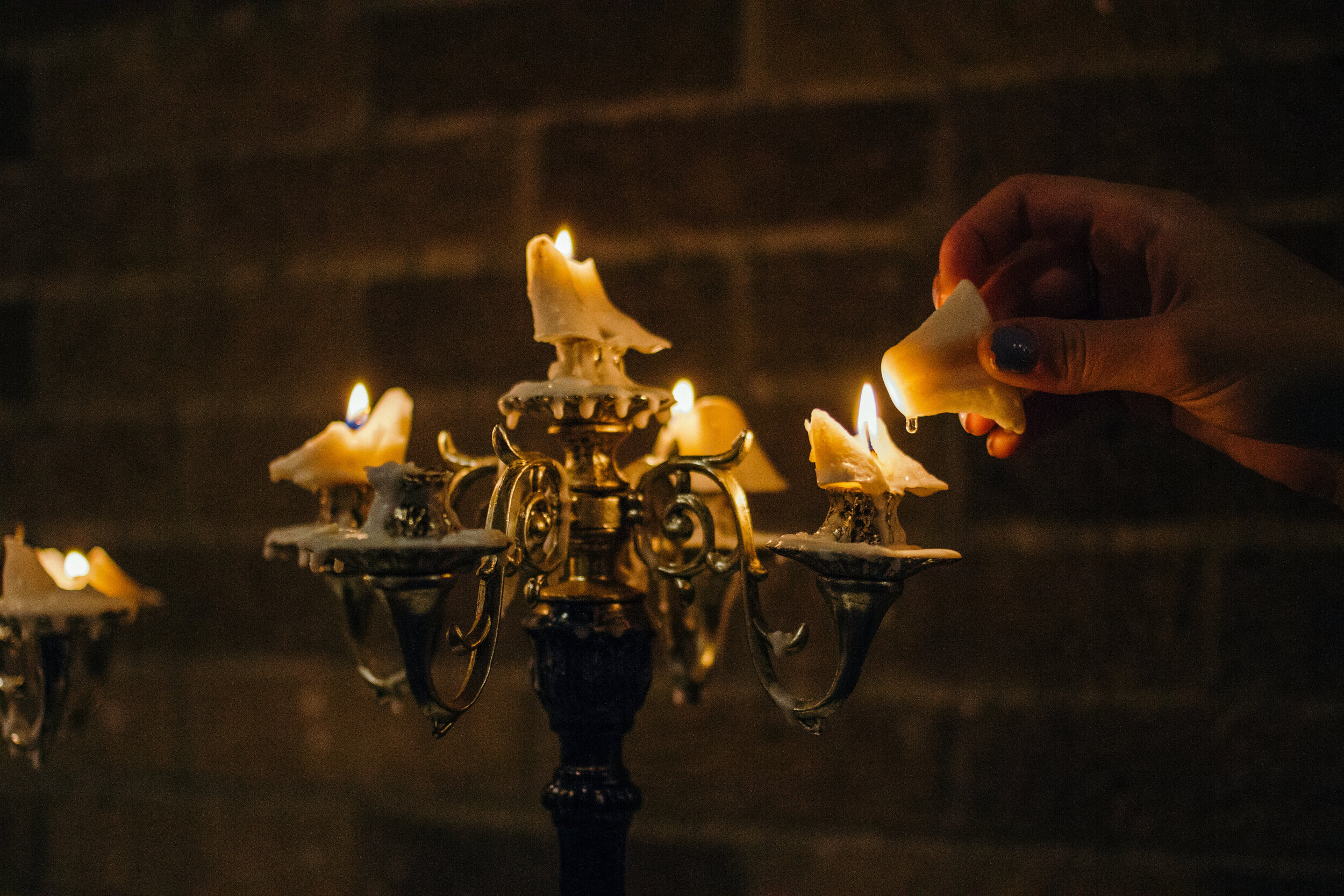
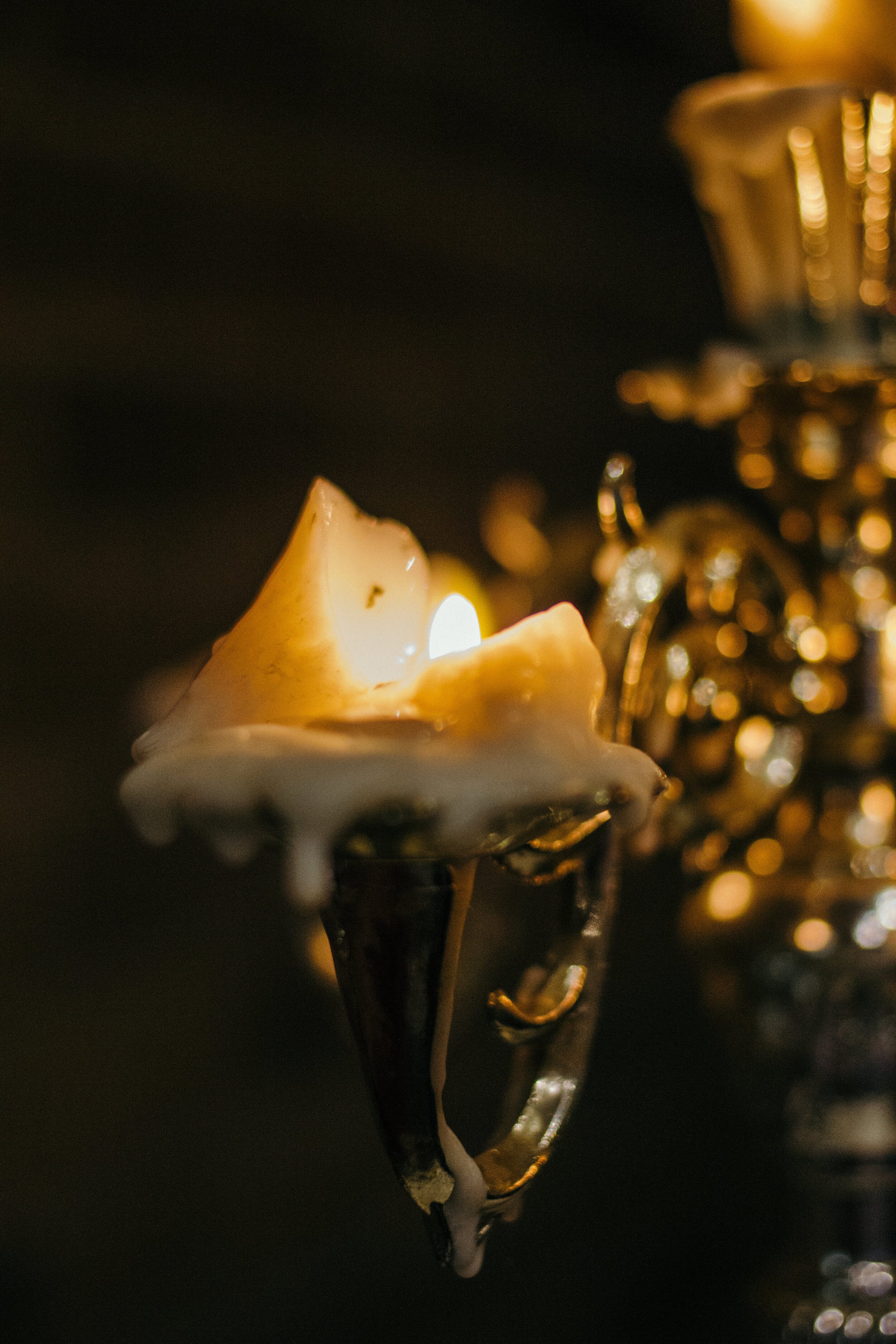
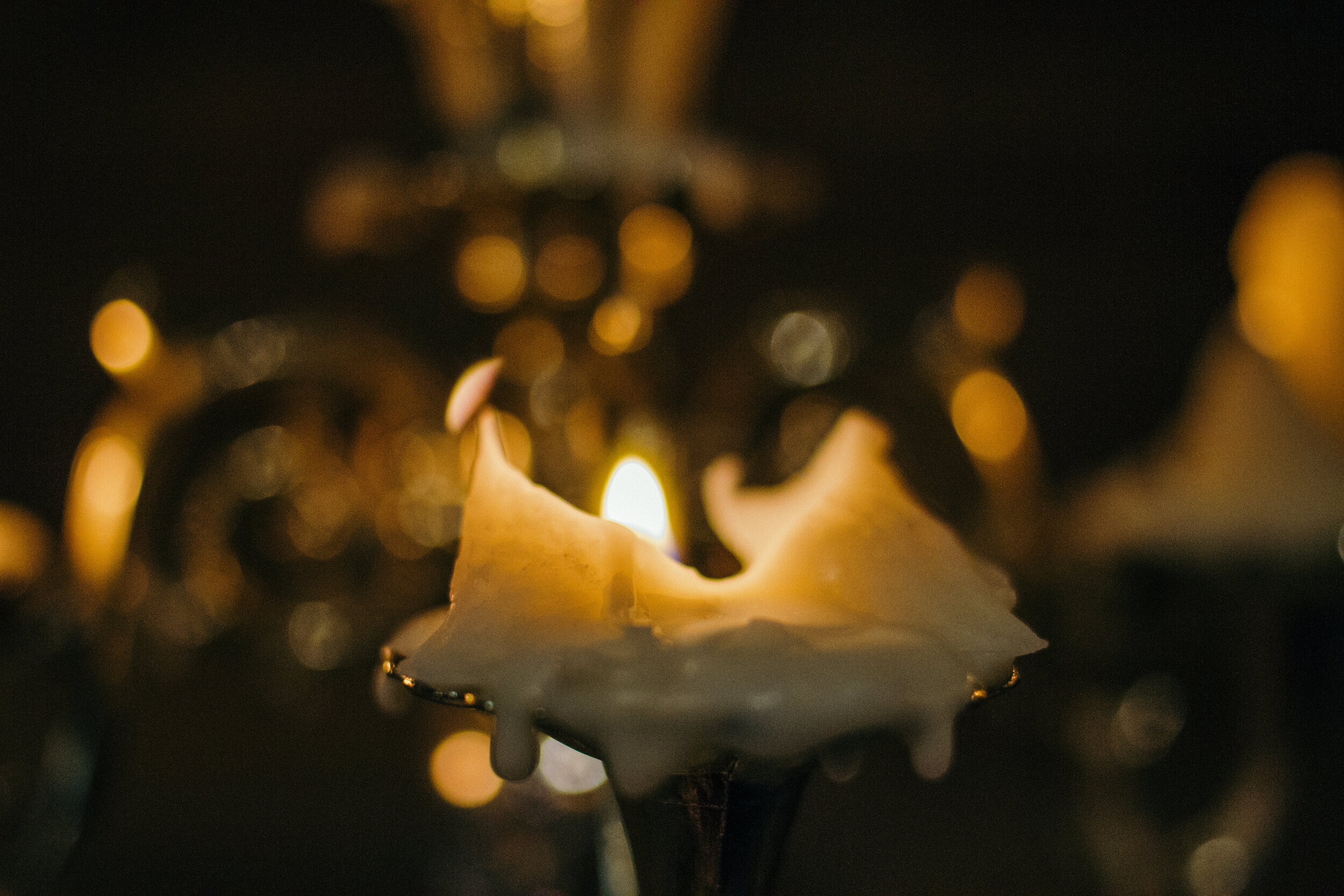
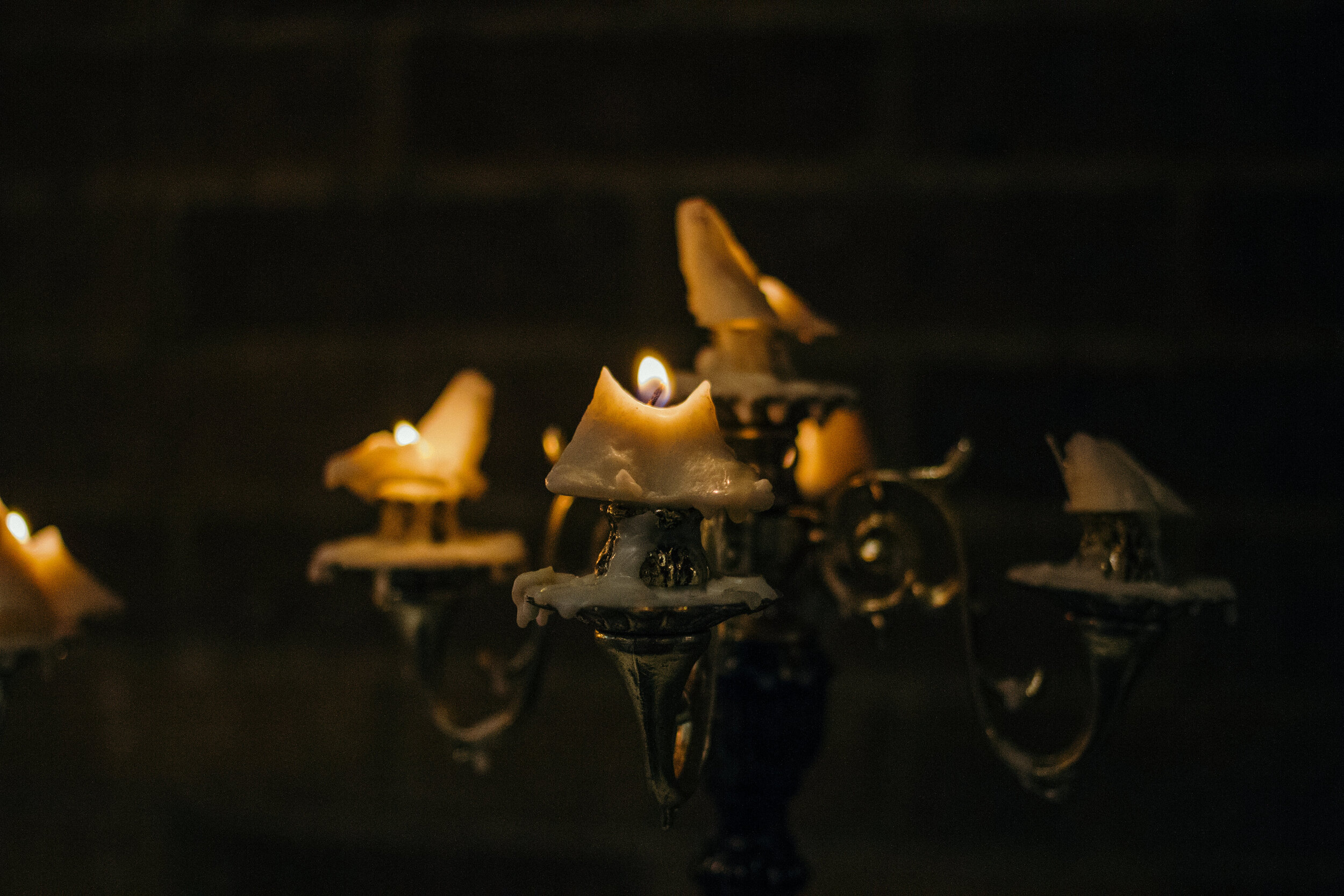
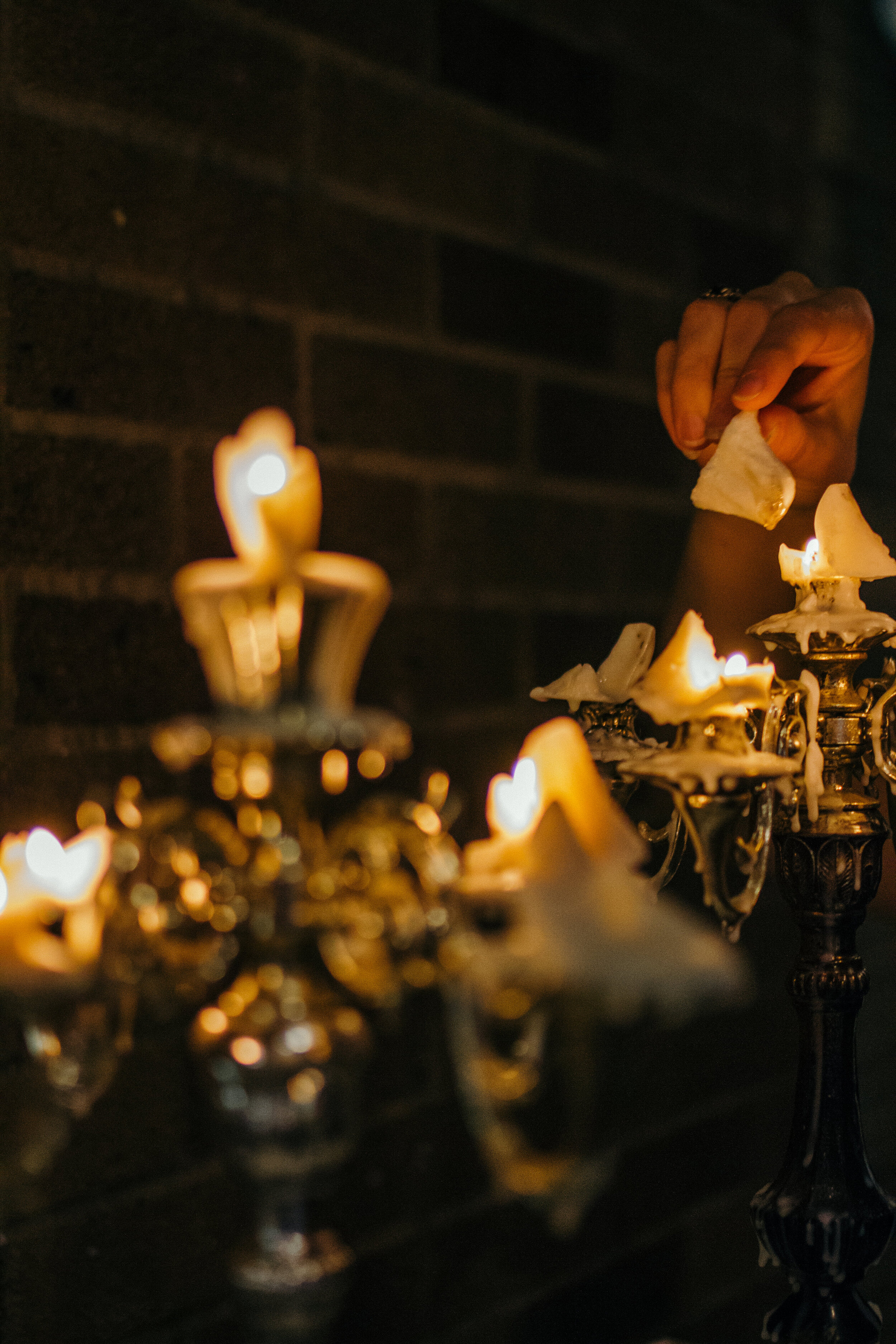
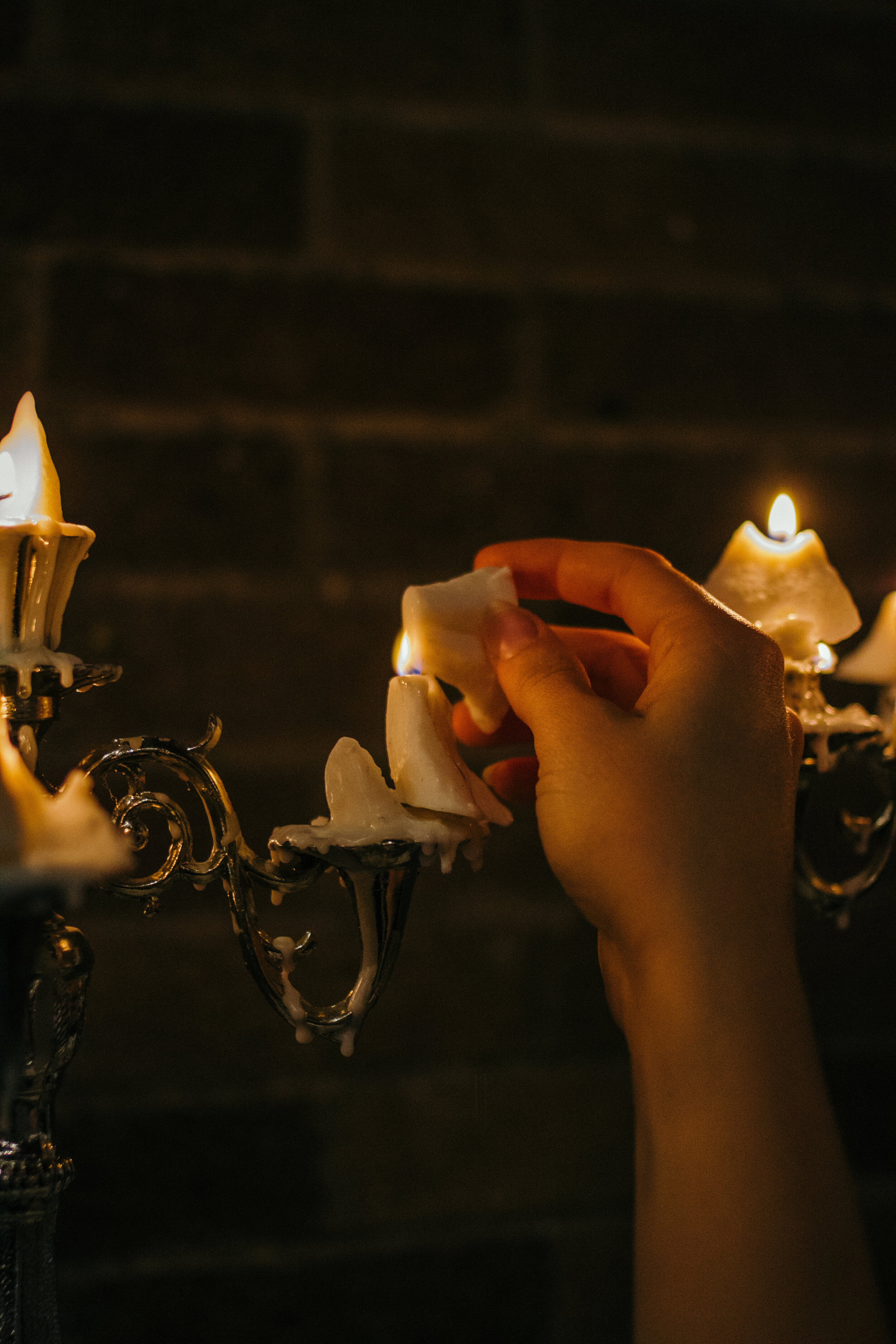
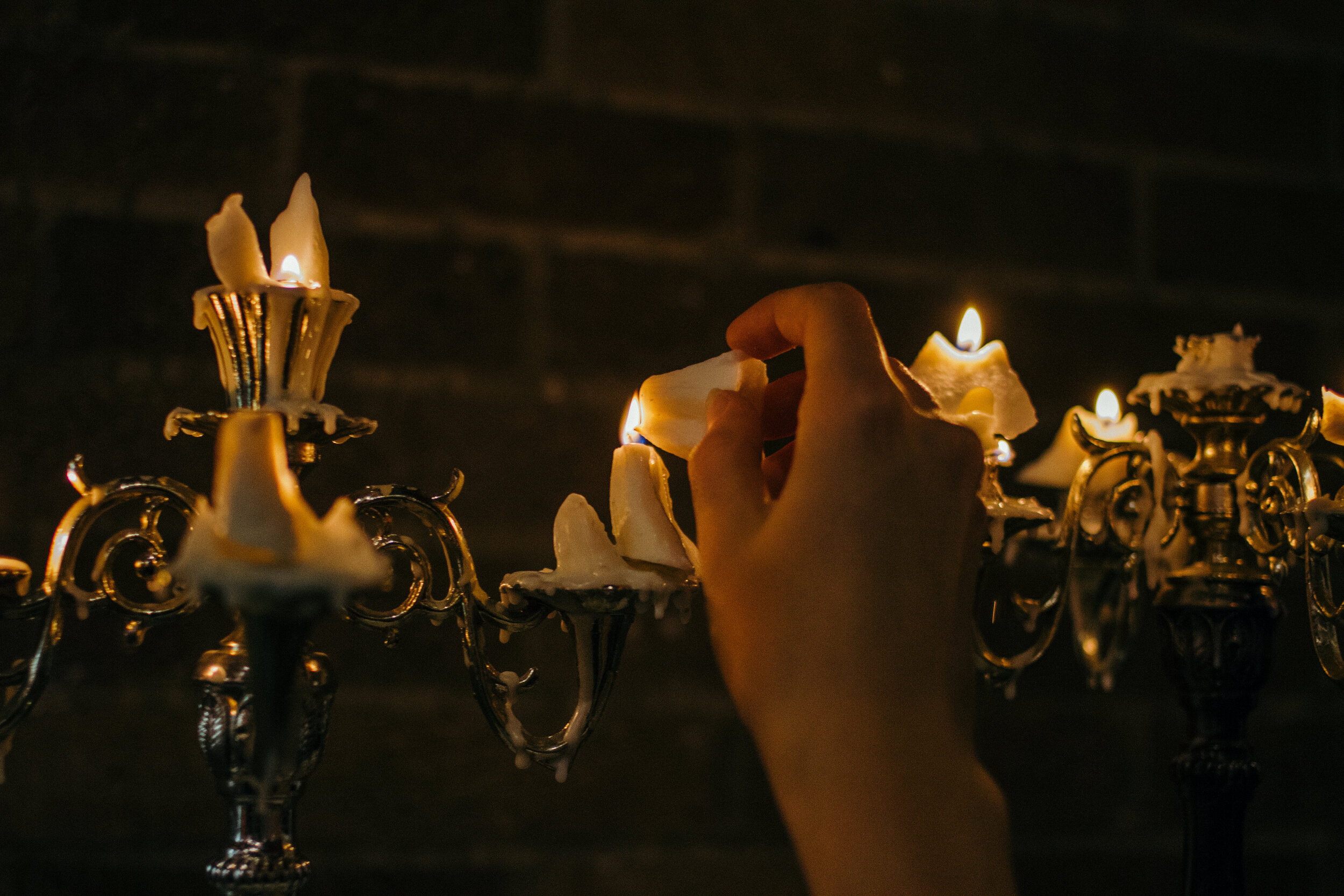

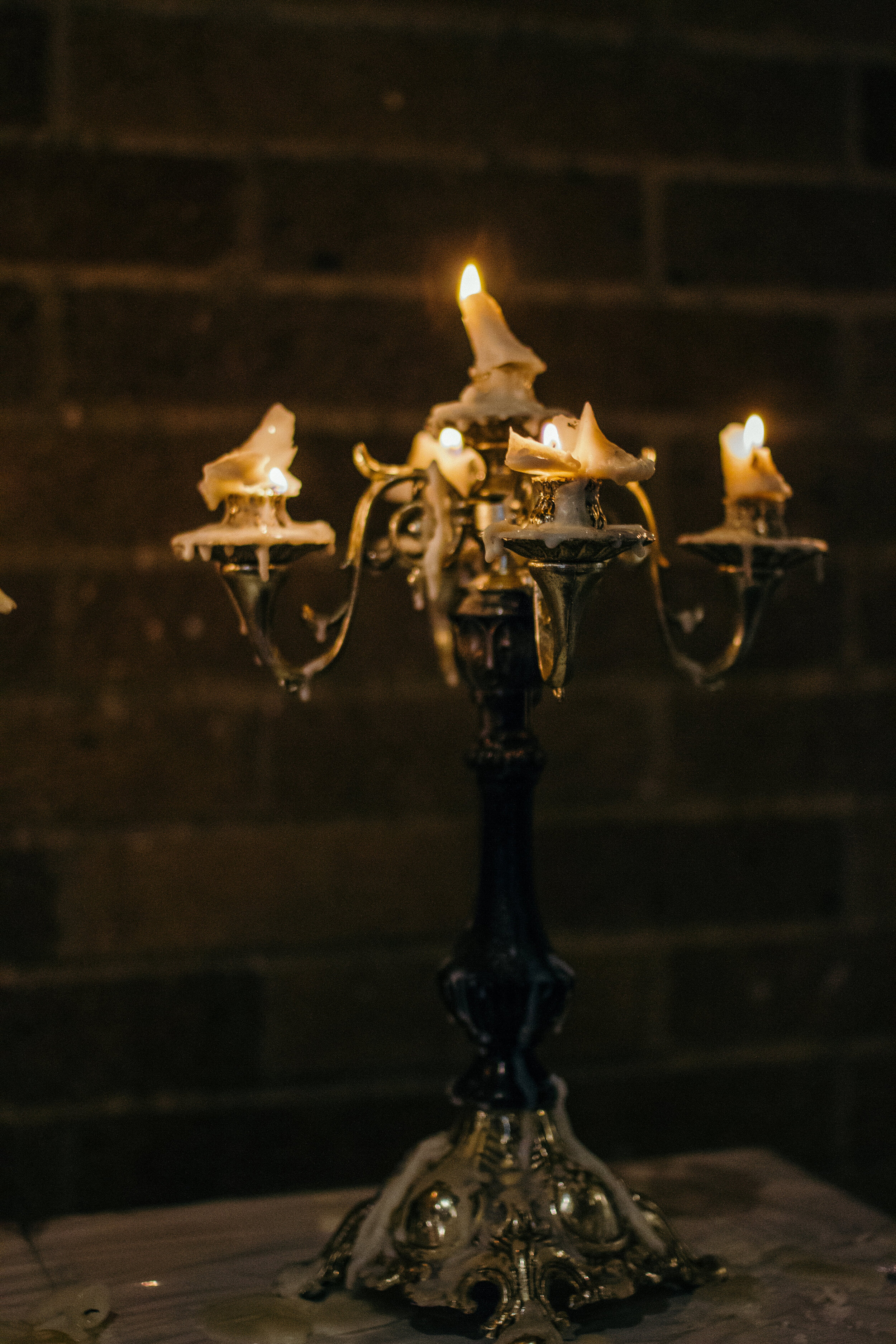
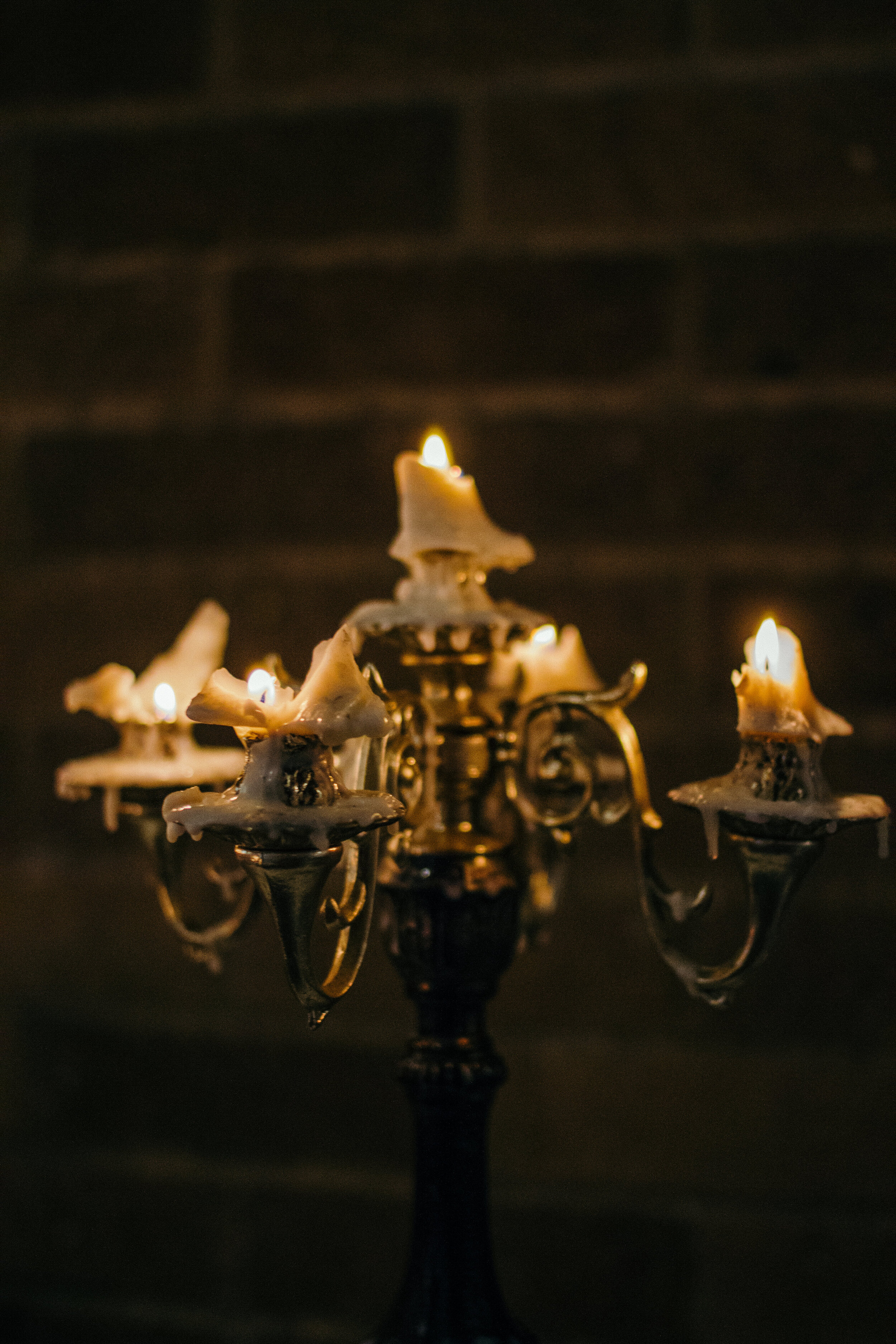
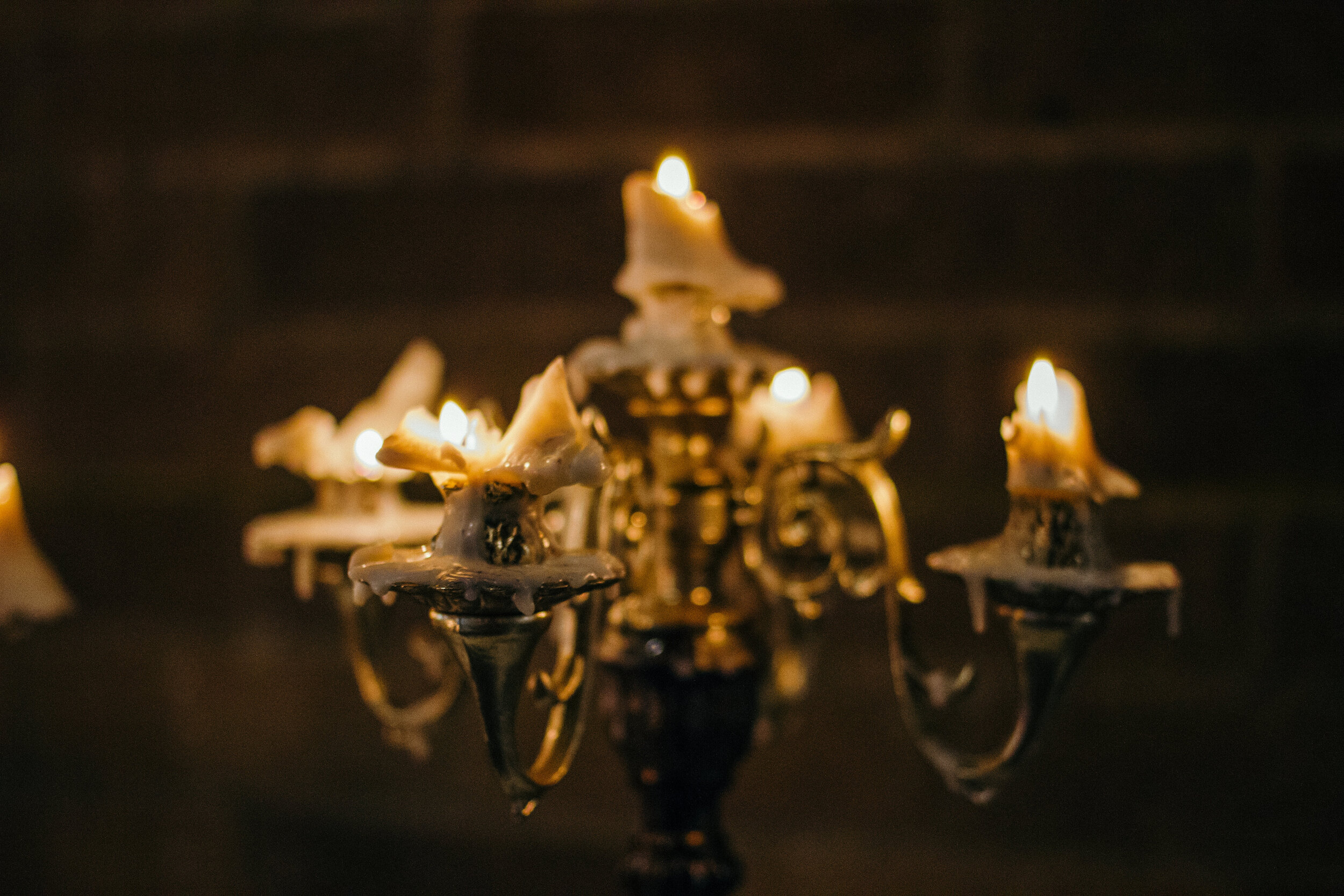
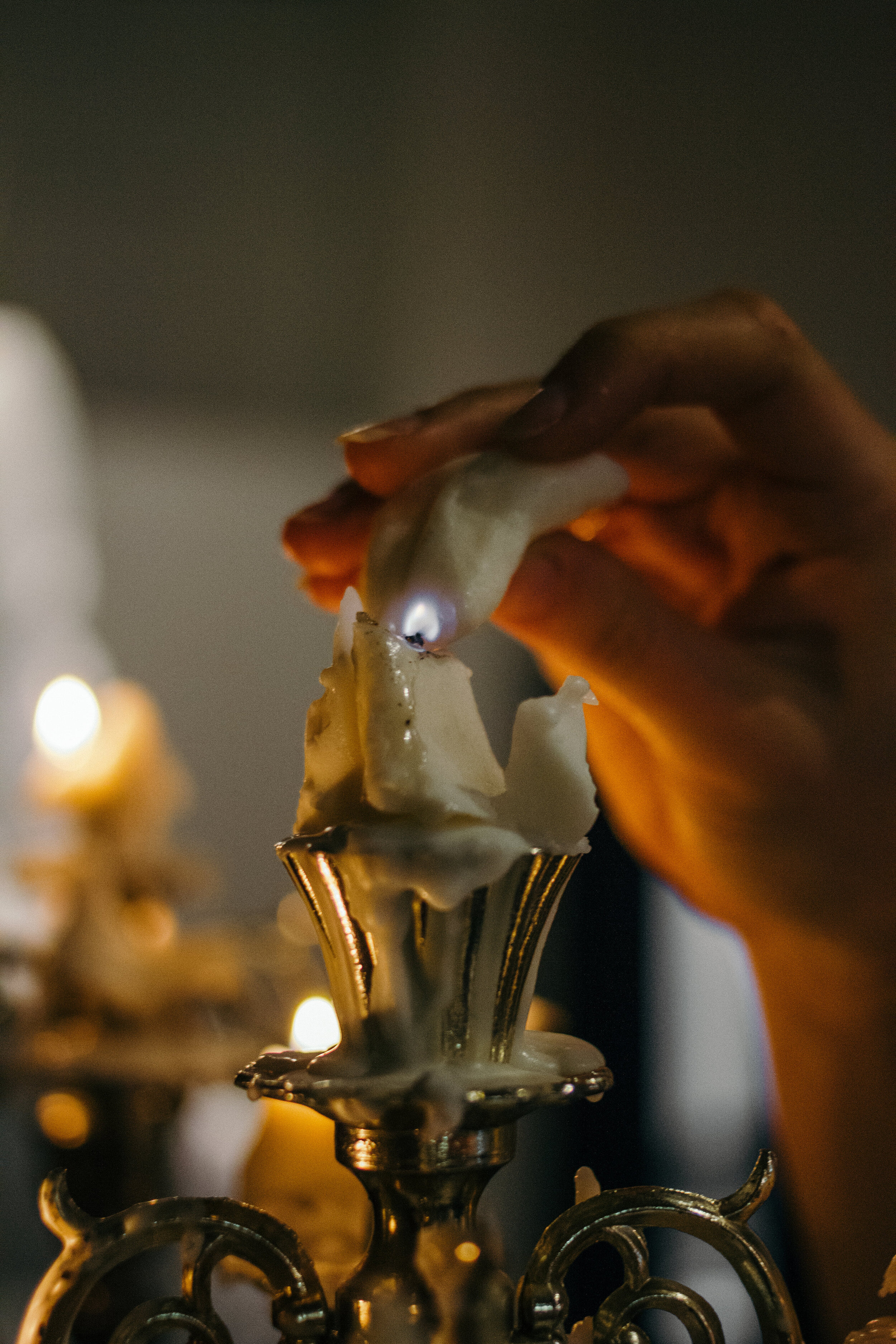
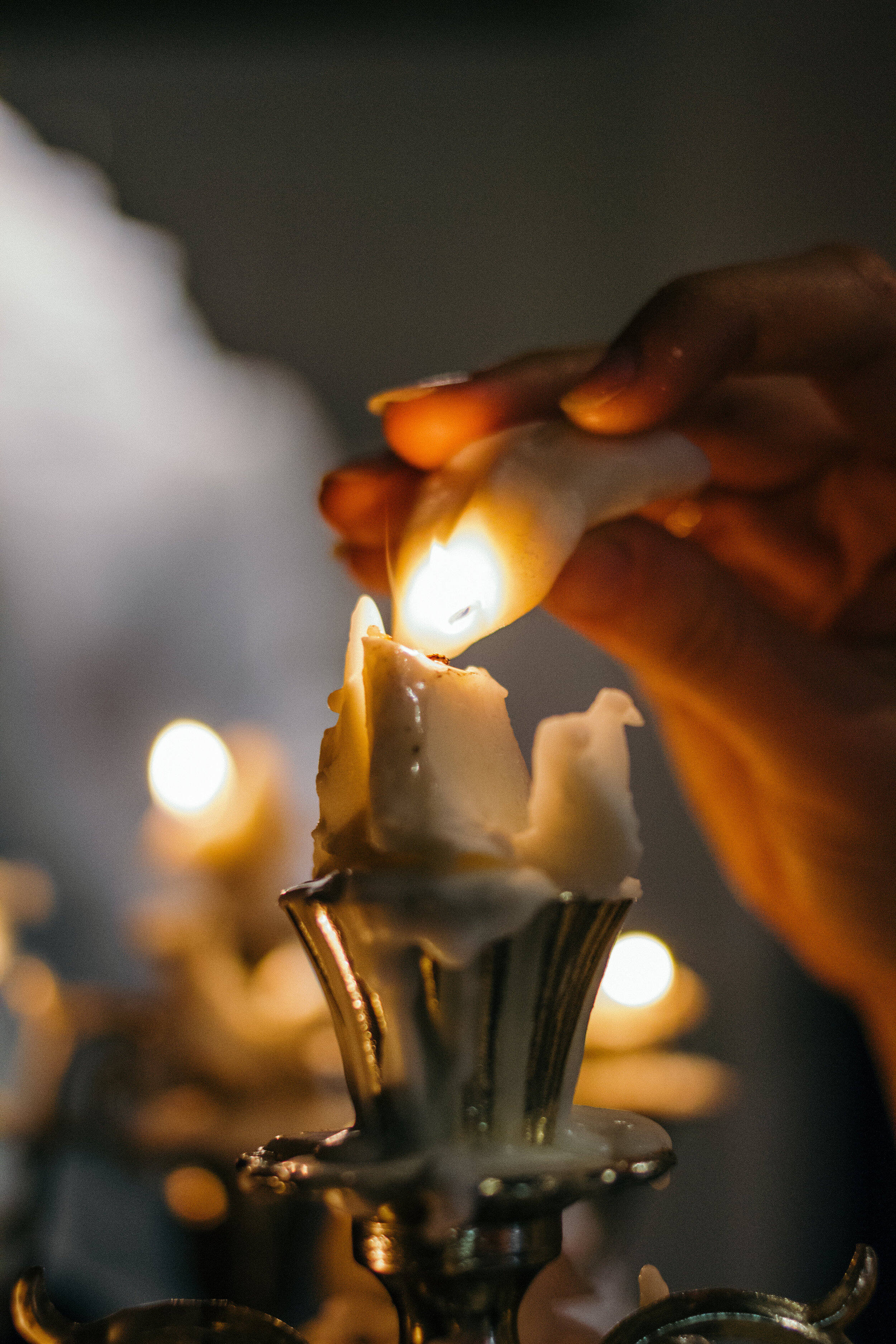
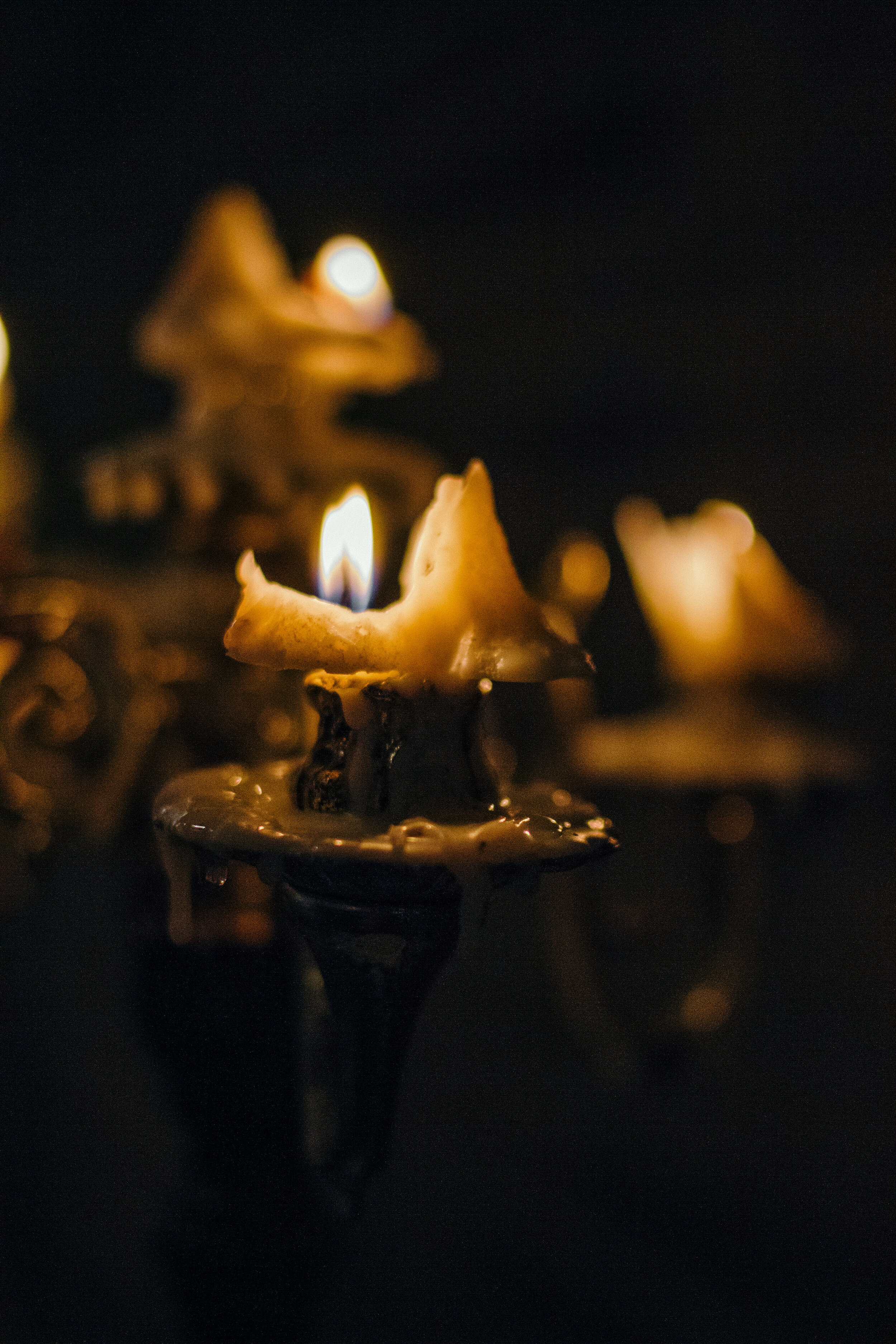
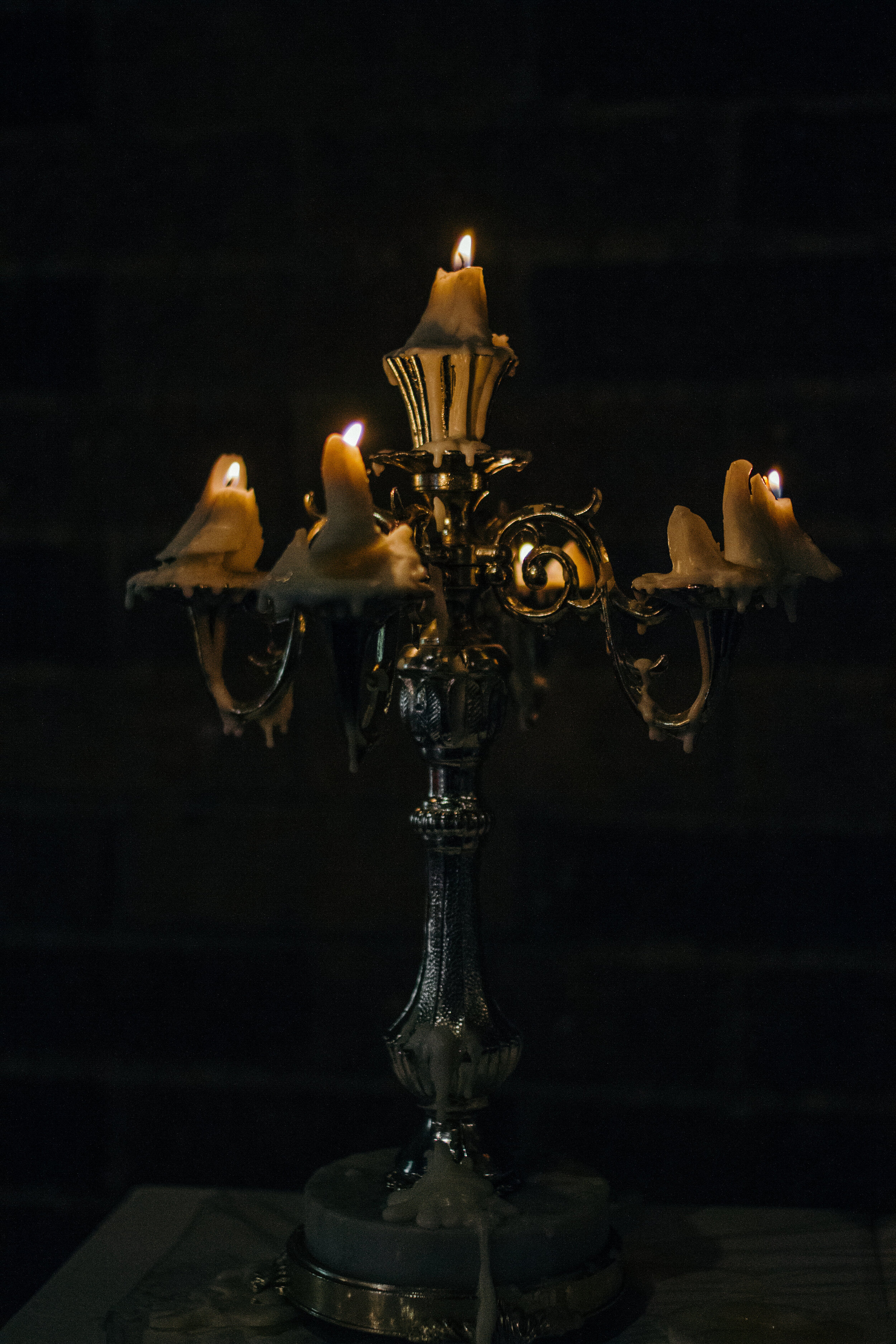
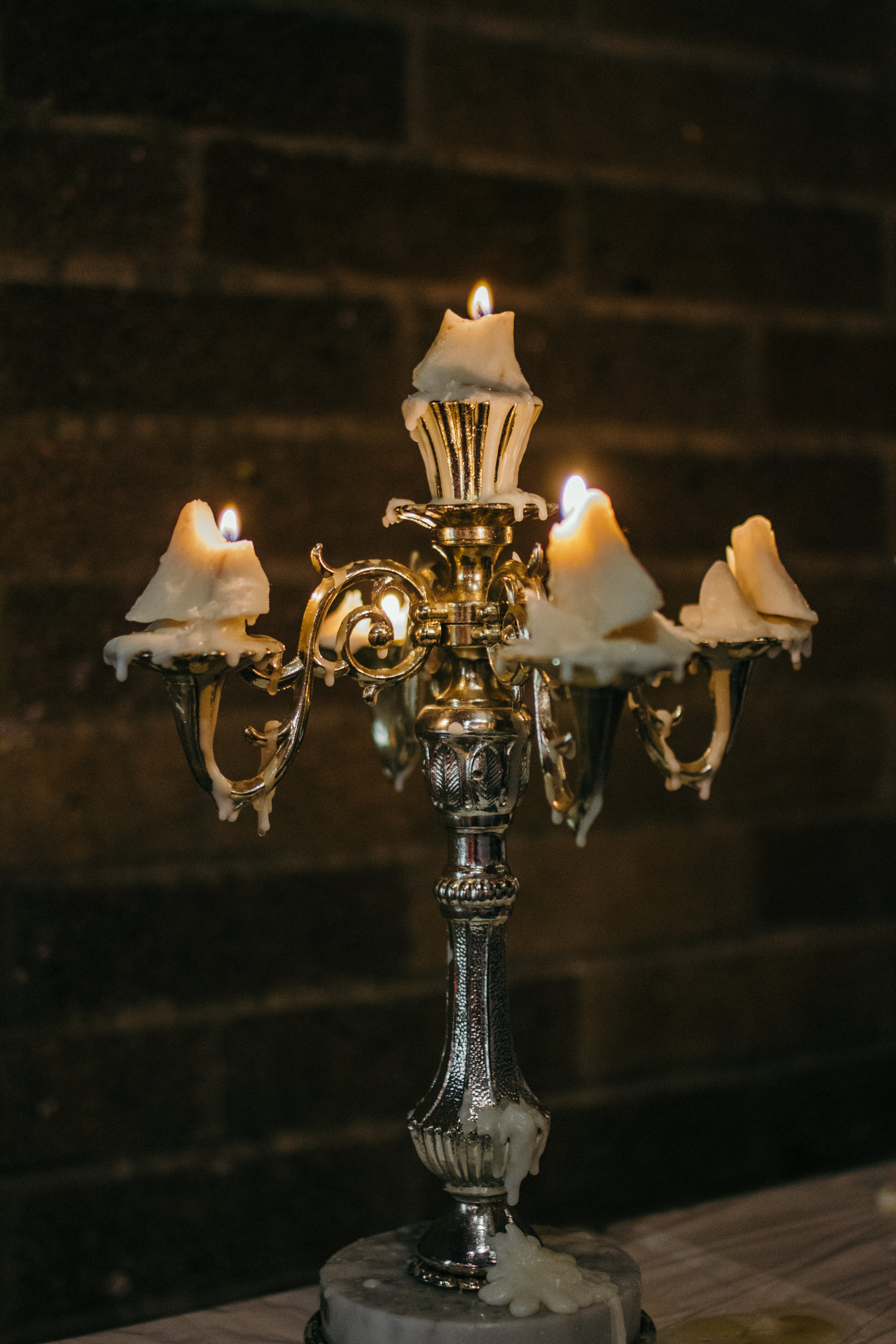

Tongues of Flame
Wax, Candelabra
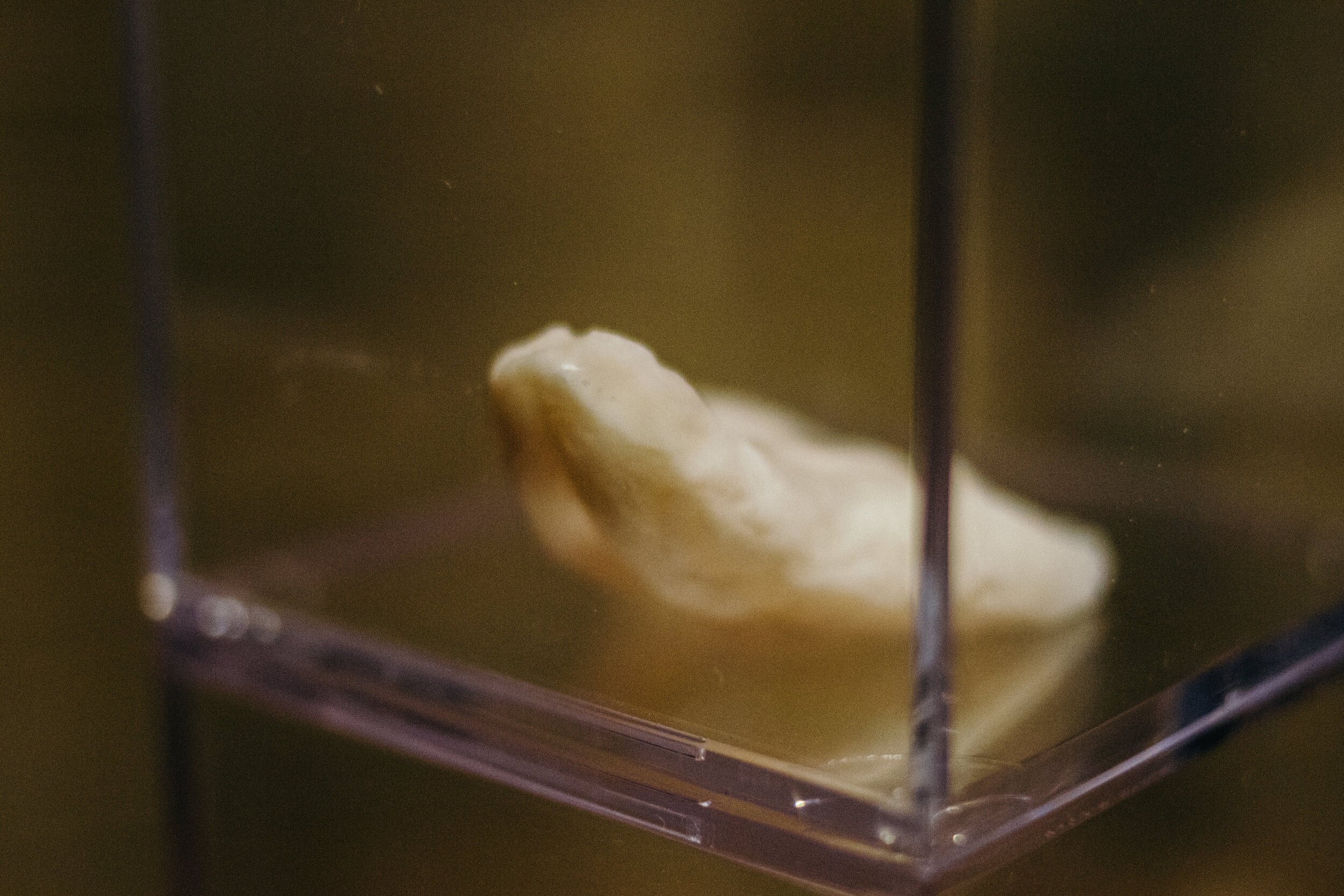
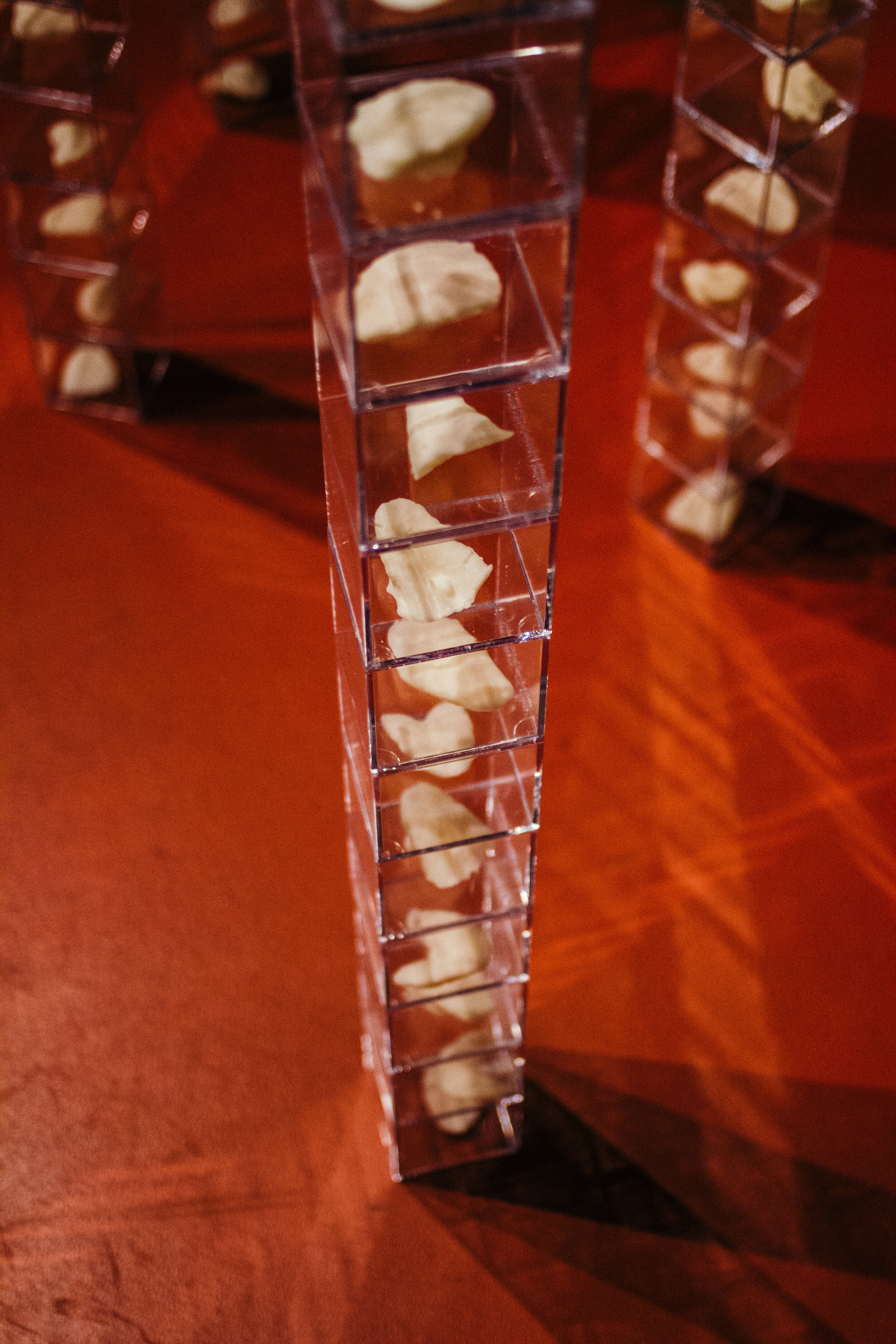
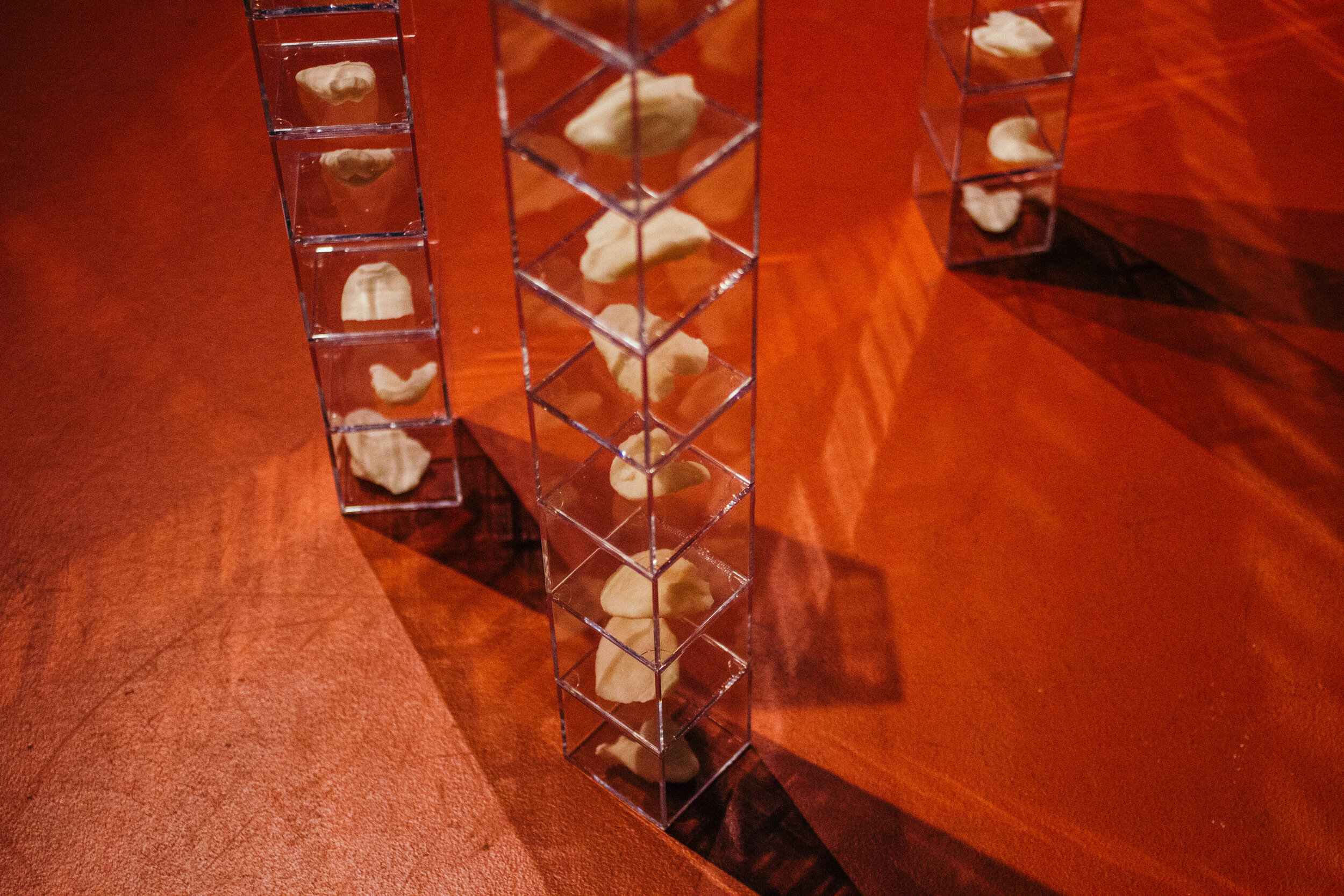
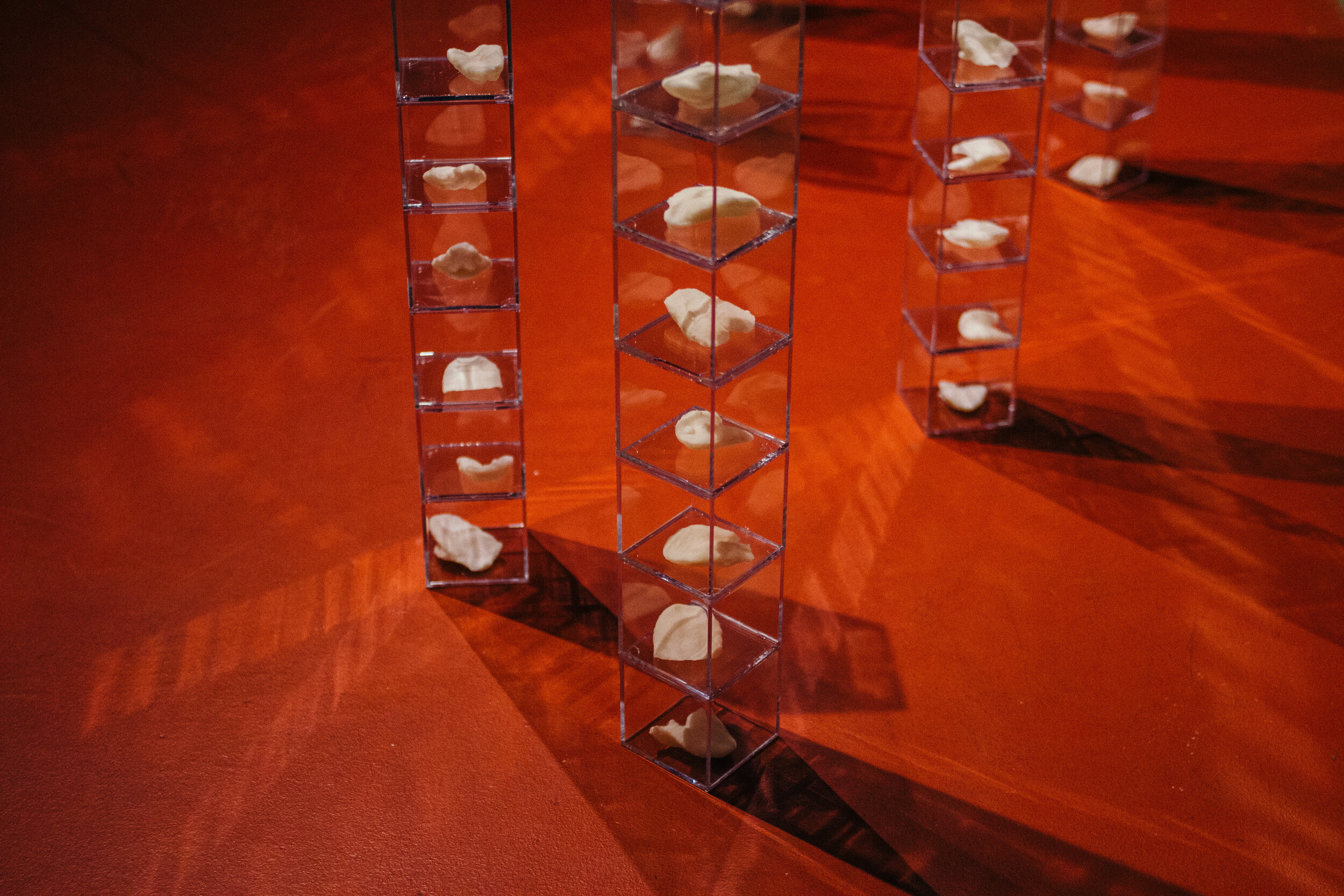

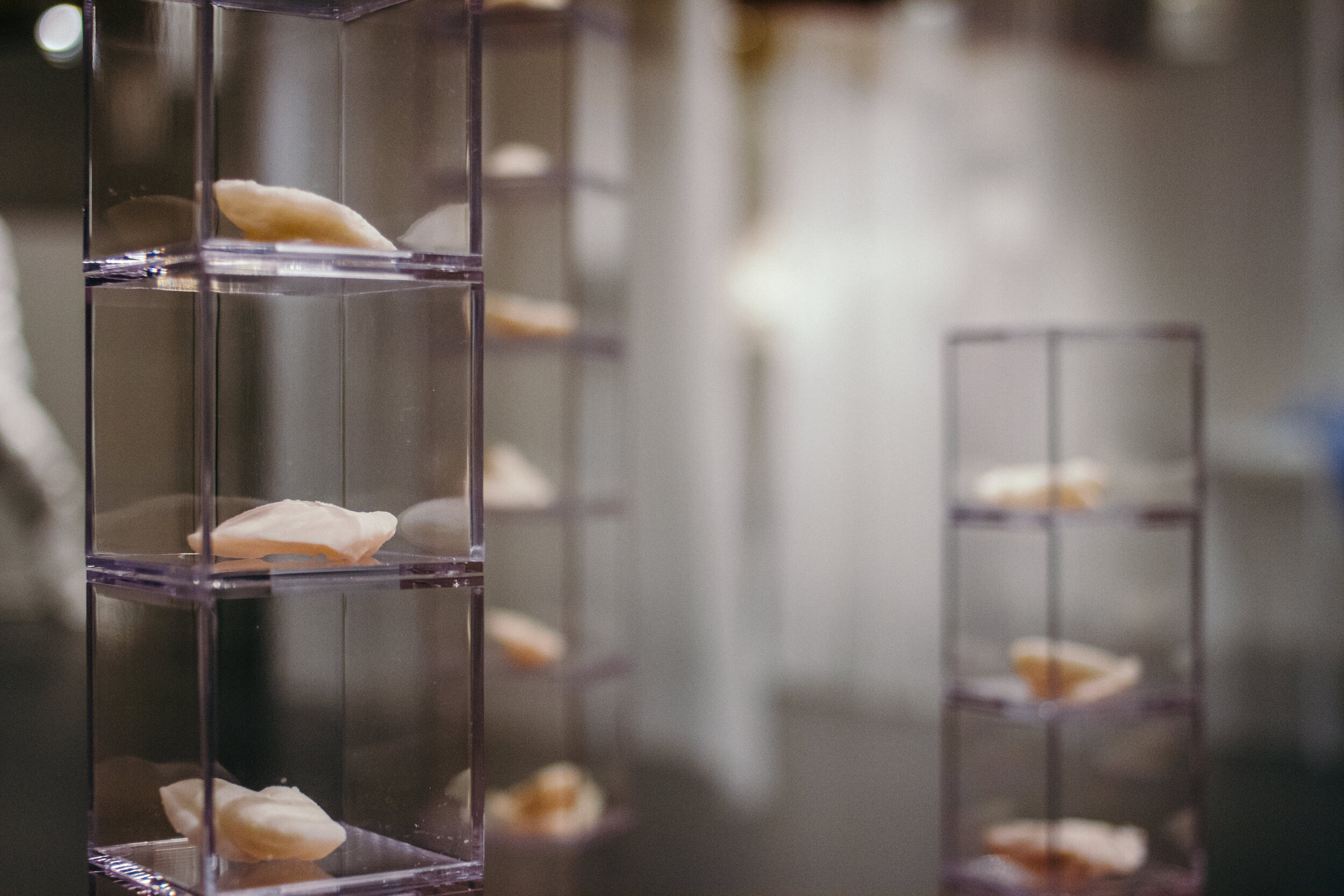
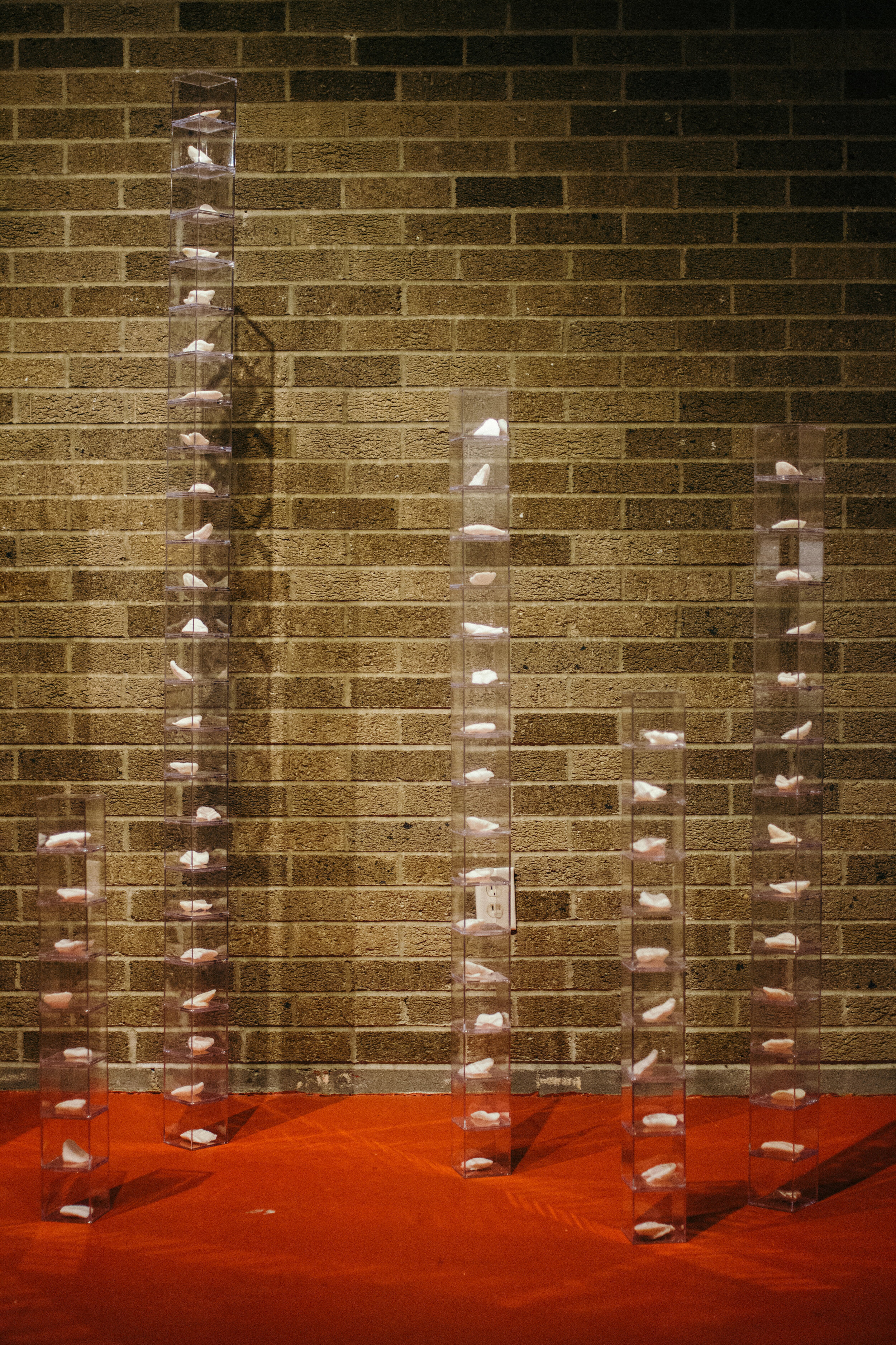
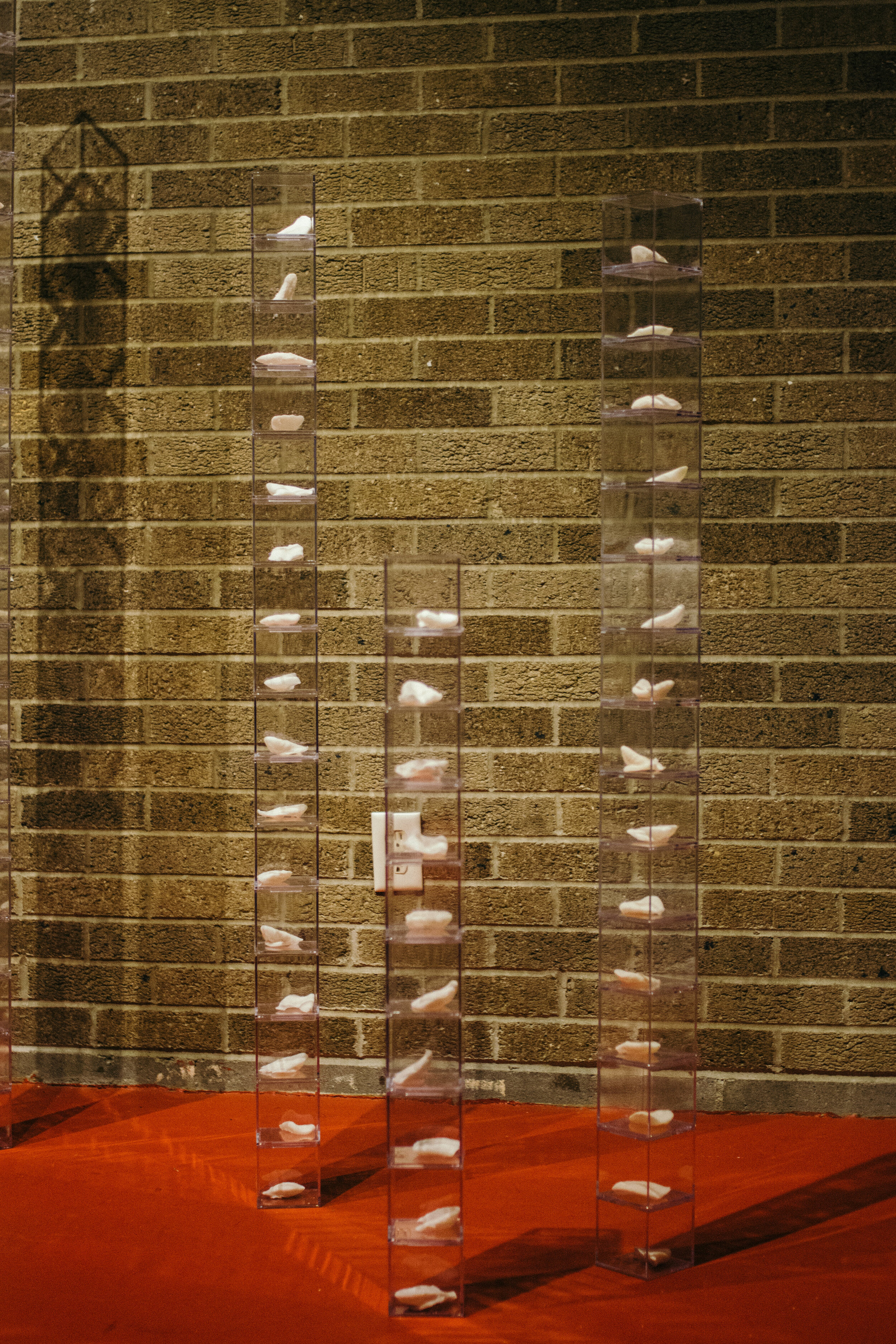
Hold Your Tongue
Wax
What happens when the tongue is removed, or when there is a great number of them? The tongue is, perhaps, the body’s most obvious source of disaster. From snogging to saying the wrong thing, it gets us into inordinate amounts of trouble. Tongues are also the strongest muscle in the body, and though their strength is not solely rooted in the physical, they can wound deeply. The act of confining a tongue to a box suggests preventative, controlling measures, while also giving the tongue even more weight— putting it on display, making it sacred.
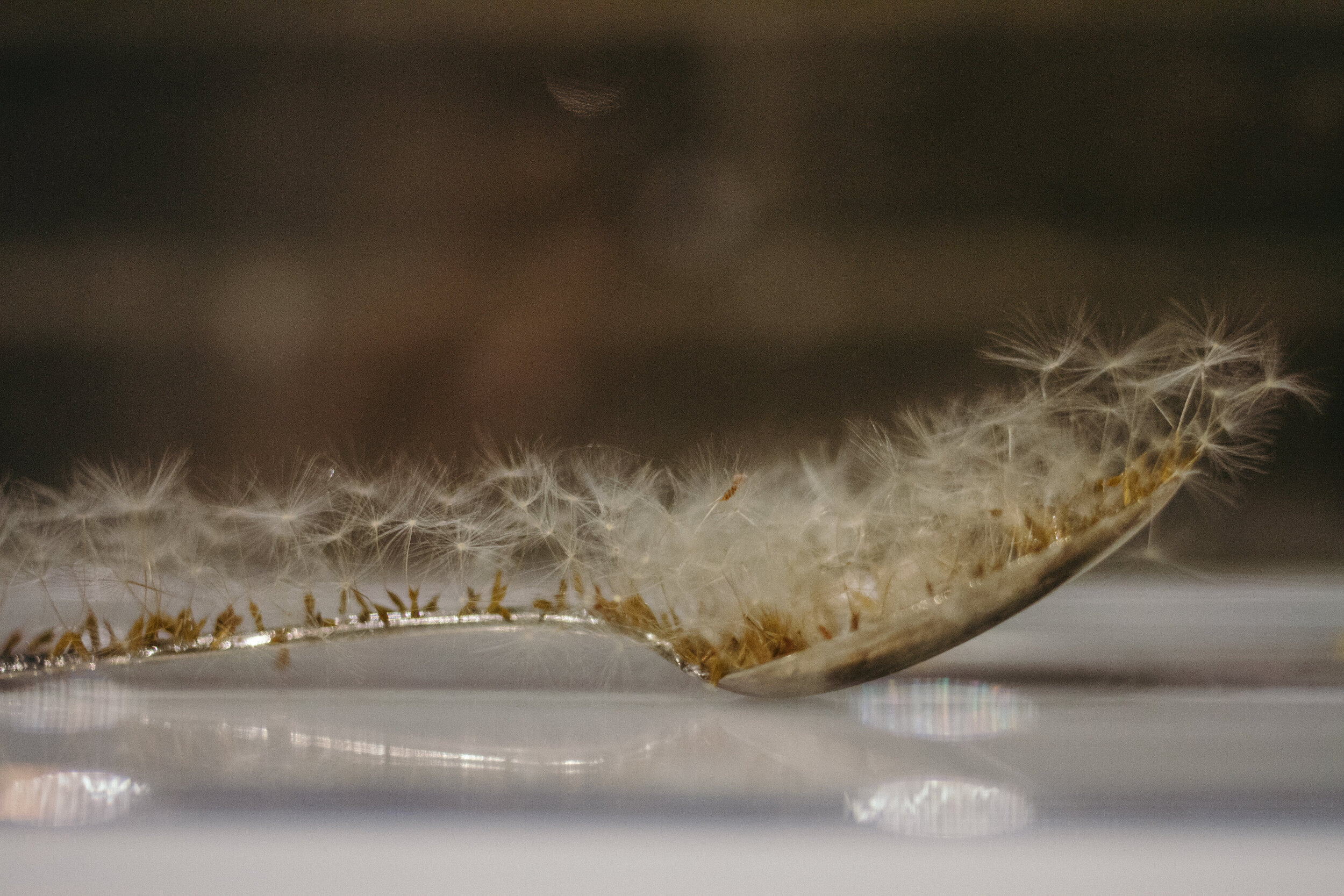
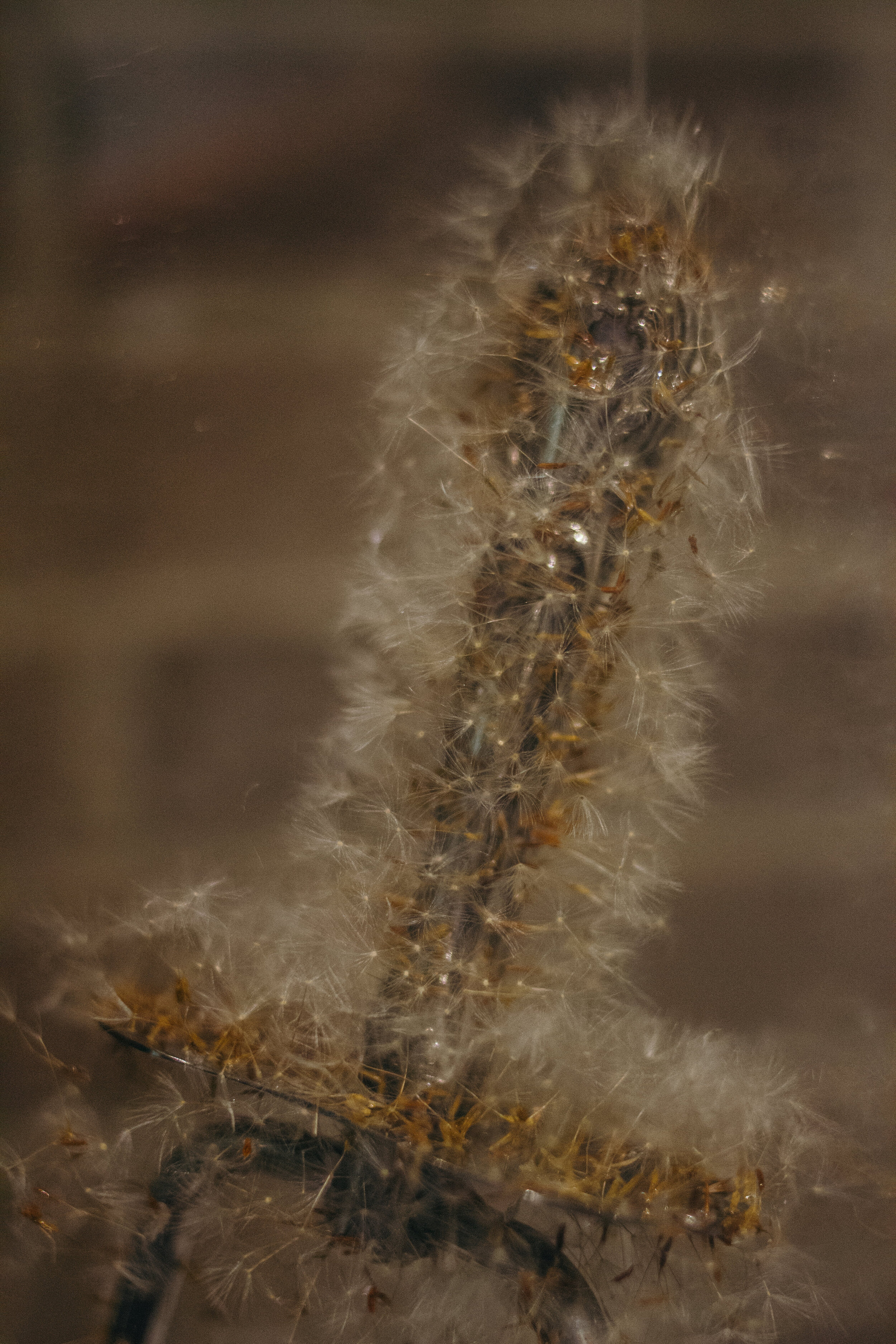
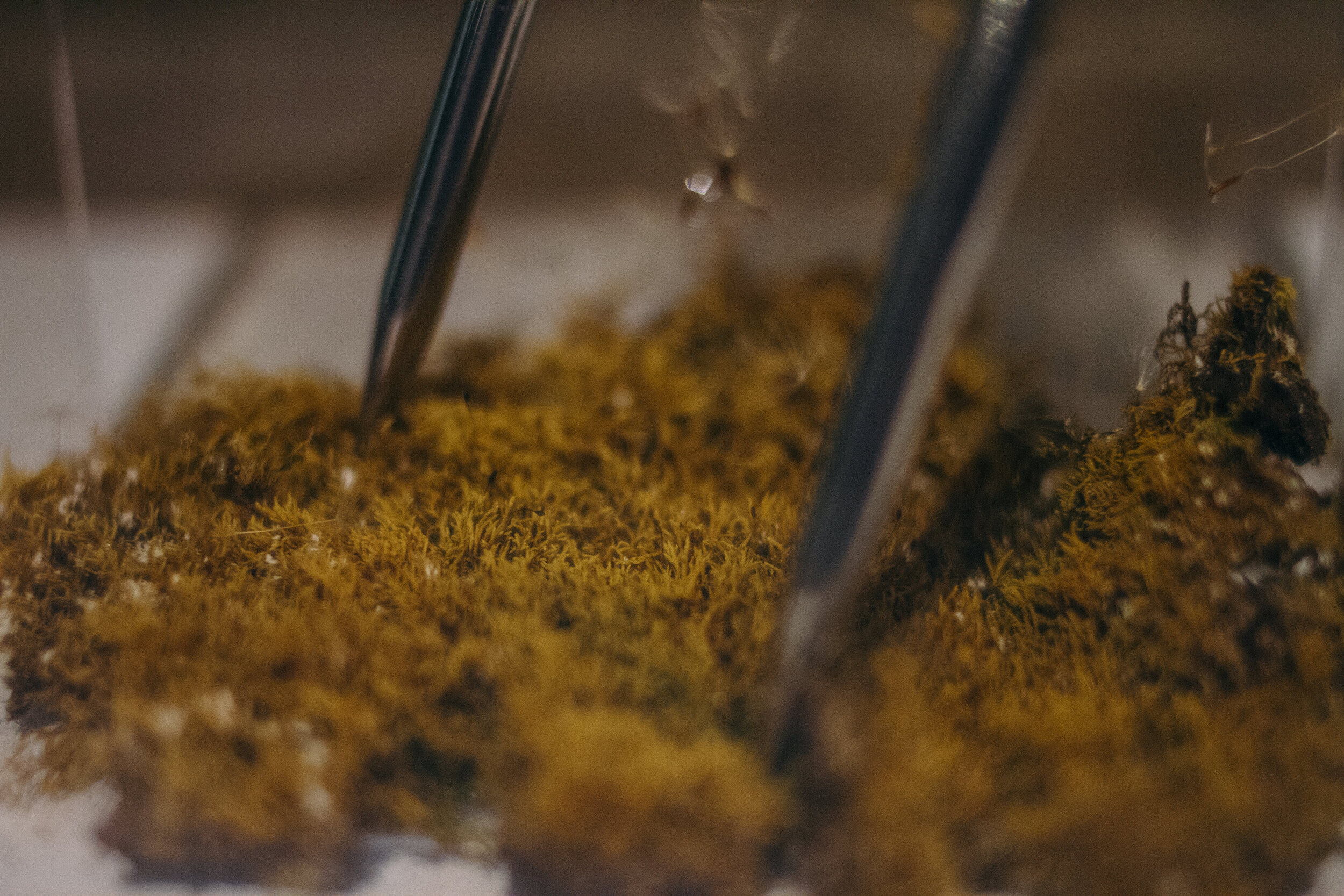
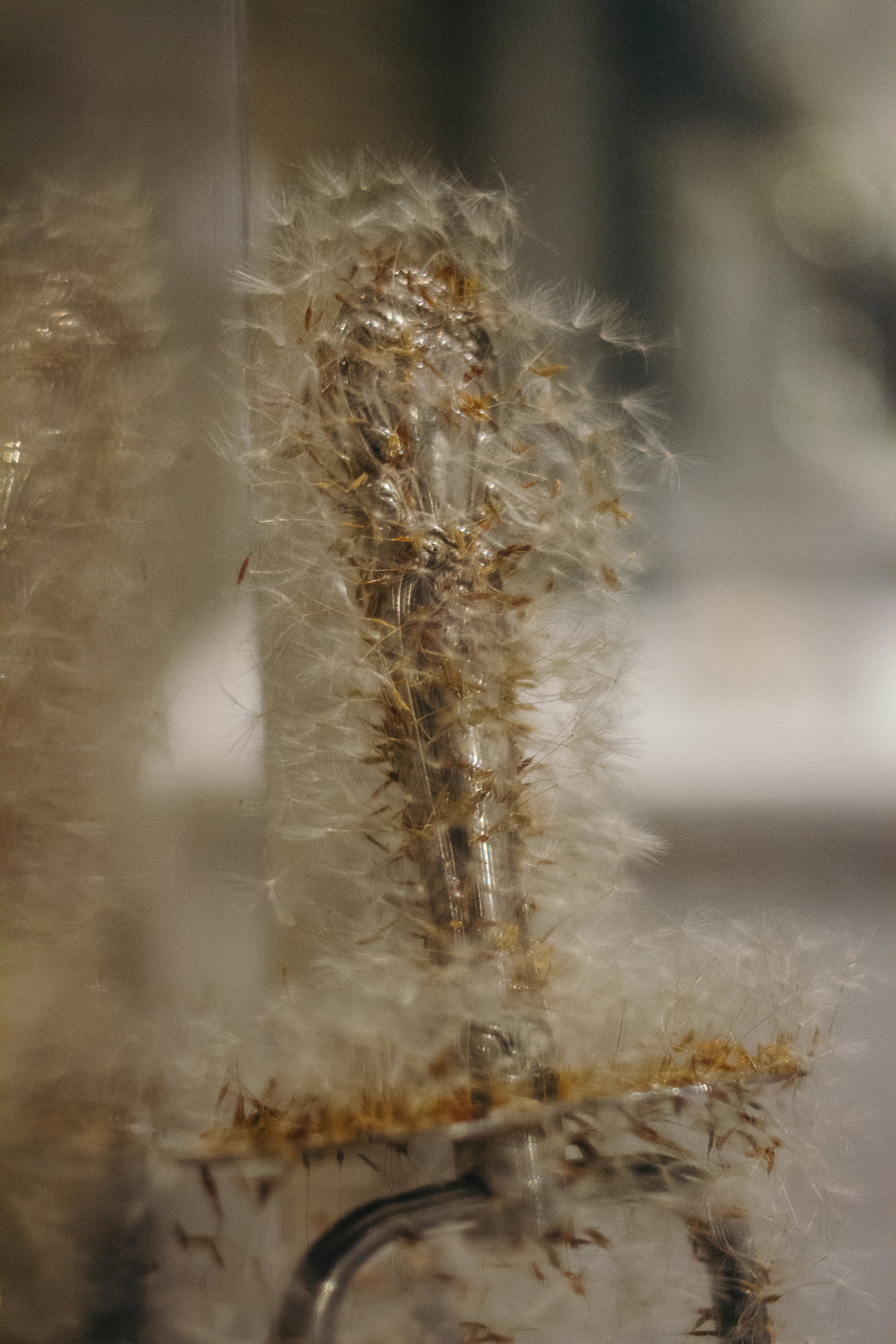
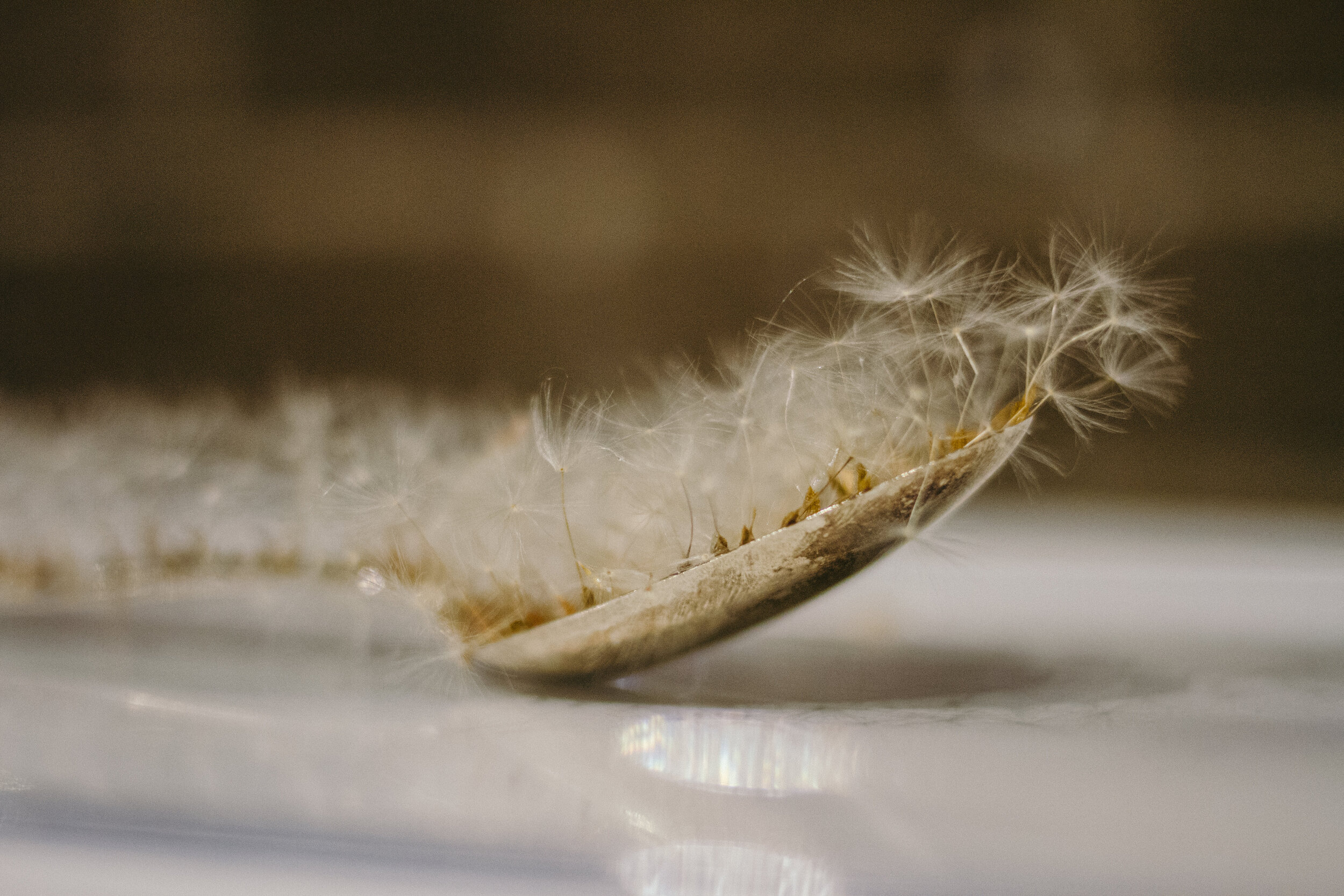
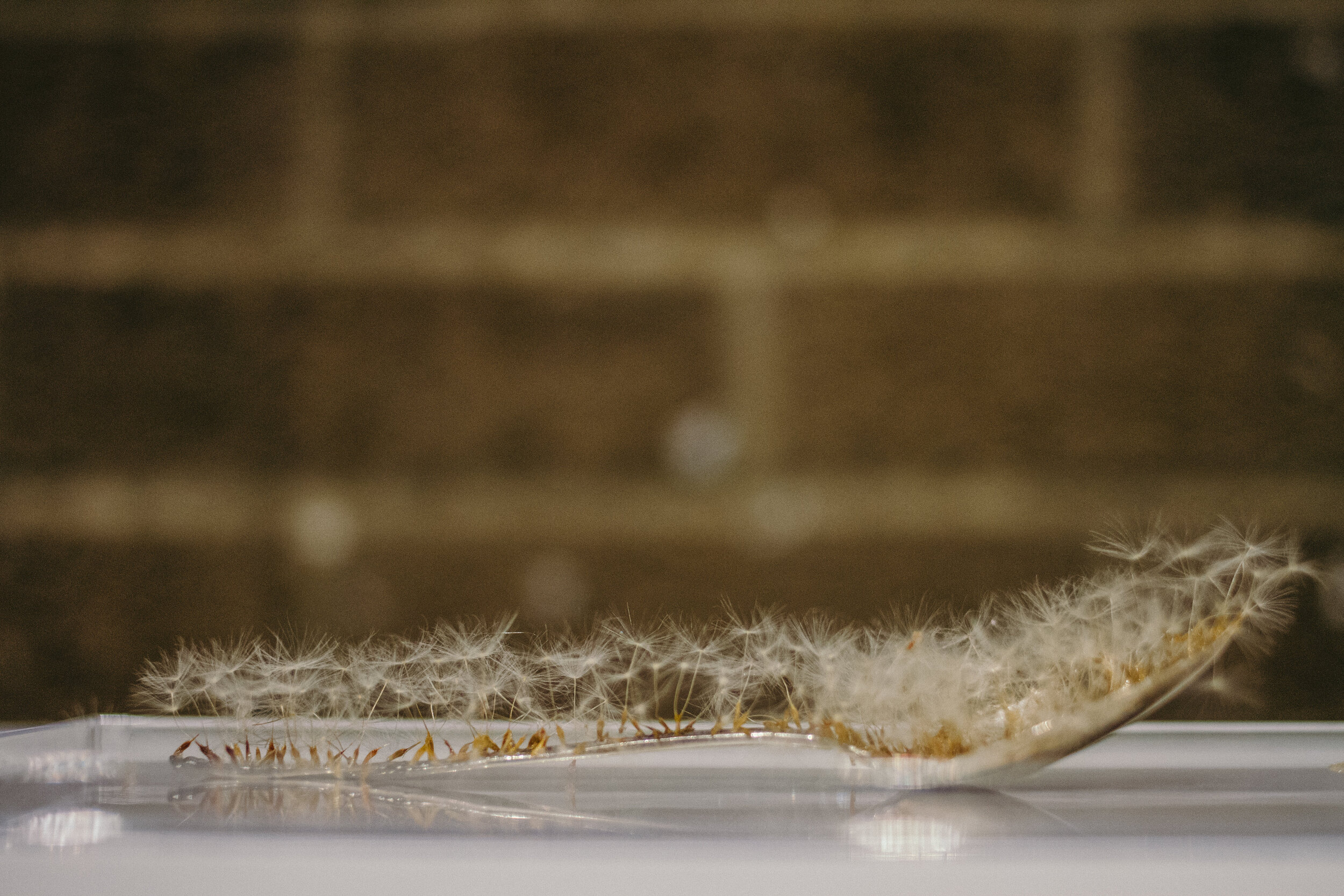
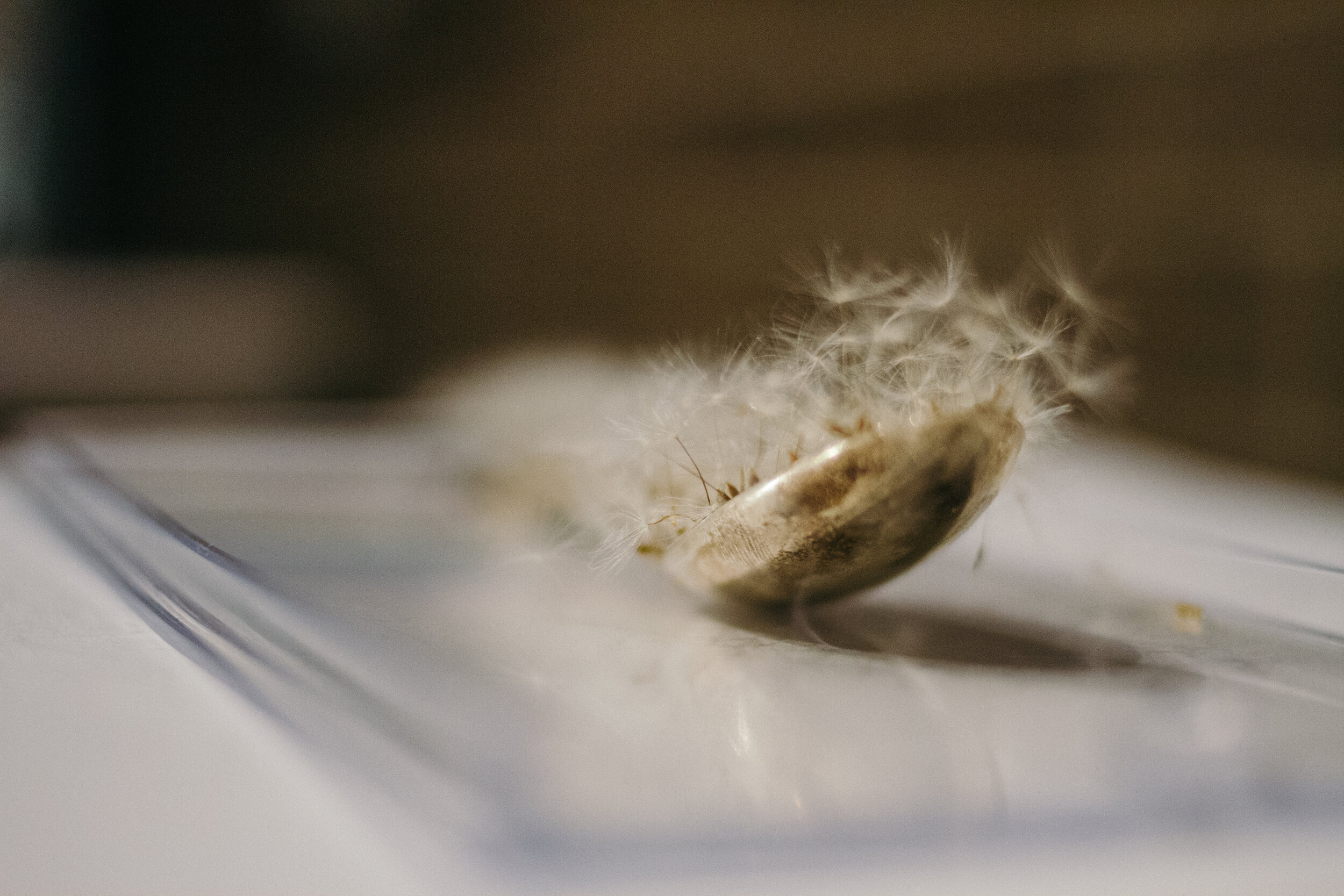
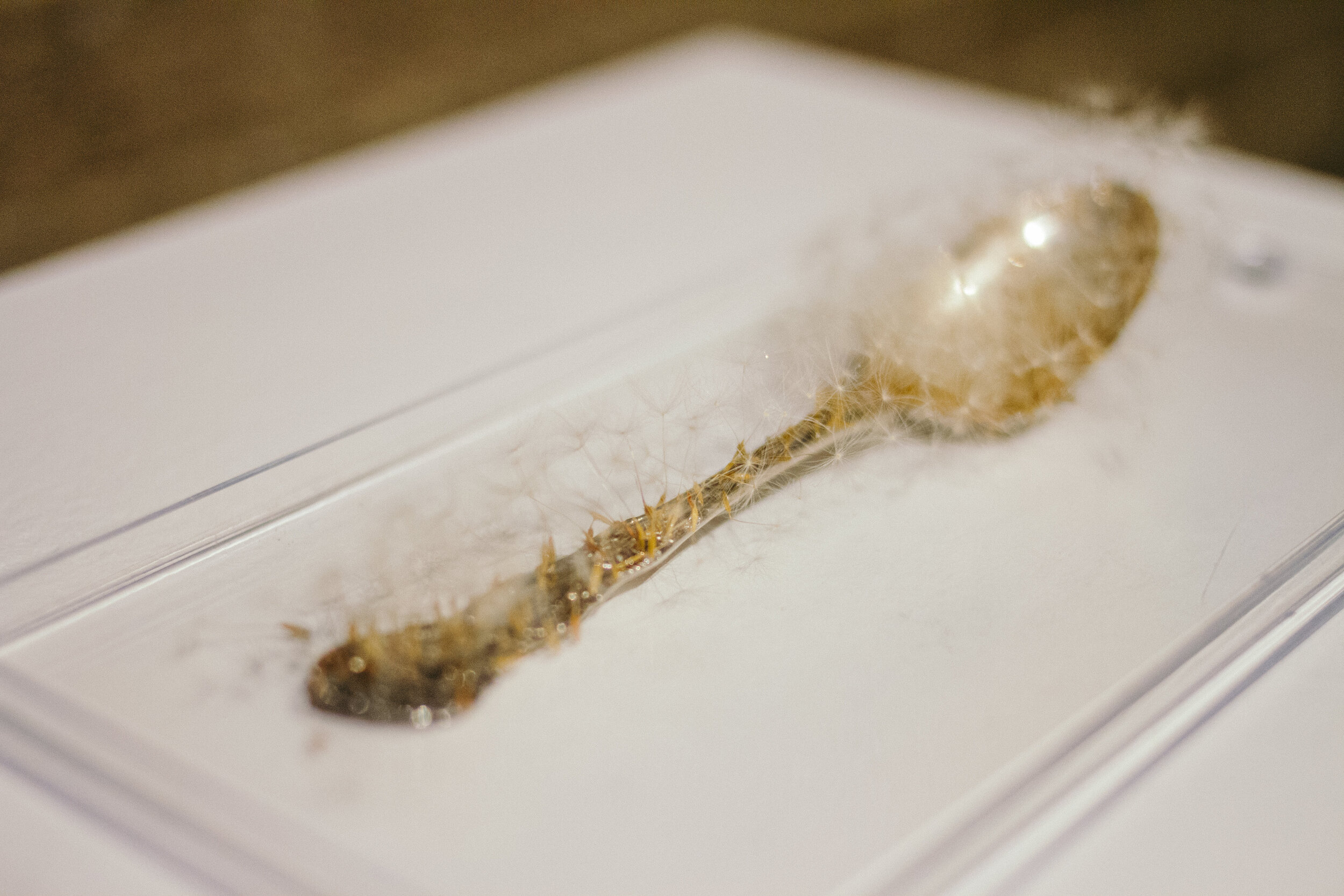
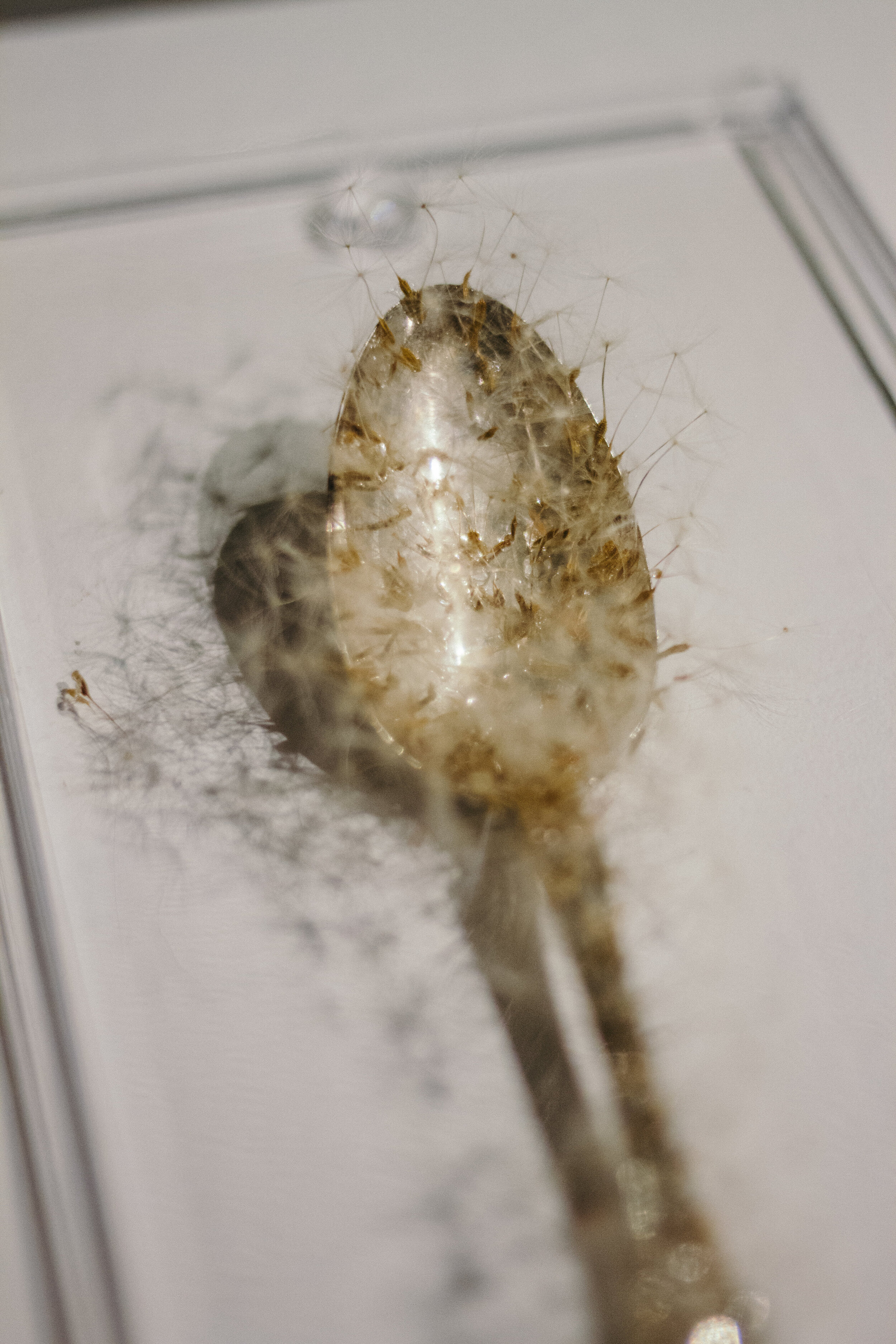



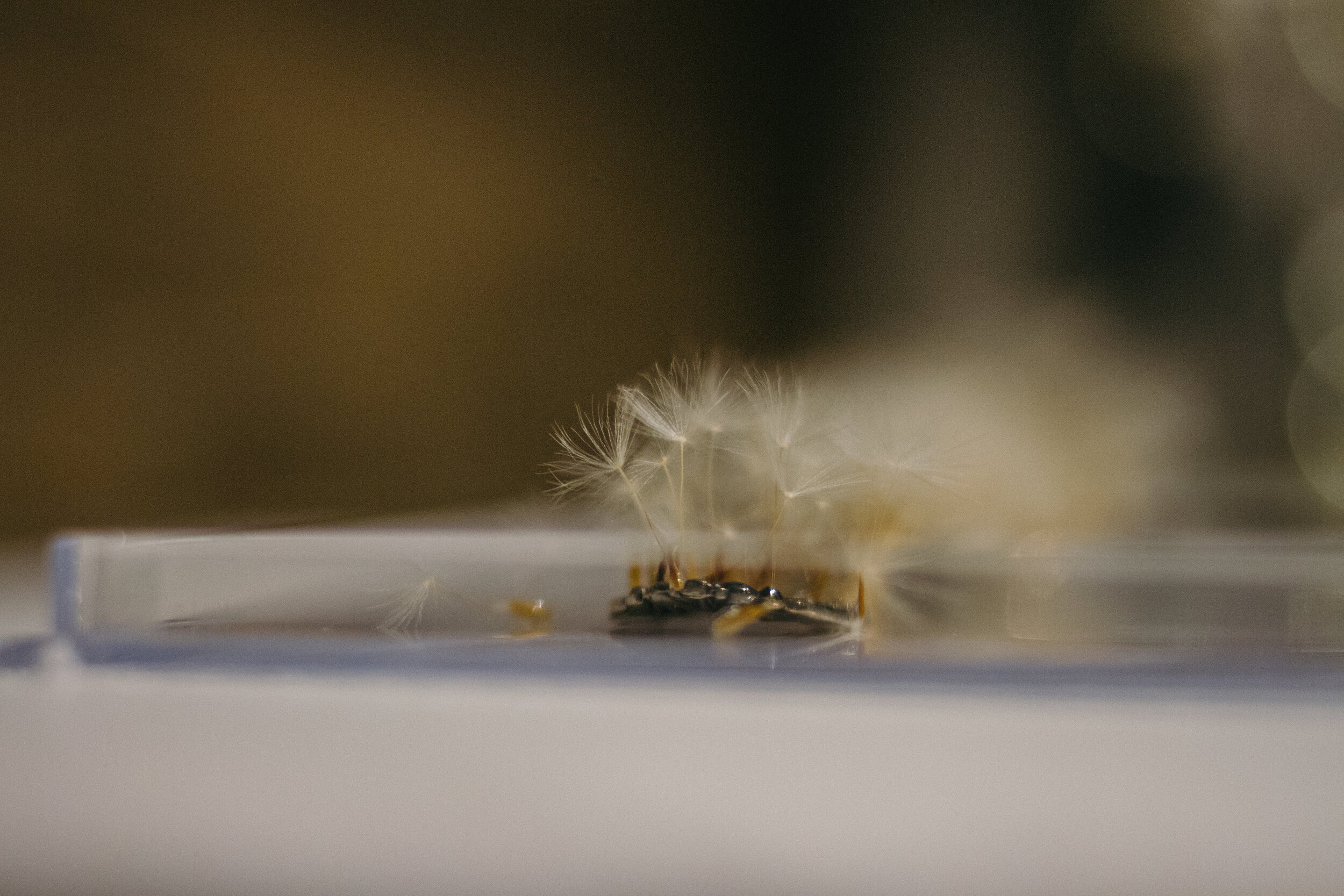
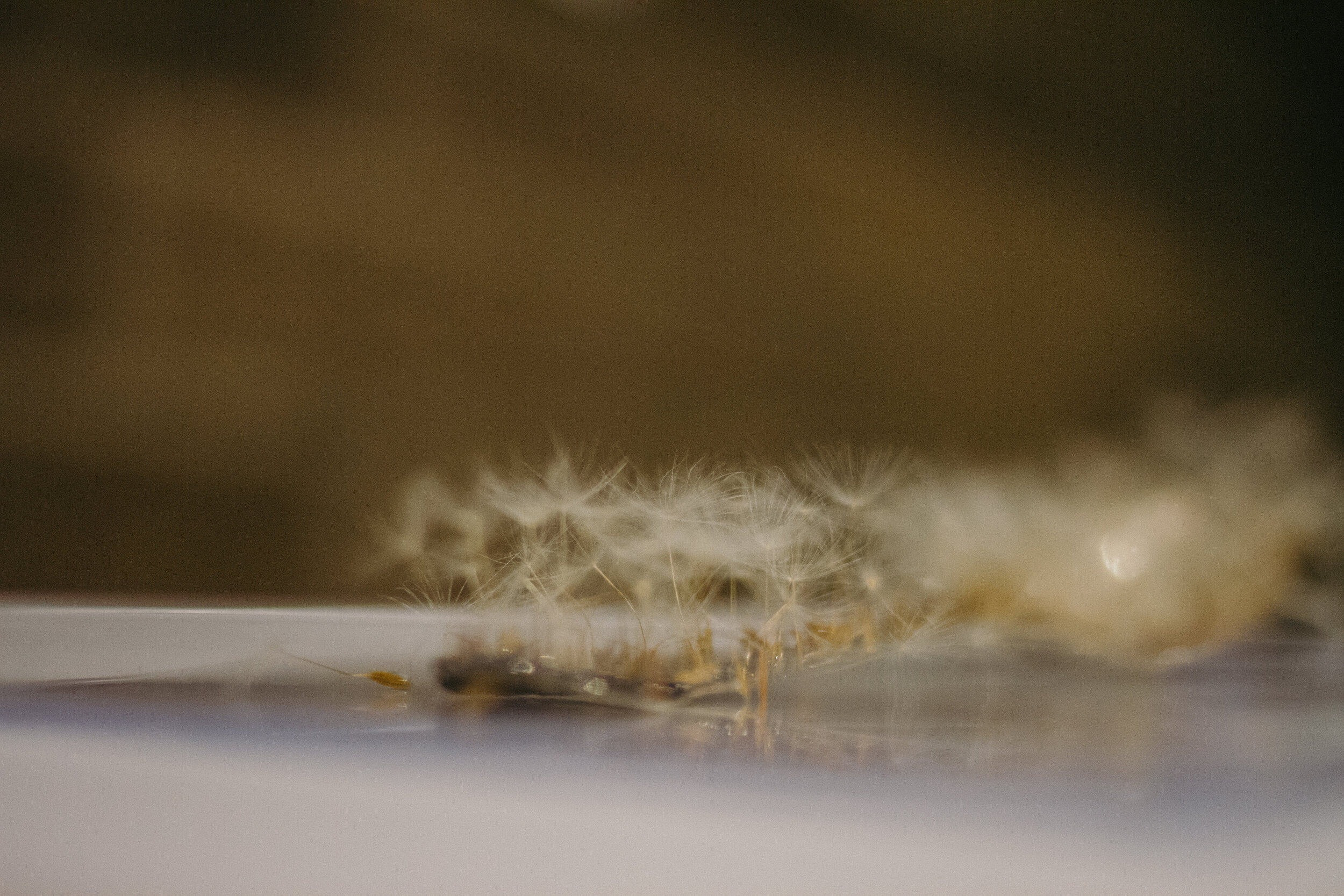
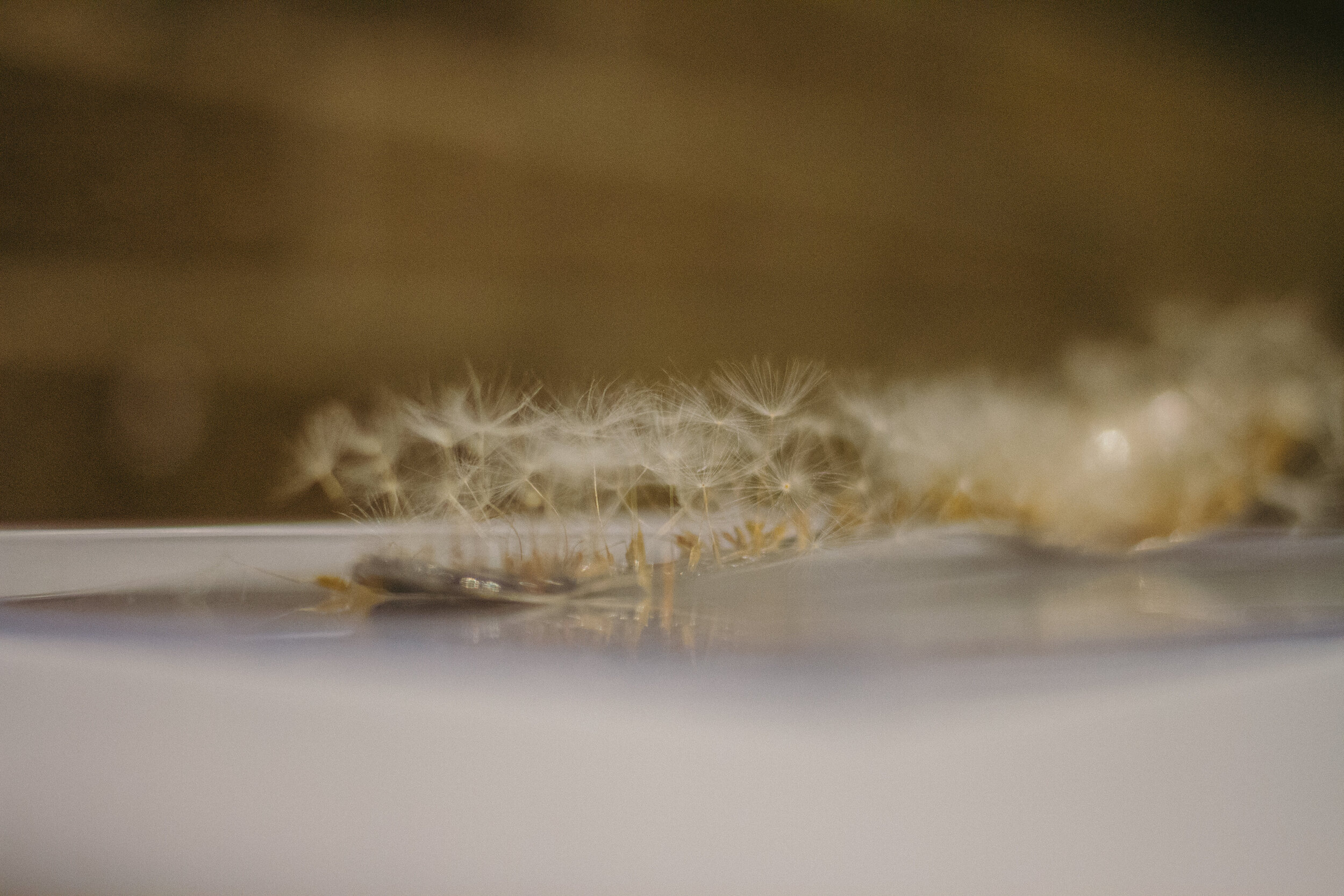

Southern Hospitality: Carving Fork, Spoon
Ogle family heirloom, dandelions.
These family heirlooms covered in dandelions enter into conversation regarding the deep heritage and history of southern culture while also acknowledging the horrors and difficulties that were and sometimes continue to prevail. They remind us that some of the oldest traditions, practices, and perceptions that we cling to actually render us ineffective and irrelevant. When these serving utensils, full of family history, are covered with an ephemeral plant associated with childhood and wishes, they are simultaneously elevated with a soft halo, while also rendered useless.
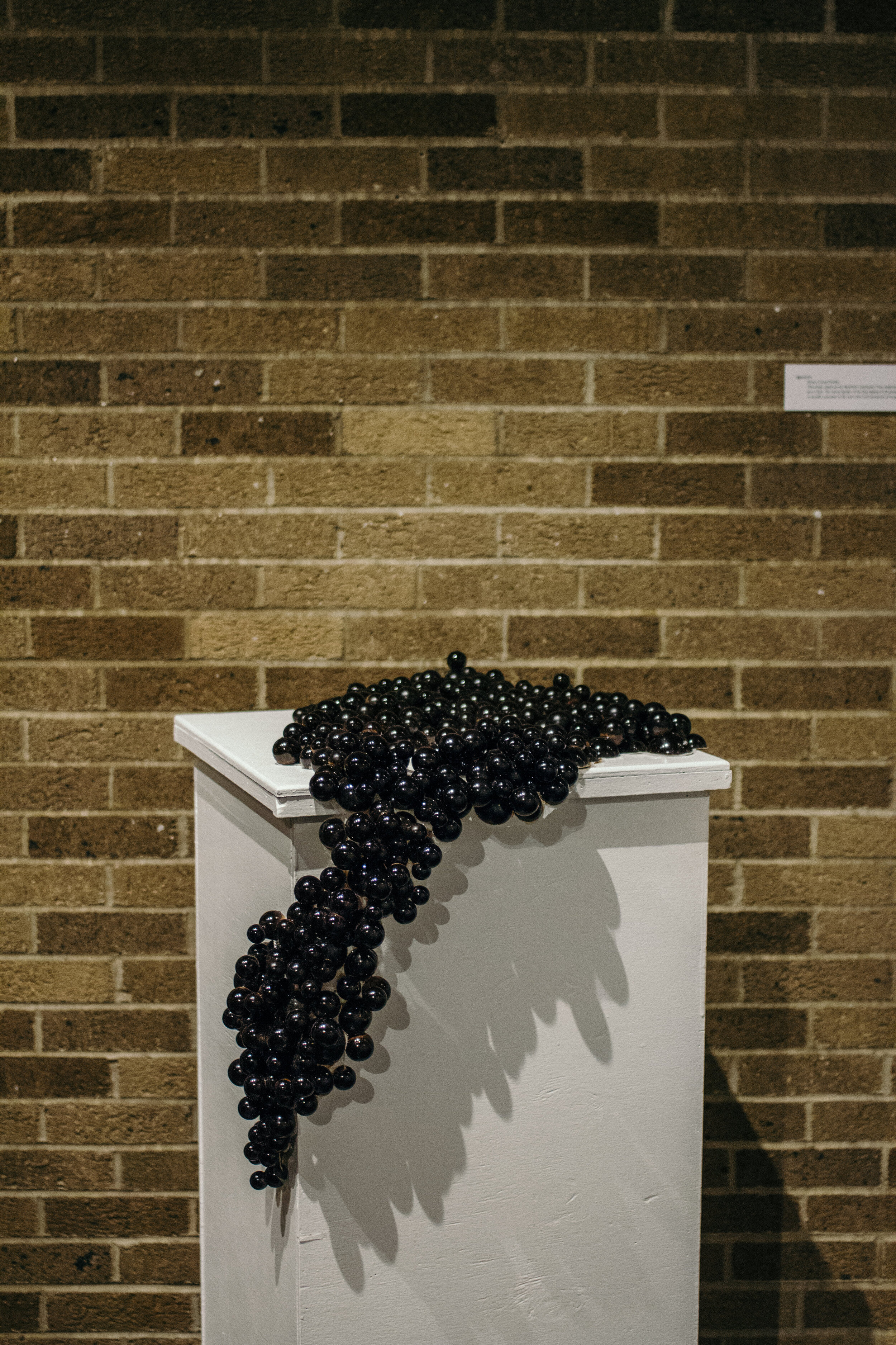
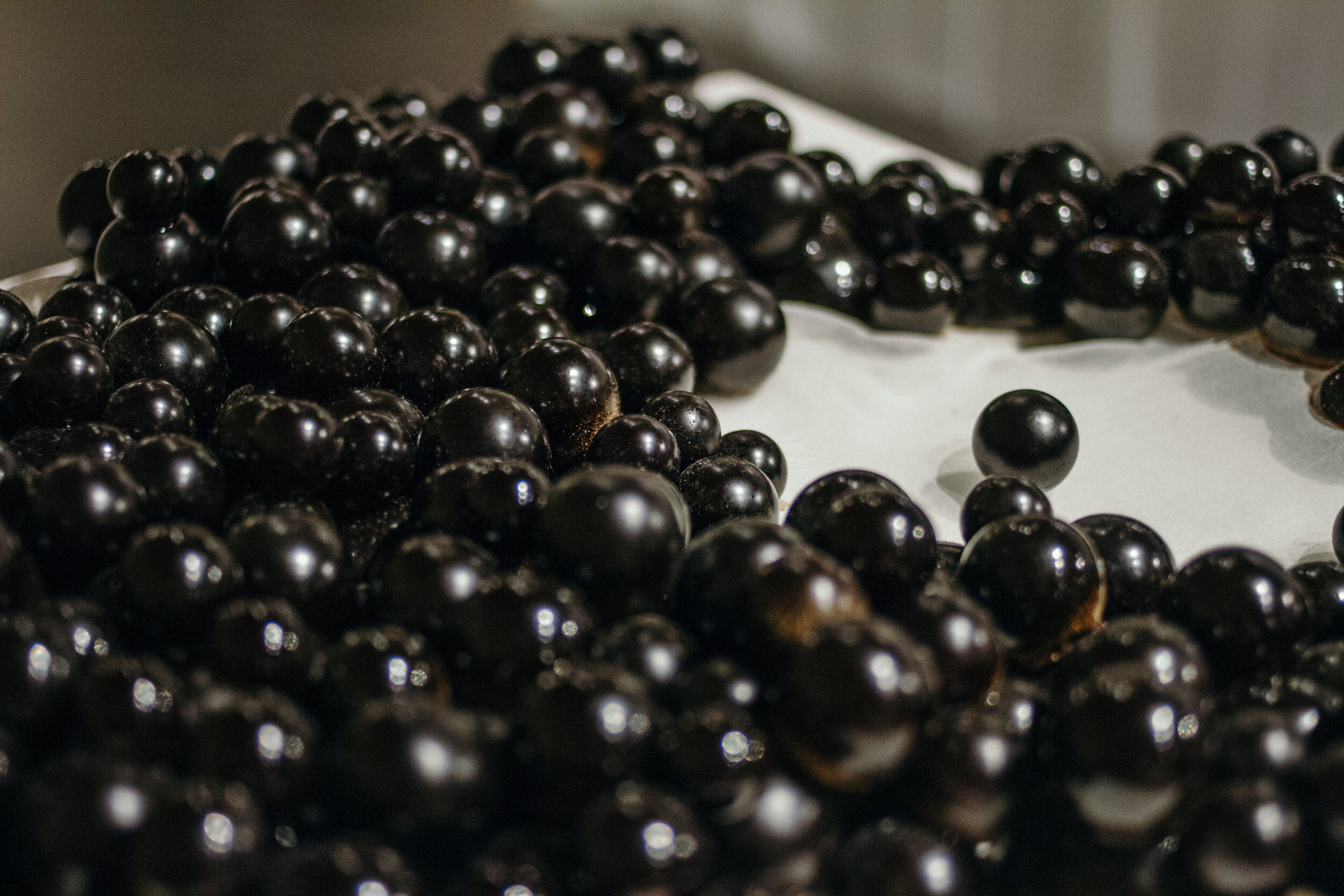
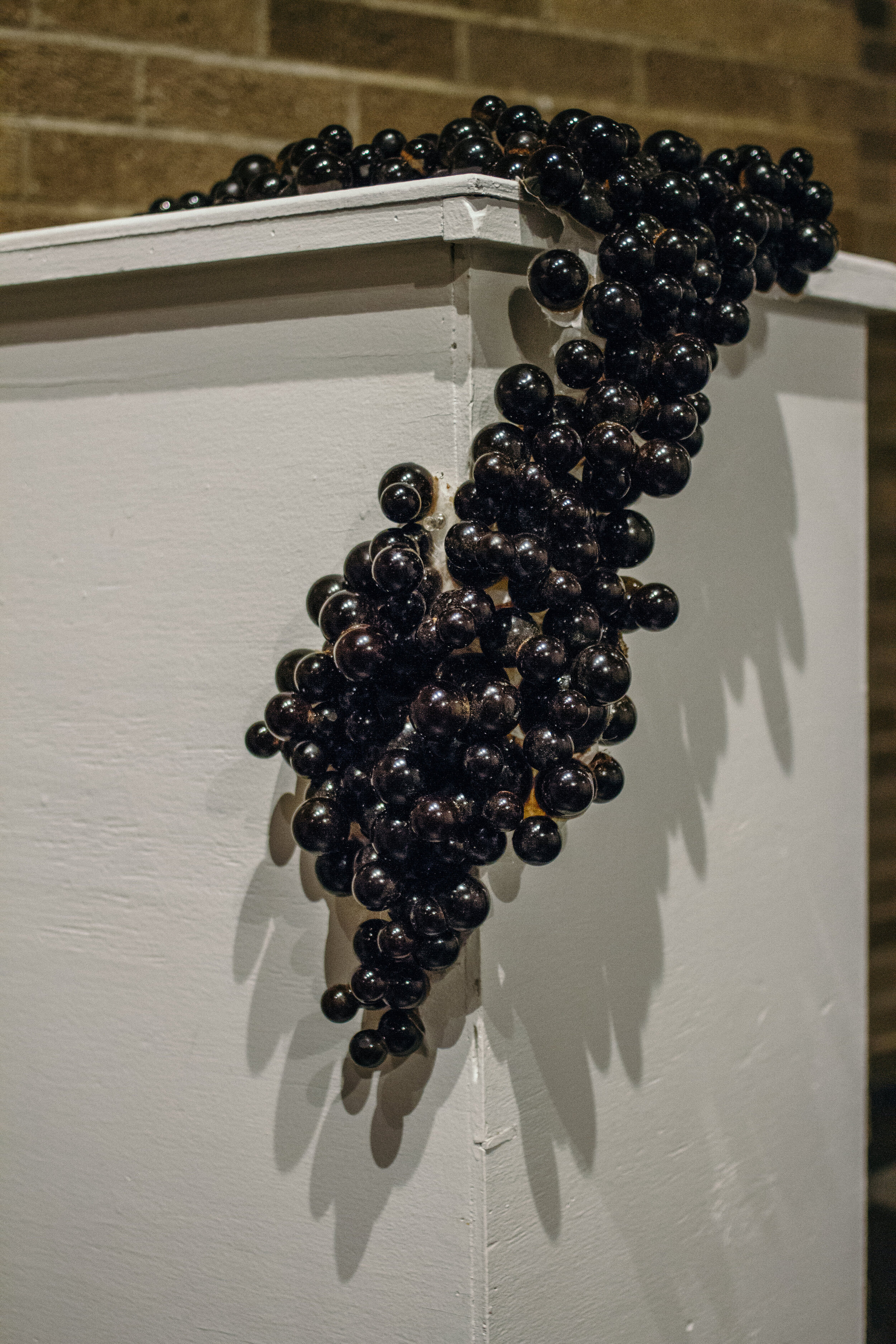
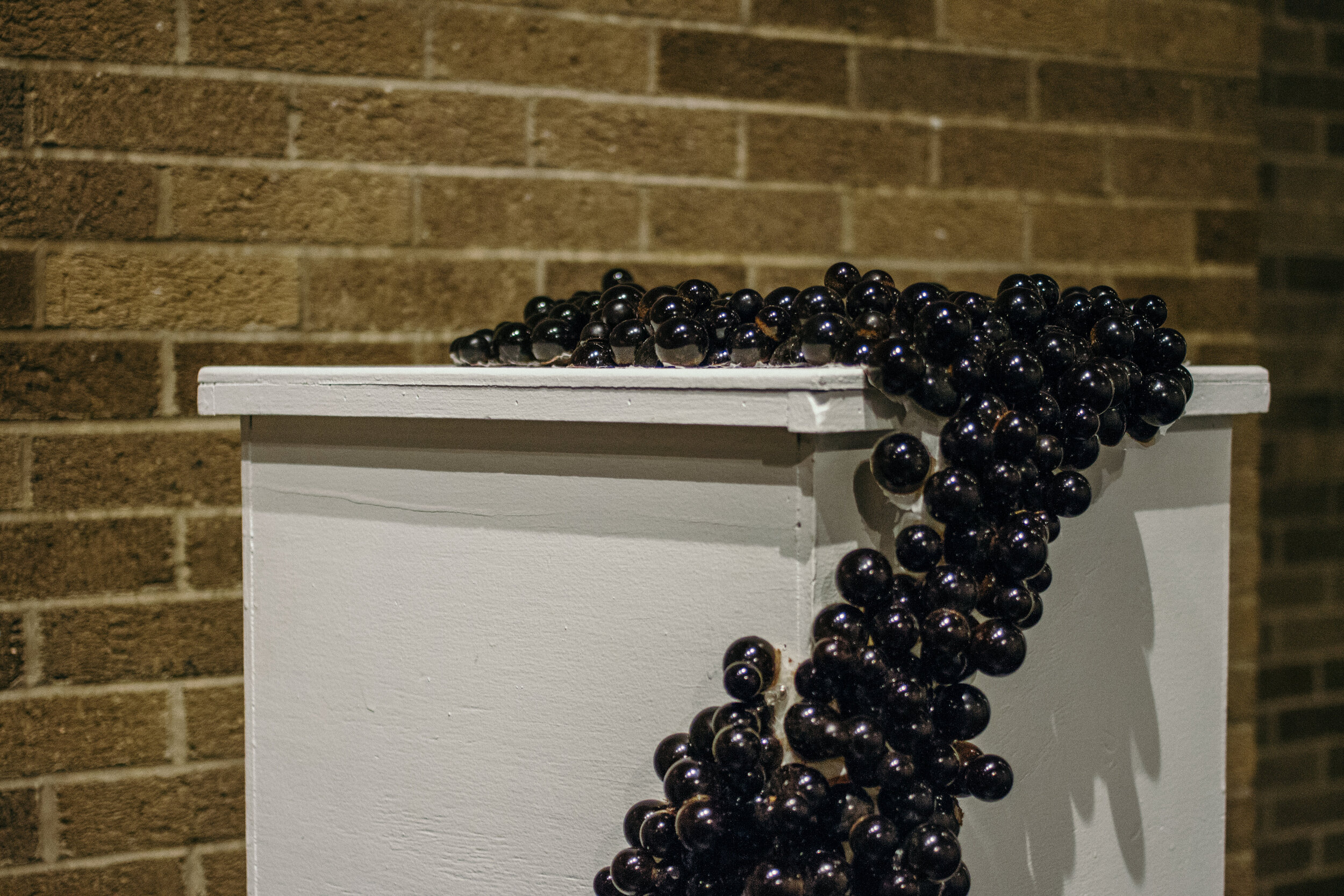
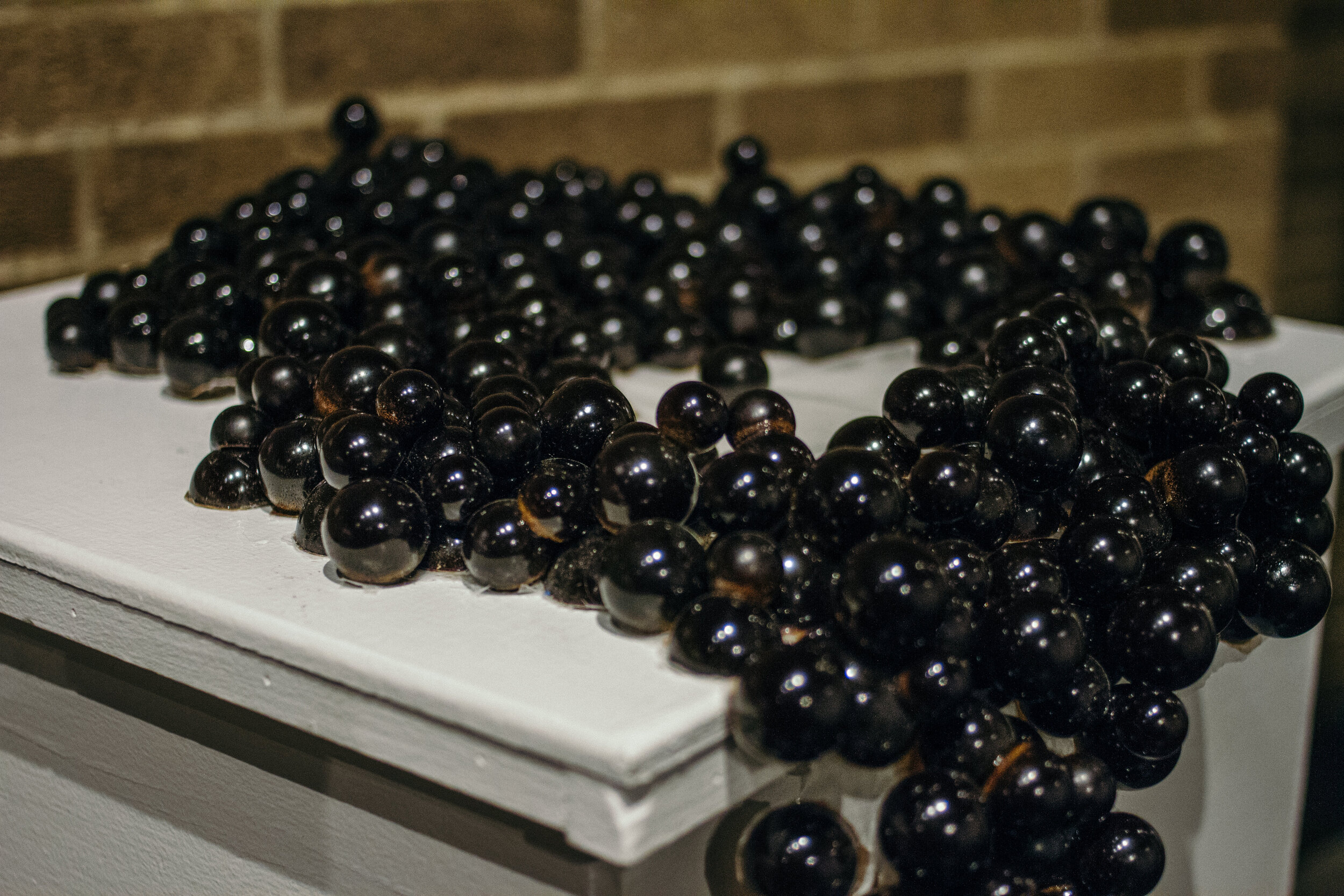
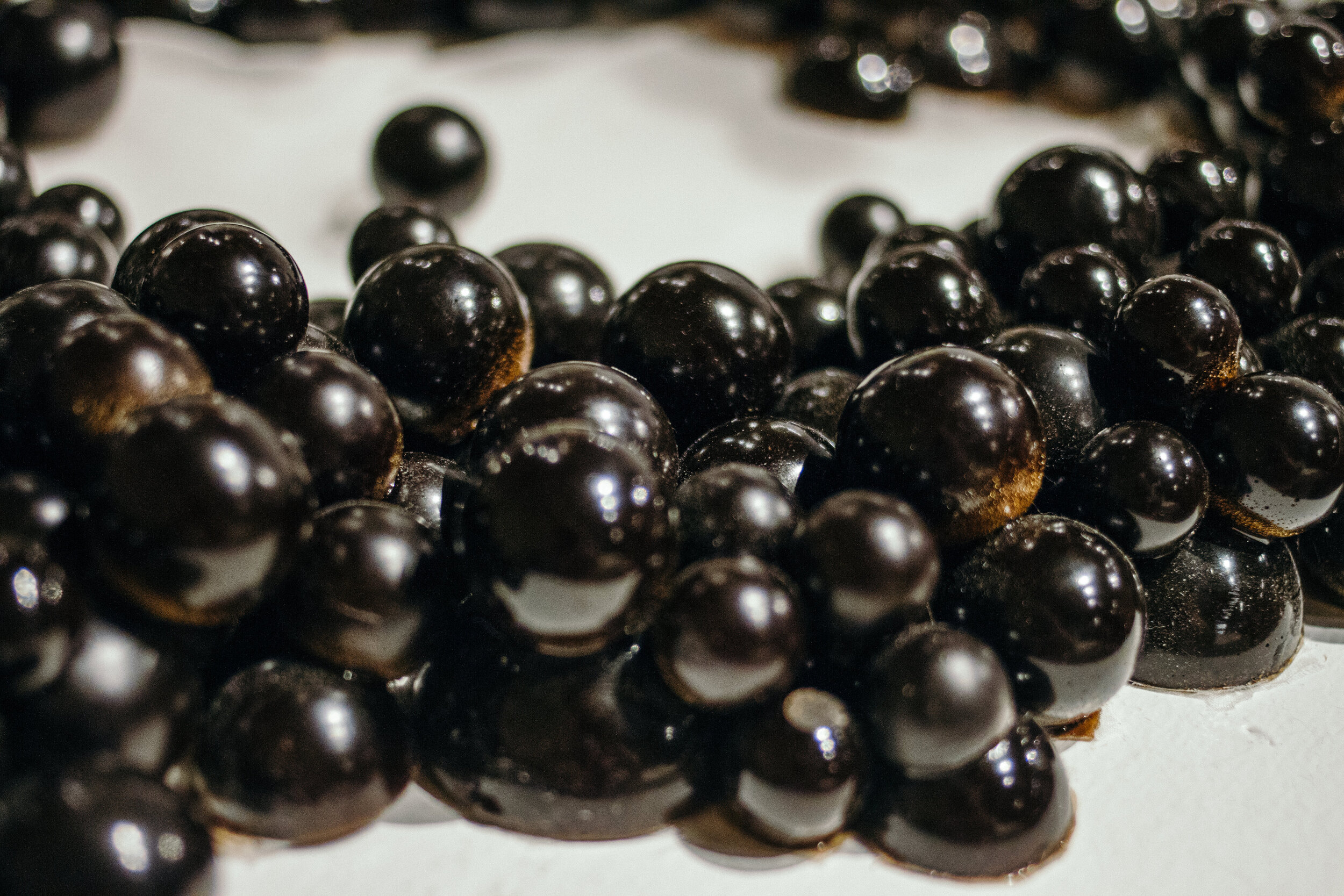
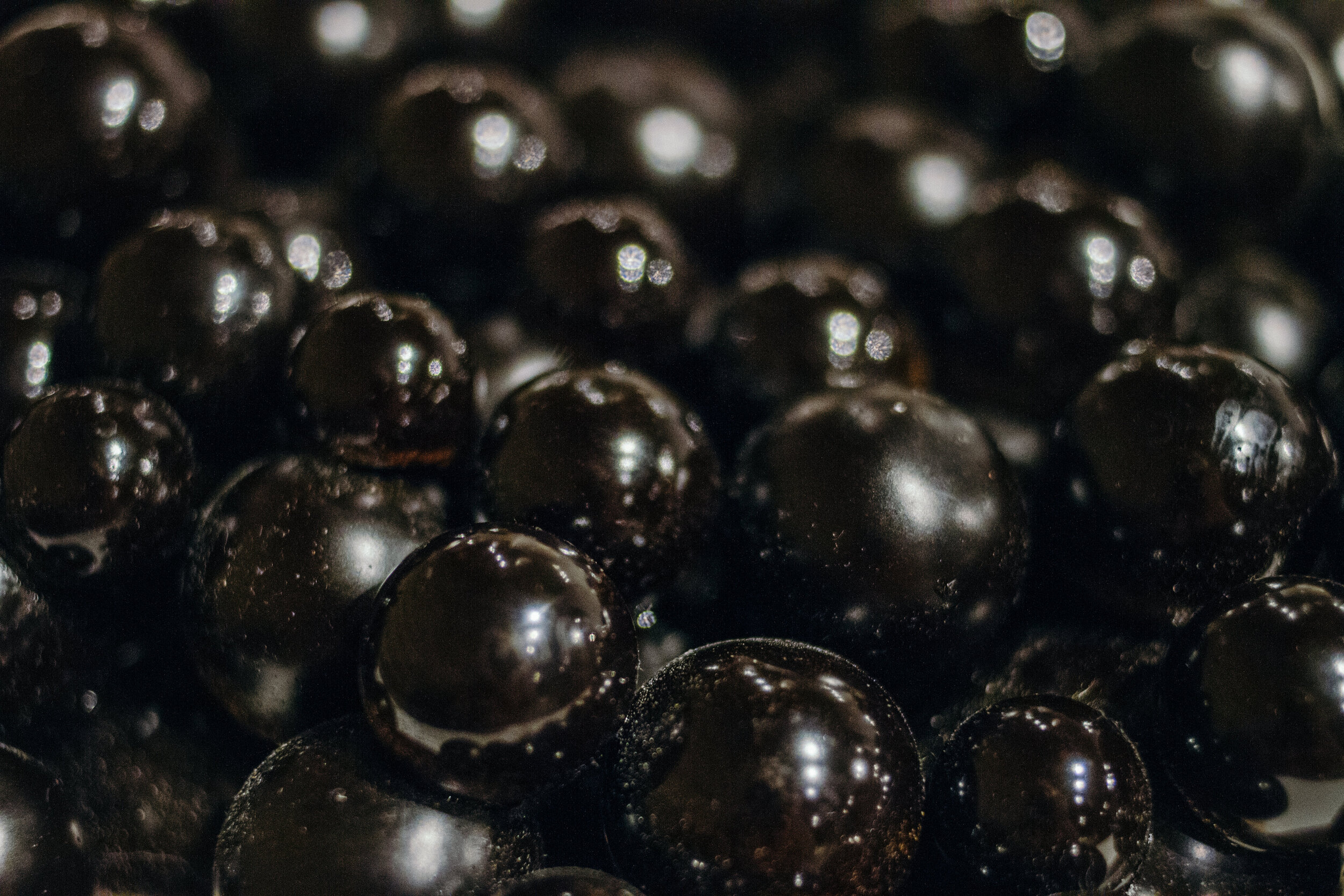
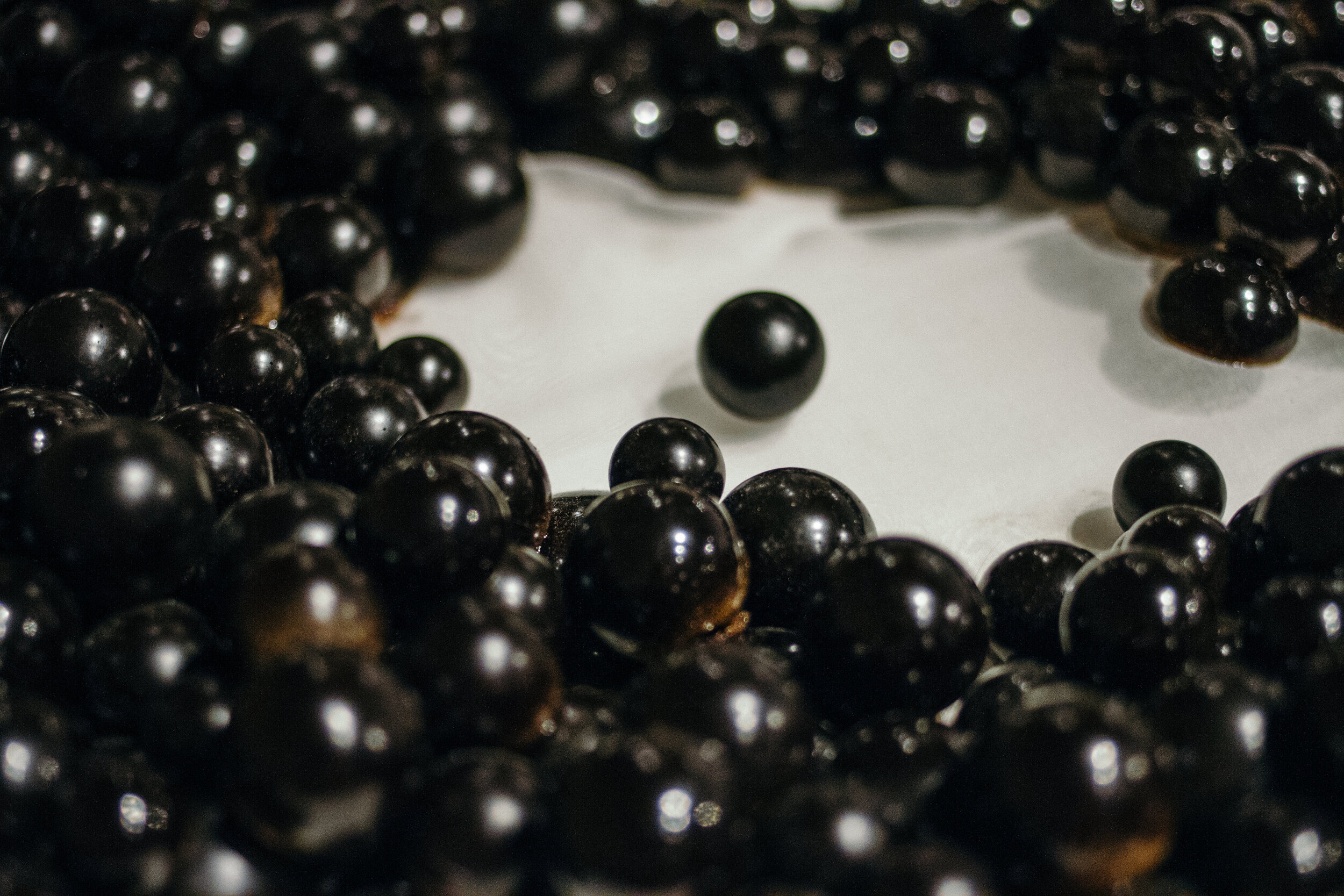
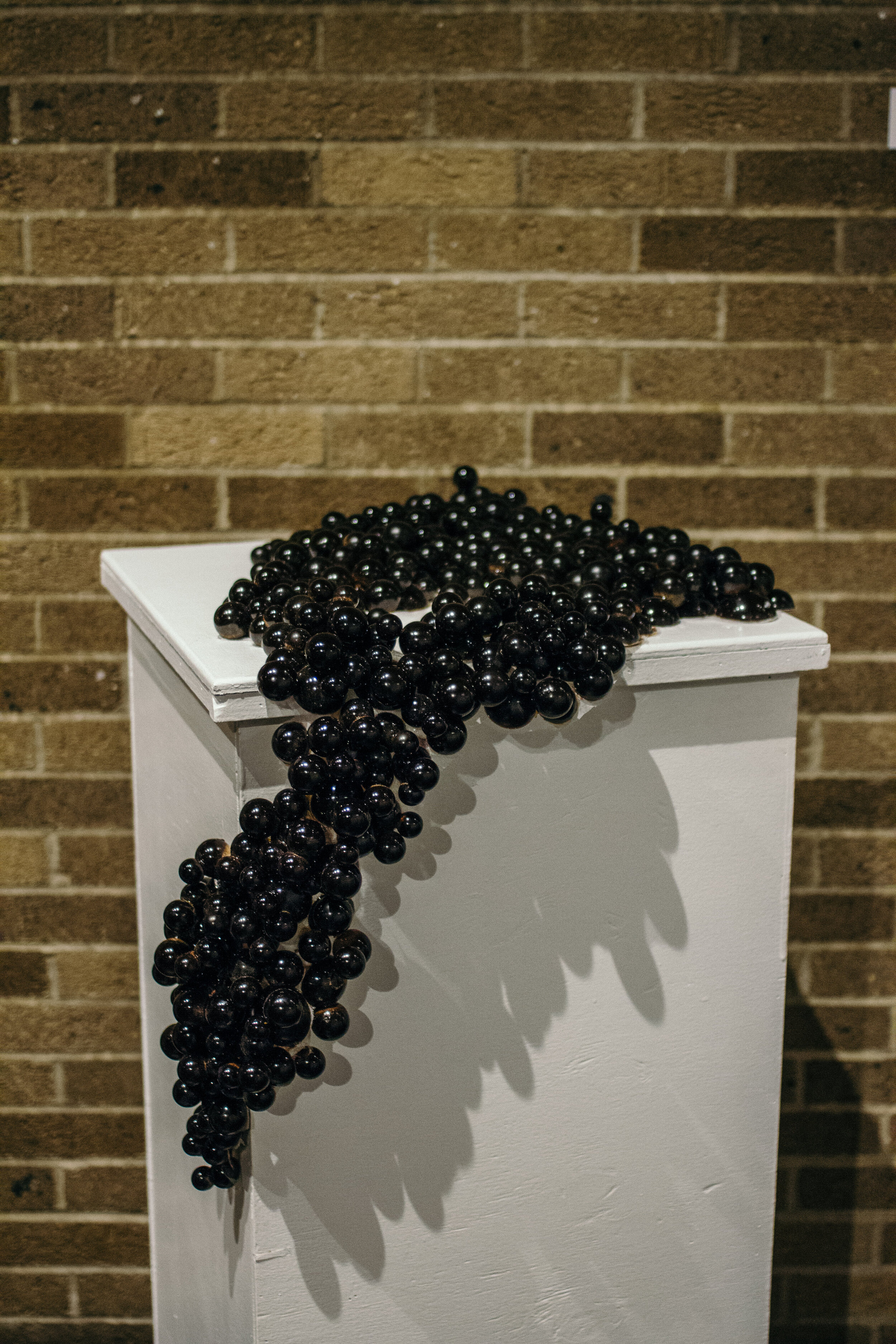
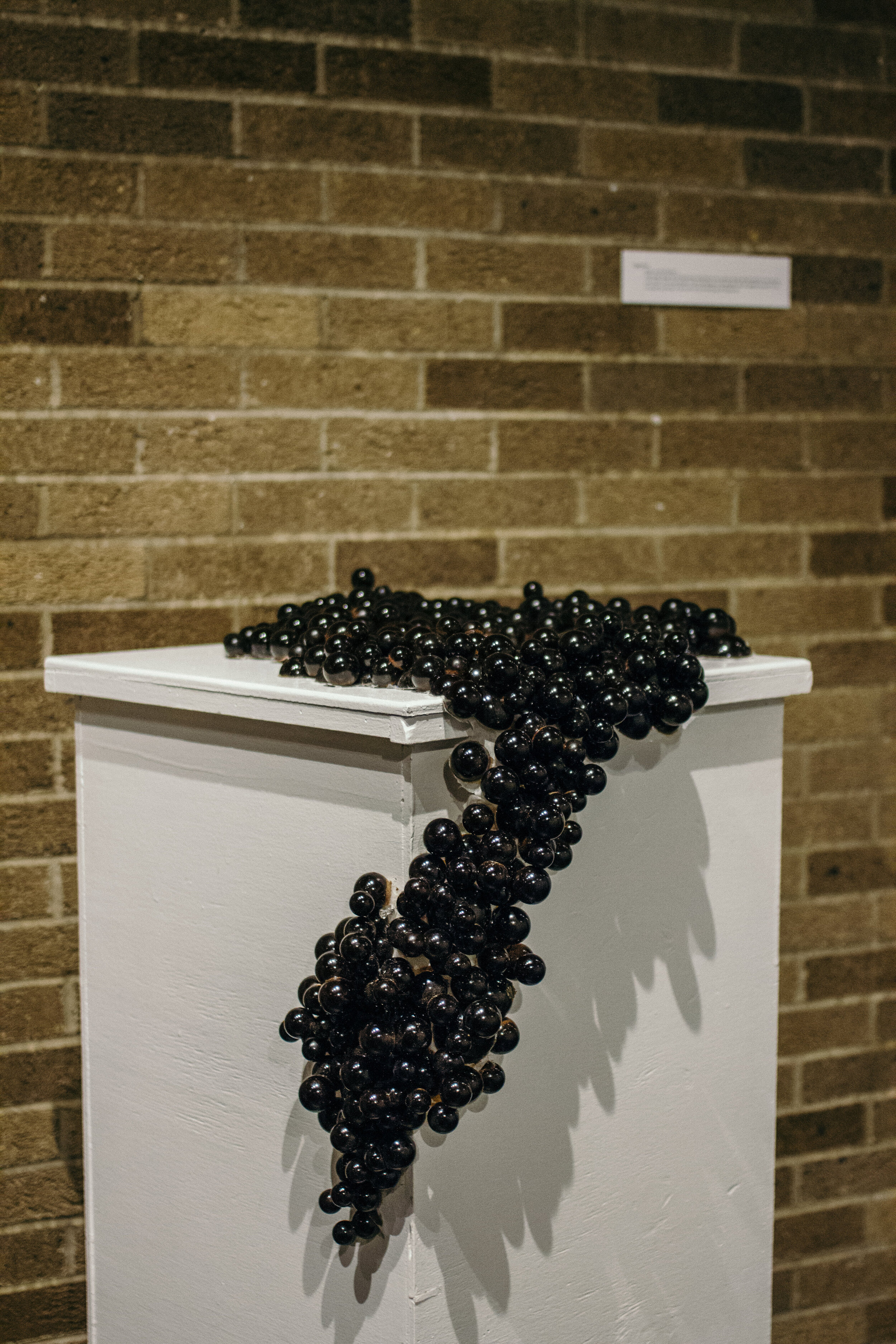
Aggressive
Resin, Cocoa Powder
This study, based on the Brazillian Jaboticaba Tree, explores desire and repulsion as it mimics the tree’s fruit. The visual rhythm of the fruit appears to be parasitic, like an aggressive cancer, but it is actually a product of the tree's life cycle and proof of its growth.
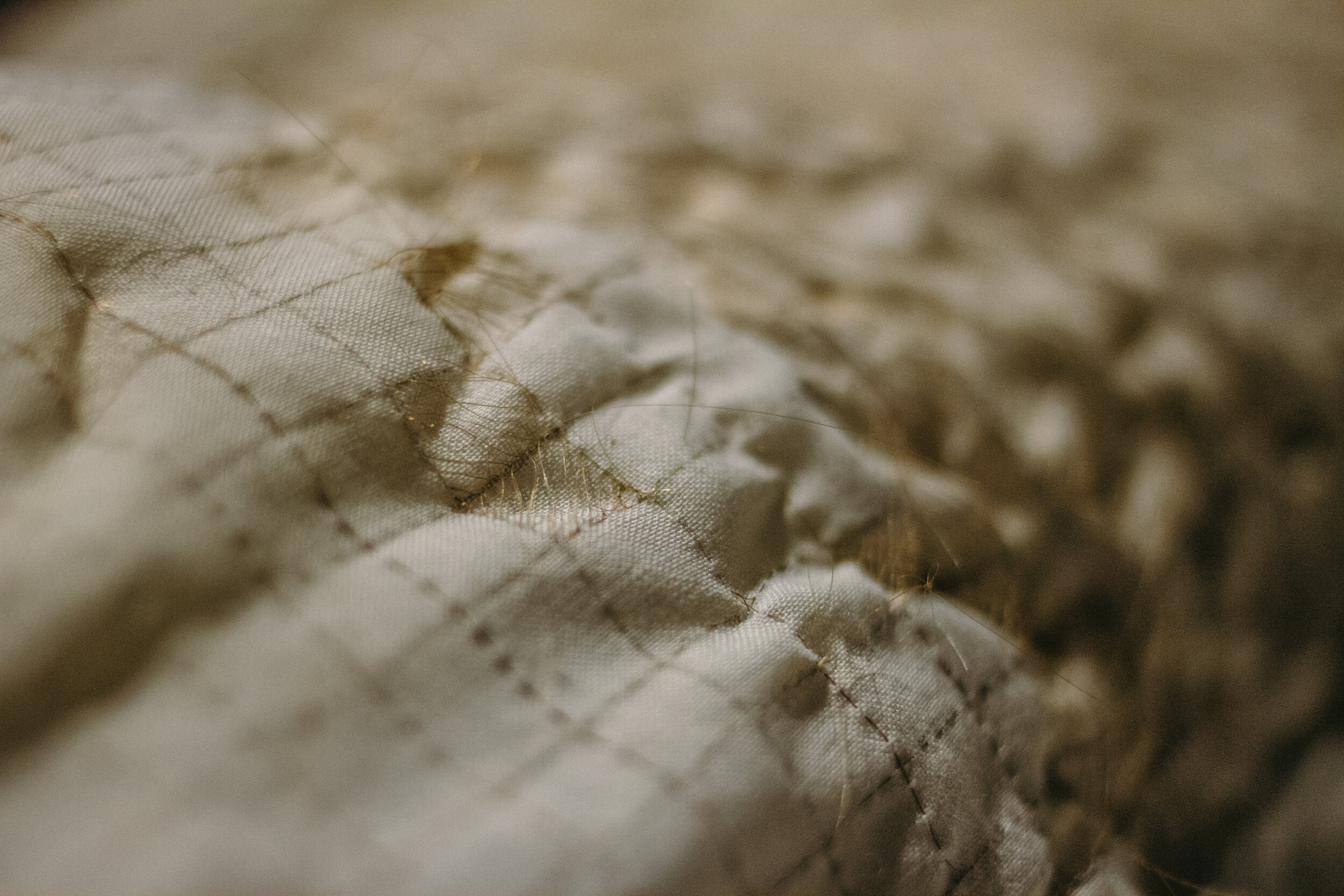
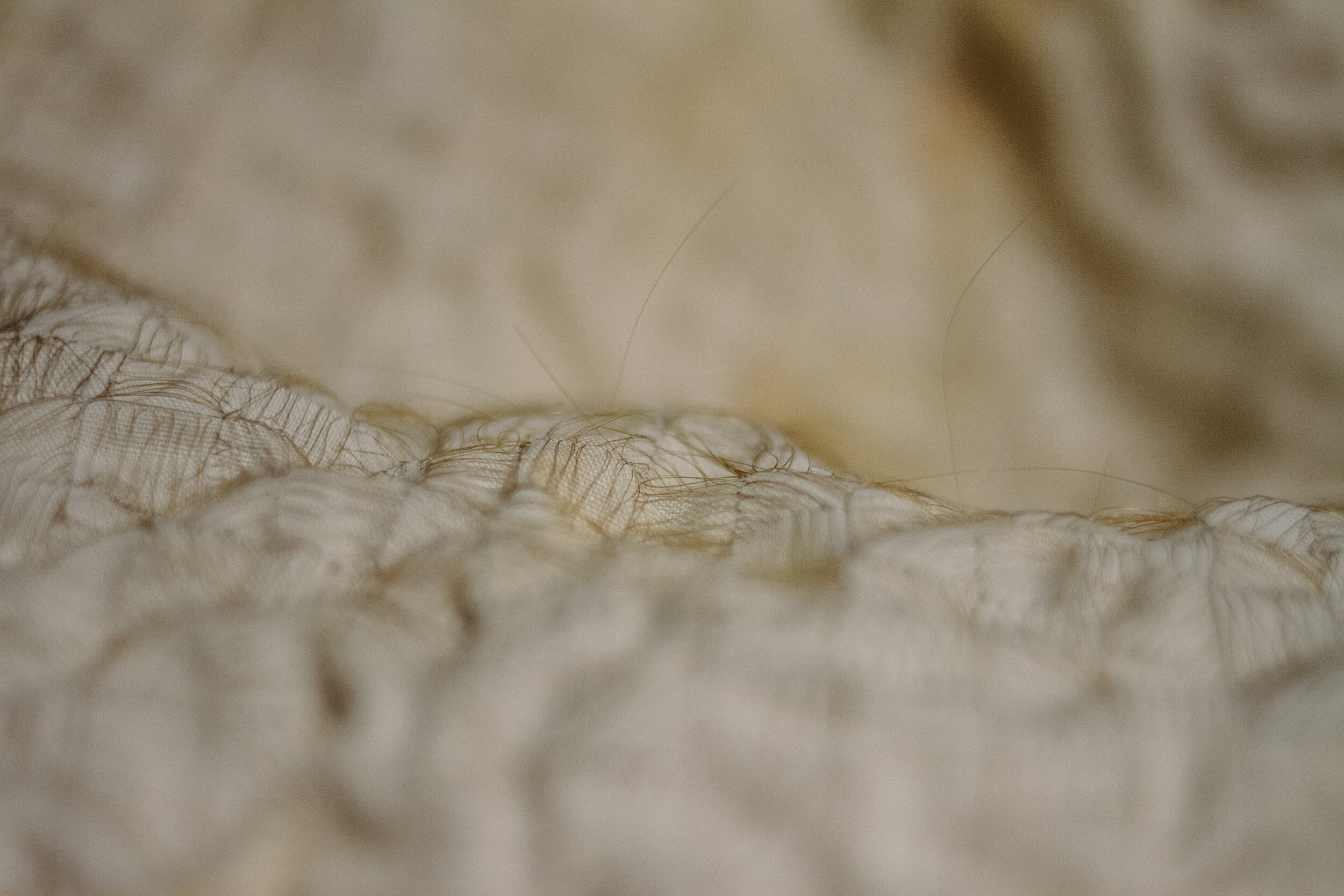
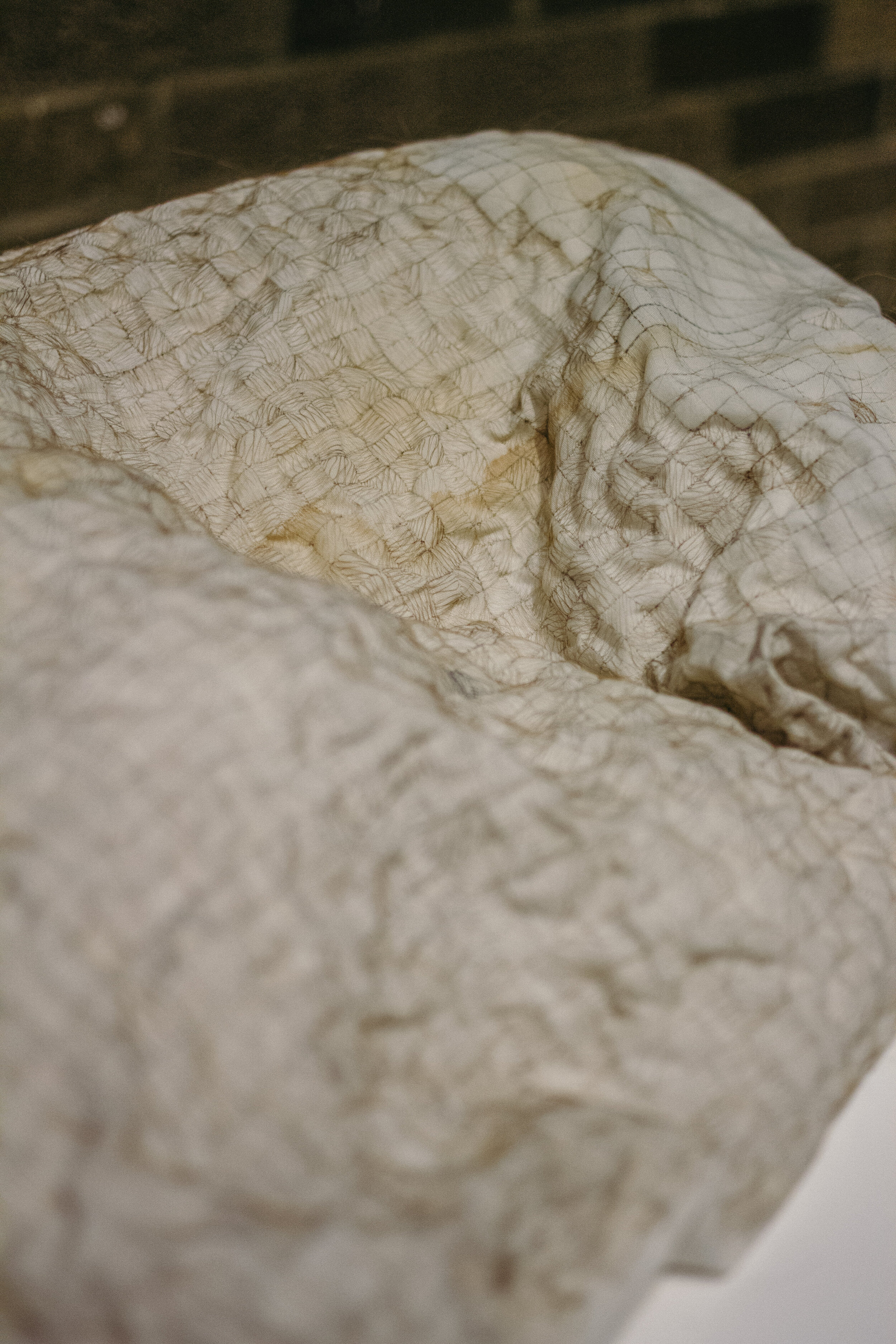
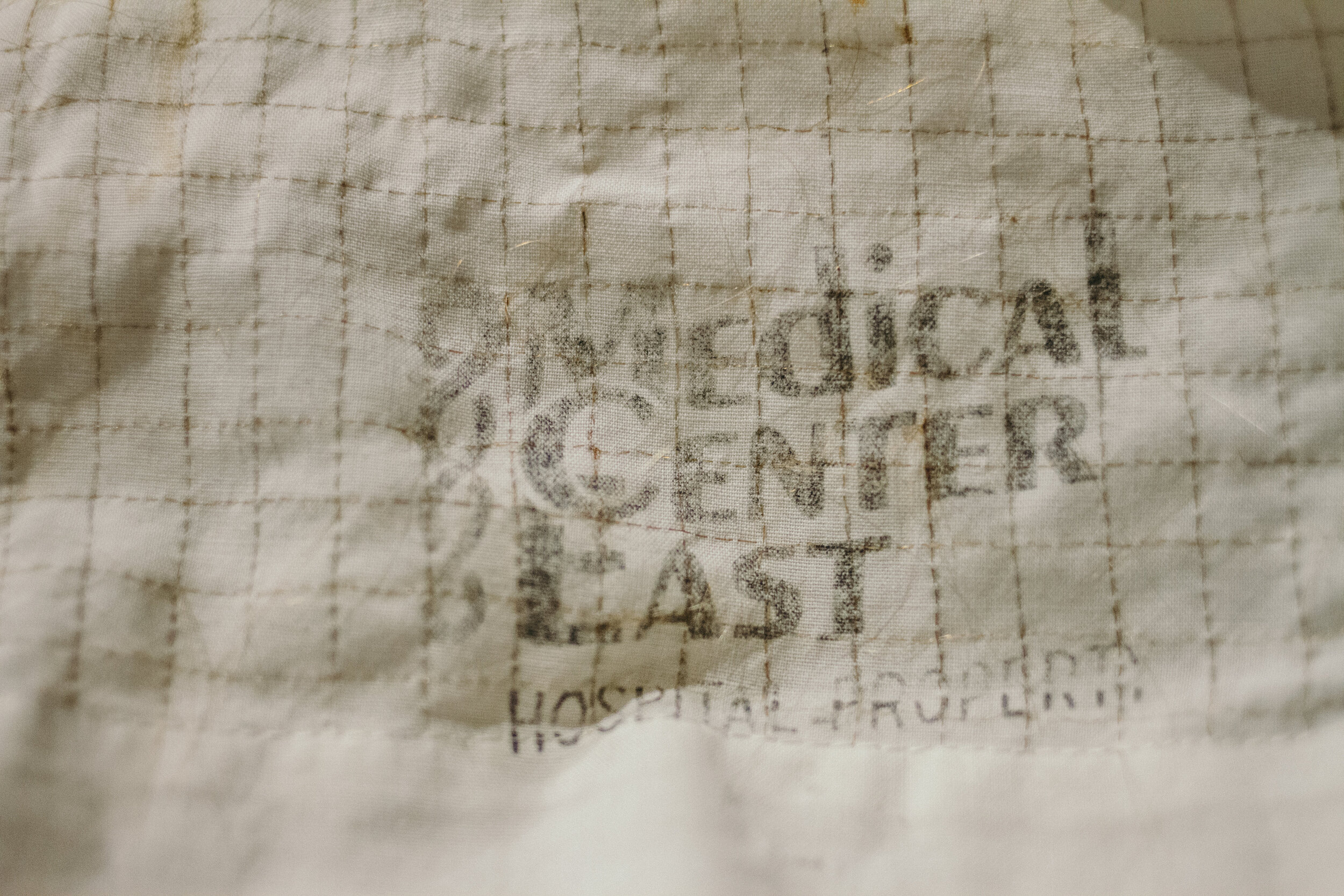
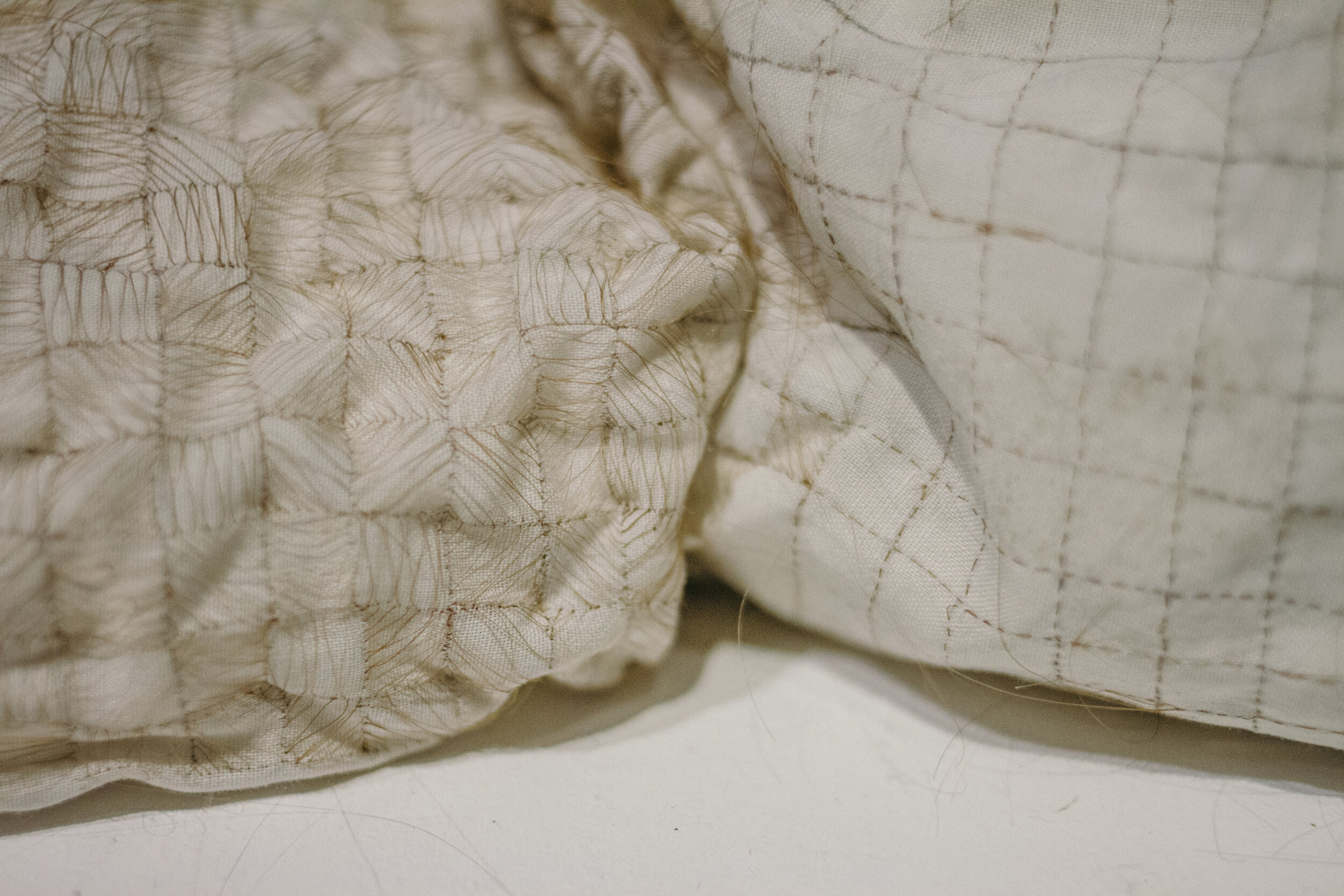
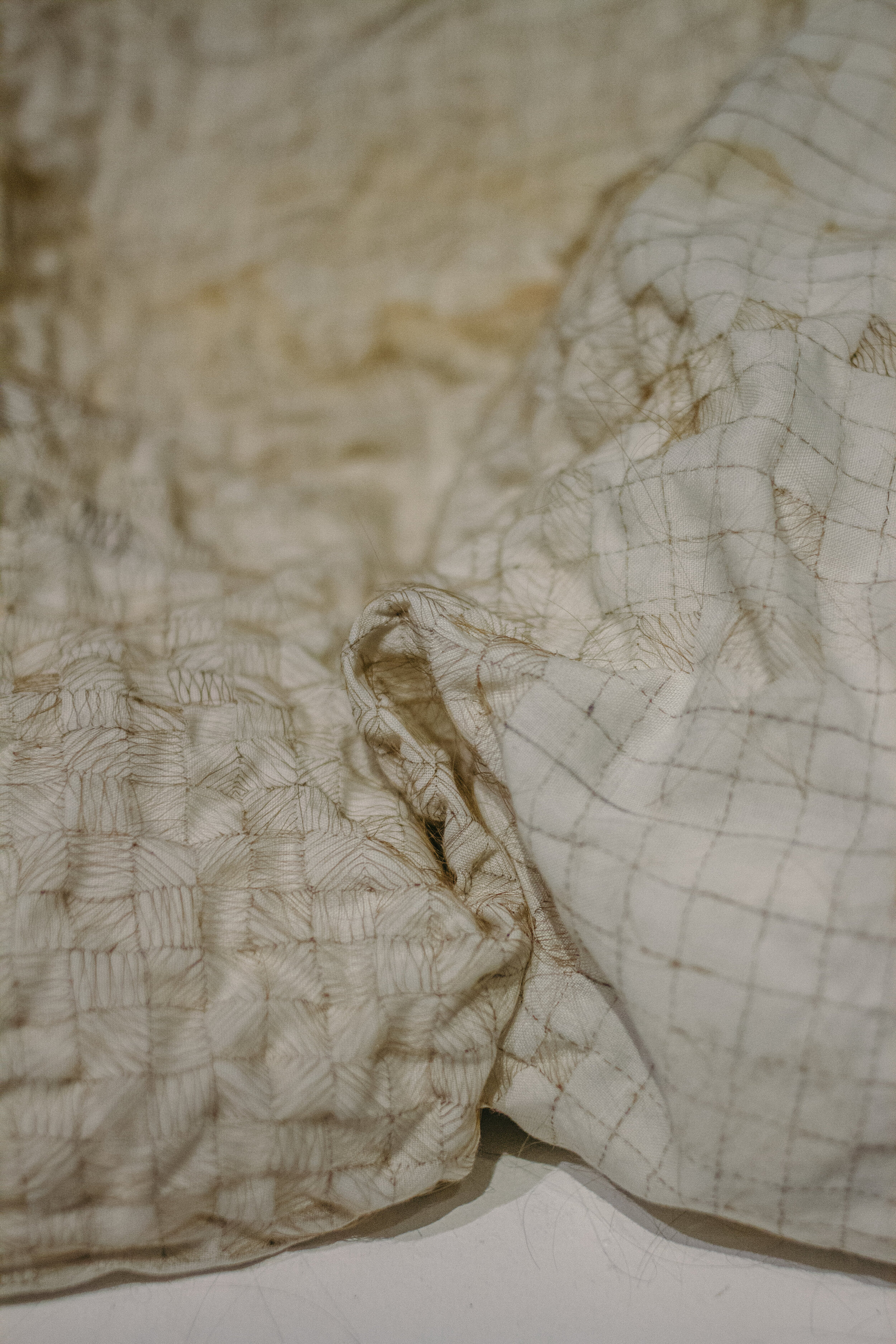
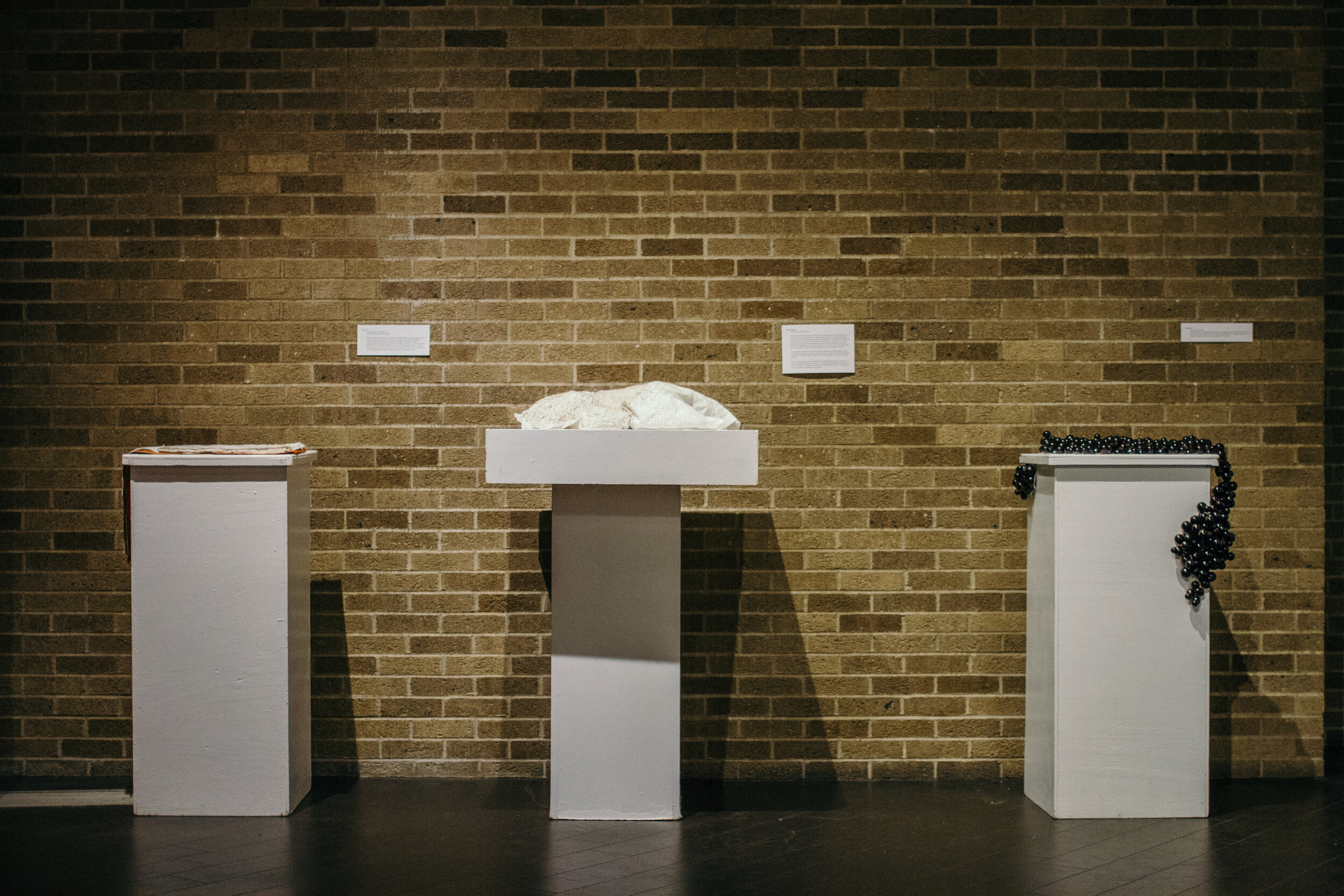
Hospital Property
Human hair on used pillowcase.
During my time in Houston, many people who are receiving treatments from the nearby Cancer Research hospital, MD Anderson, have wandered into my studio. Several of these encounters have been ones in which people have shared stories of heartache, or how they just “needed a good day and came to see some art, without the kids, for the first time in a long time,” or how they packed up everything just to get treatment from this place. They’re moments of deep sorrow, half-smiles, and gratefulness for those caring for them. A lot of these conversations started when they noticed my previous hair embroideries. Many have had to say goodbye to their hair.
I’m grateful for the people who have been willing to share with me. Though nothing I do or say can make these things right, or make up for what is lost, it’s my hope that through materials and a willingness to listen that people will continue to share stories and feel heard even in the hardest moments.
In 2018, someone gave me this stained pillowcase, stamped “Hospital Property,” and now it is embroidered with a grid of hair. As a whole it creates a landscape, undulating. From right to left it fades to an outline— a reminder of what once was. From left to right it grows— moving from an outline, one of many, to the hope of a new growth.
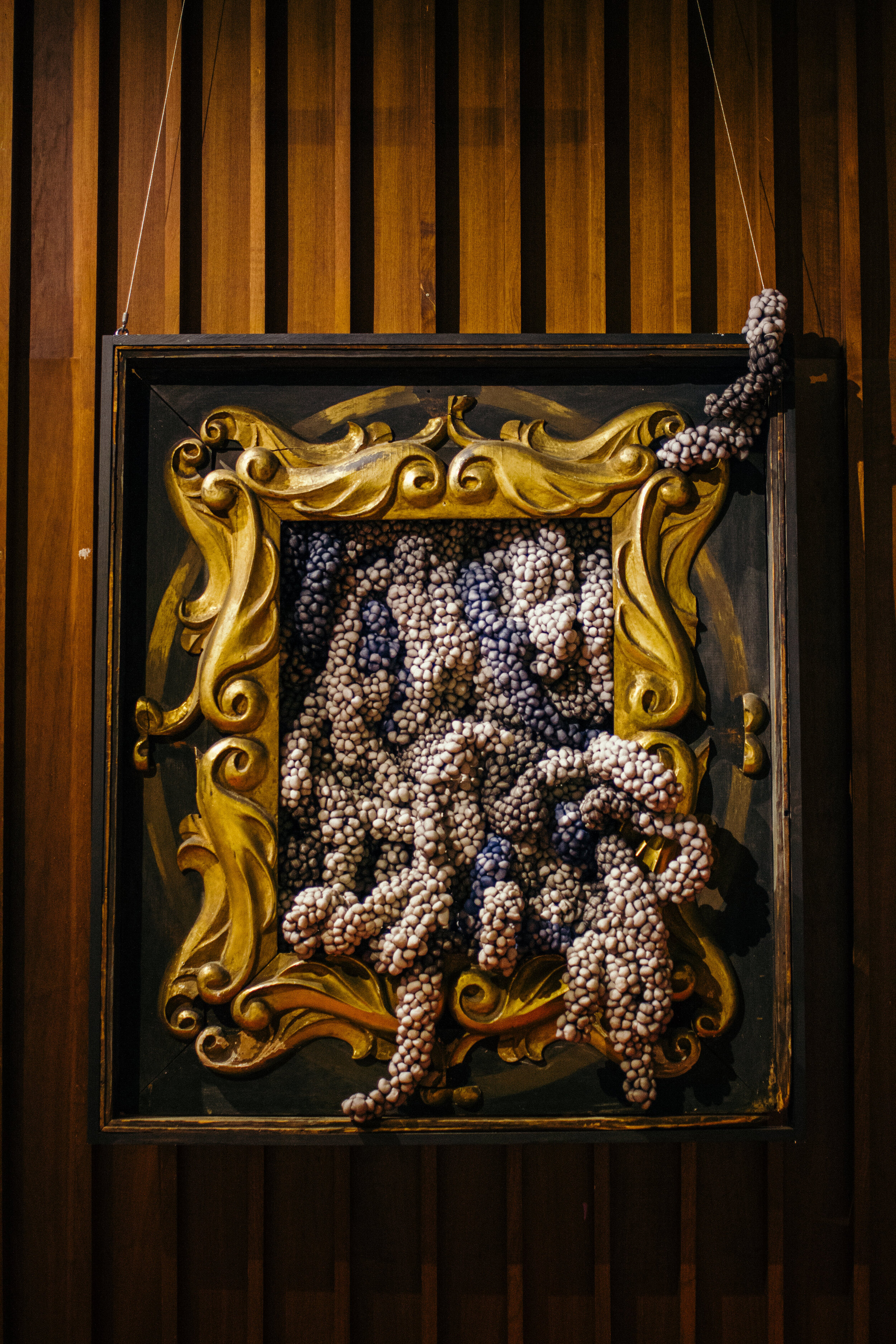
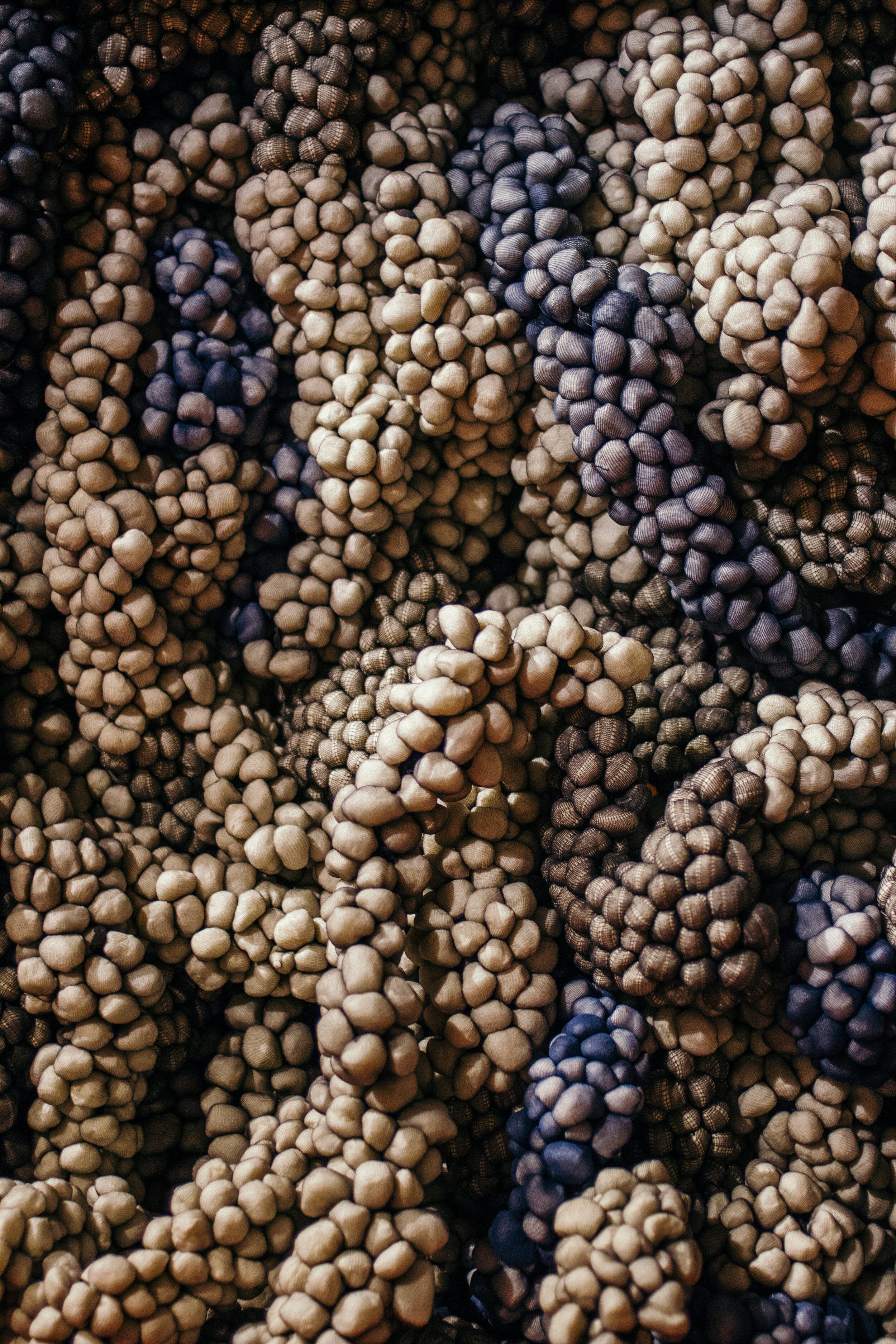
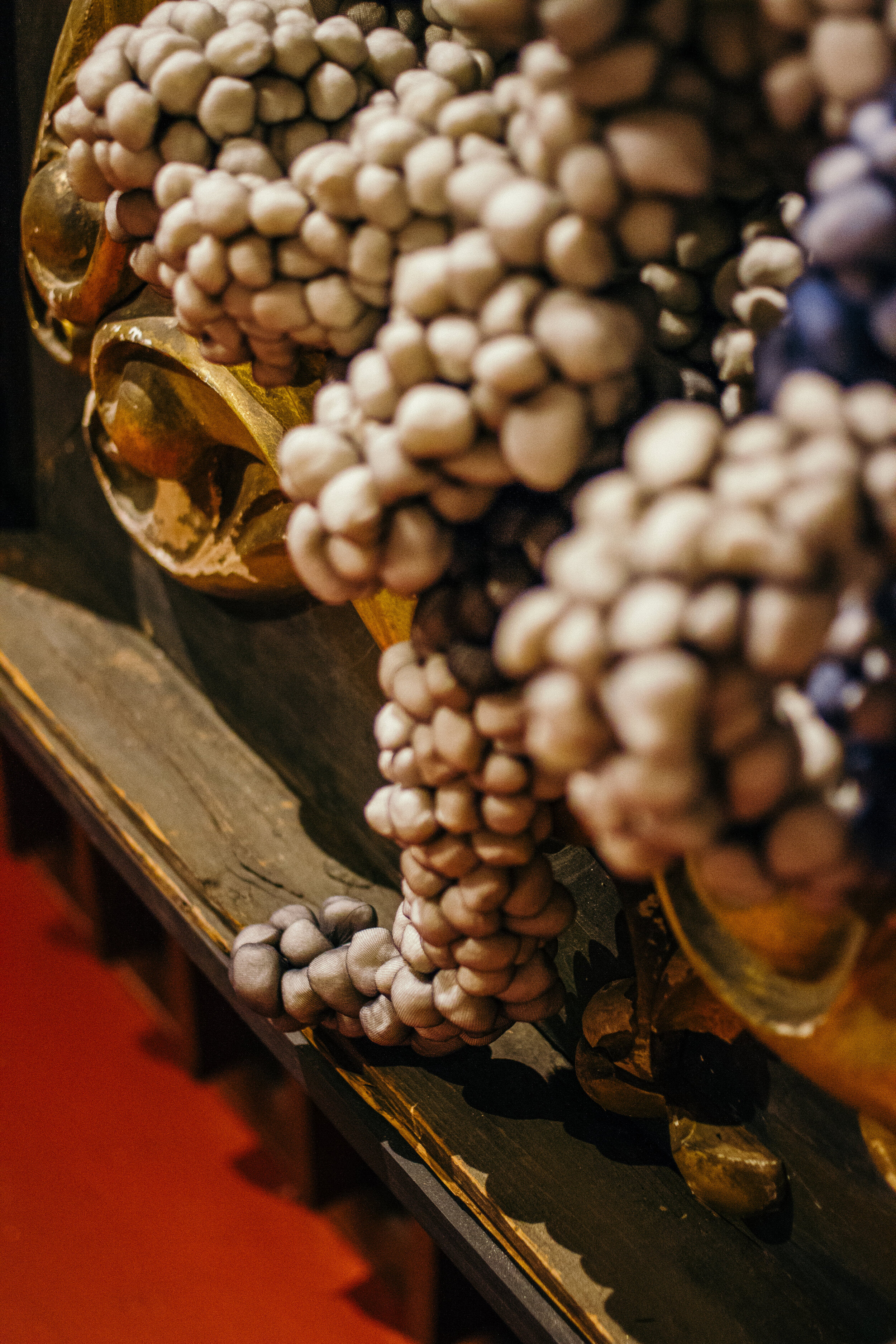
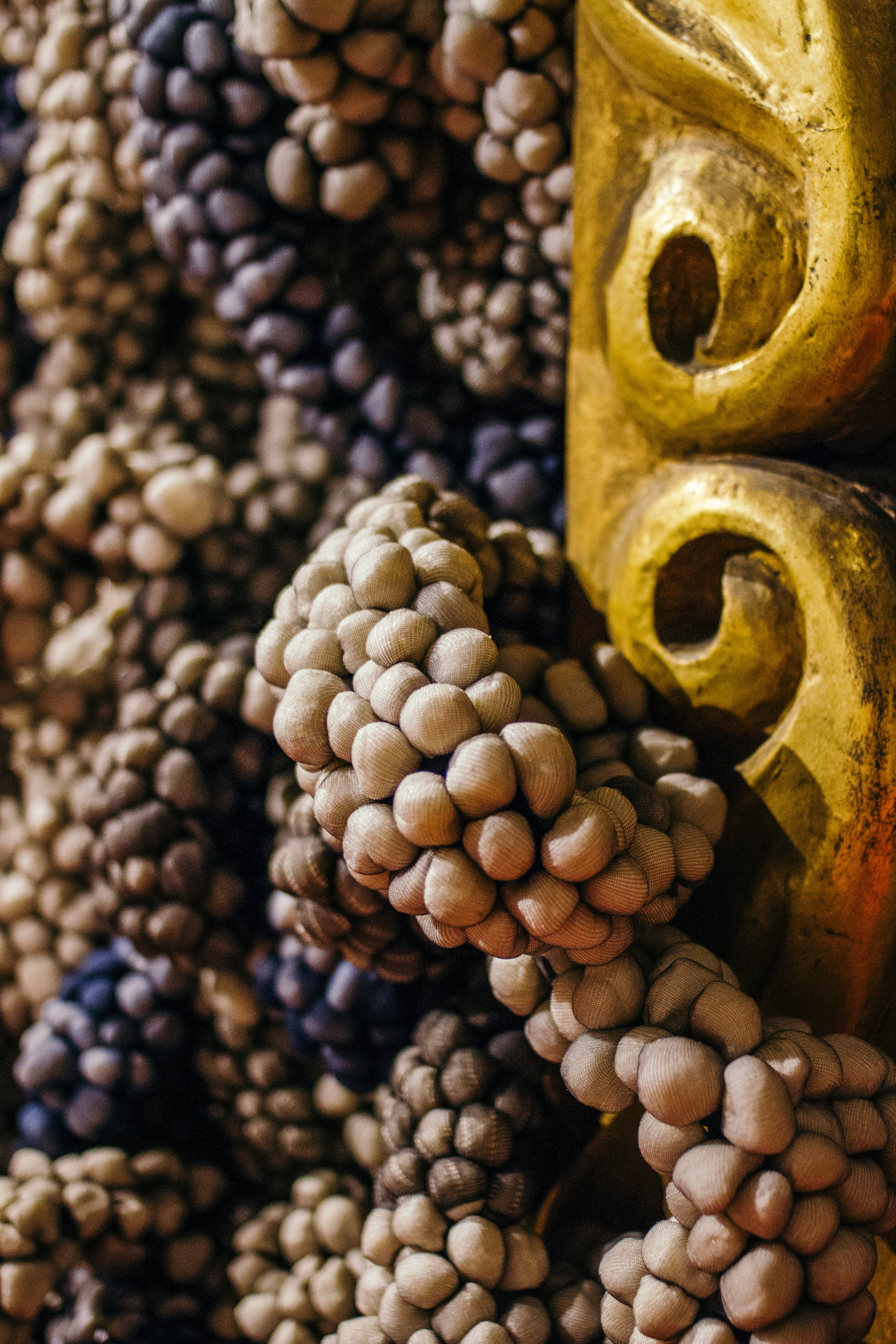
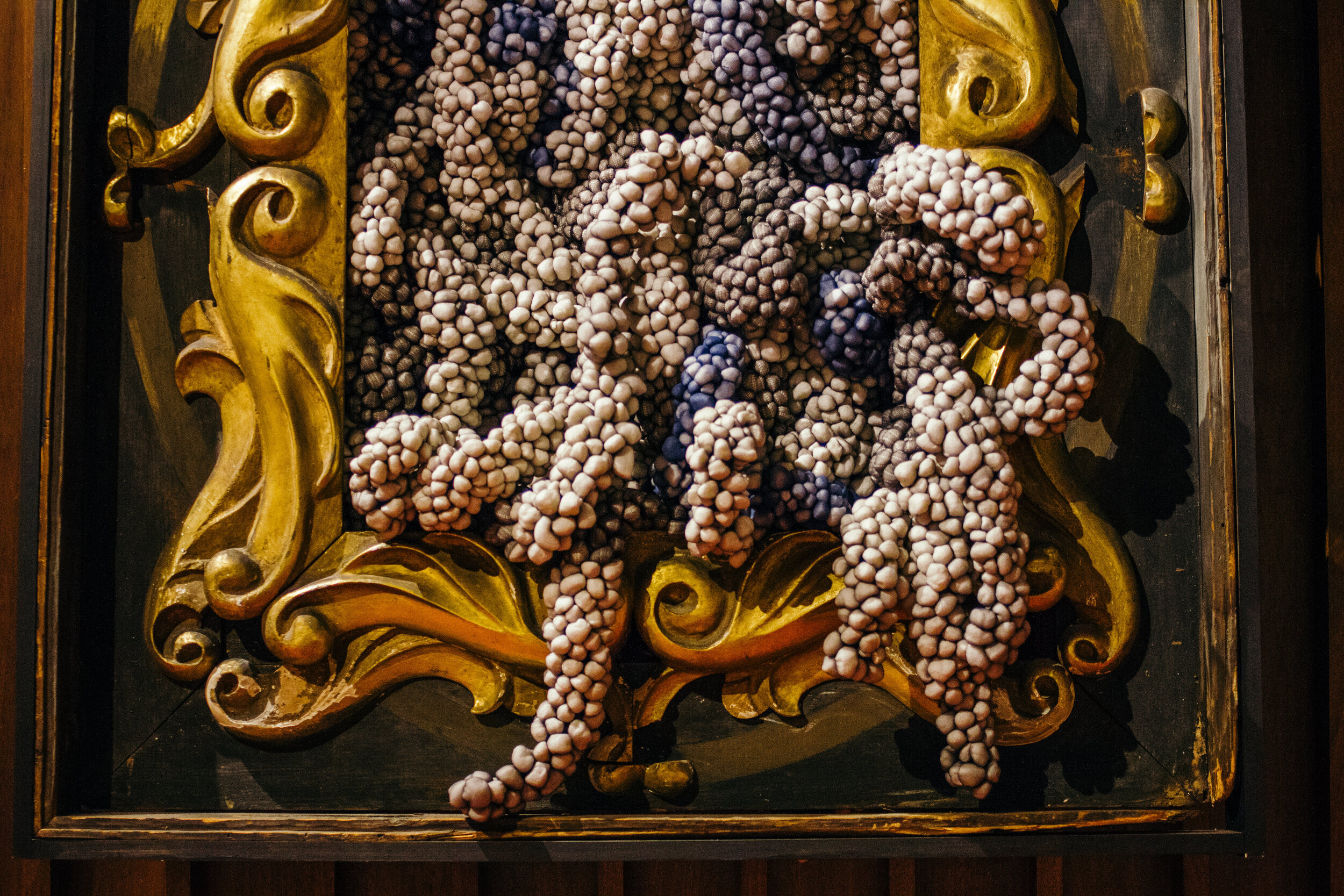
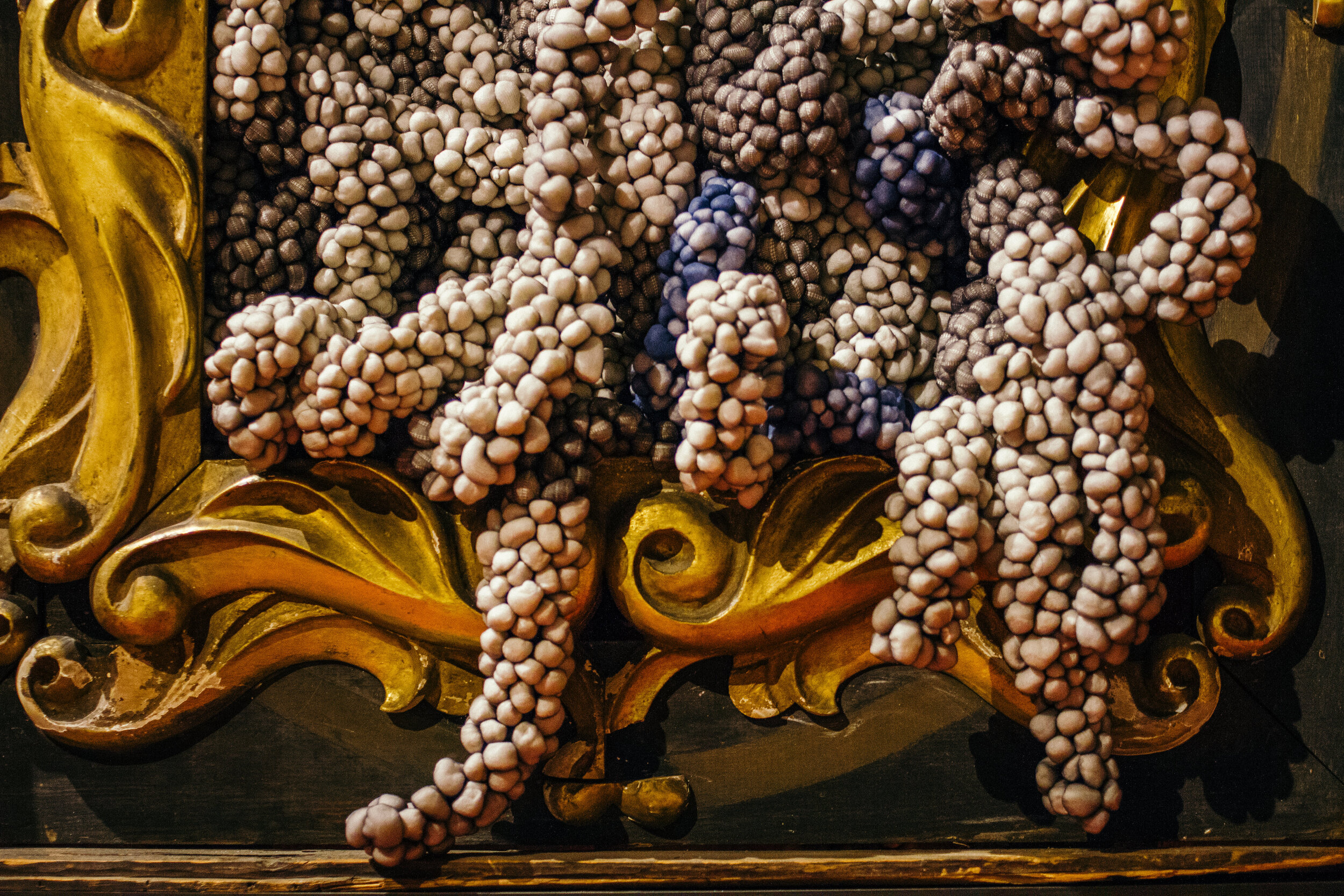
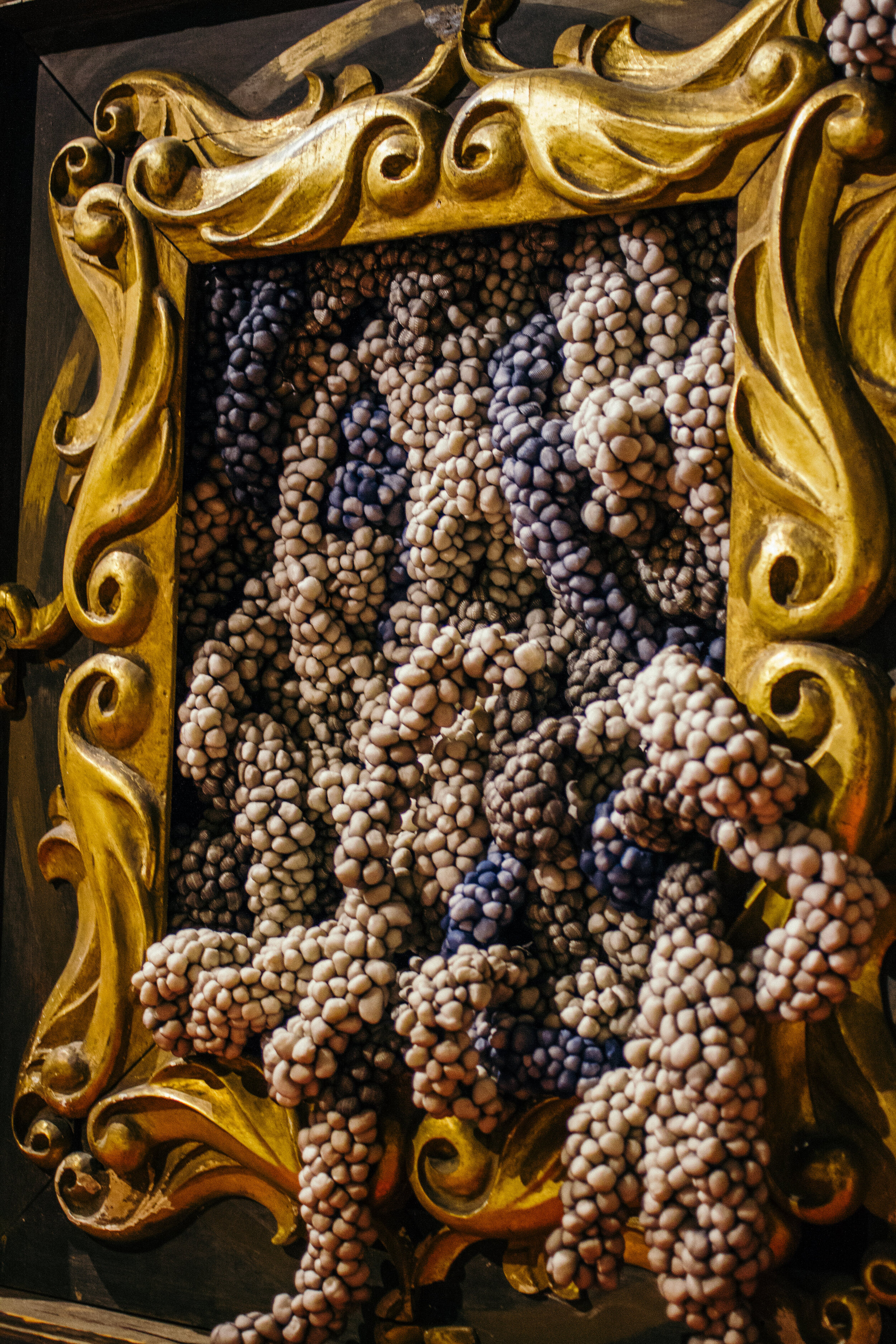
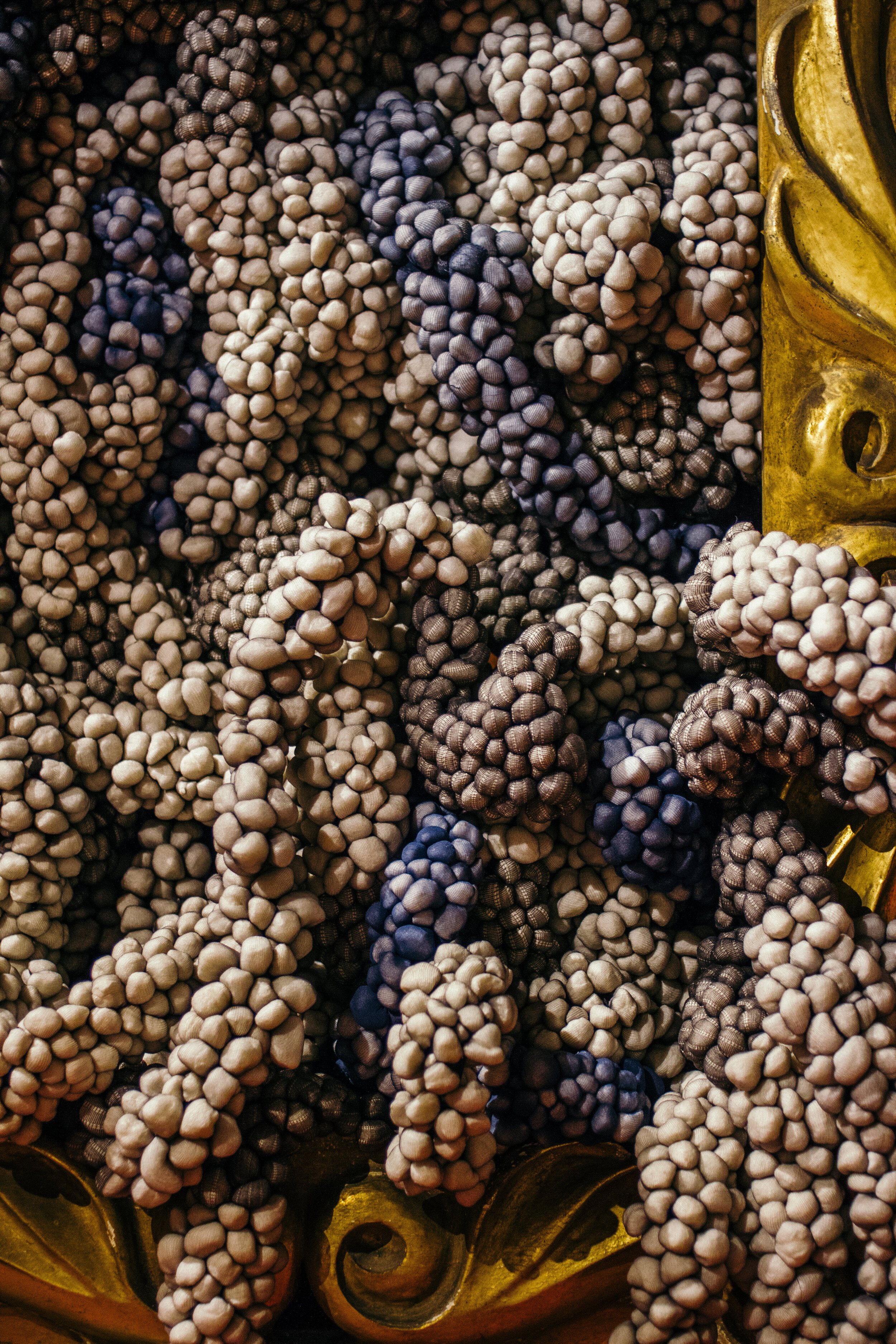
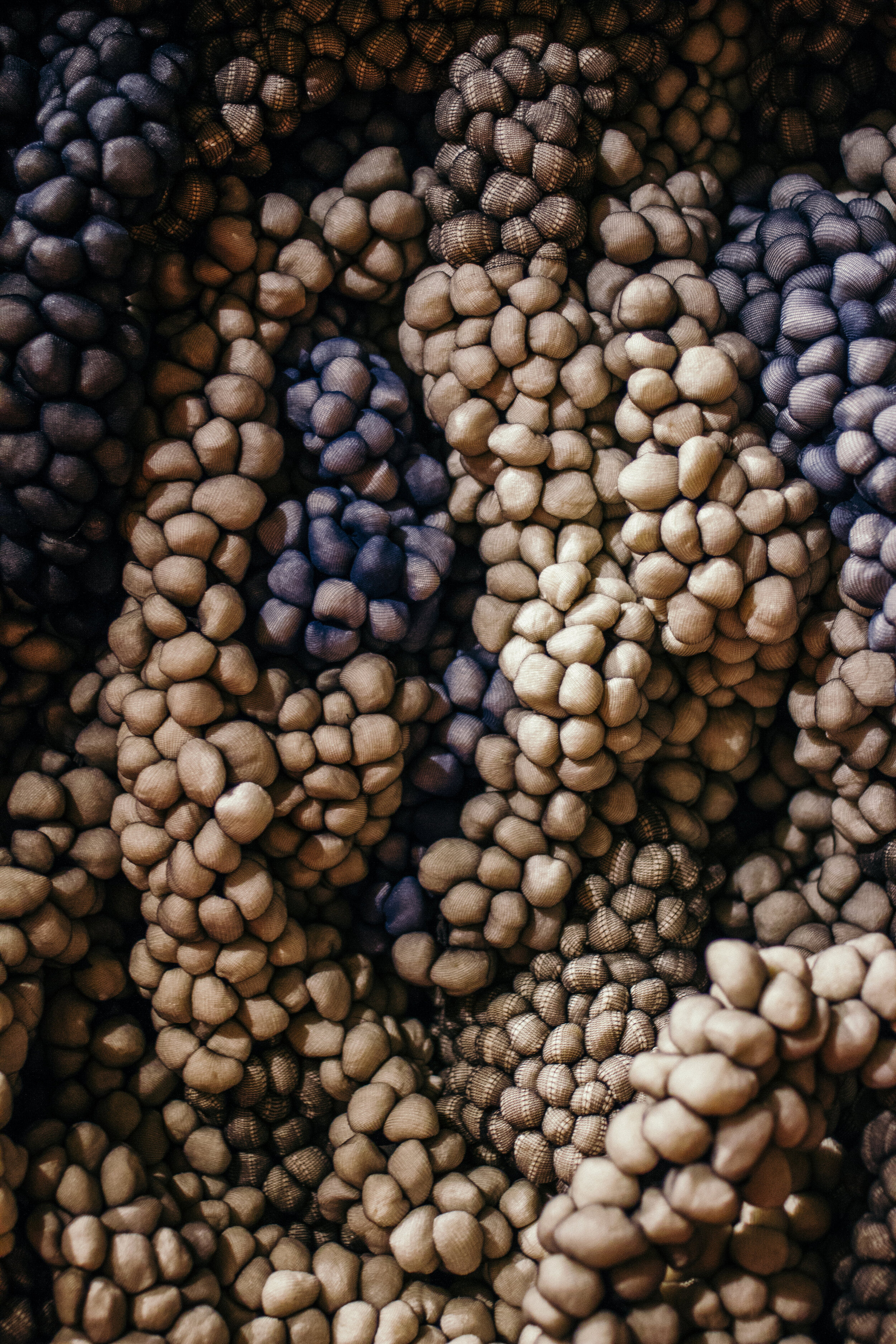
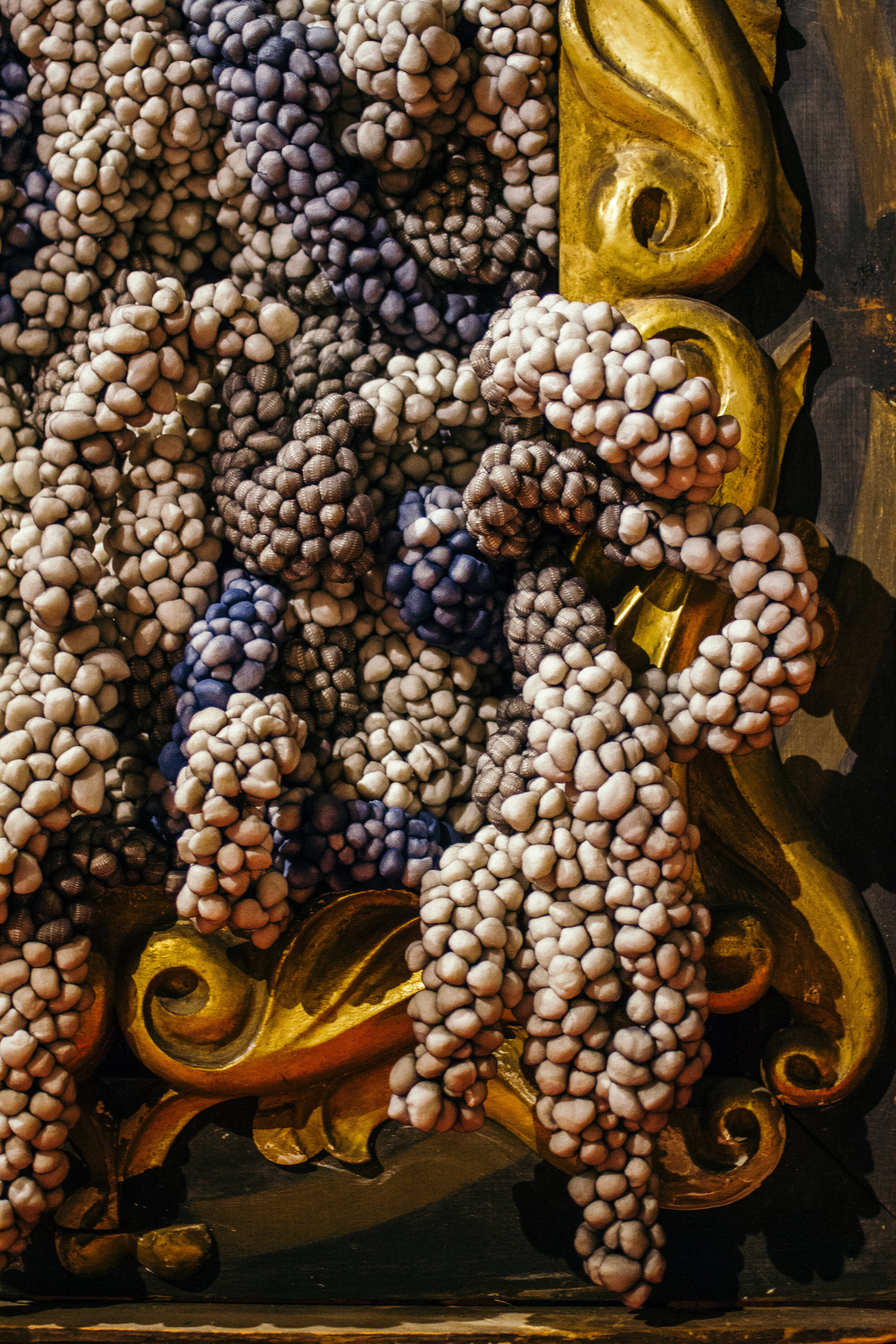
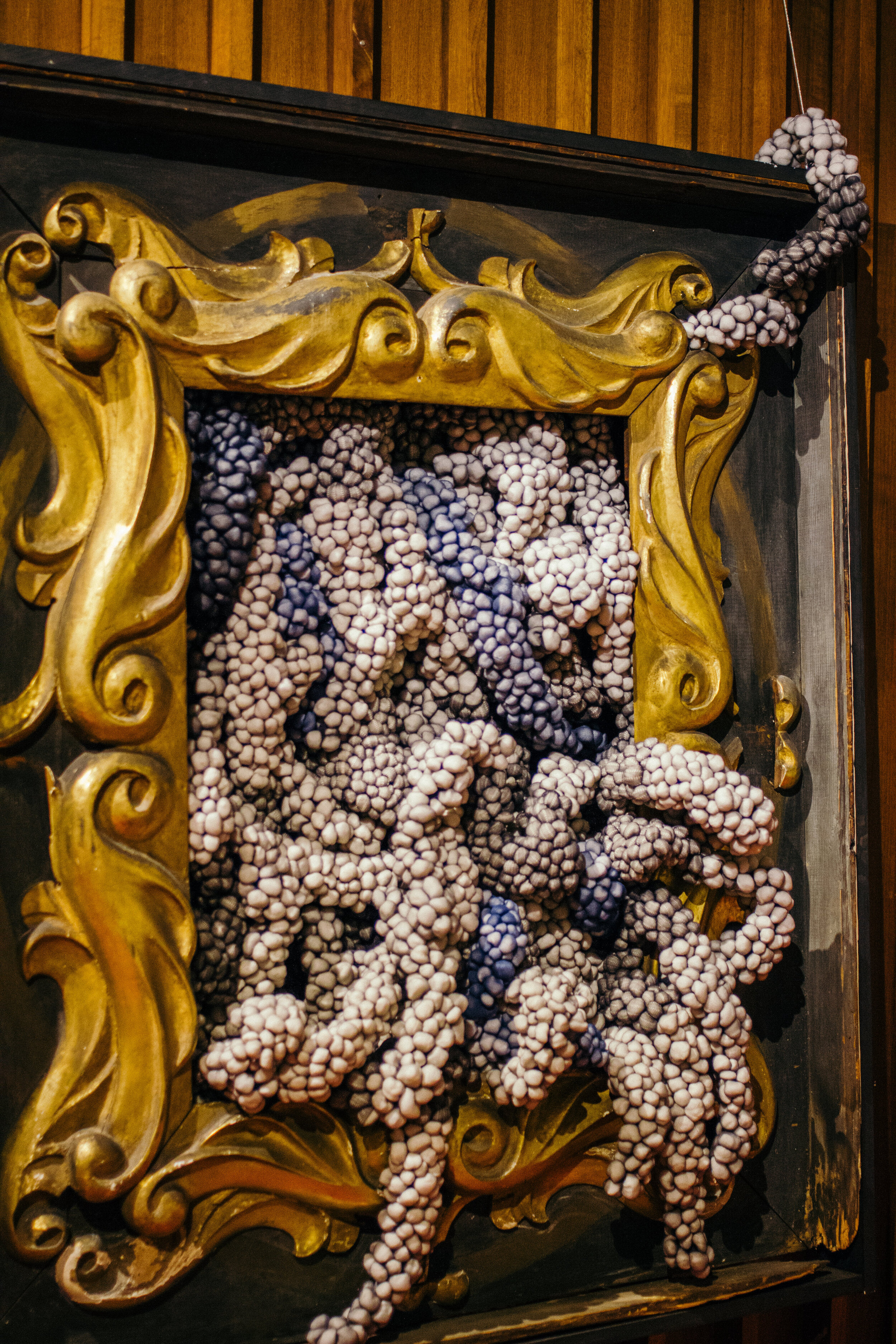

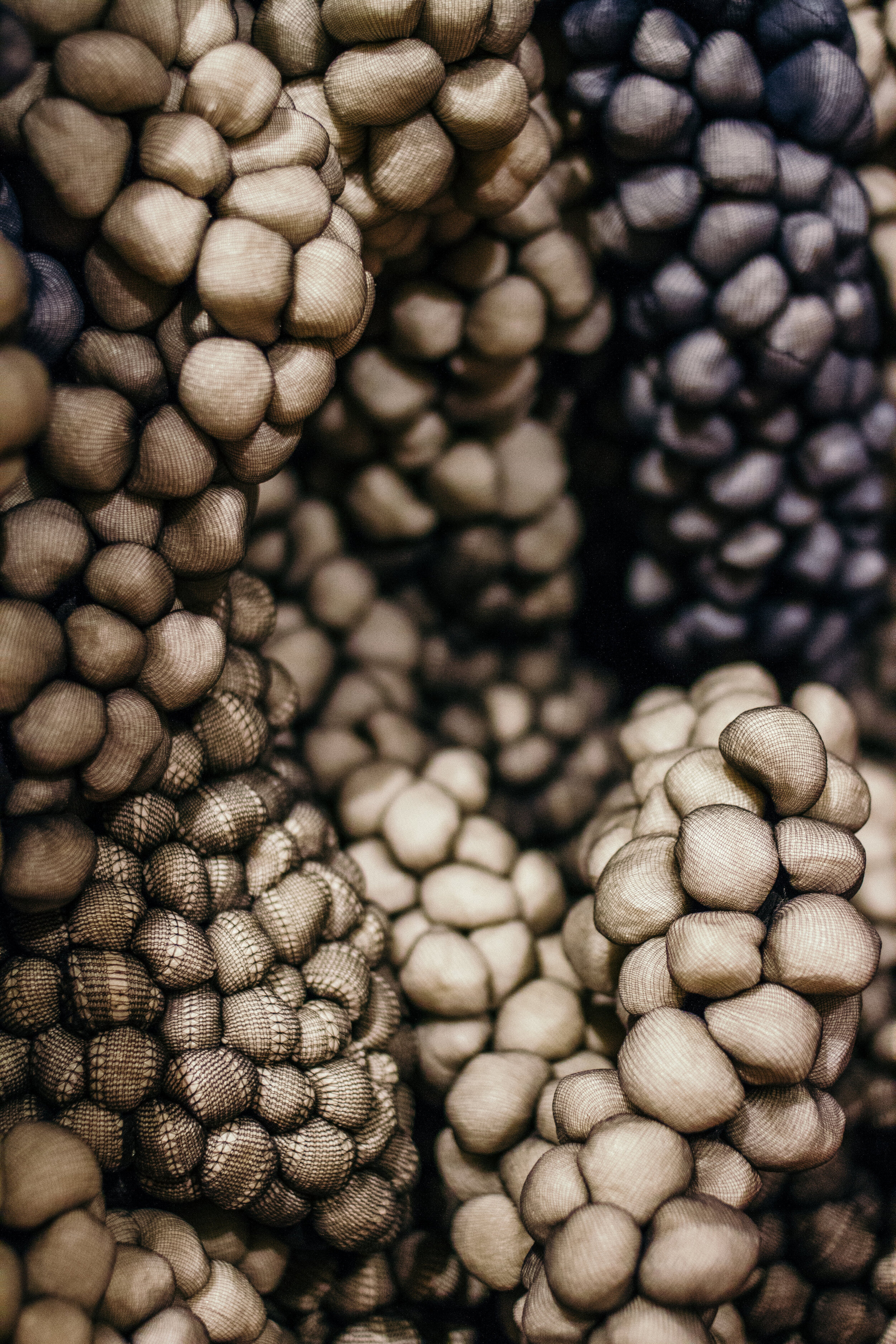
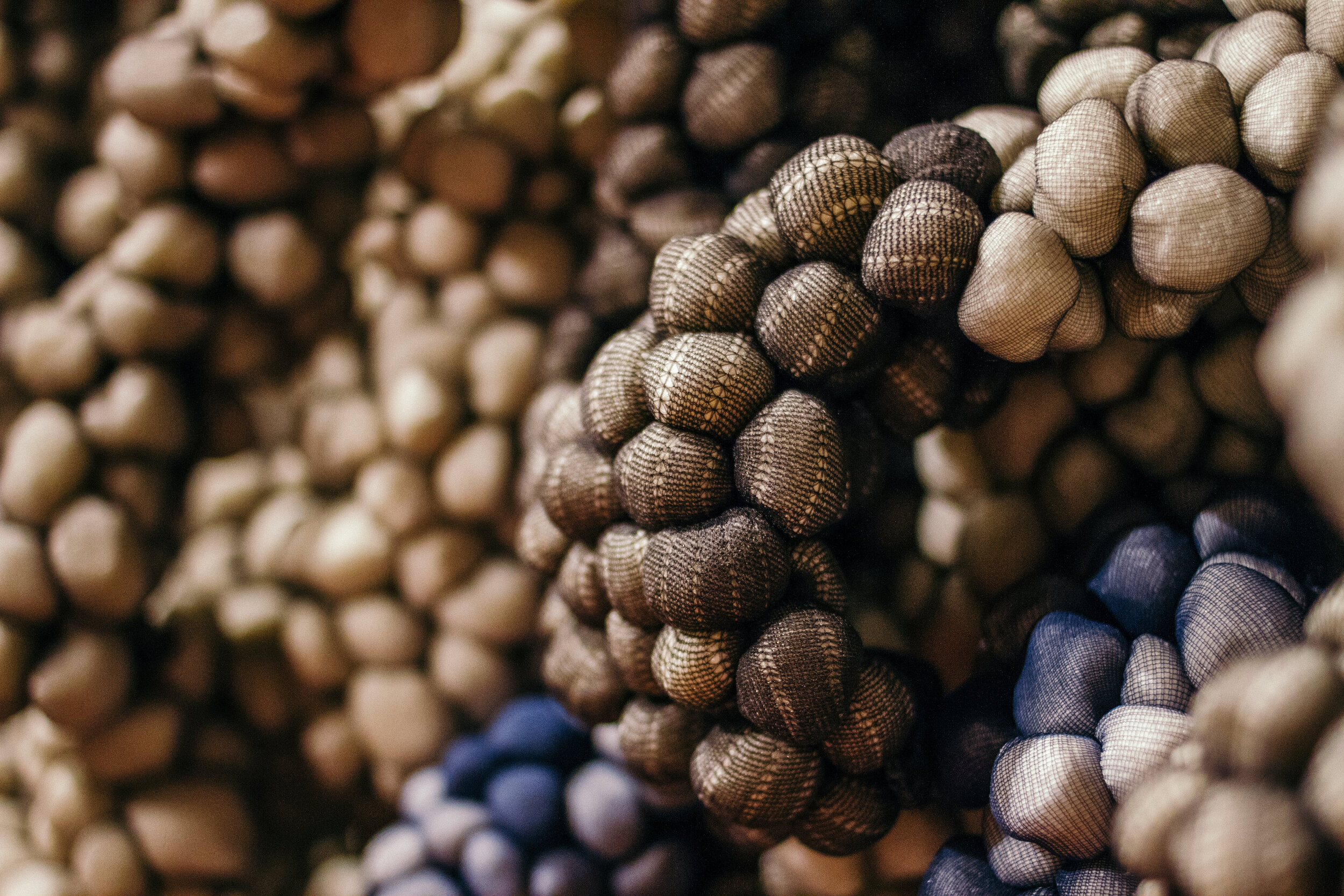
Parasite
Biodegradable Packing Peanuts in Pantyhose
The fruit of the Jabuticaba tree gives the appearance of an eerily menacing parasite feasting on its host, but nothing could be further from the truth. In fact, the tree itself is producing the growth that is scaling its body. The jabuticaba escaping the frame is the havoc of our own making, superseding our well thought-out plans and taking over in ways that we could never imagine.
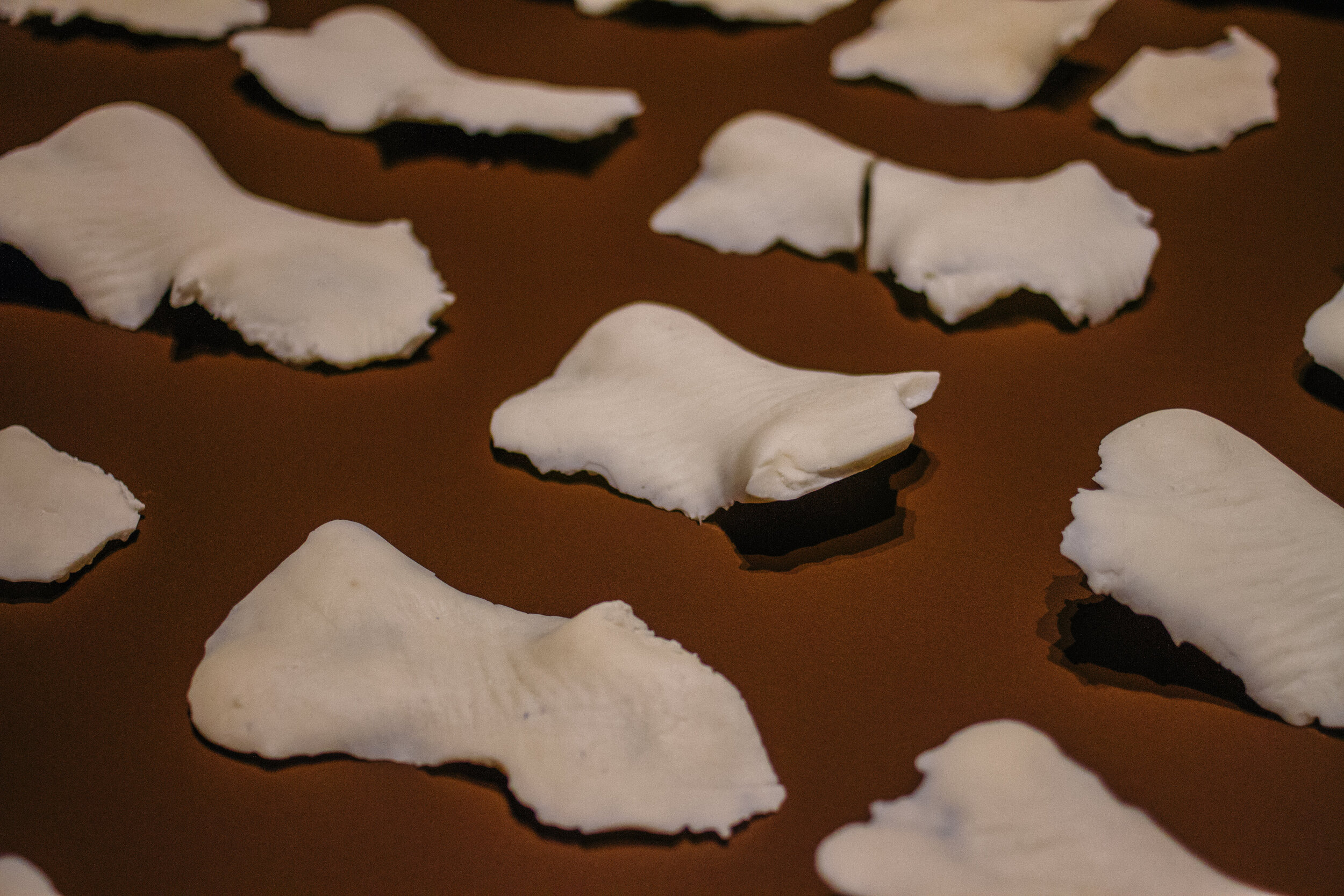
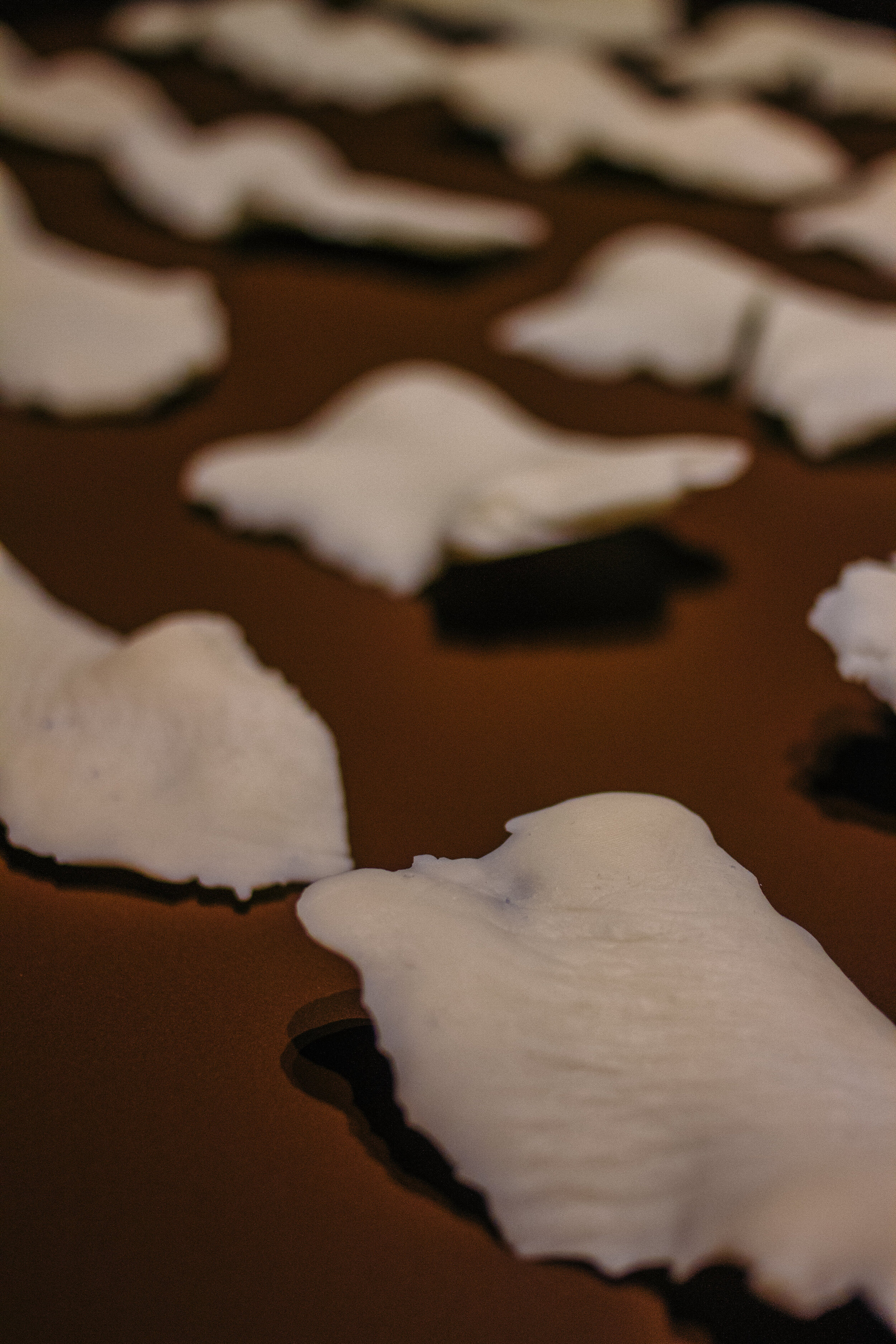
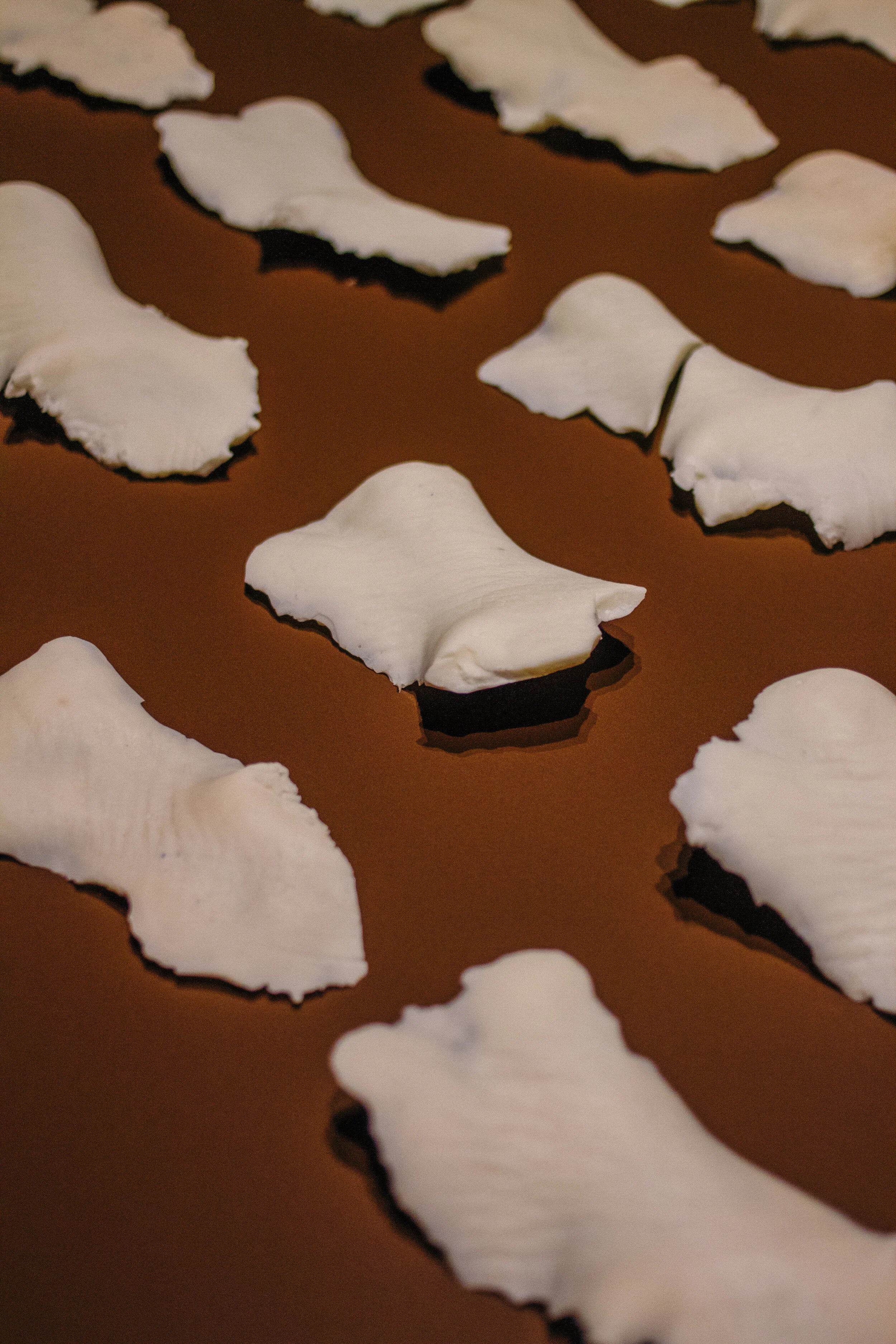
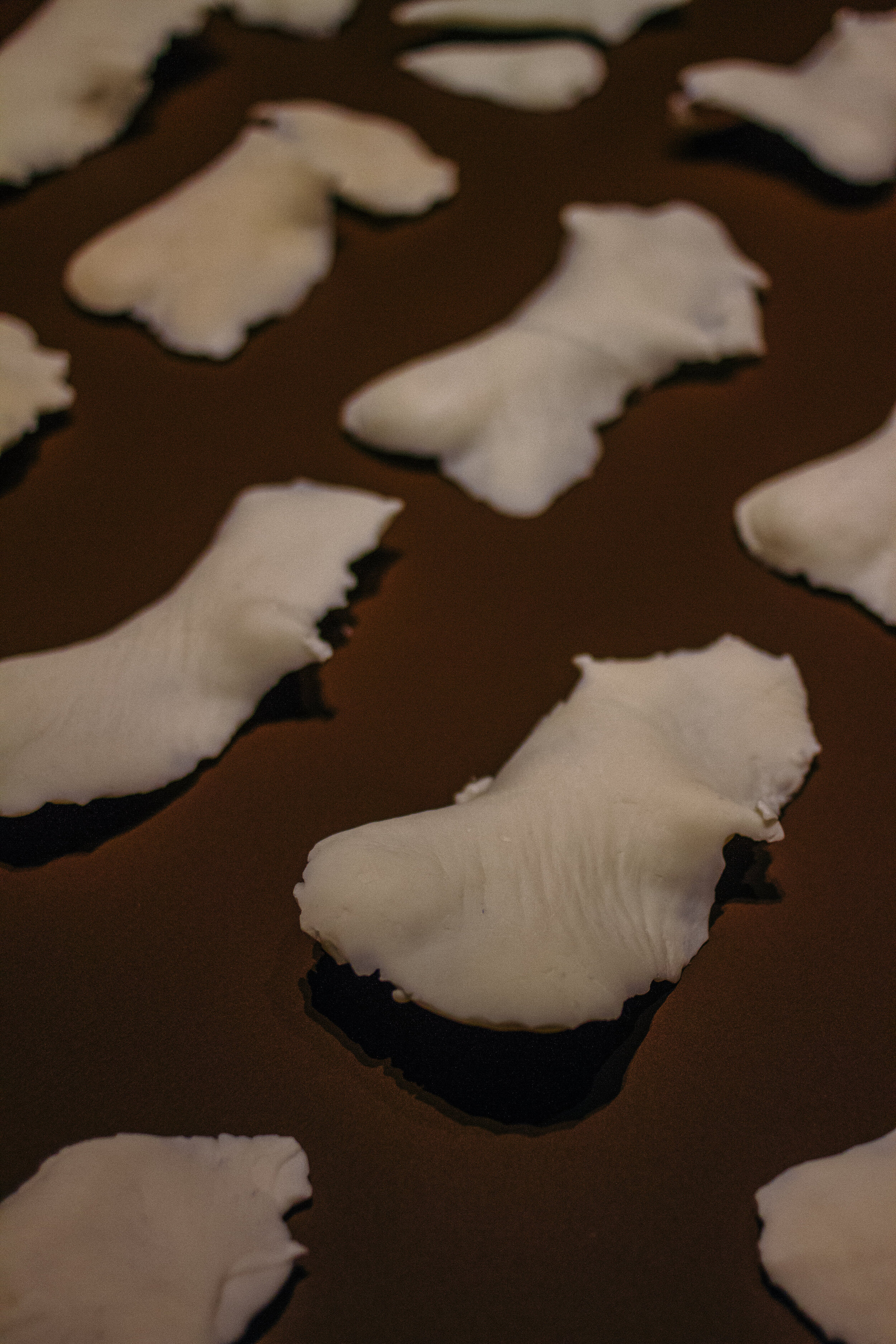
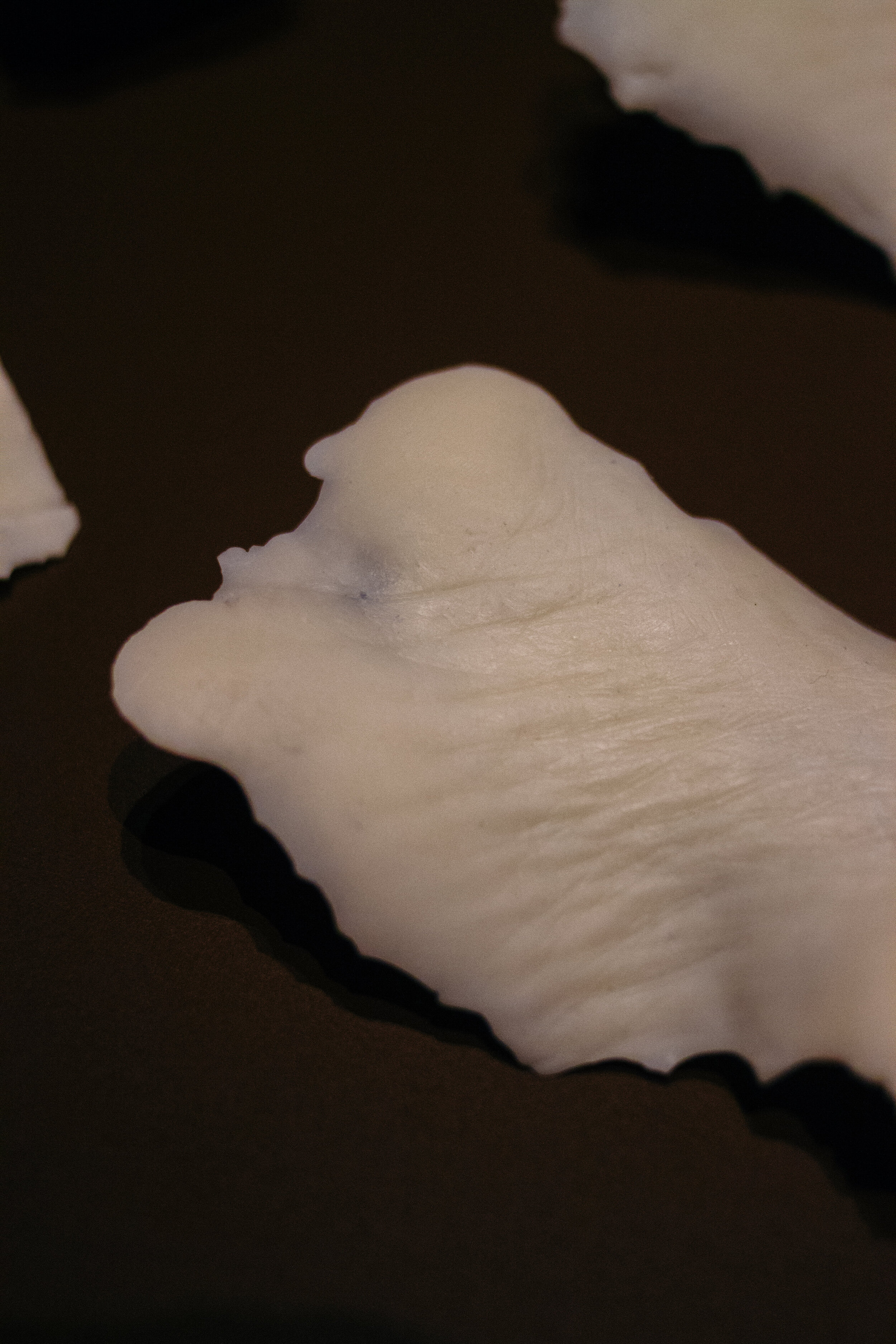
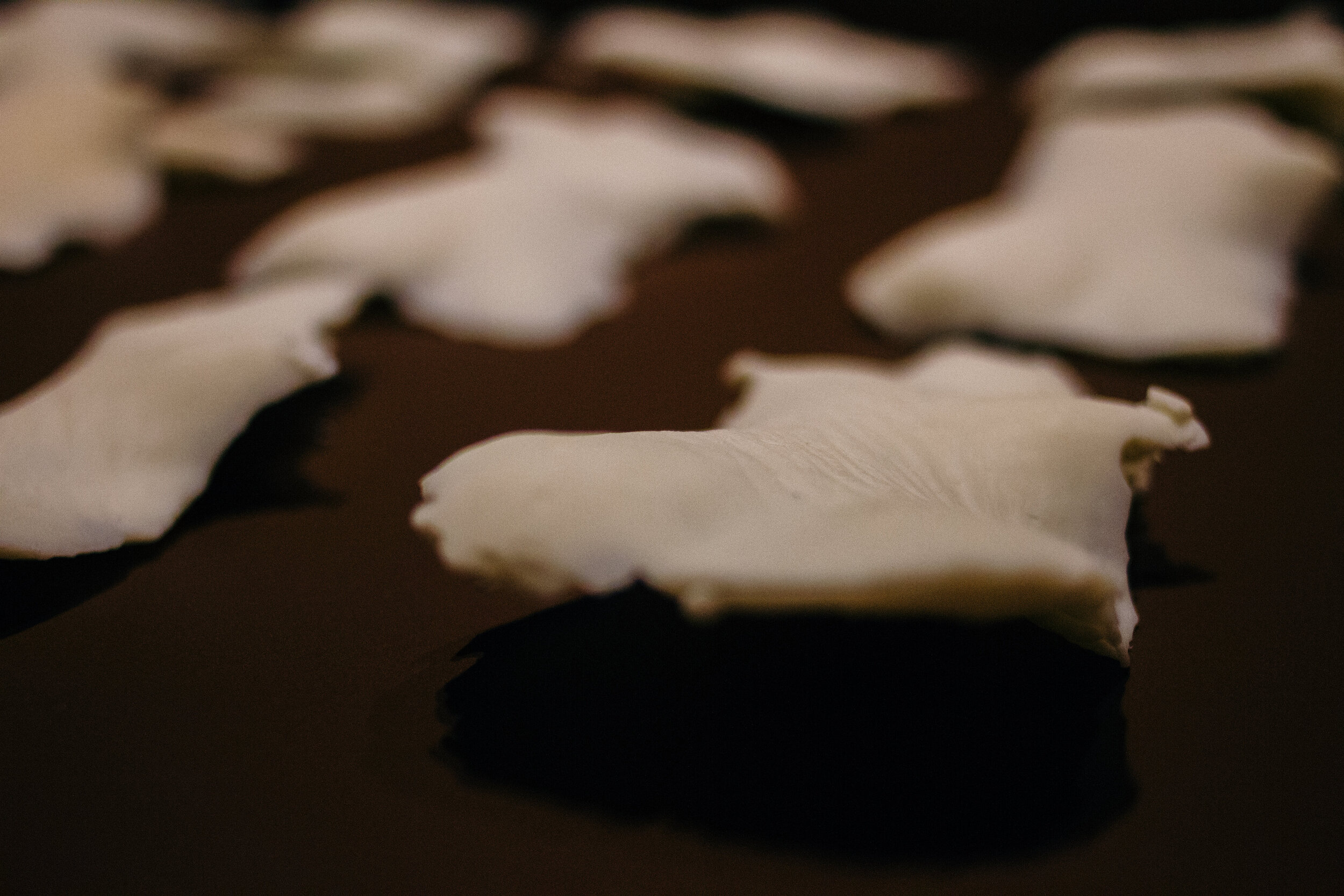
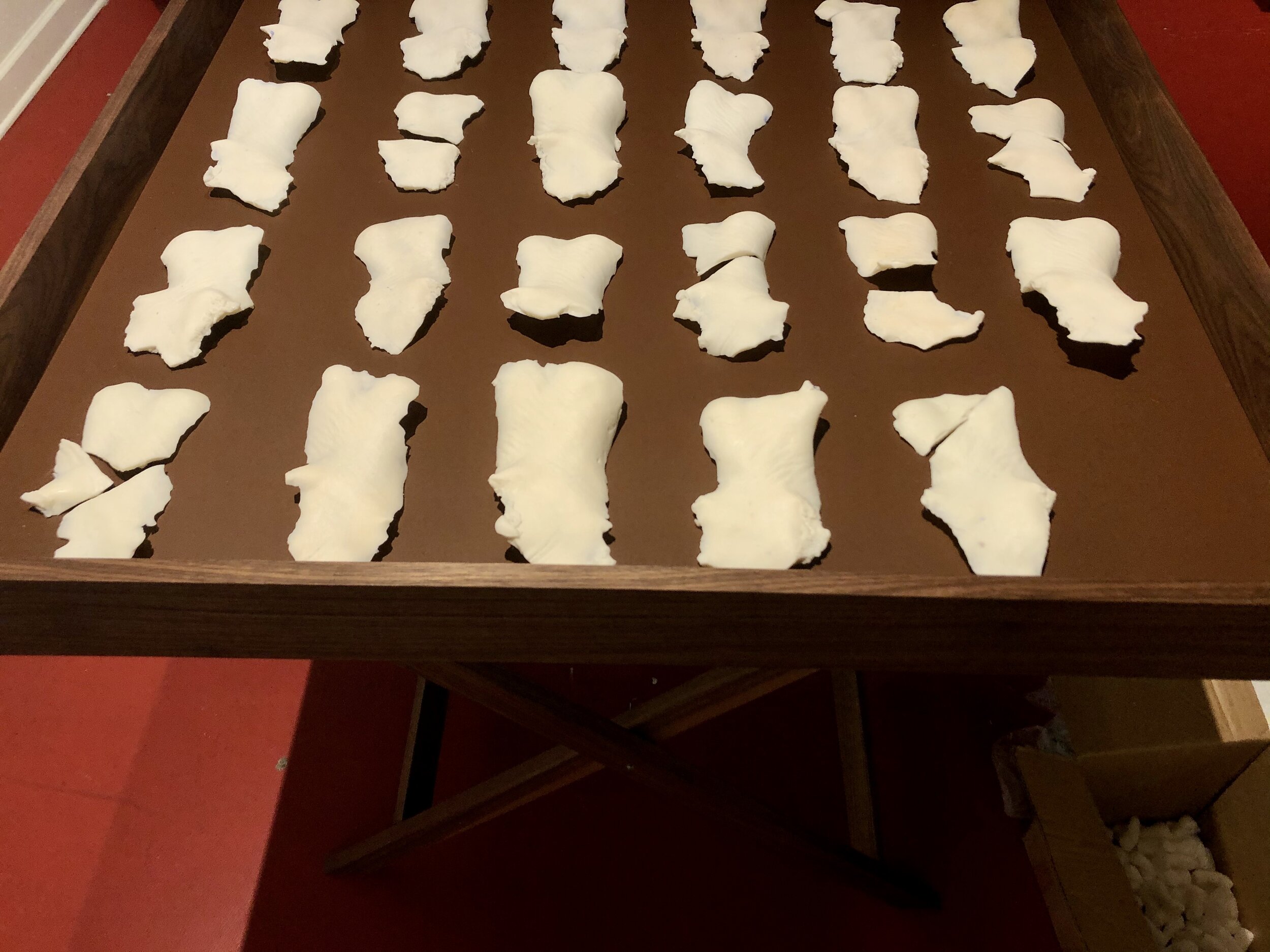
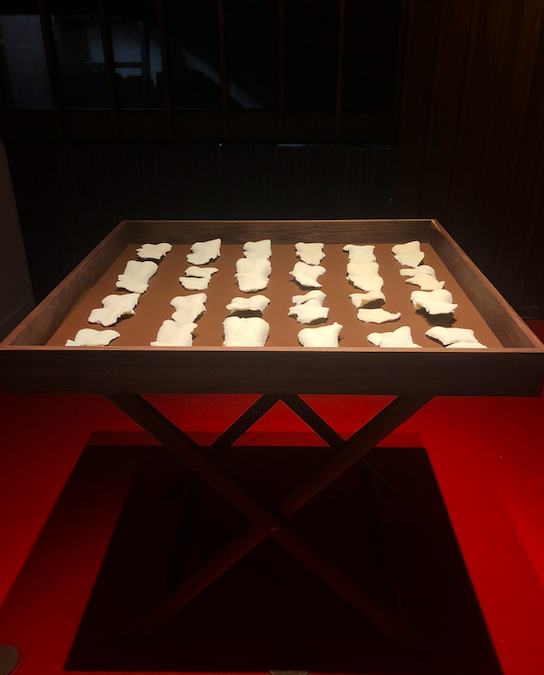
Out of Step
Shadow box by Kevin Angell | Angell Restoration, Wax.
Torso-like wax pieces, laid out like a museum display, rest in a beautiful handmade wooden box. Upon closer inspection, lines and folds become apparent, as it is realized that these bodily sculptures are casts of soles of feet. As a collection they become like bones found at an archaeological site, parts of Greek sculptures, a series of bodies in one large coffin. Each one is fragile, with the intricacies of the skins delicately captured, and cracks ripping through them, un-mendable.
The piece invites us to wonder what misshapen footprints we have left behind as we move through our lives, the partial trails of motive and growth left for others to interpret.
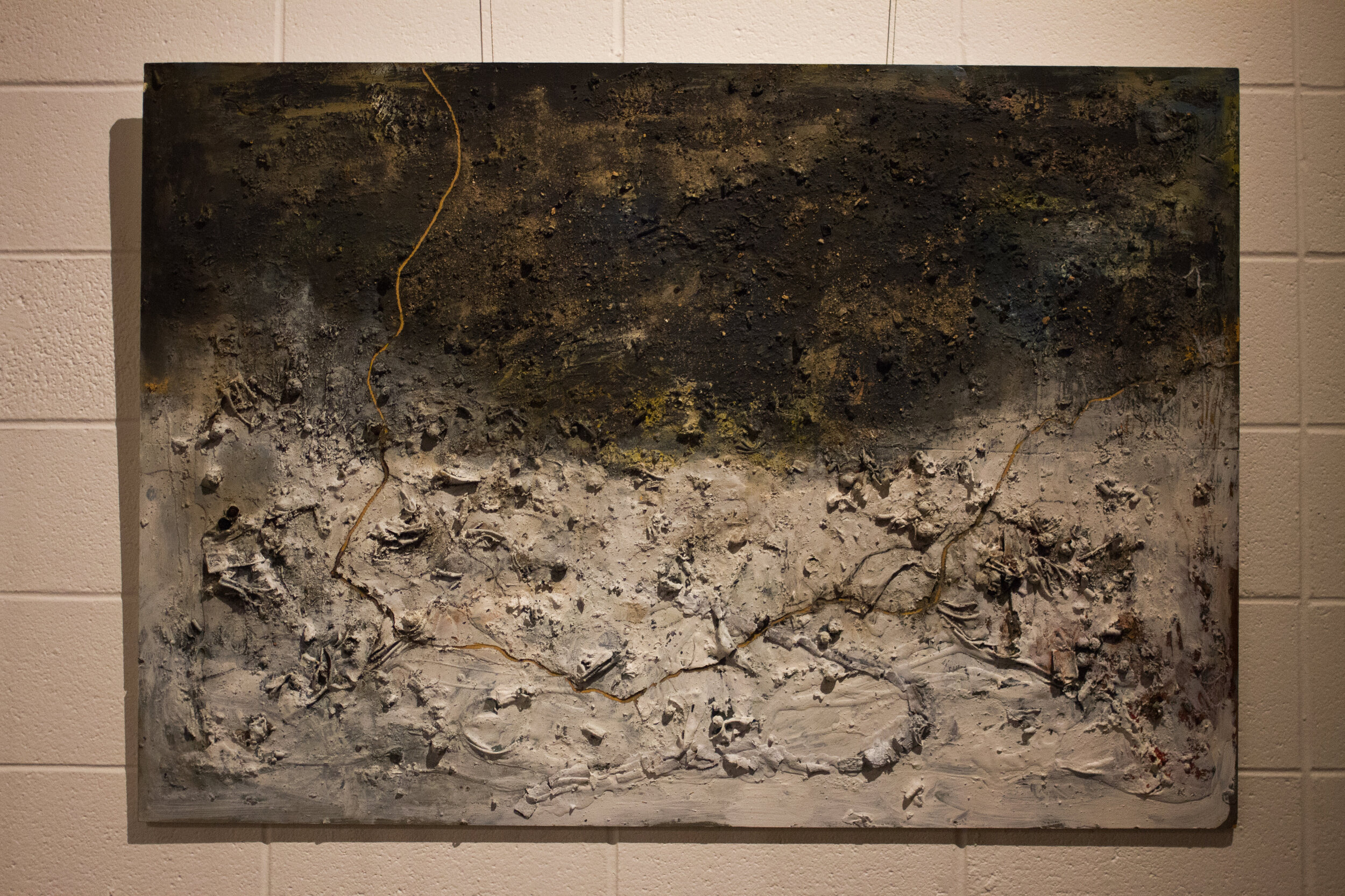
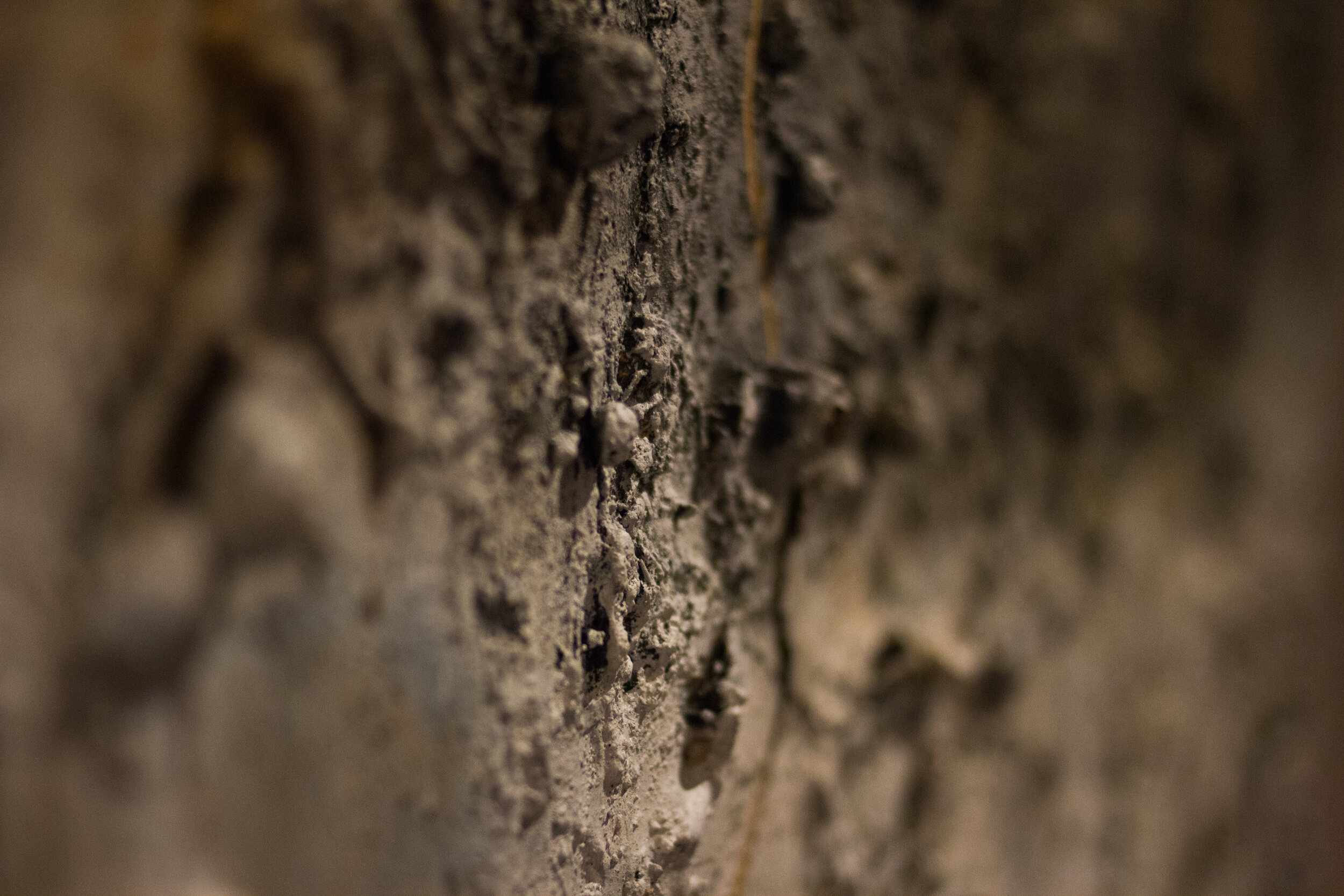
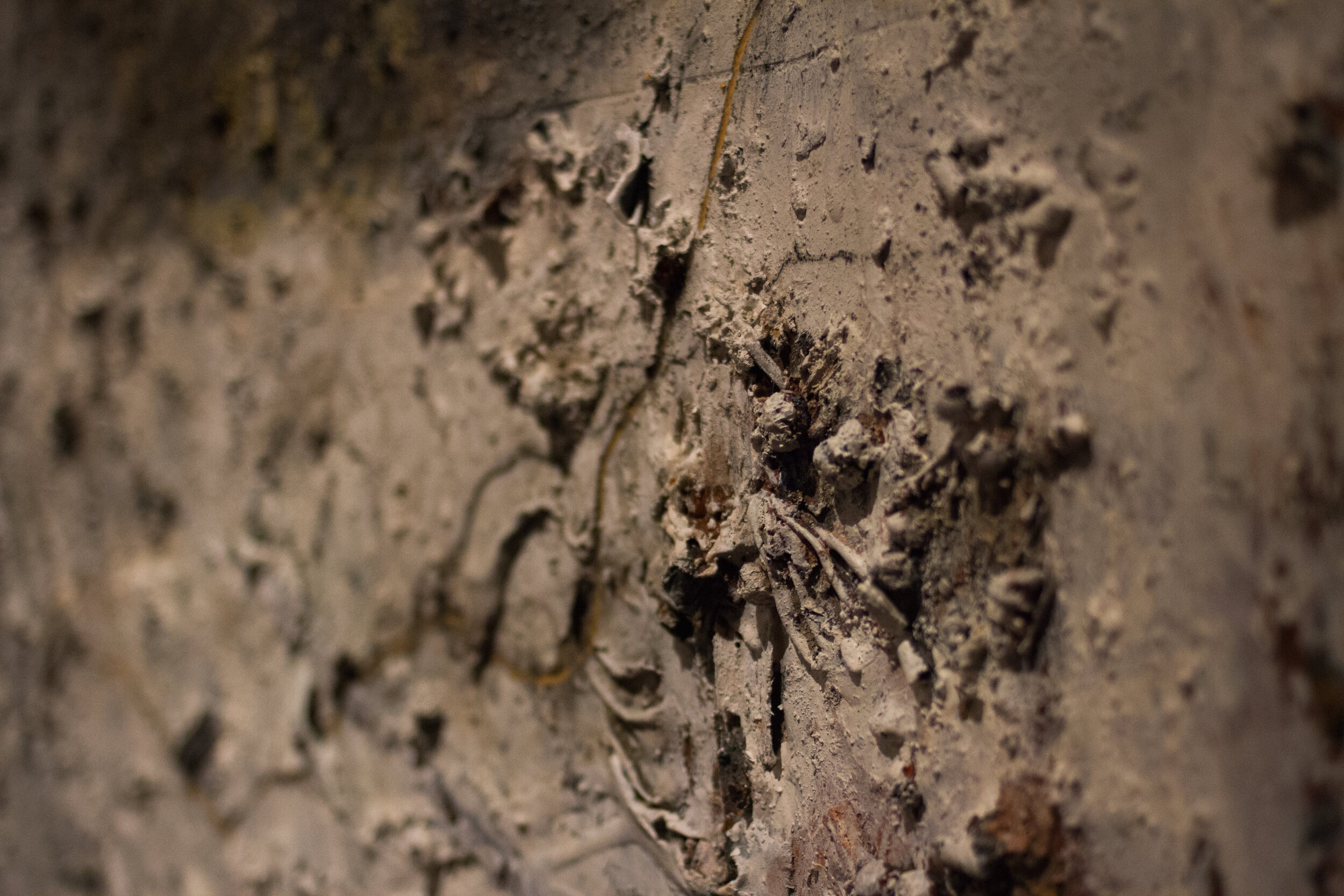
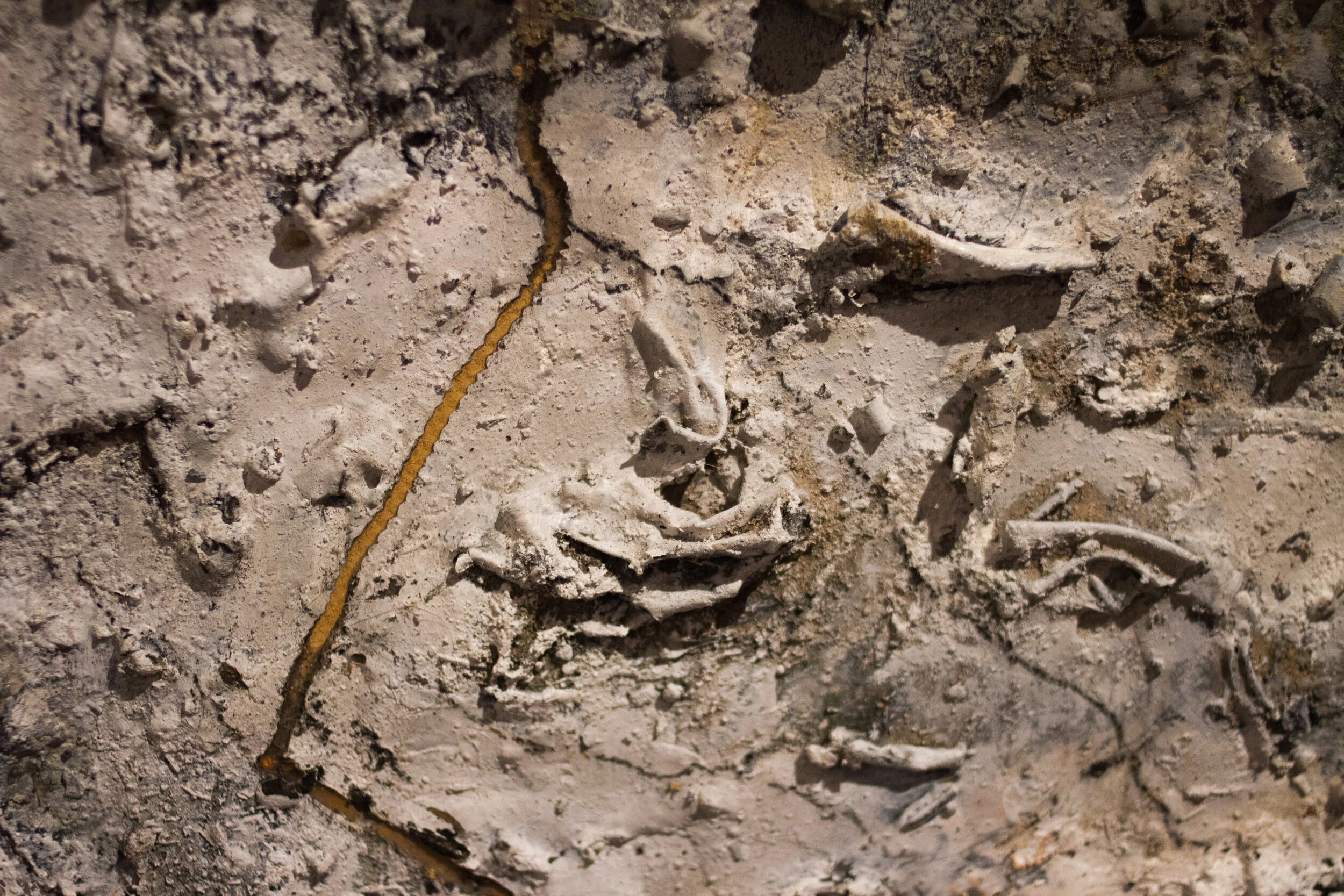
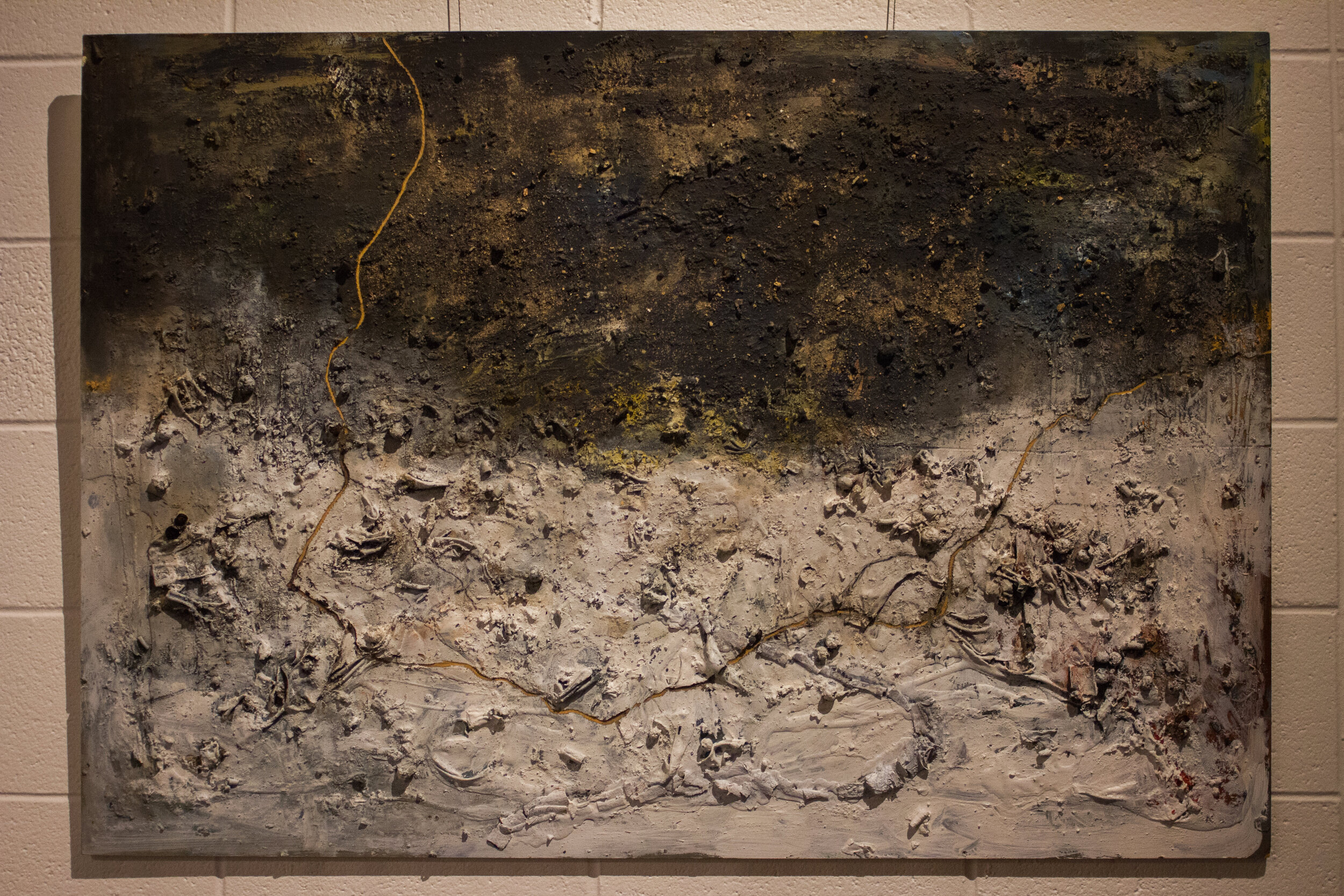
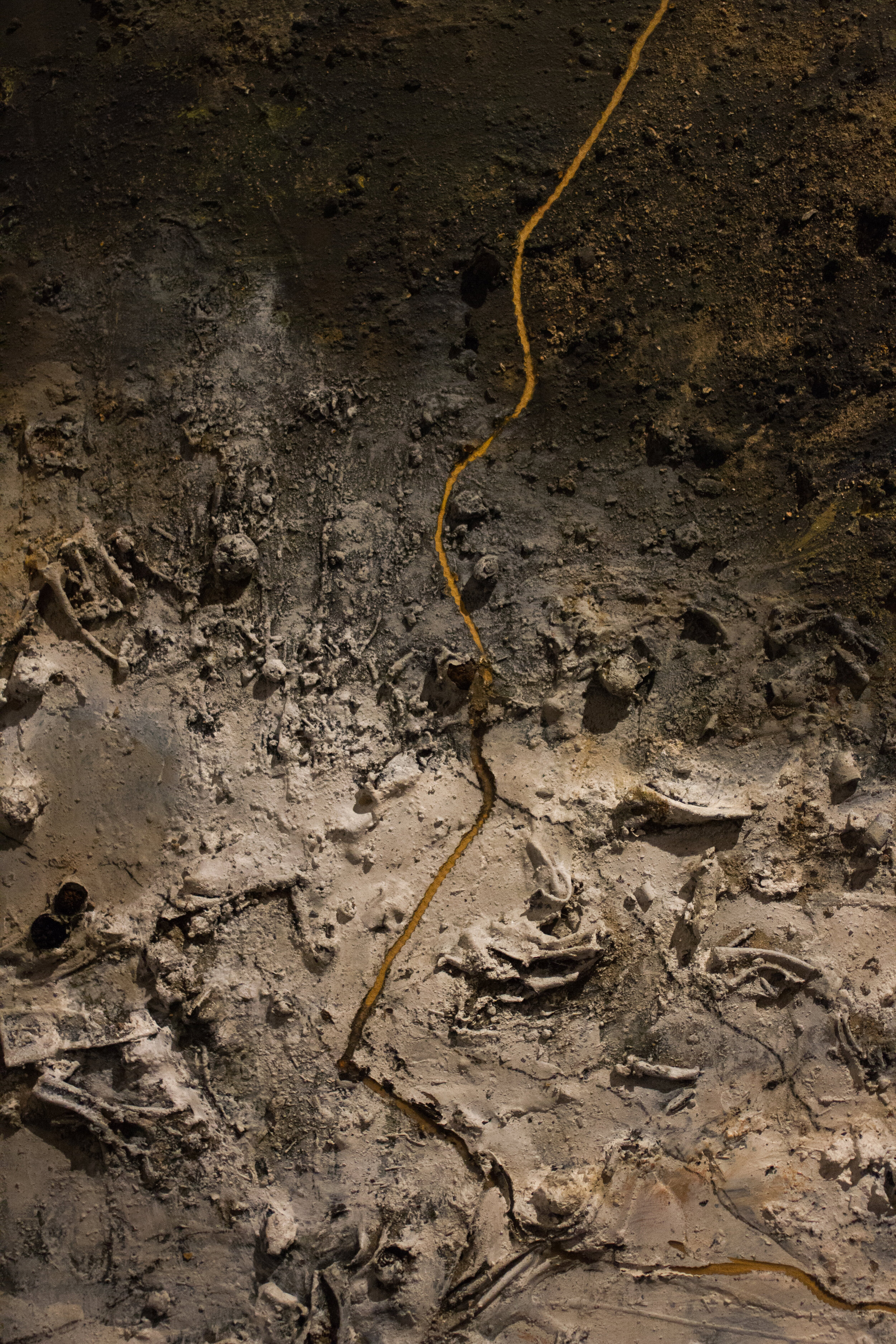
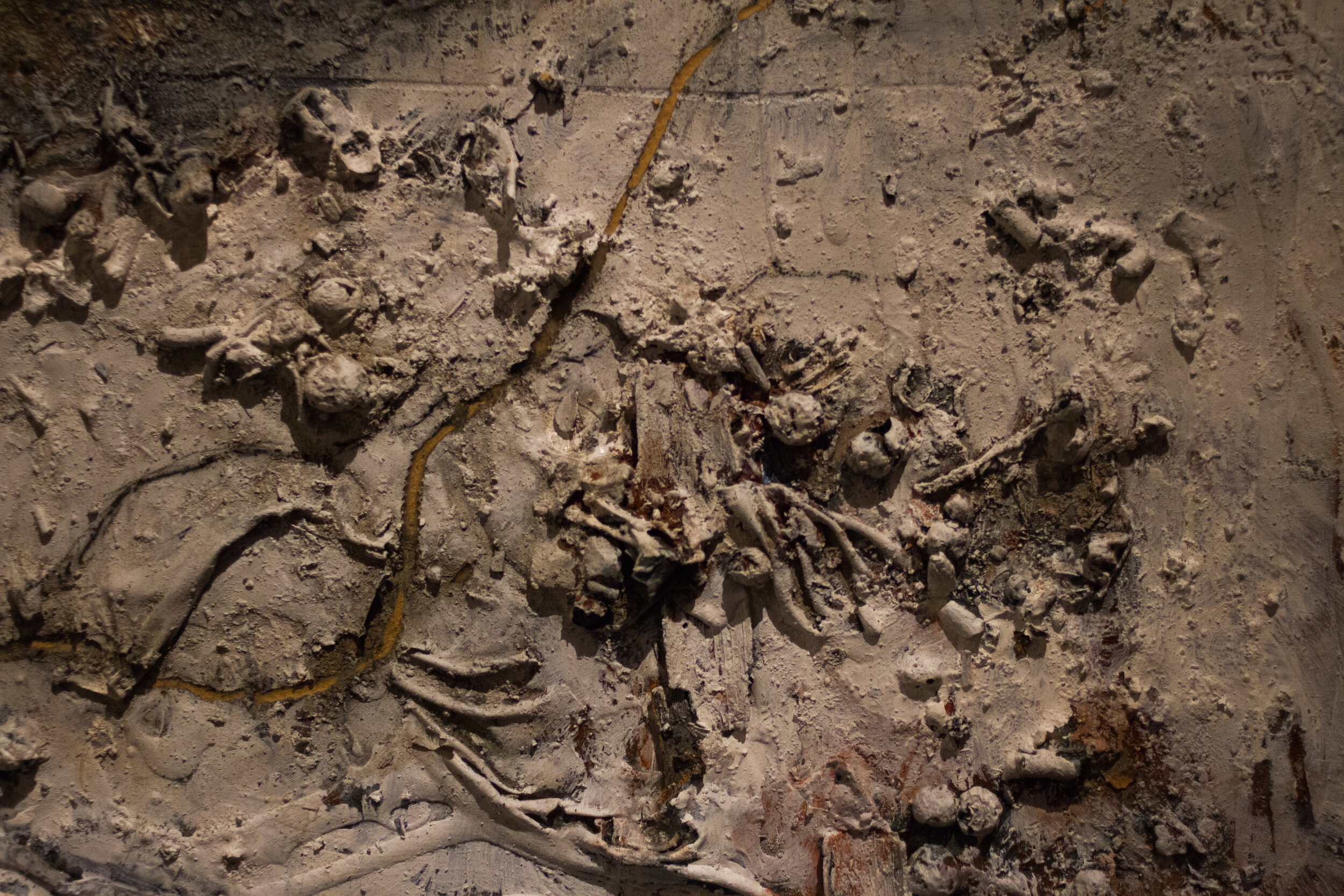
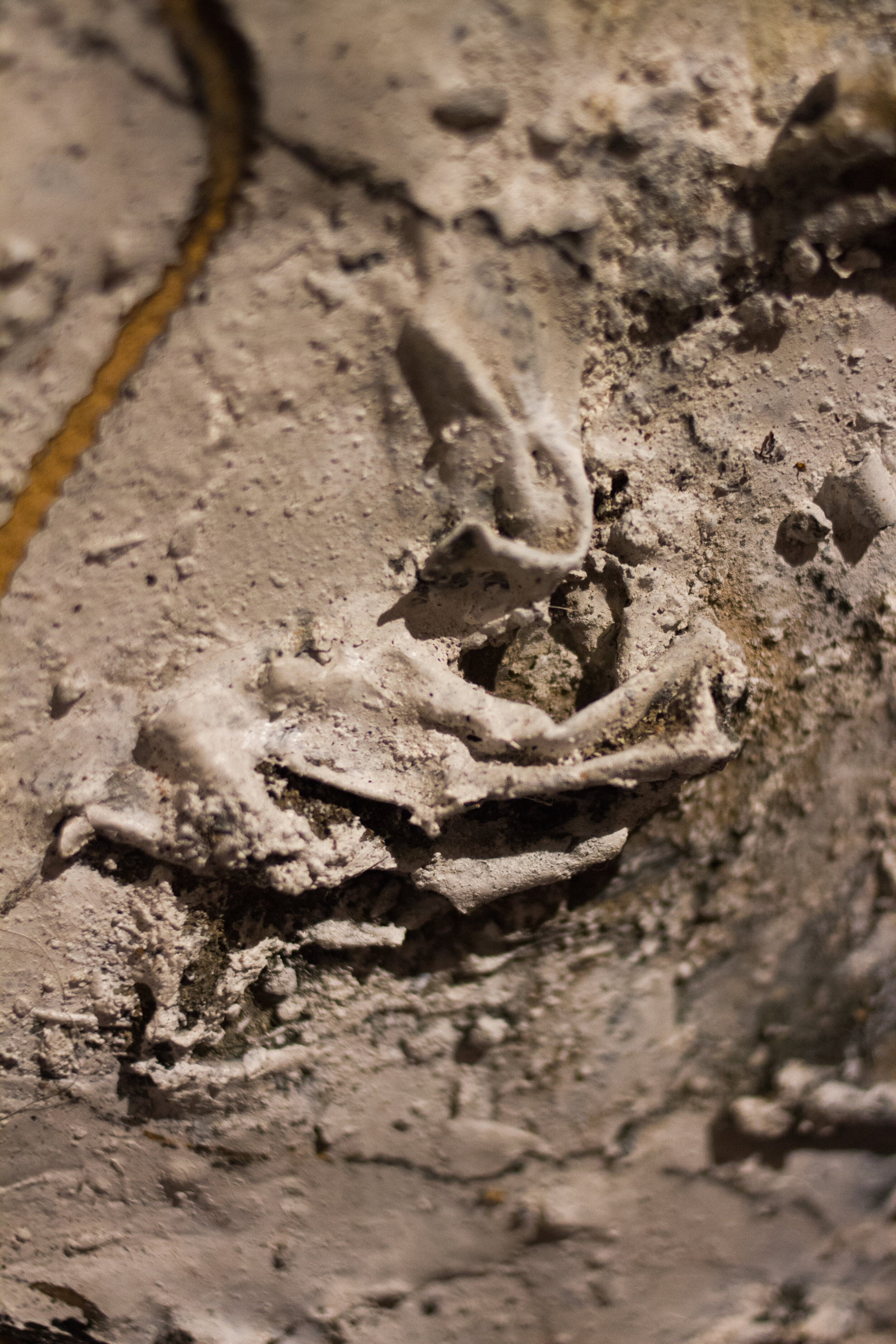
Tornadoland
Acrylic, Wood, Ash, and Alabama Dirt
Documenting the layers and scars that the land bears, this piece comes to life. This landscape becomes ghostly as the forms of trees emerge from the ashy white of the horizon and constellations of dirt shine through the velvet blues of the sky. Violently, a path is carved through the painting, mimicking the trail that a tornado in 2011 made as it ripped through the earth and my family home in Blountsville, AL. Subtle hints of reds and greens press through the ash as if hinting at some past life, or perhaps the new growth yet to come.